After taking the bus from the Hyatt Place Kyoto to Arashiyama, we spent the day in the area visiting various temples, enjoying the fall colors, and of course walking through the famous bamboo forest.
Morning
After waking up at the Hyatt Place Kyoto, we headed out just before 7am.
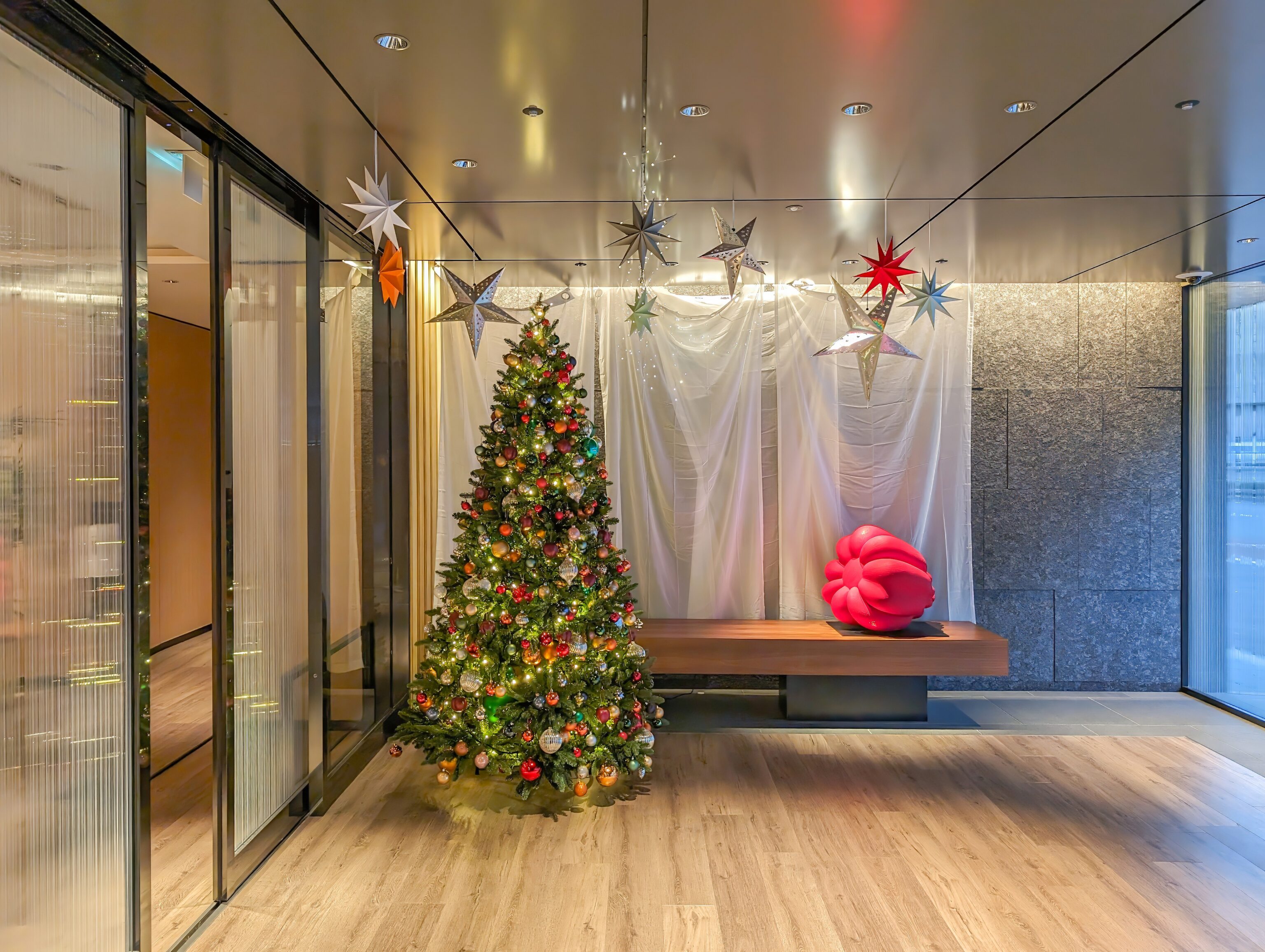
We noticed that some Christmas decorations had been put up!

Our first stop was the nearby 7-Eleven for a quick breakfast. Mmm, onigiri!
After our small breakfast meal, we caught the 93 bus from the stop right in front of the 7-Eleven. It heads west and reaches Arashiyama in about 40 minutes. It is the simplest way to get there and we left early enough that there was no problem getting a seat.
Arashiyama
We got off the bus at the stop nearest the Togetsukyo Bridge which spans the Katsura River. Currently, the exact routing of the bus varies on Saturdays and Holidays, as indicated on the rather complicated Kyoto City Bus Map.
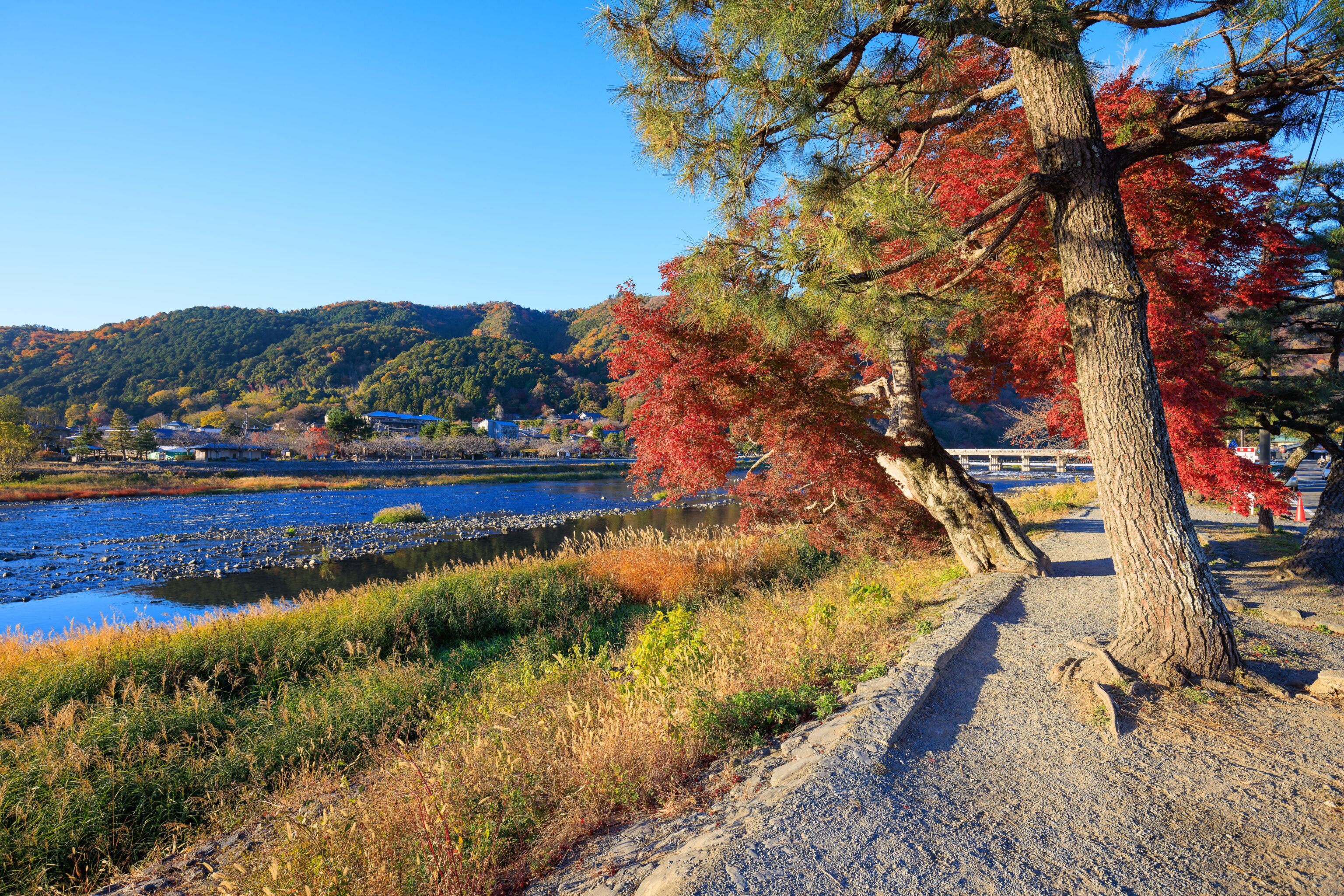
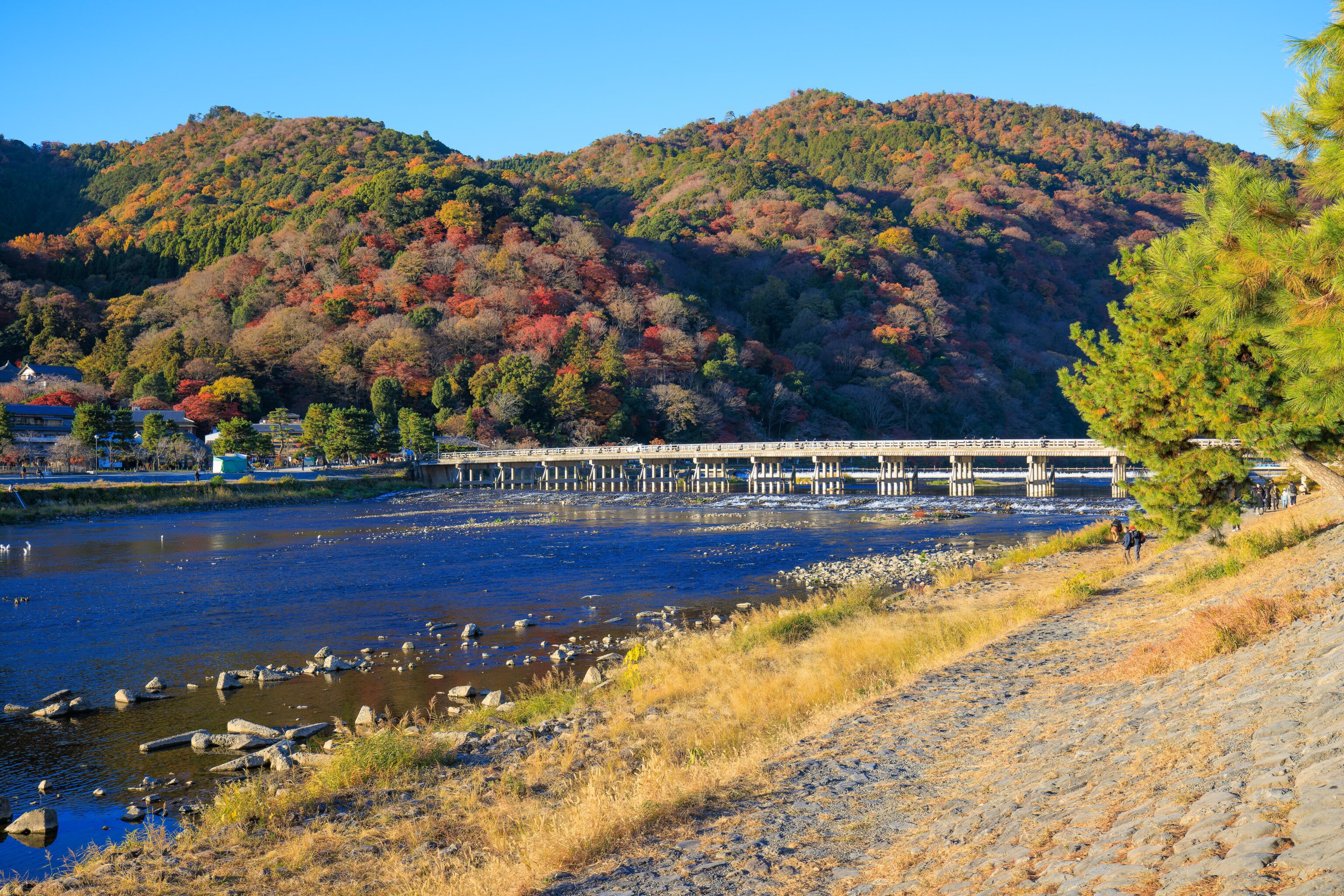
There was a nice view of the river and the bridge to the west.
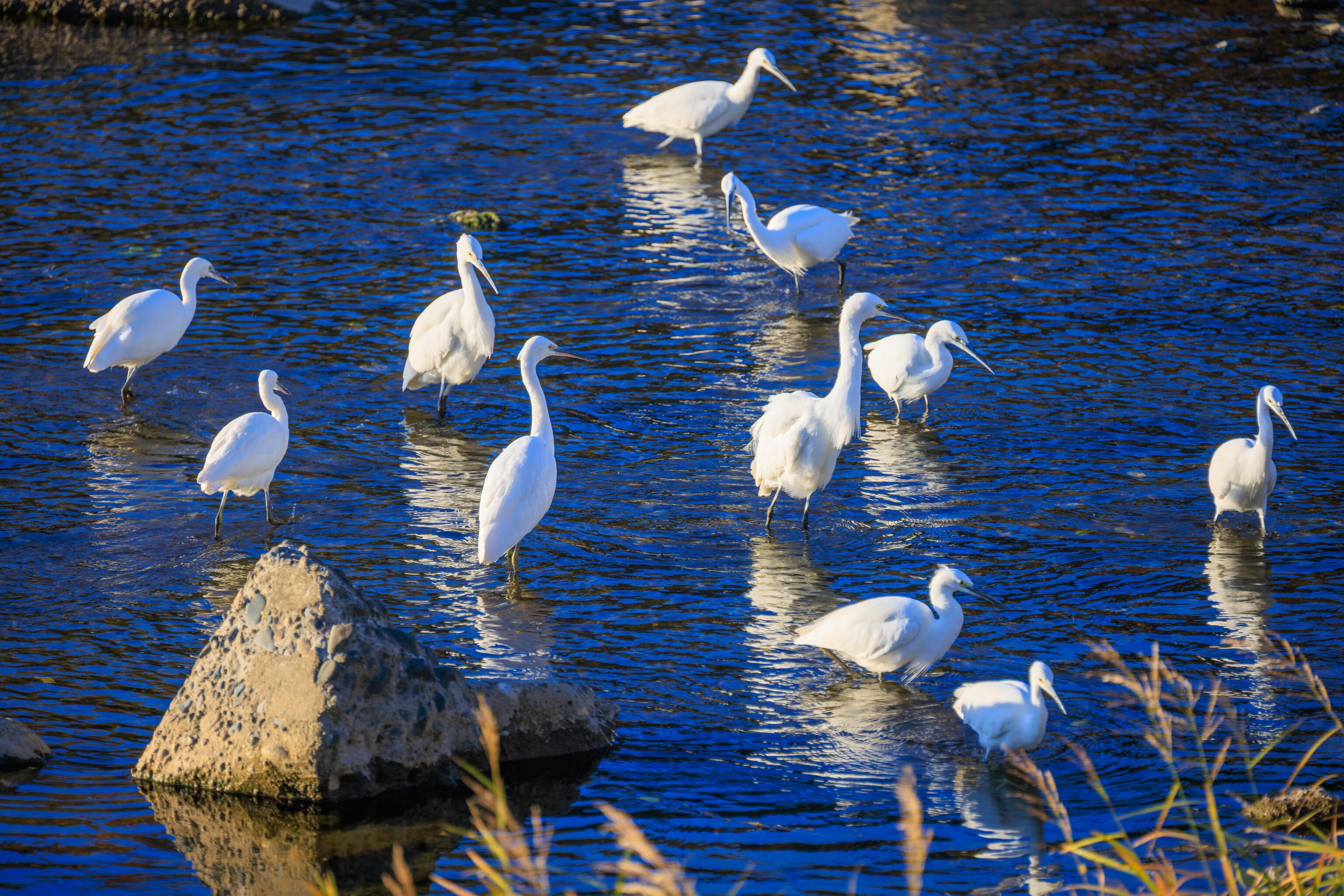
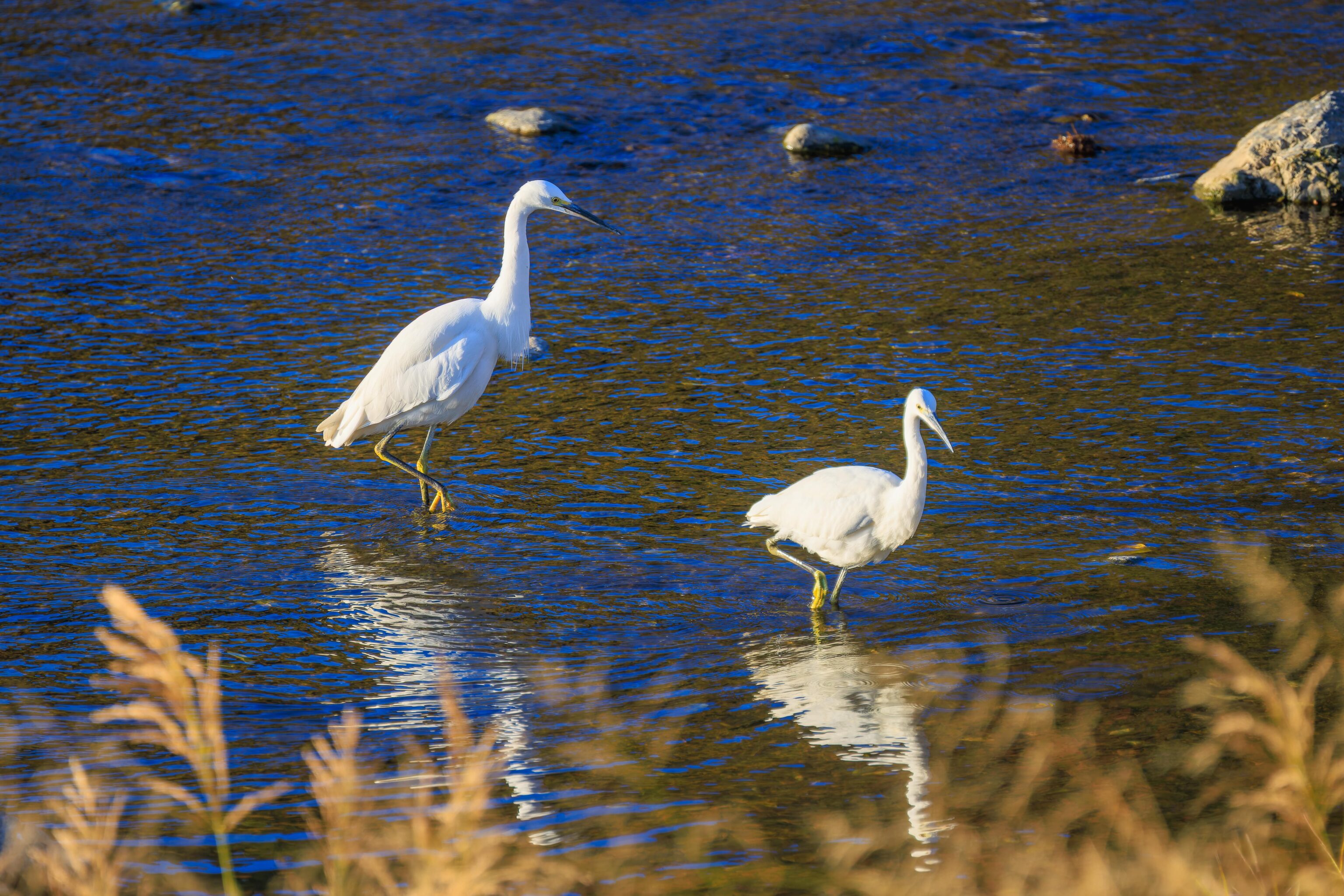
We saw many Little Egrets in the shallow river.
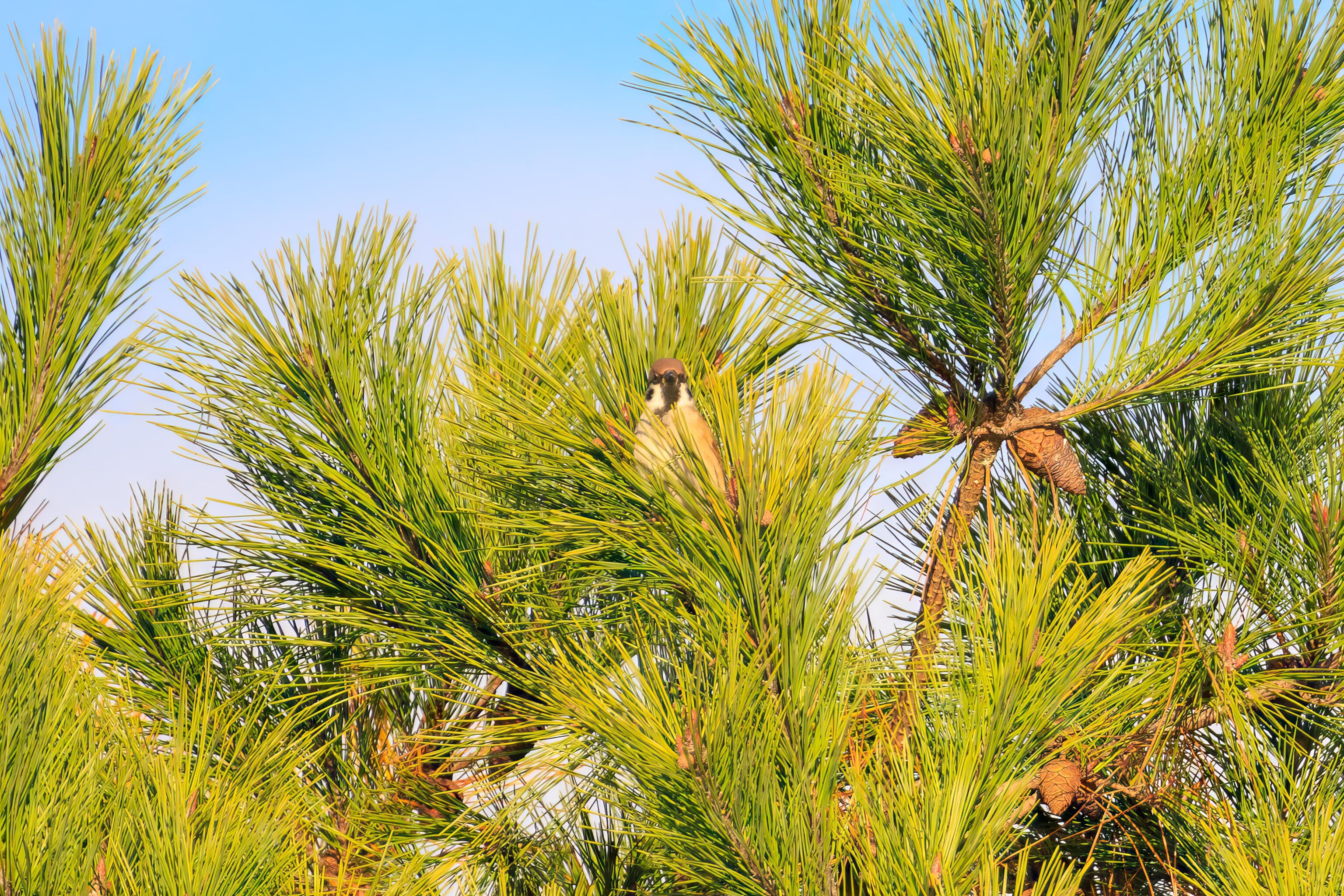
We also saw a few Eurasian Tree Sparrows. They look very similar to the male House Sparrows that we see at home and in other parts of the world.
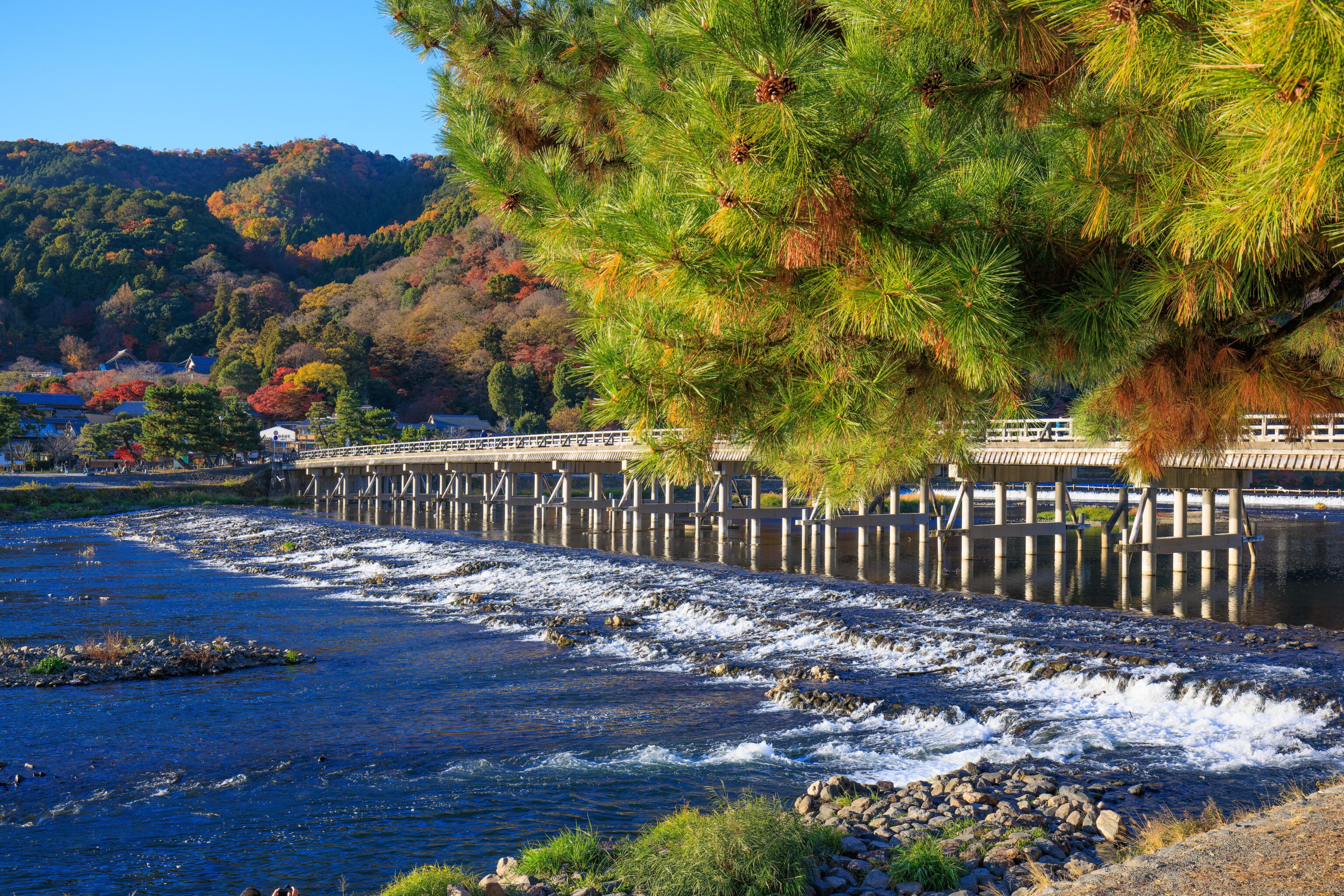
We continued walking to towards the bridge.
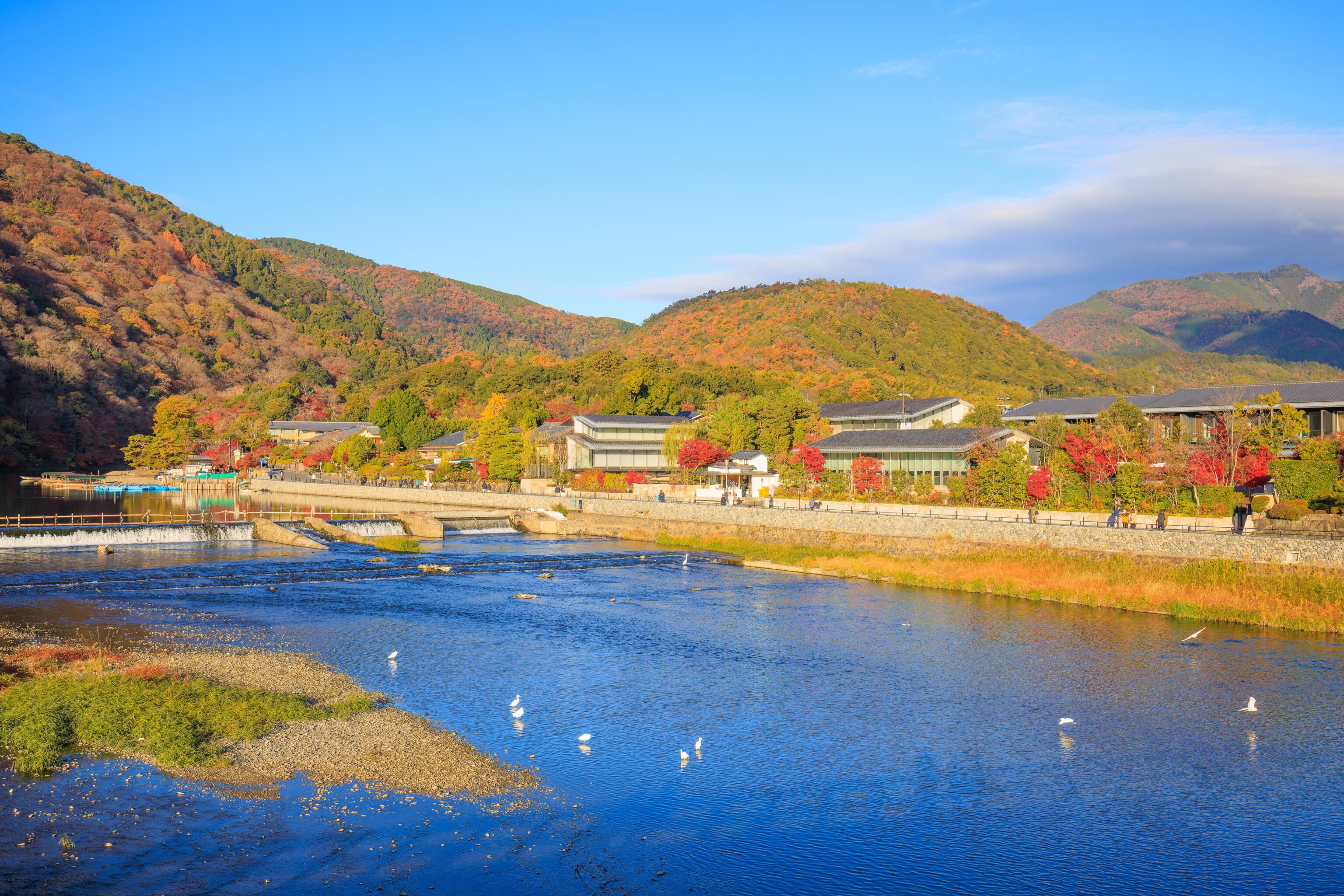
We walked out onto the bridge for a bit. It was pretty quiet with only a few people around as 8am is still early for most tourists.
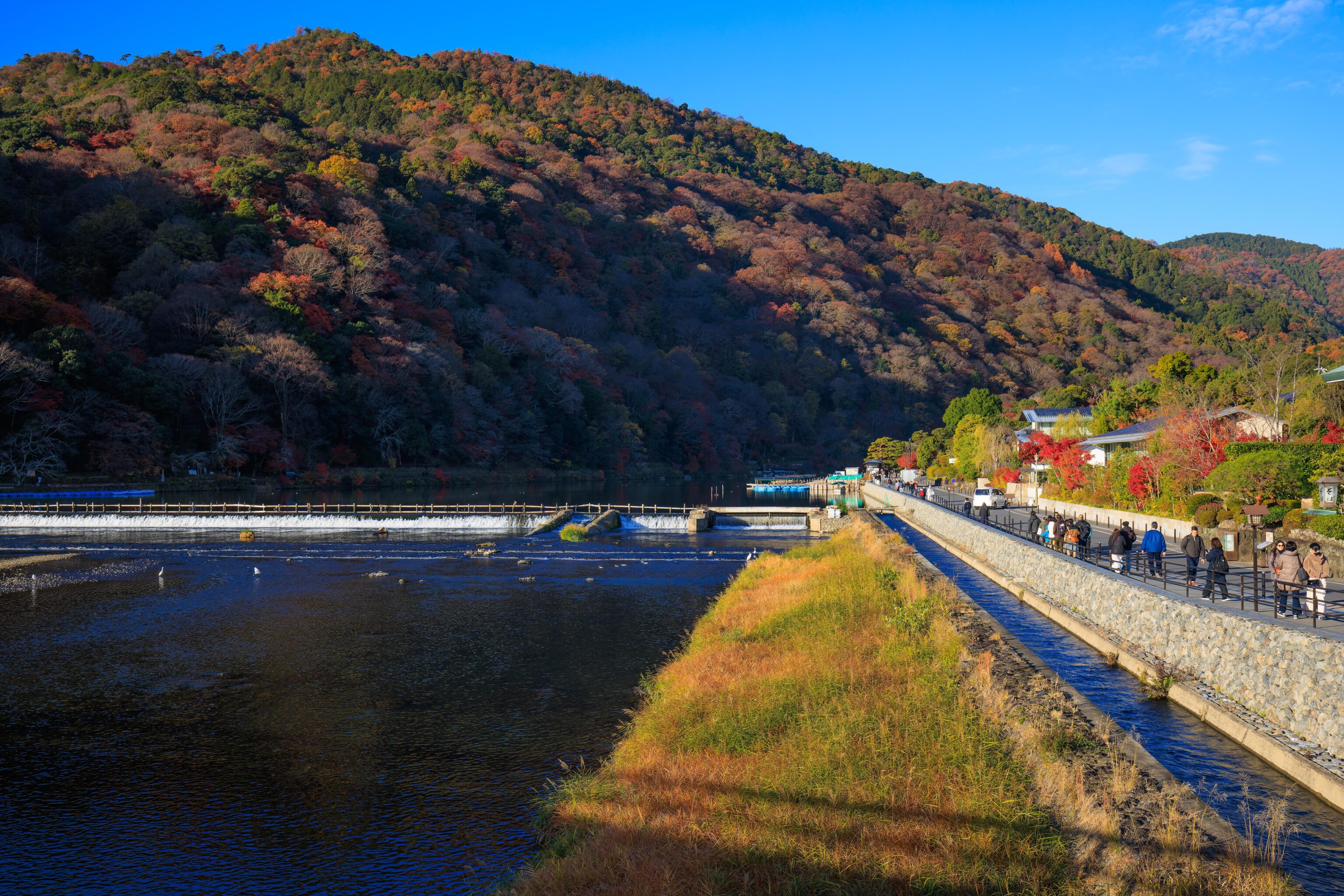
We returned to the north side of the river.
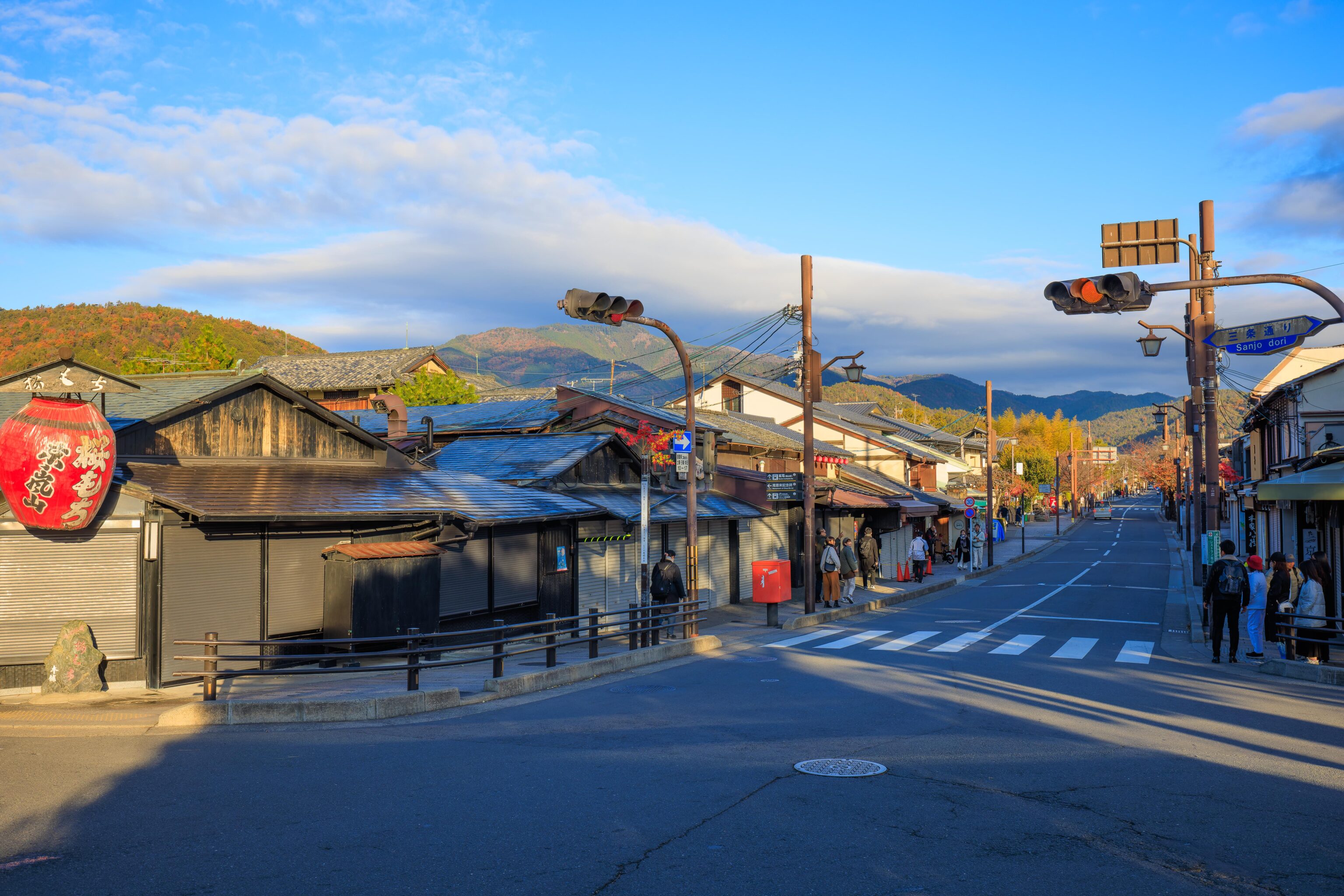
The main road through the tourist area was pretty quiet. There were only a few people walking on the sidewalk and most of the businesses weren’t open yet.
Tenryu-ji
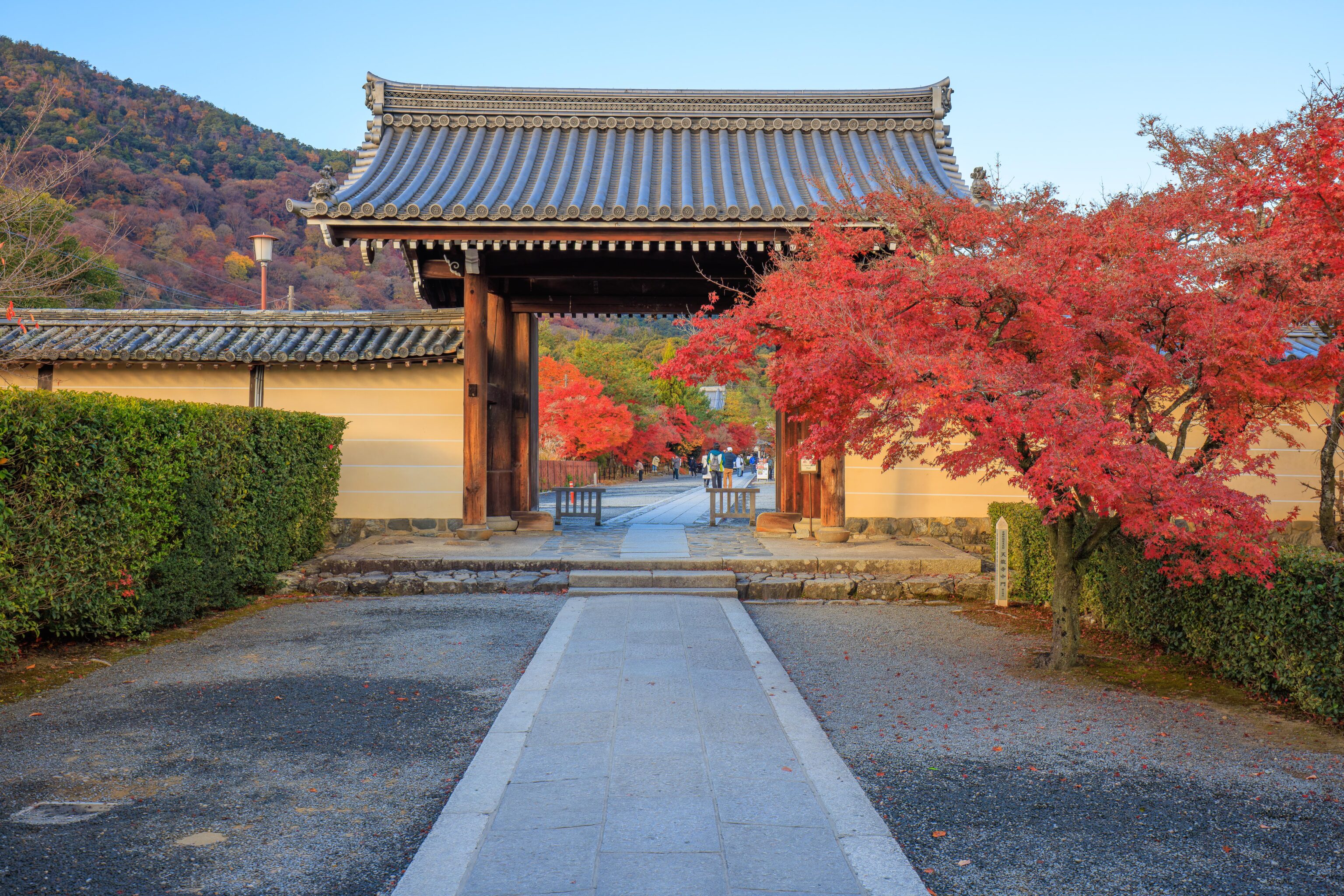
We decided to go through this gate towards Tenryu-ji.
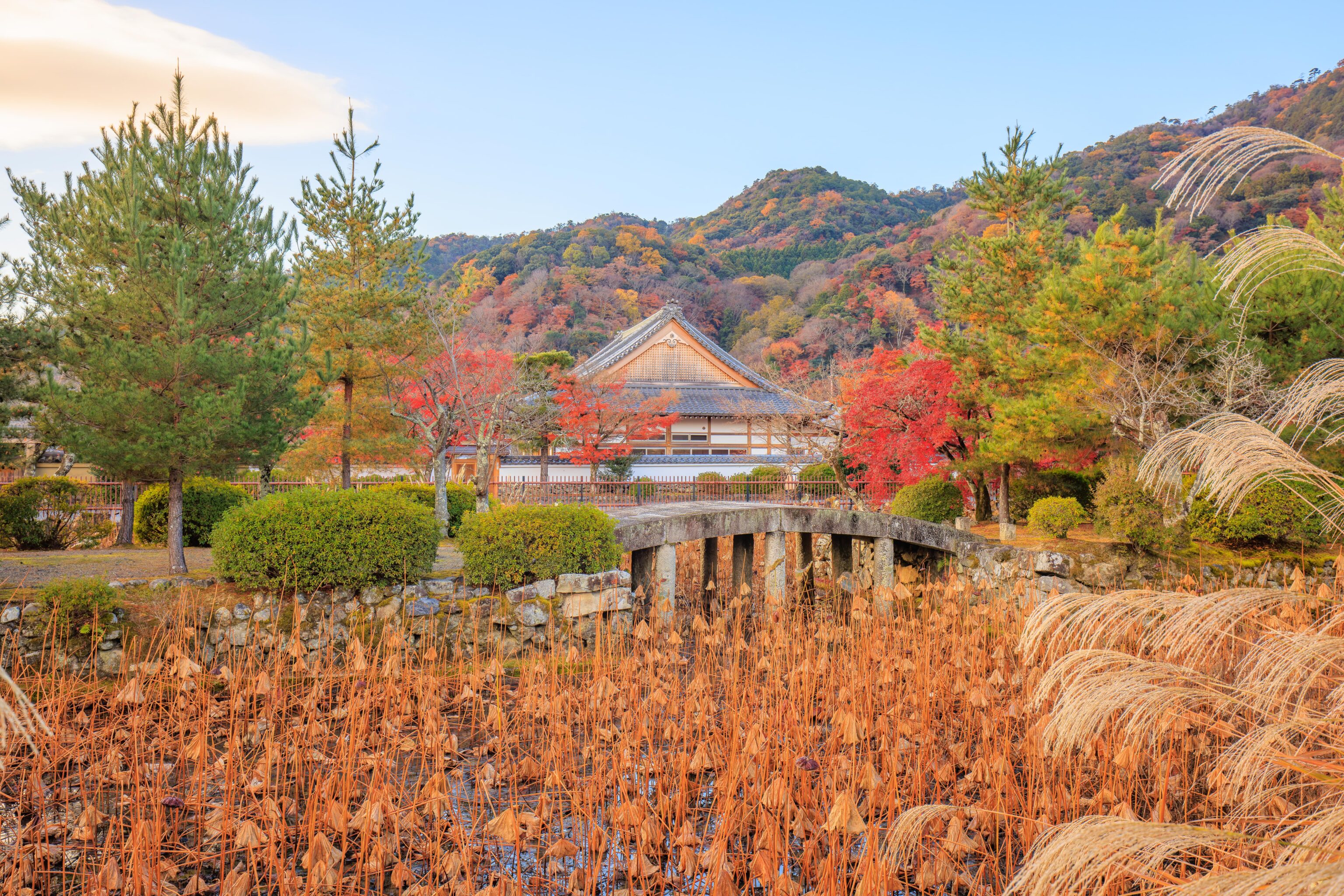
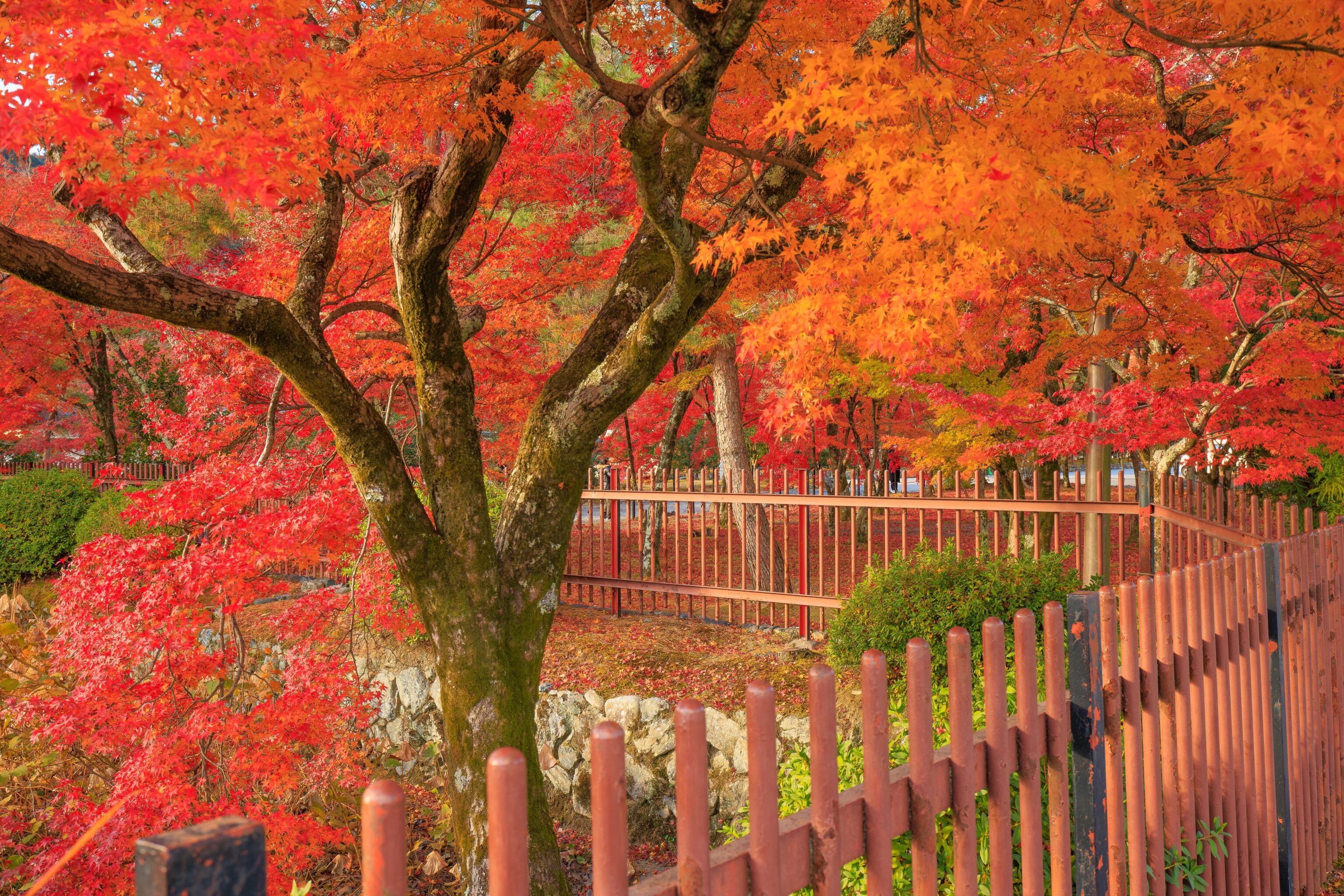
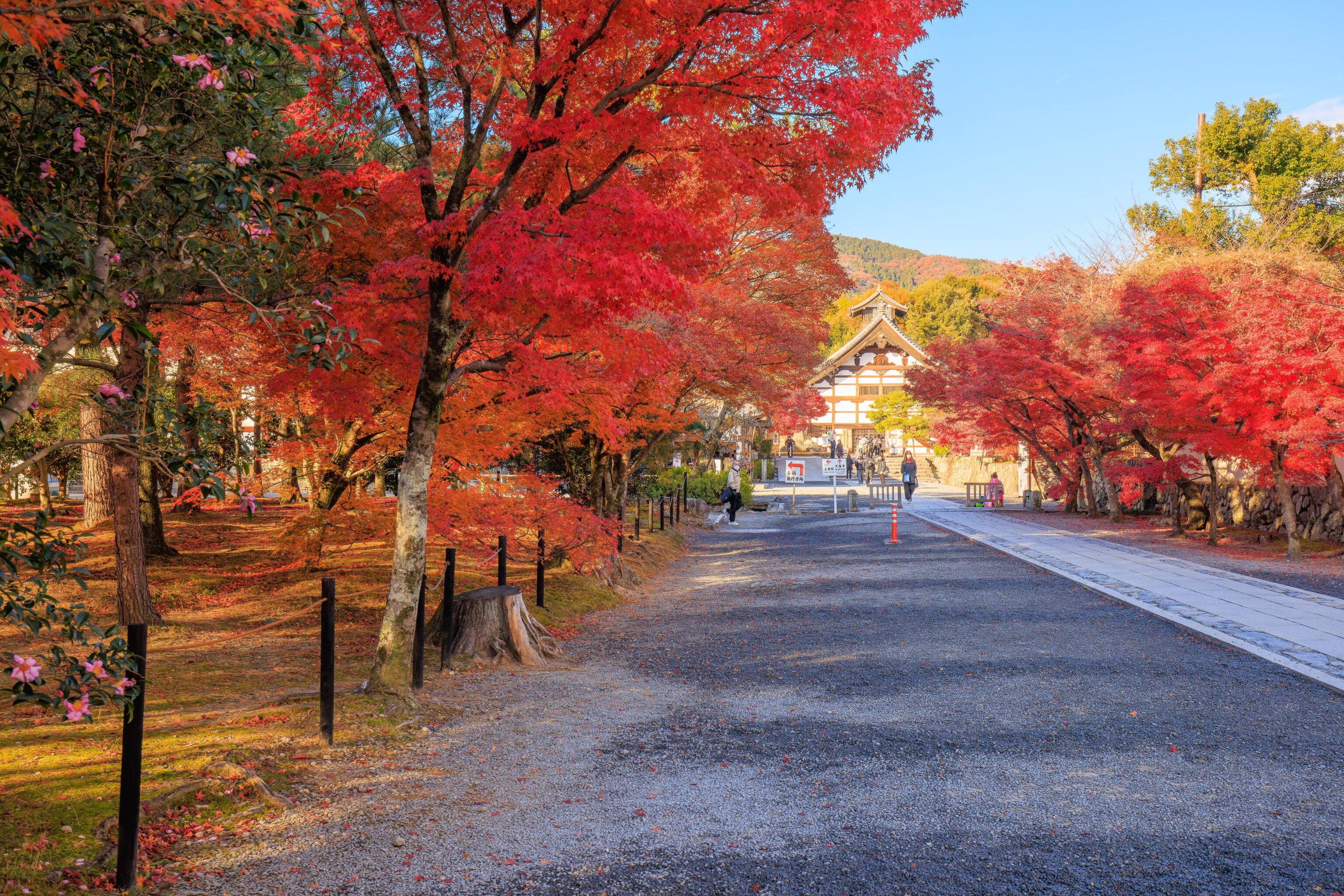
After passing through the gate, we continued walking west to reach the main temple buildings.
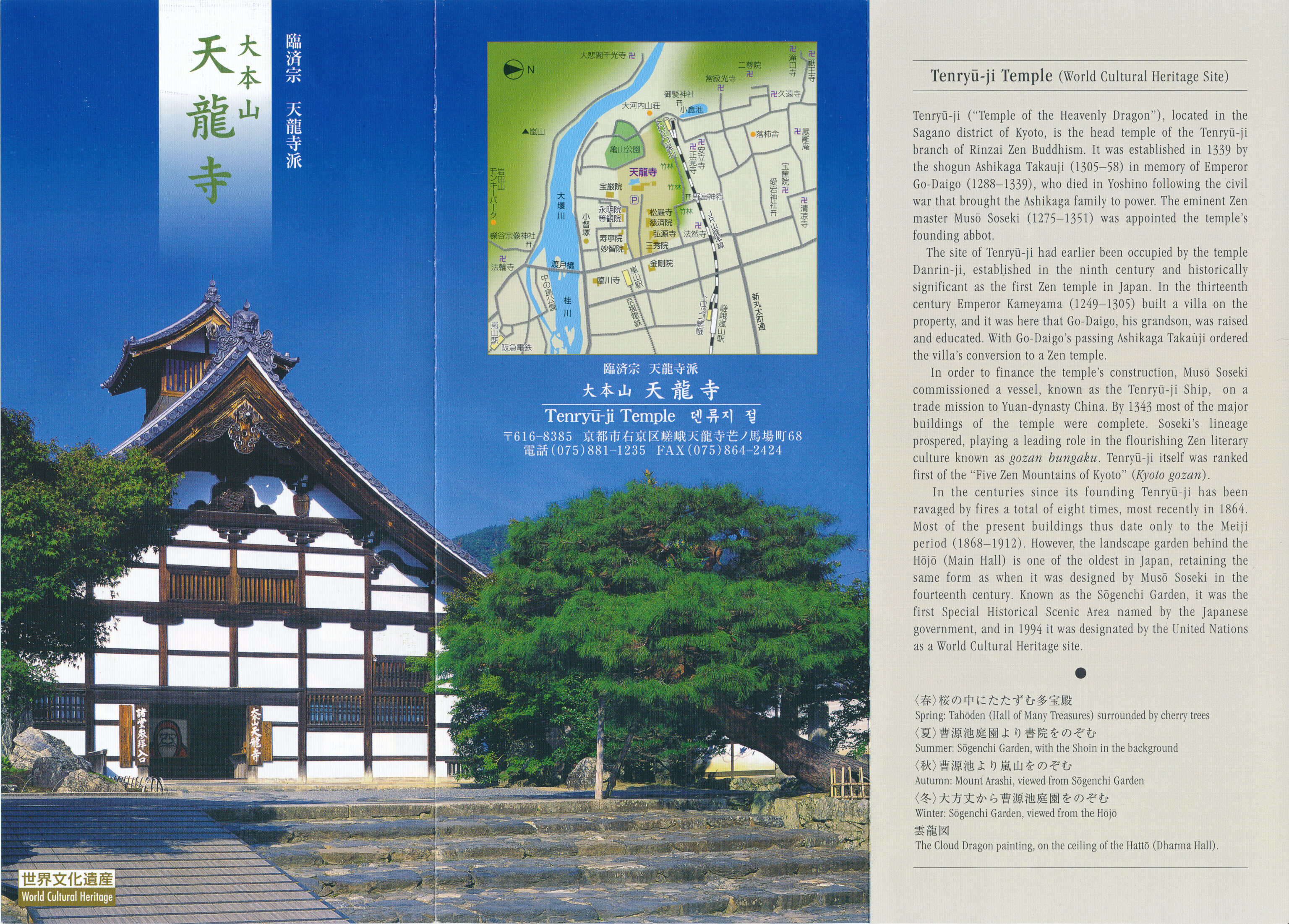
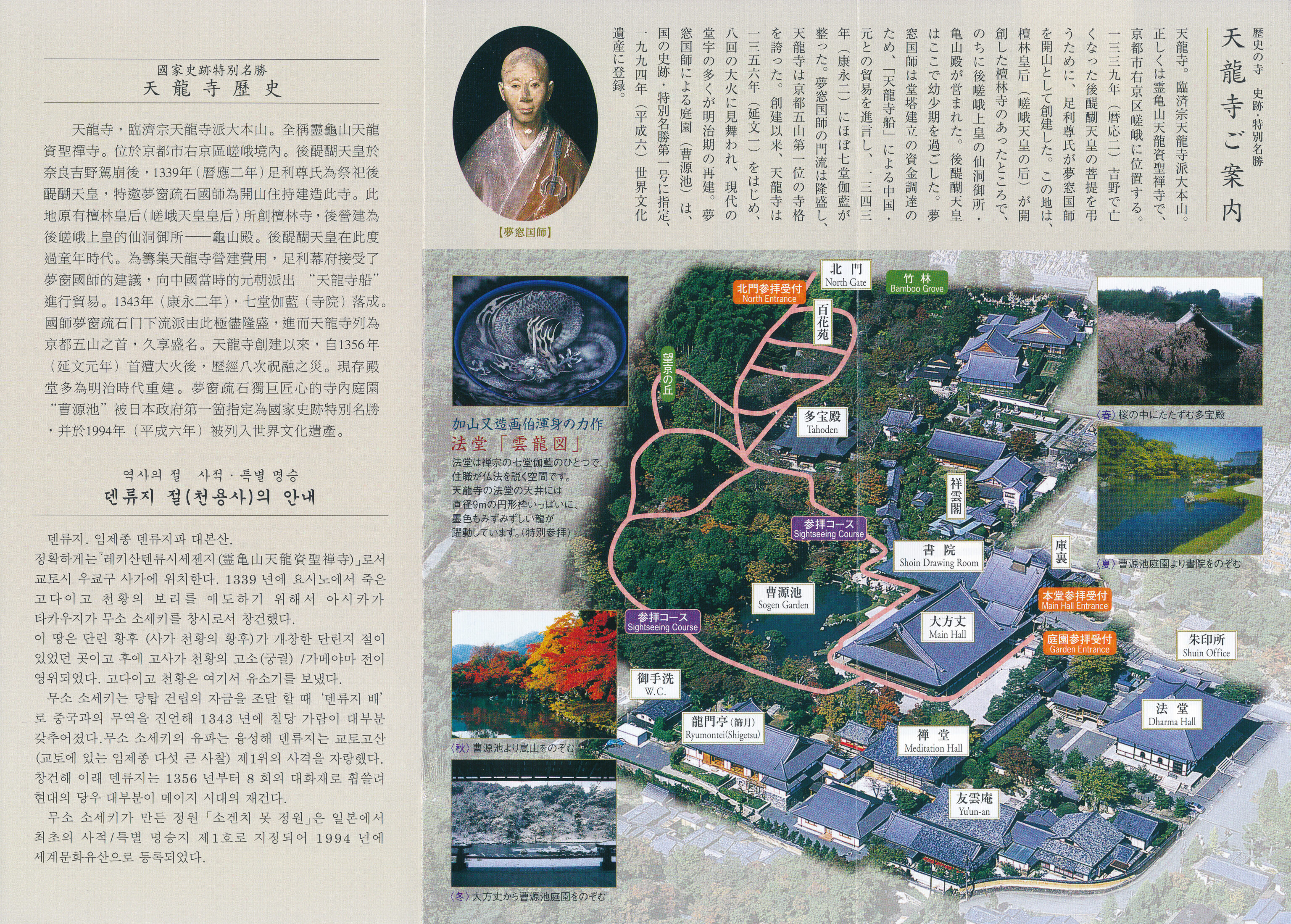
A pamphlet was provided on entry with text in English, Chinese, Korean, and Japanese.
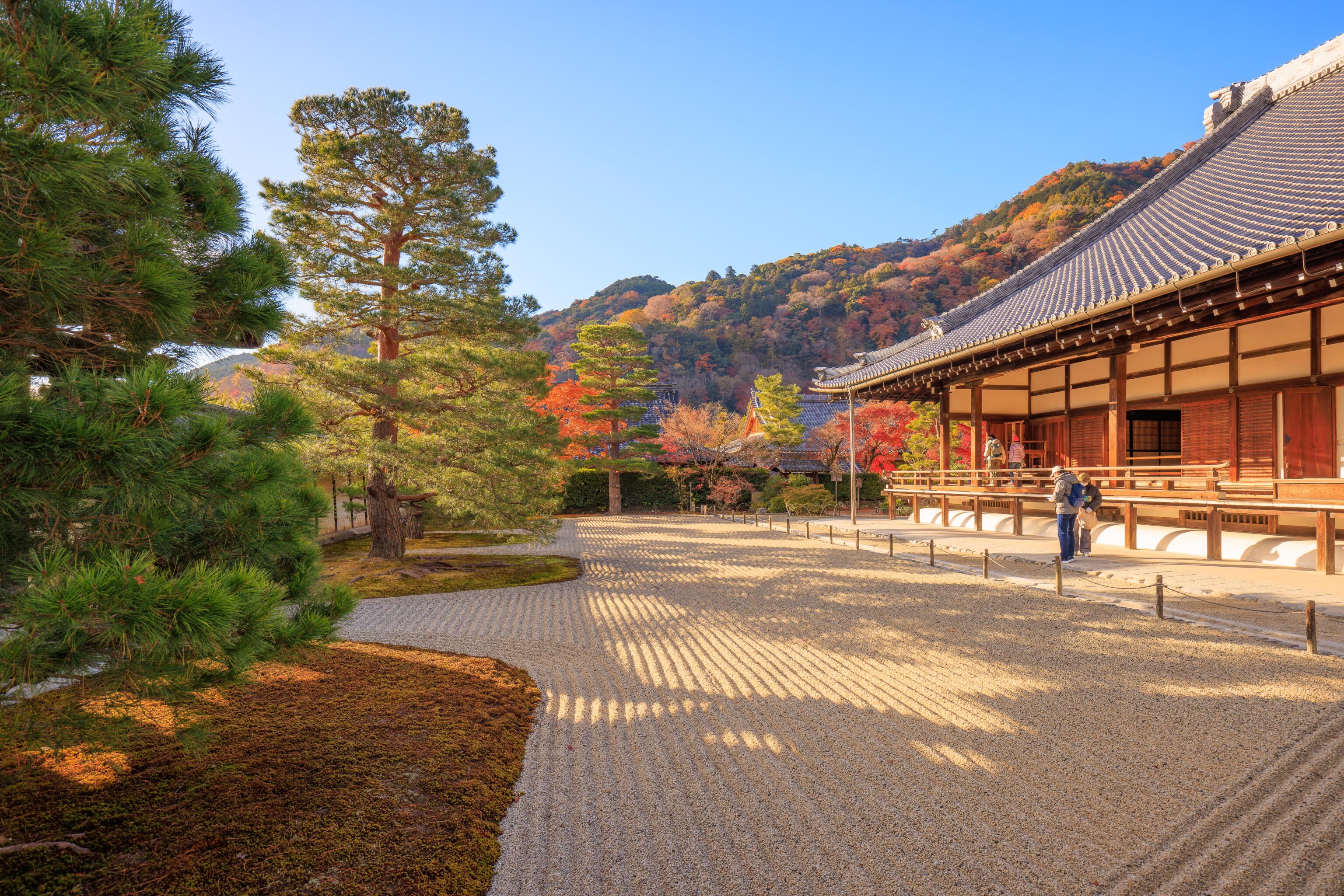
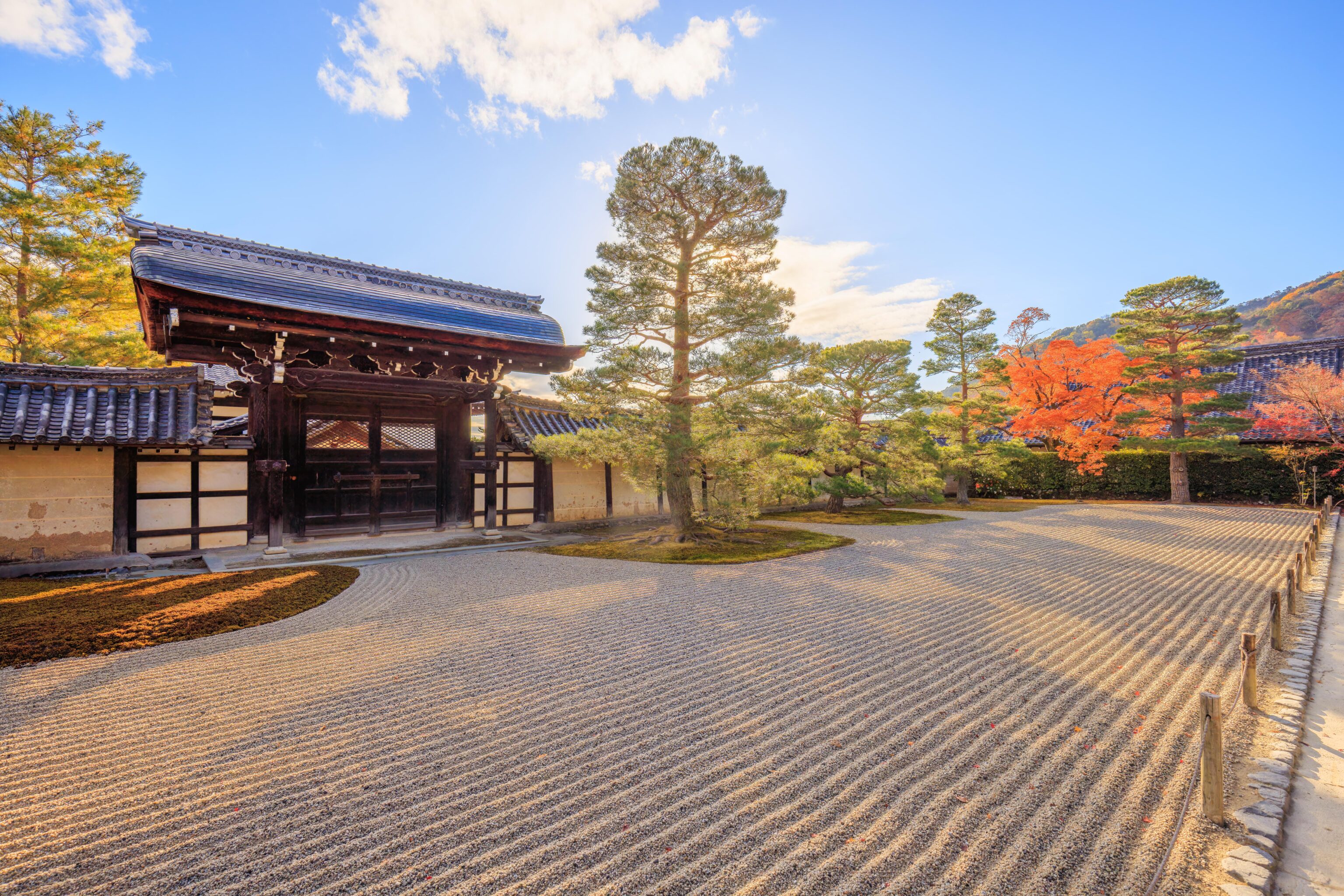
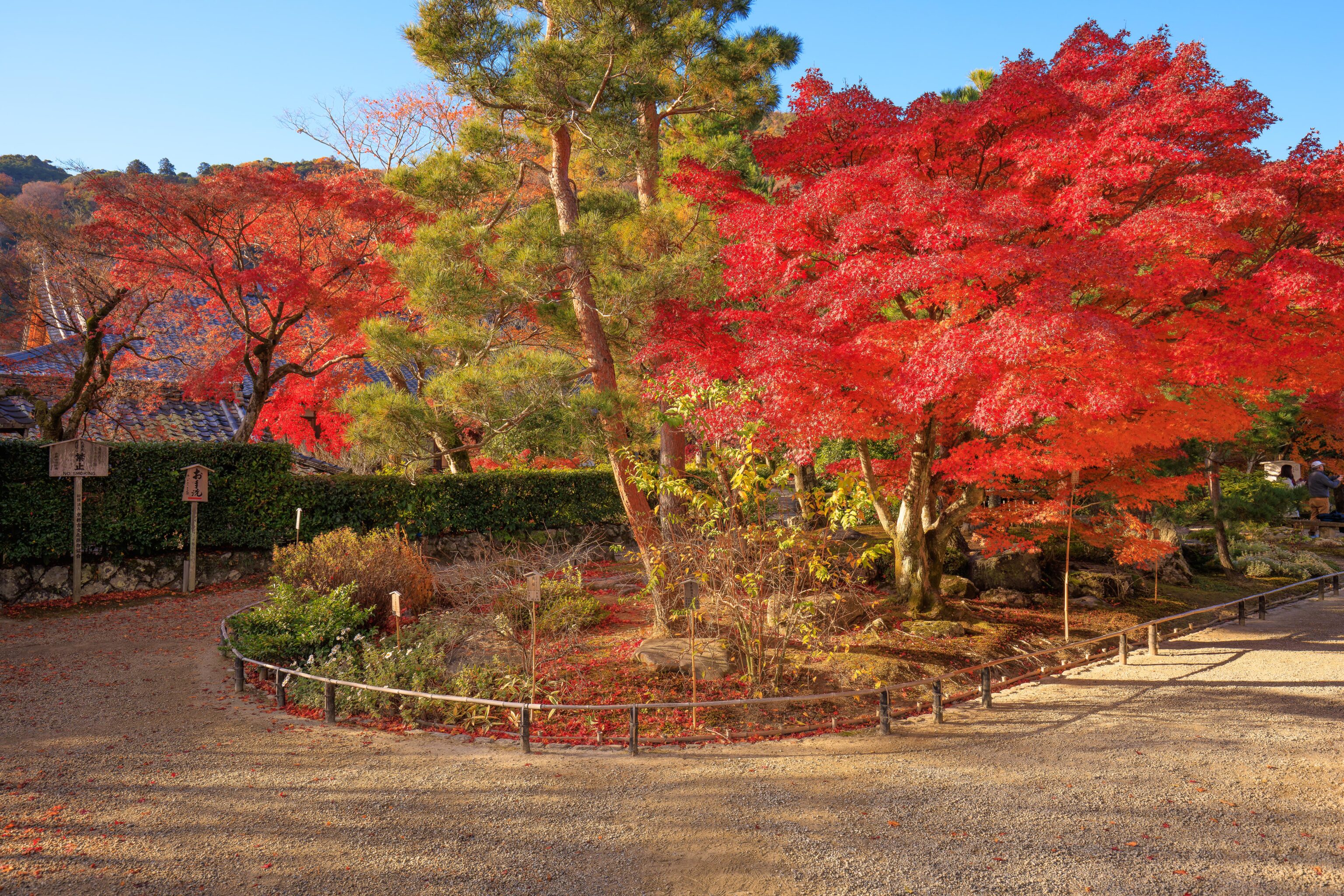
We have been here before but decided to take a look around to see how it appears during the fall foliage season. We started out in the Main Hall.
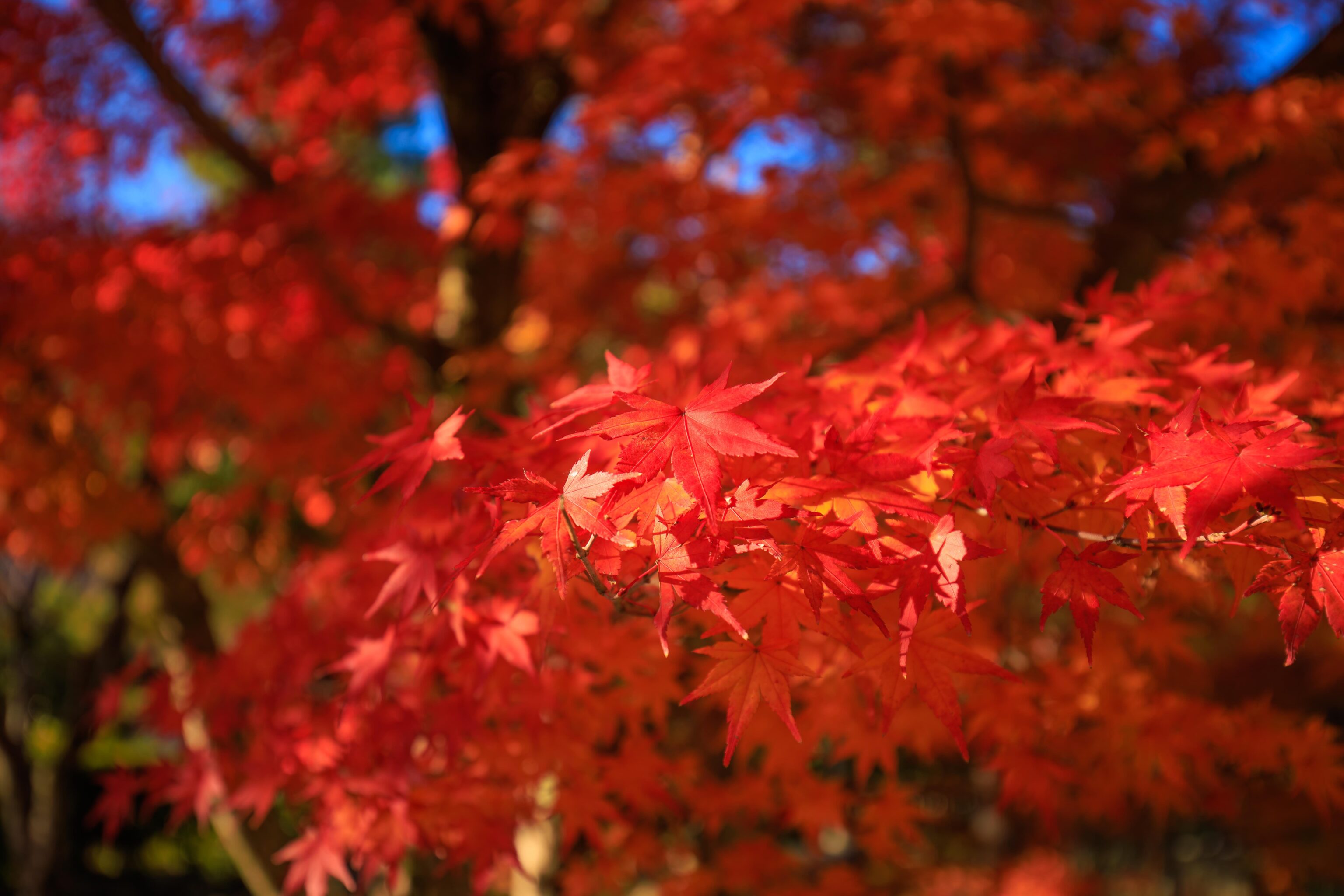
The Japanese maples that we did see looked good with their pretty red leaves.
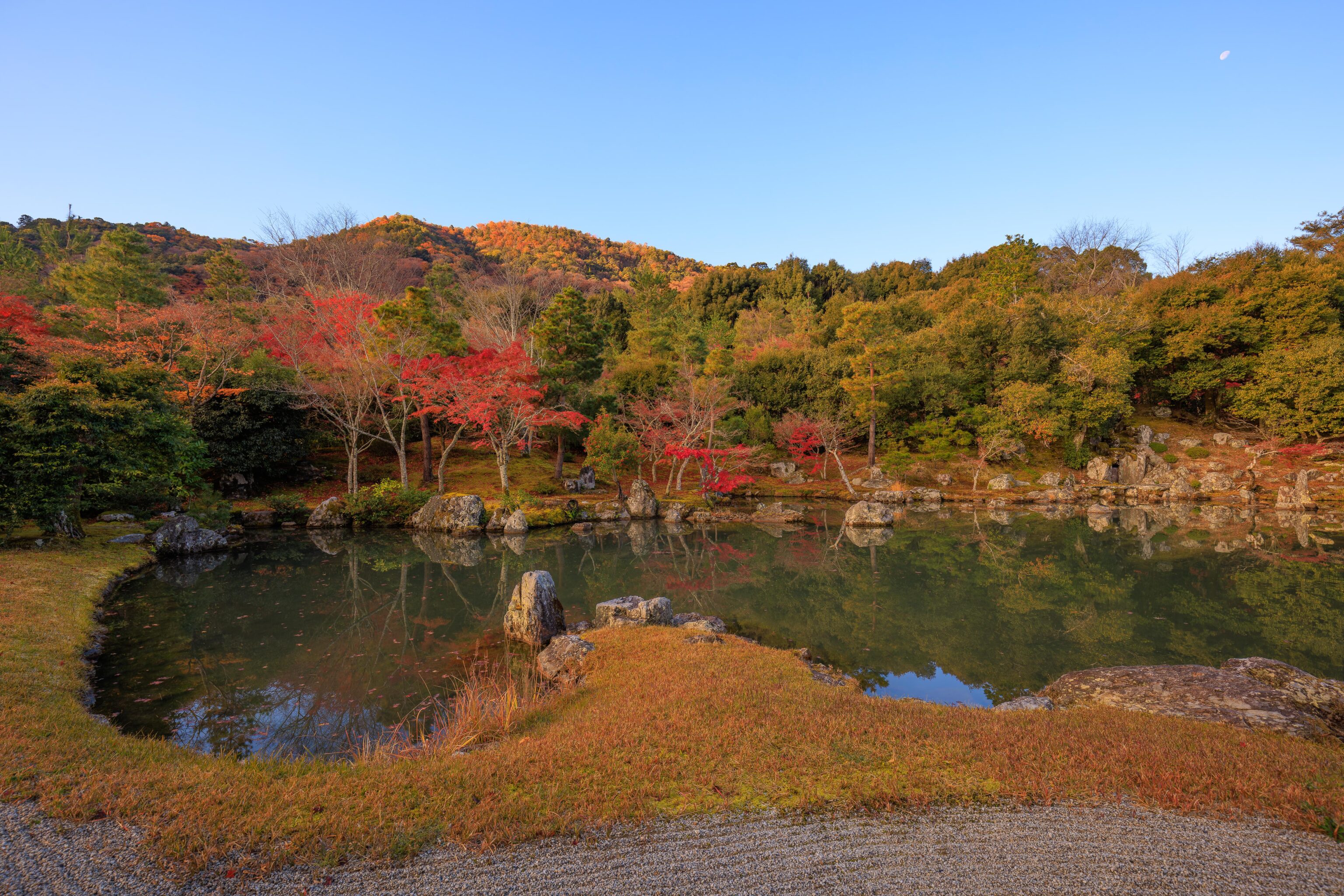
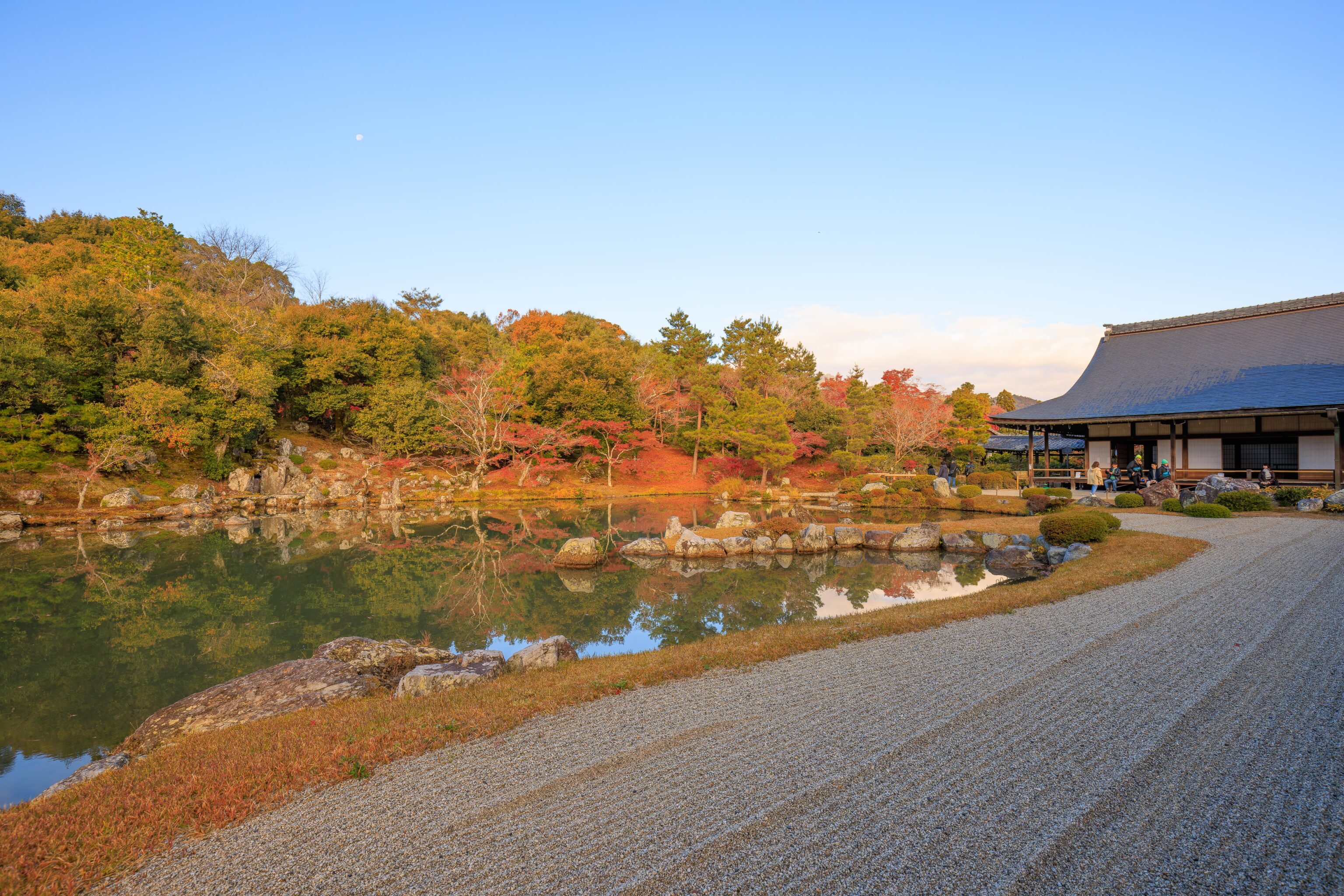
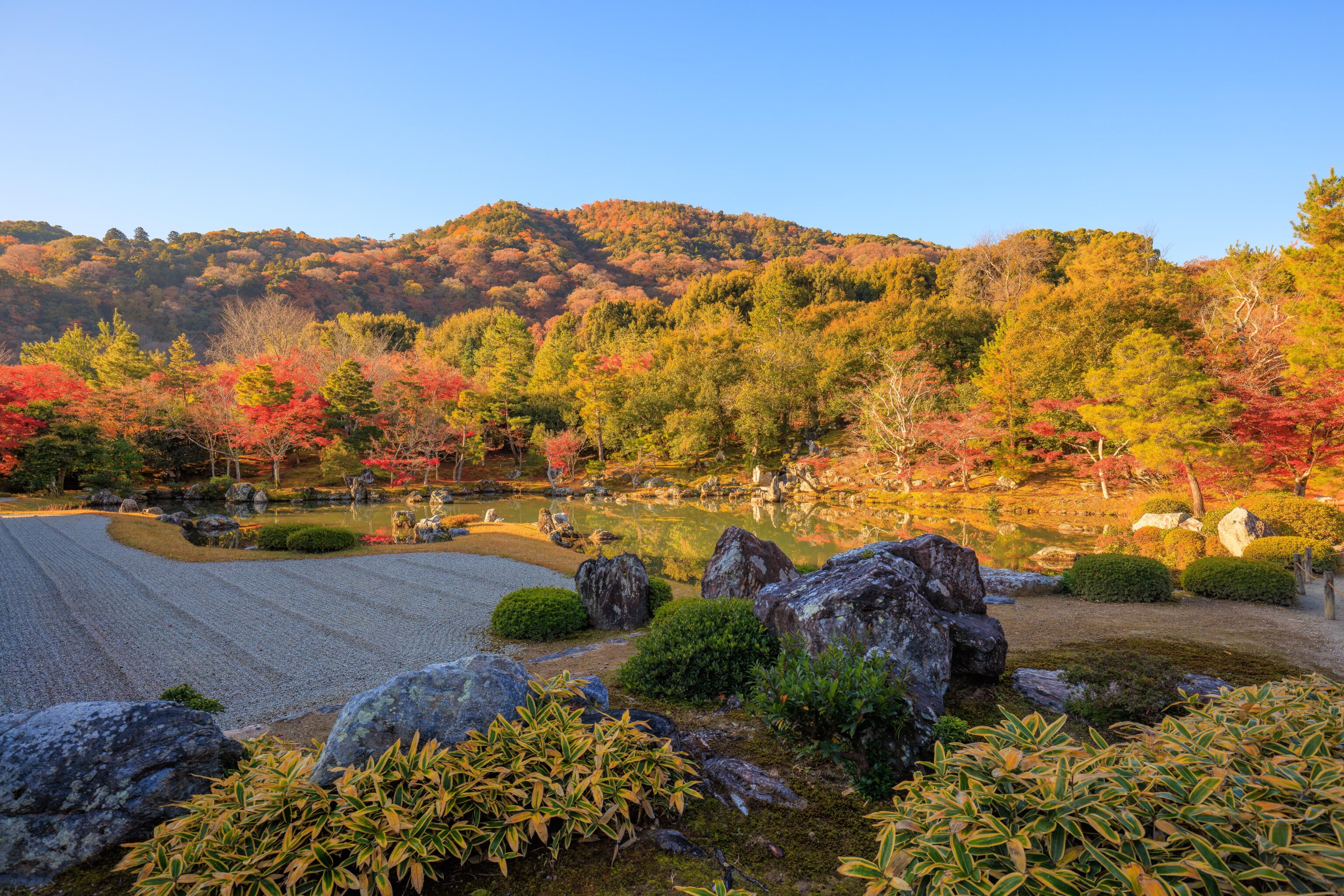
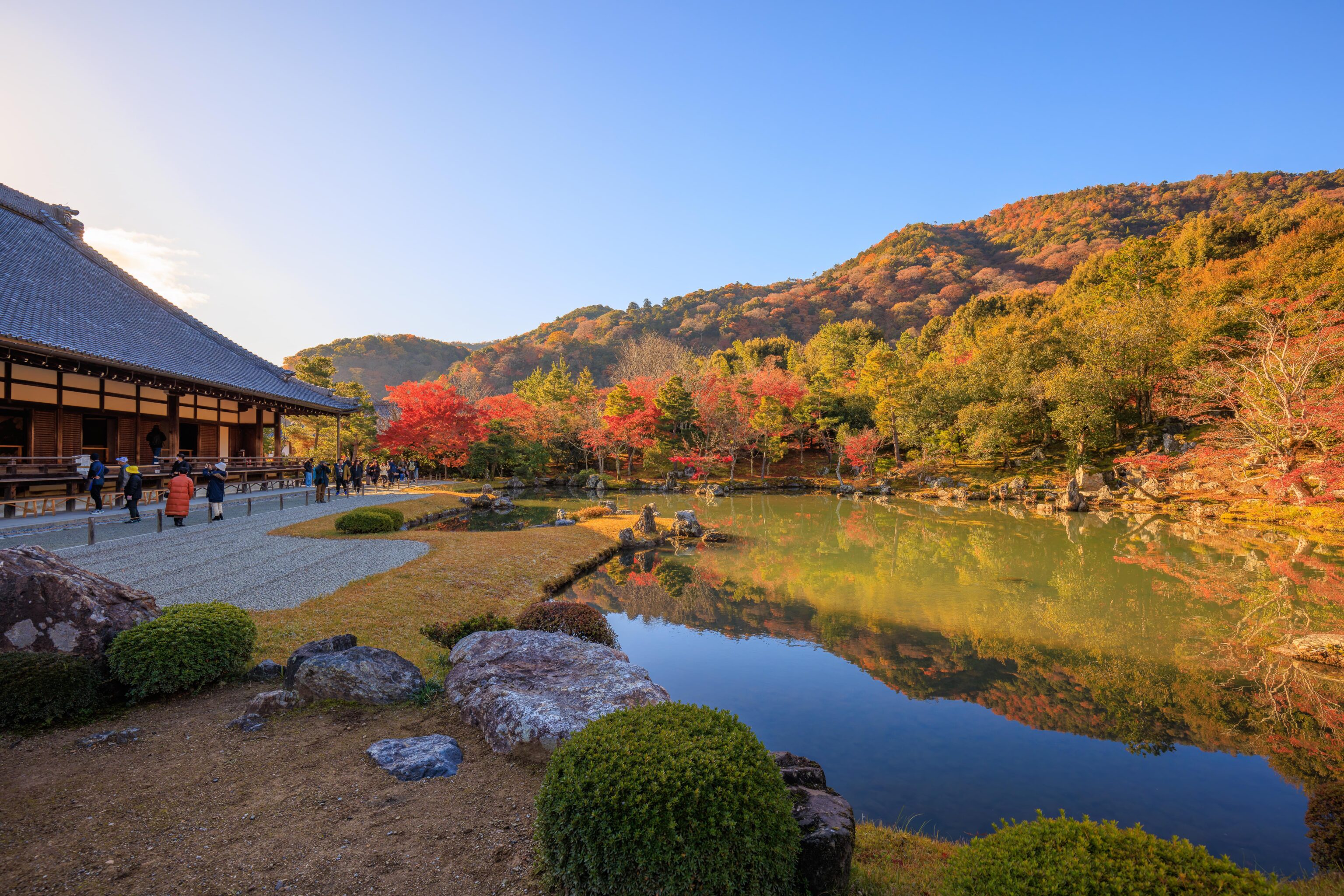
After walking around the indoor area of the Main Hall, we stepped down into the outdoor garden area. There was a beautiful still pond. Not much fall colors here though.
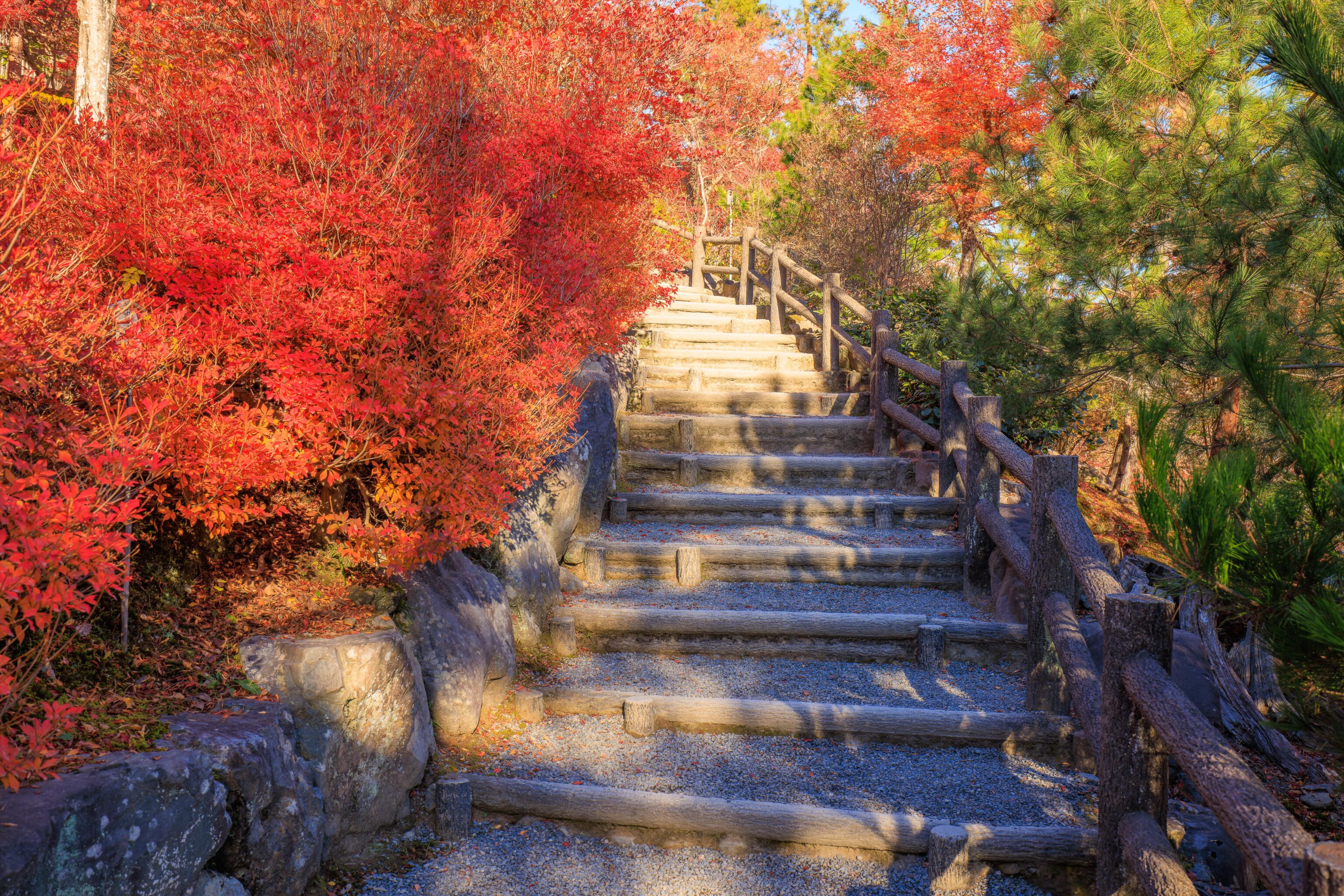
We followed the route as it climbed upwards.
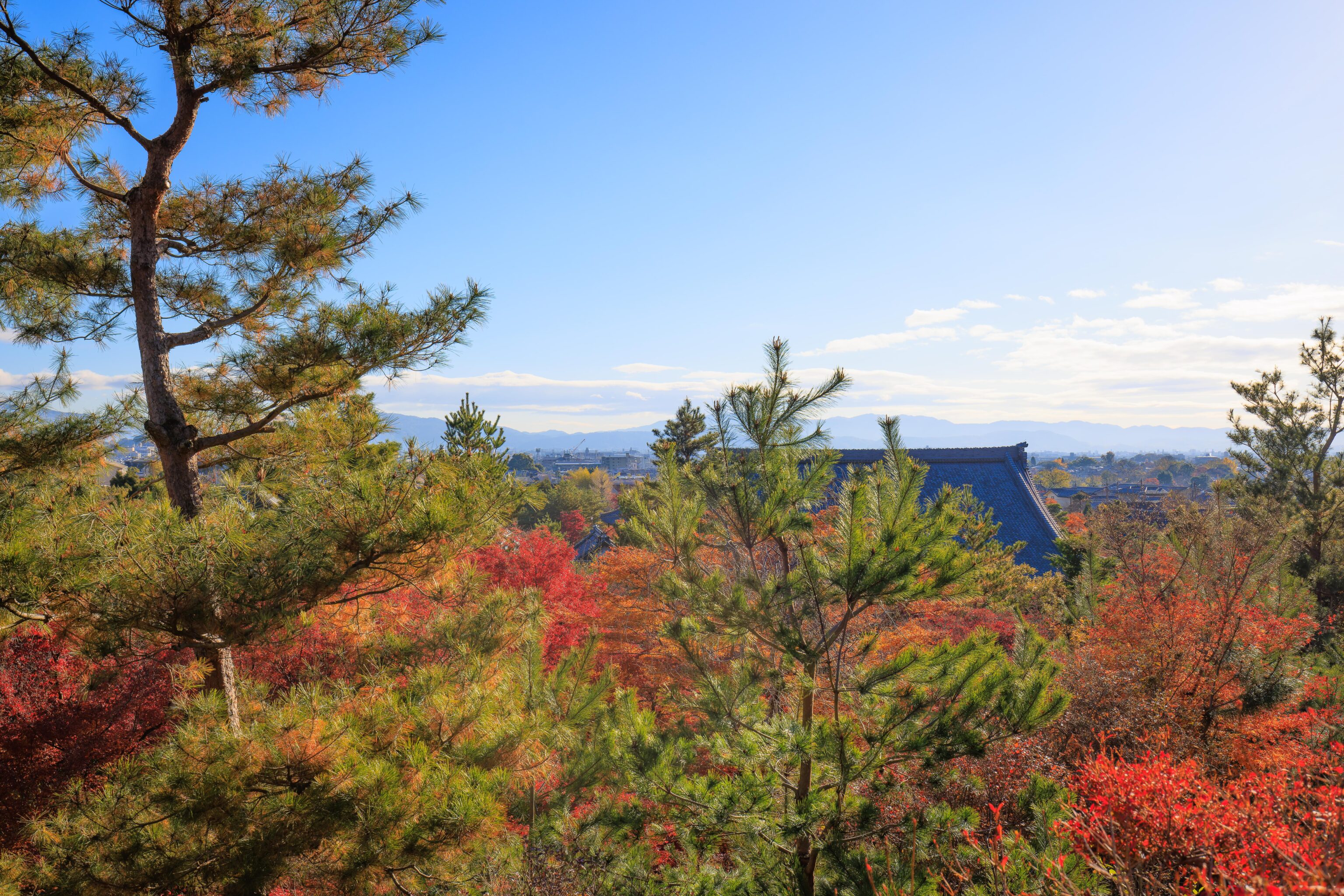
The view at the top was mostly obscured by trees. We also weren’t high enough to be able to see past the Main Hall’s tall roof.
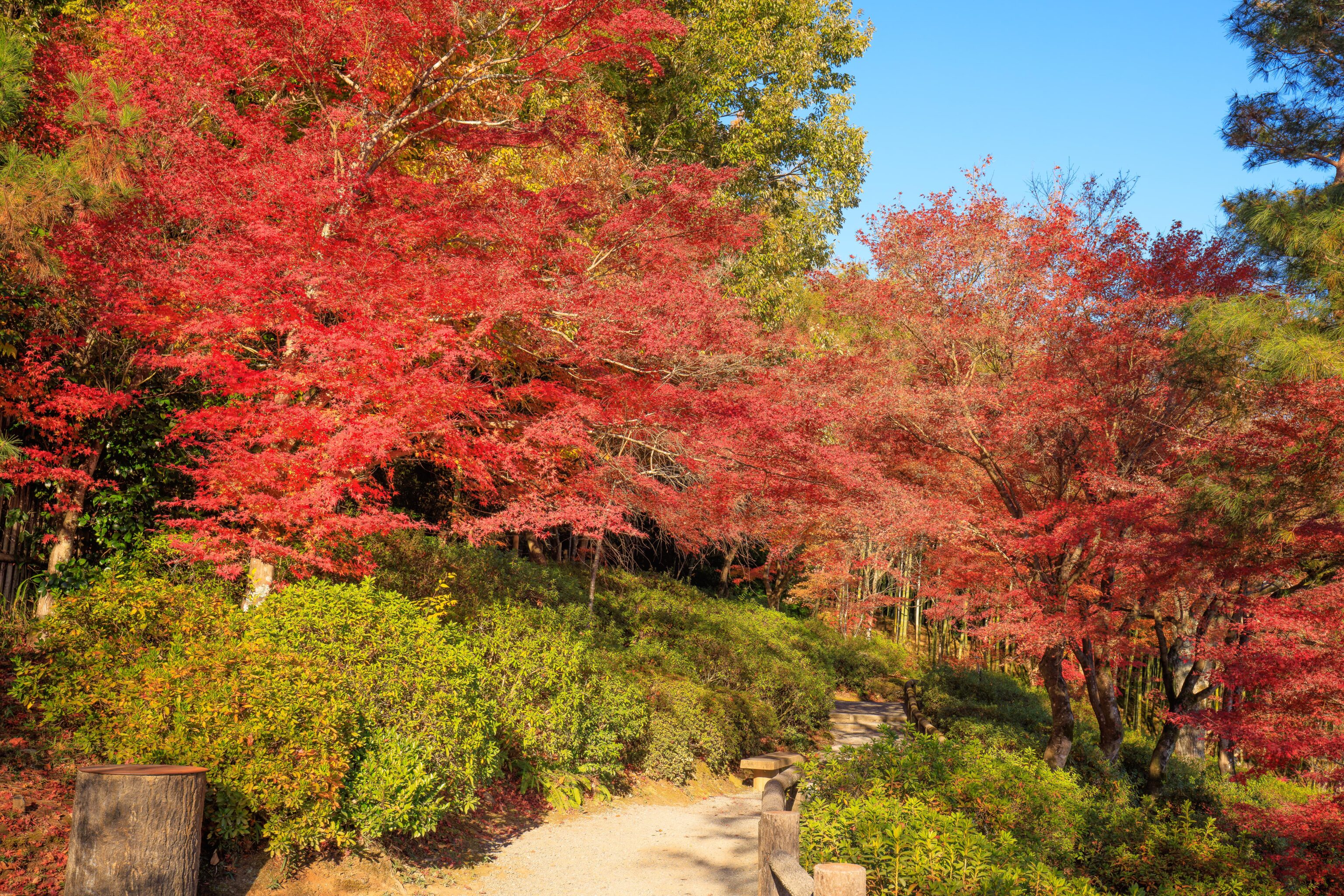
The path continued to the north. There was a bit of fall color up here though.
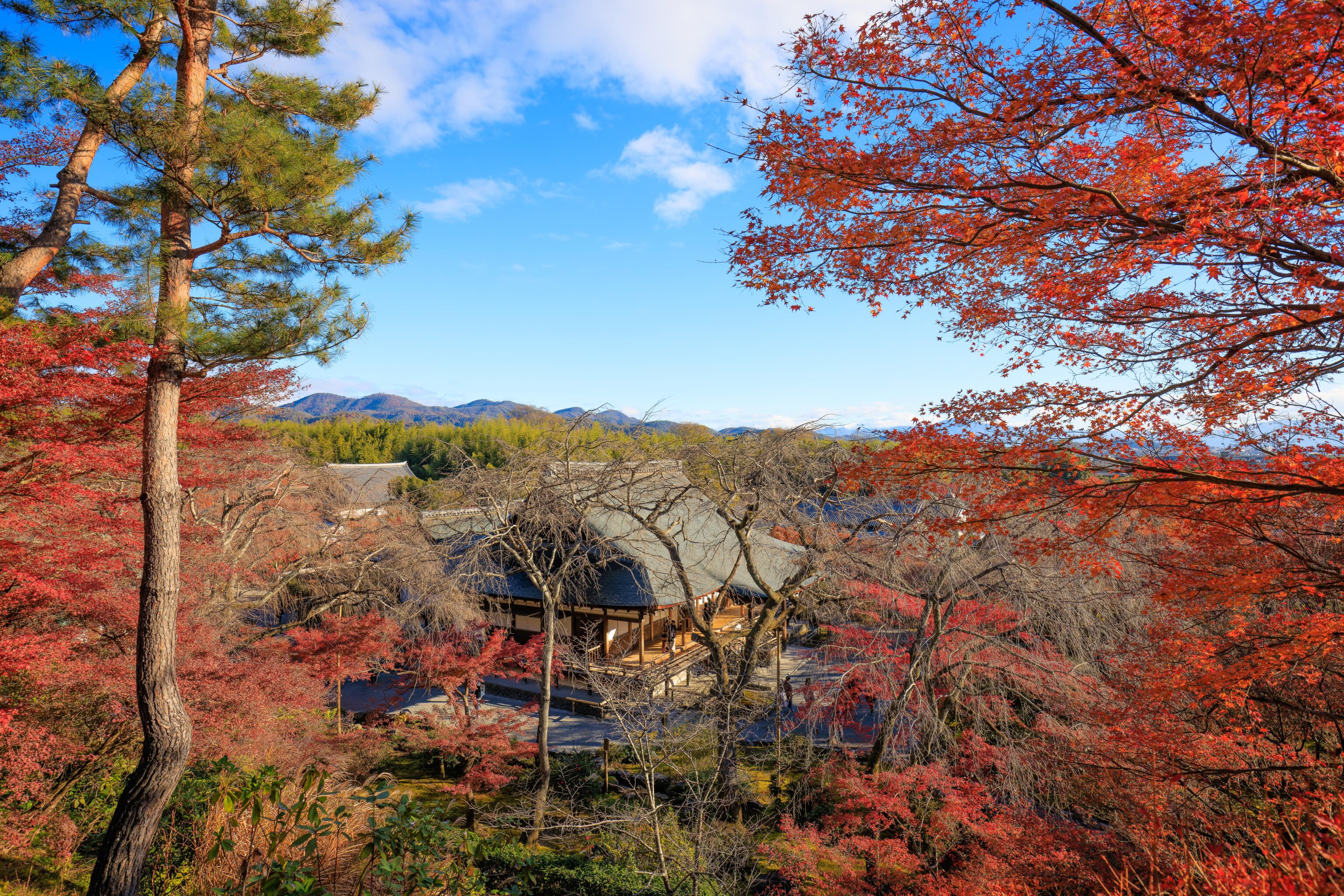
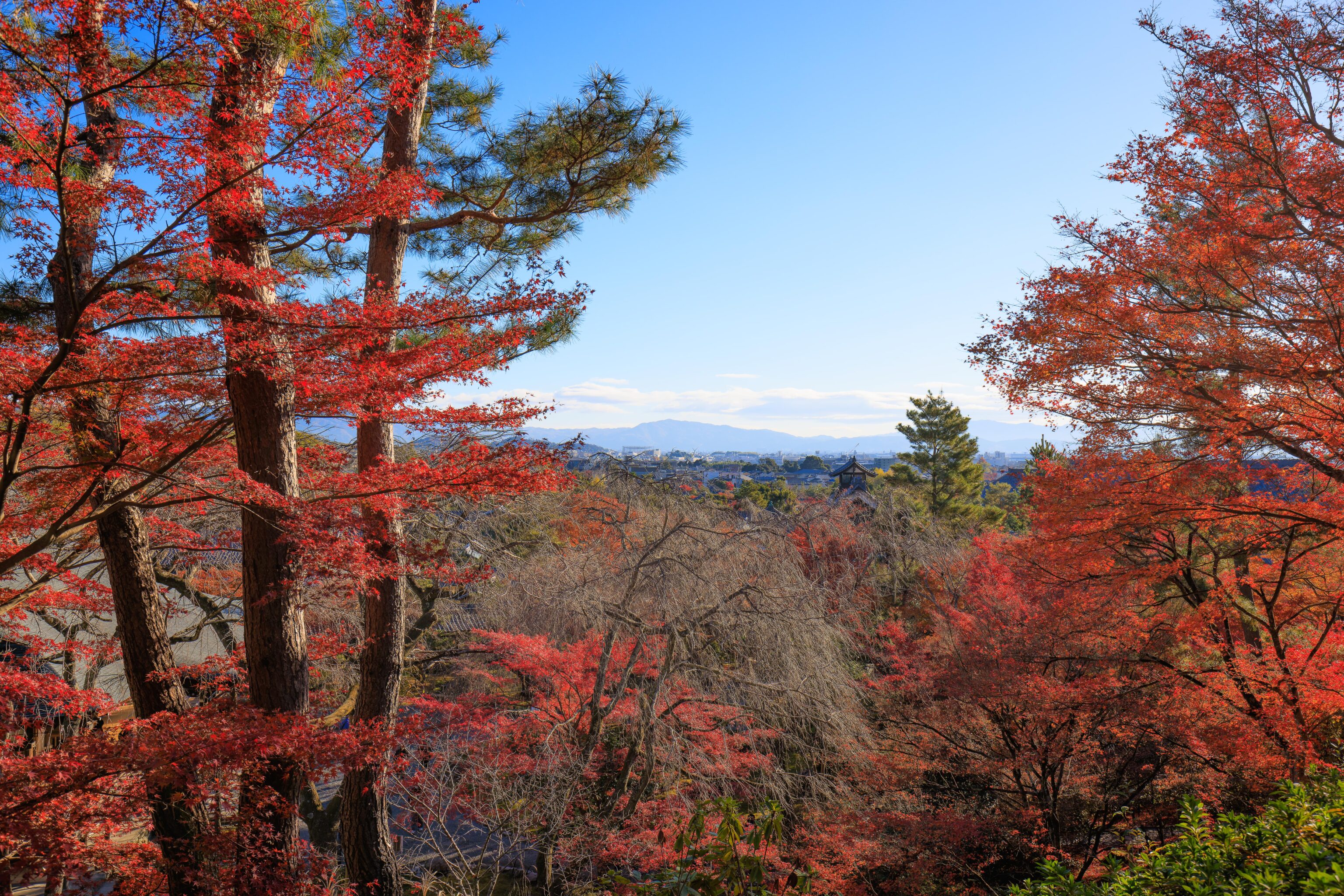
Again, the view was mostly obscured by trees.
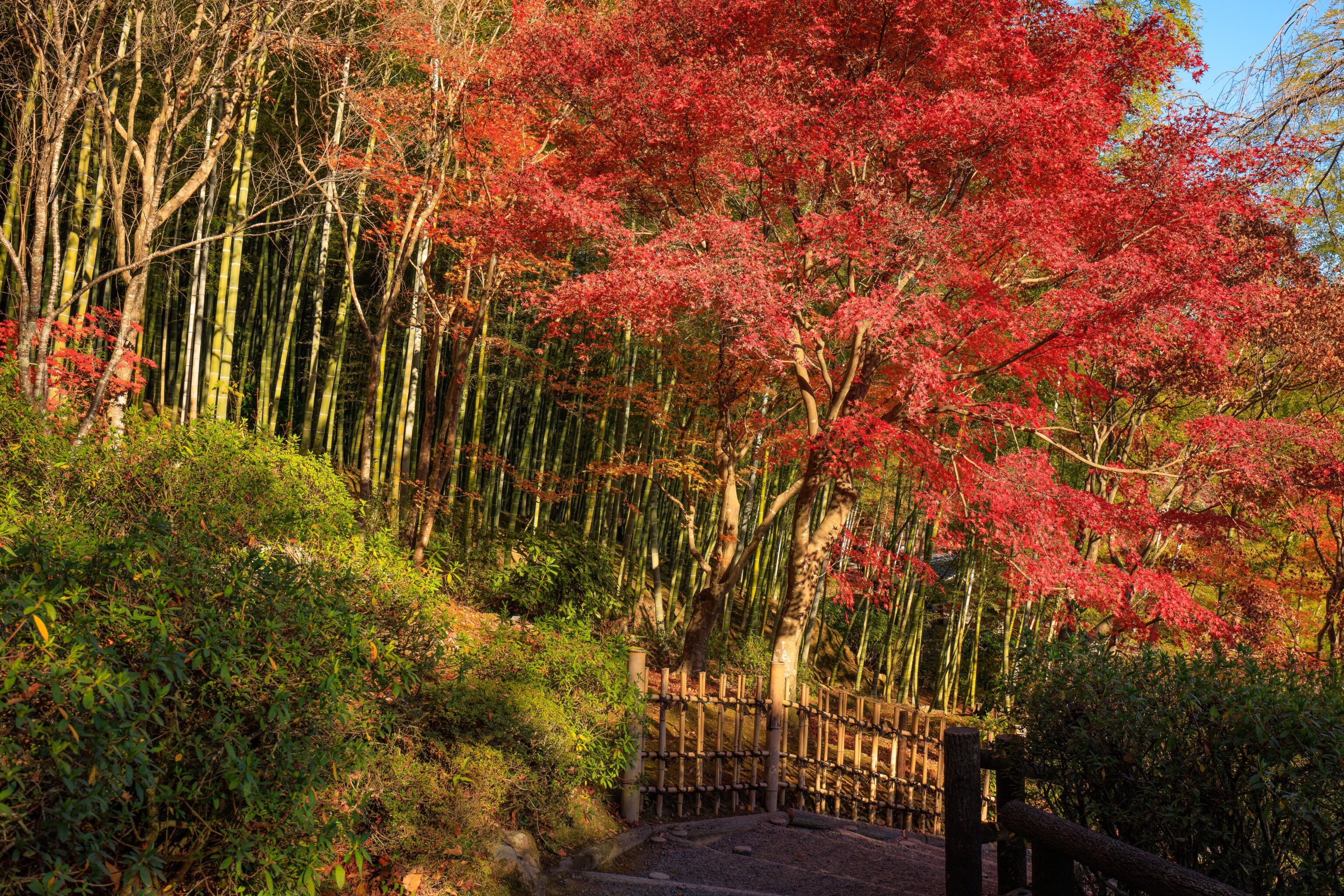
The path quickly started to head down hill next to a bamboo forest. This is probably the southern edge of Arashiyama’s famous bamboo grove?
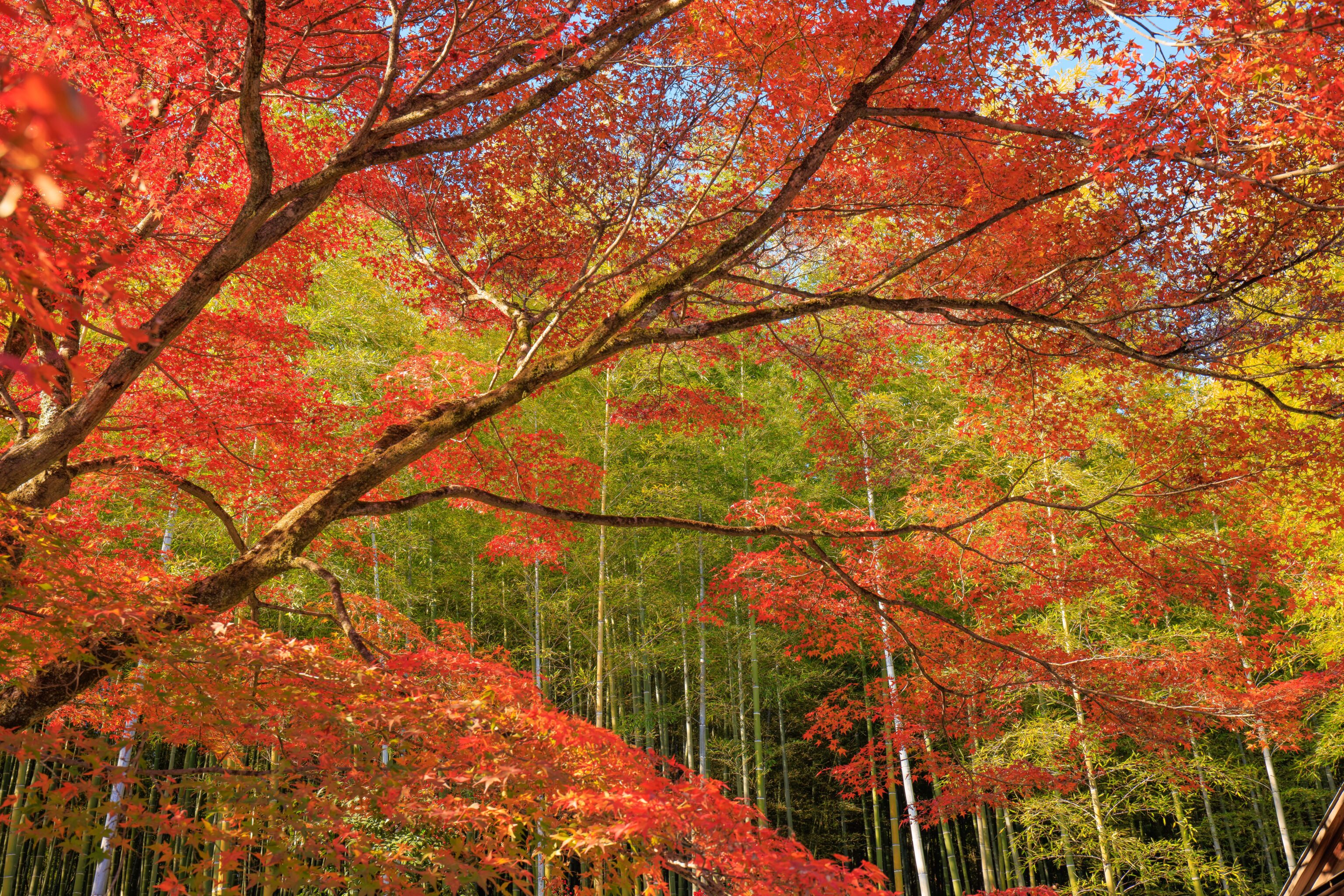
Another view of the bamboo forest after descending.
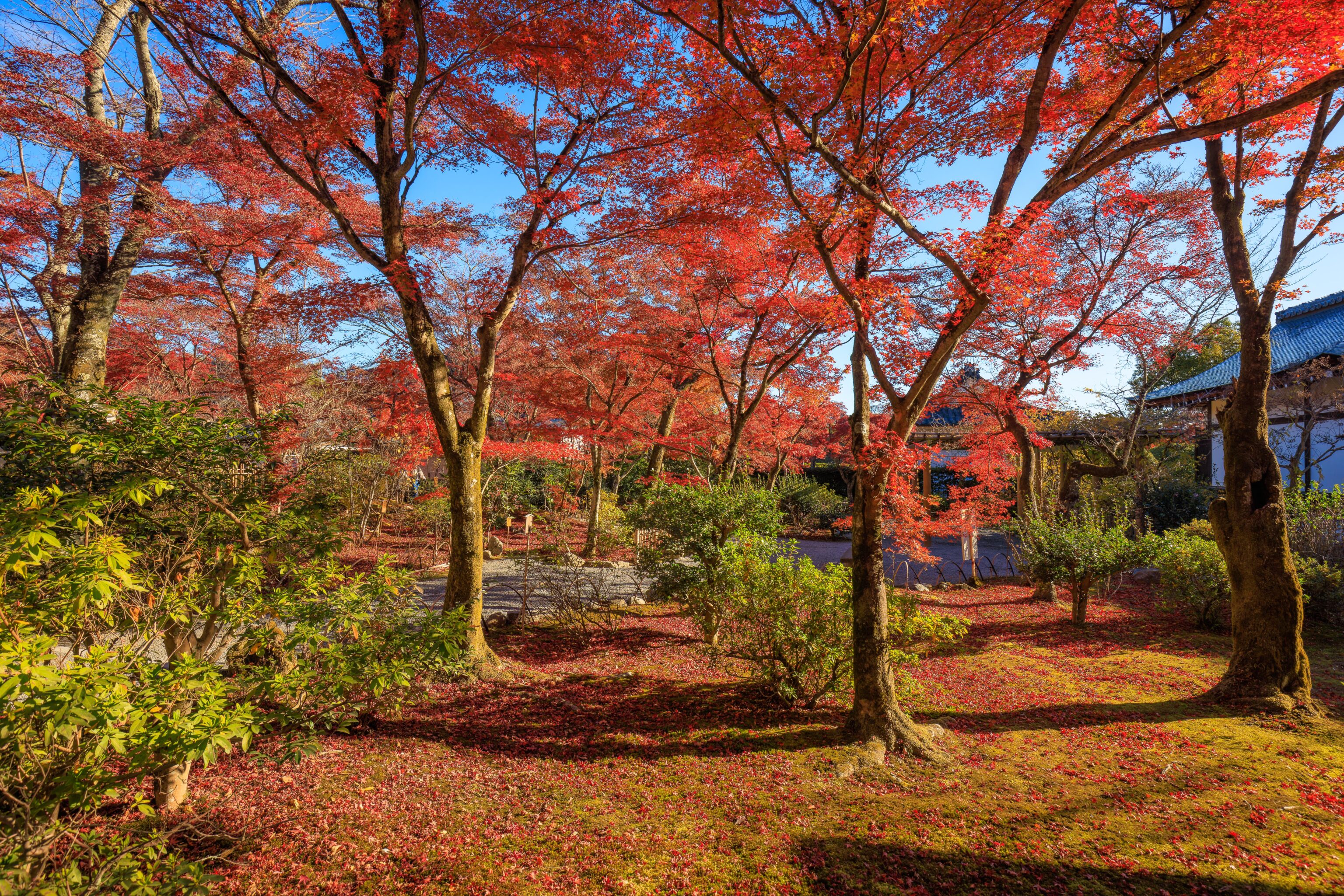
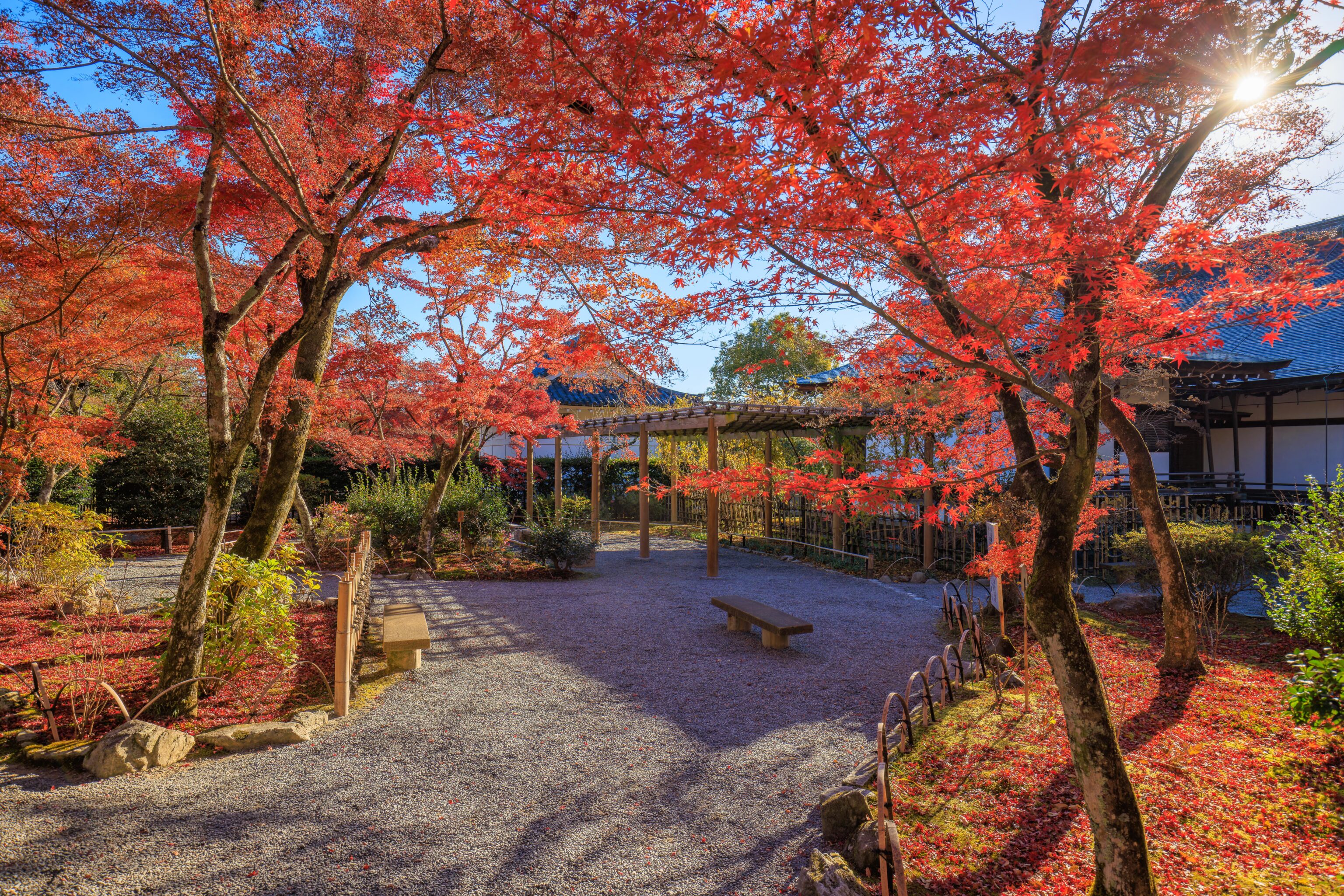
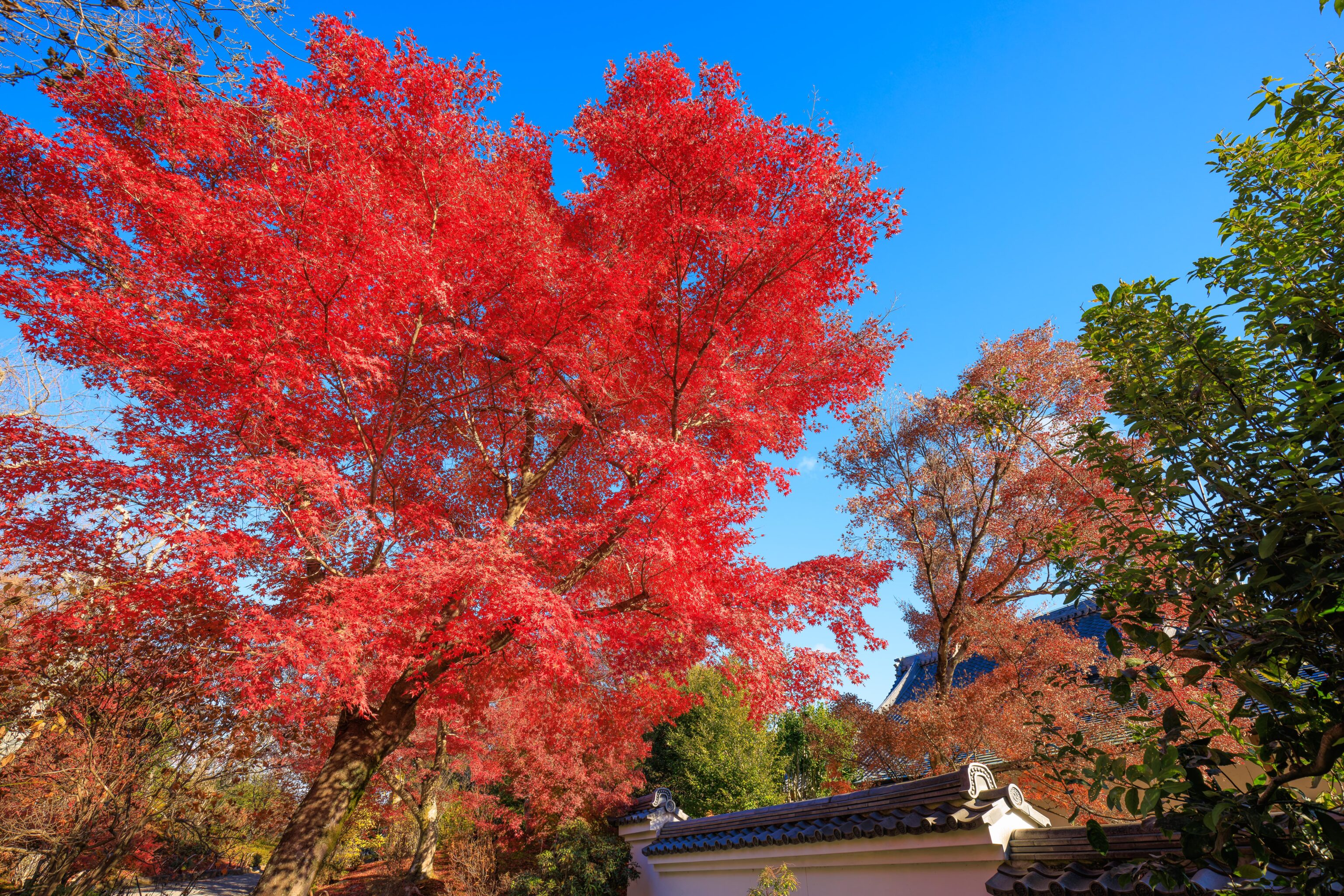
We walked around the northern section of the garden a bit before taking the north exit out of the temple grounds.
Arashiyama Bamboo Forest
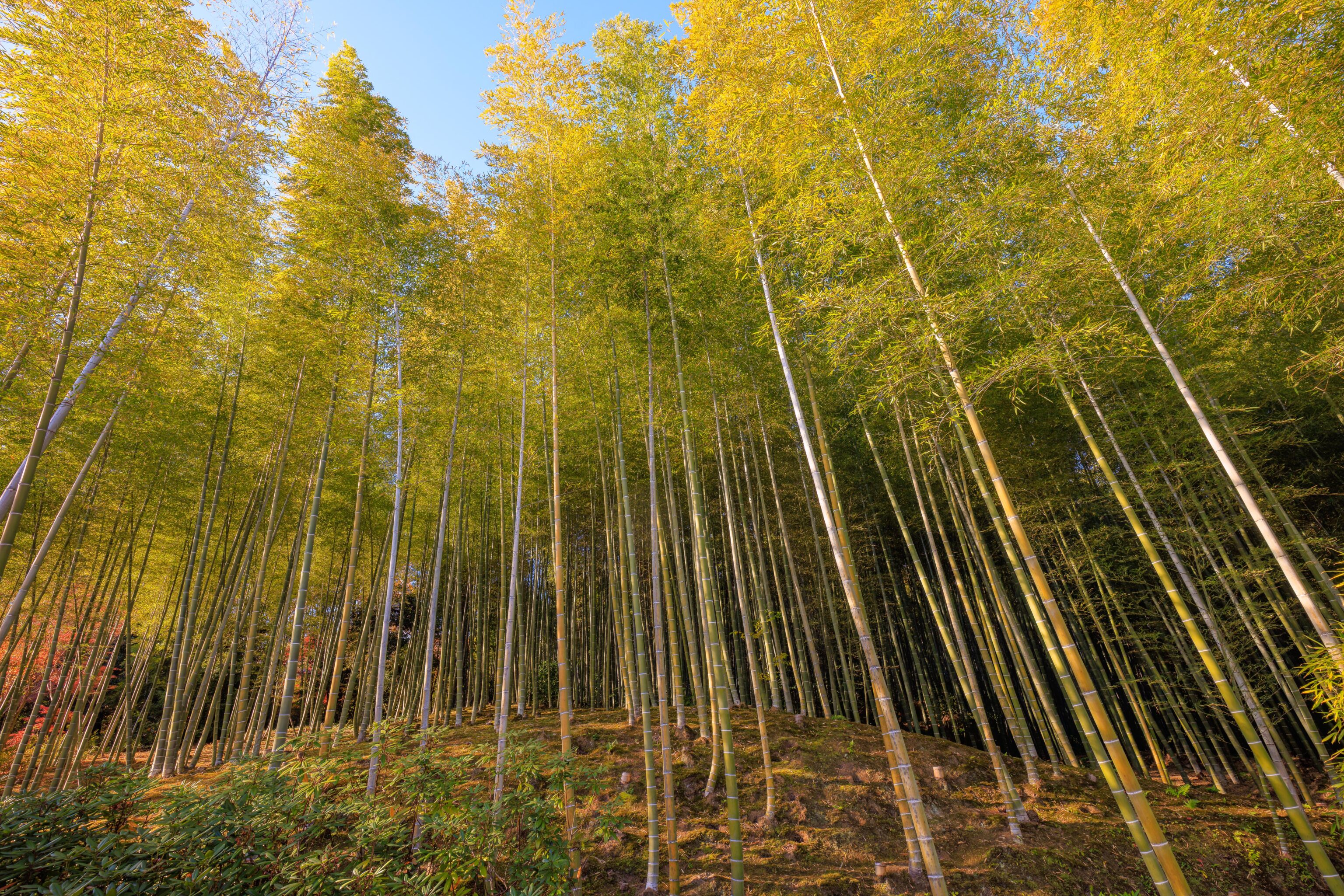
Tenryu-ji’s northern gate is on the path that leads to the eastern end of Arashiyama’s bamboo forest, sometimes referred to as a bamboo grove. Presumably, this is the most common way in, though it is possible to also enter via the north and south.
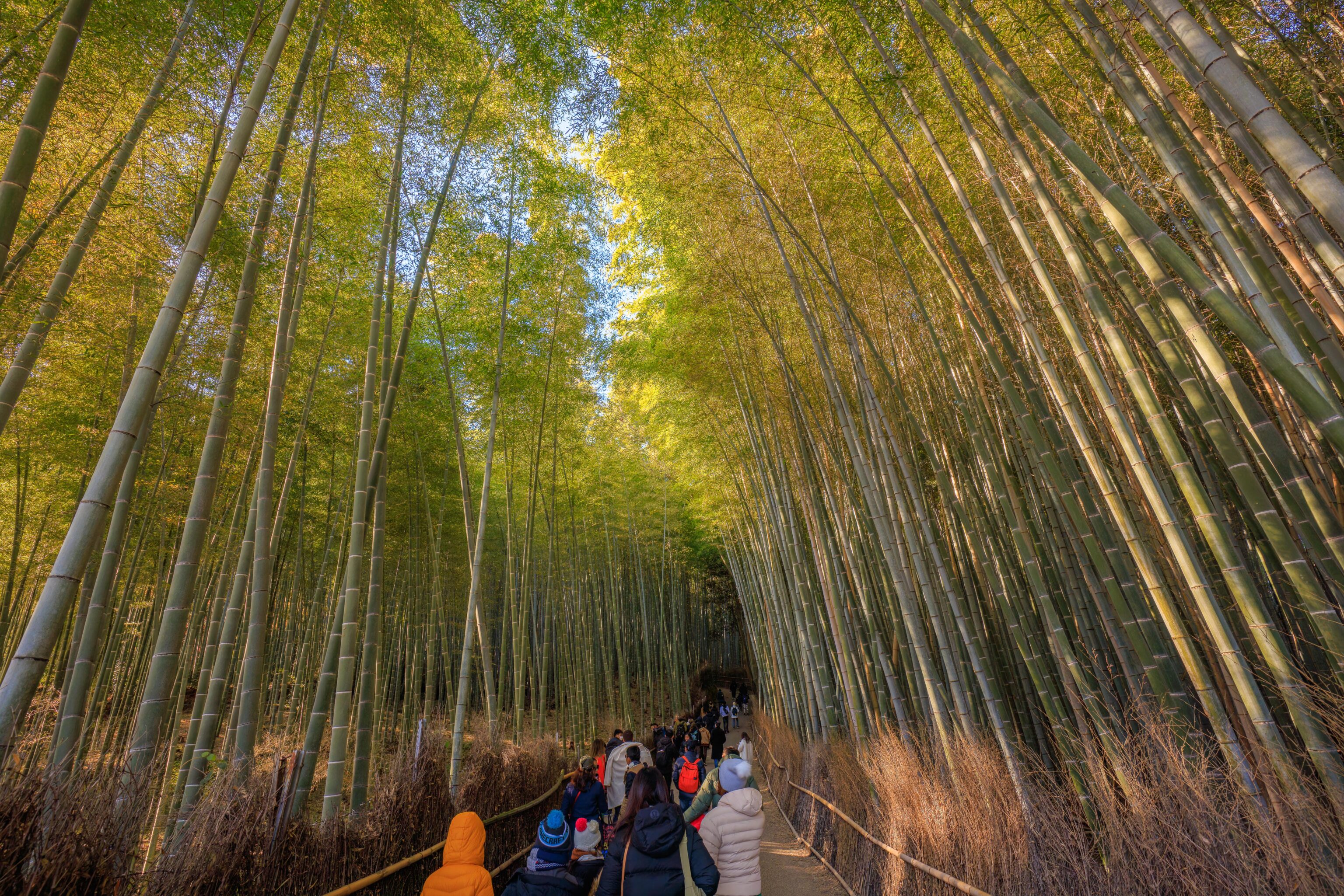
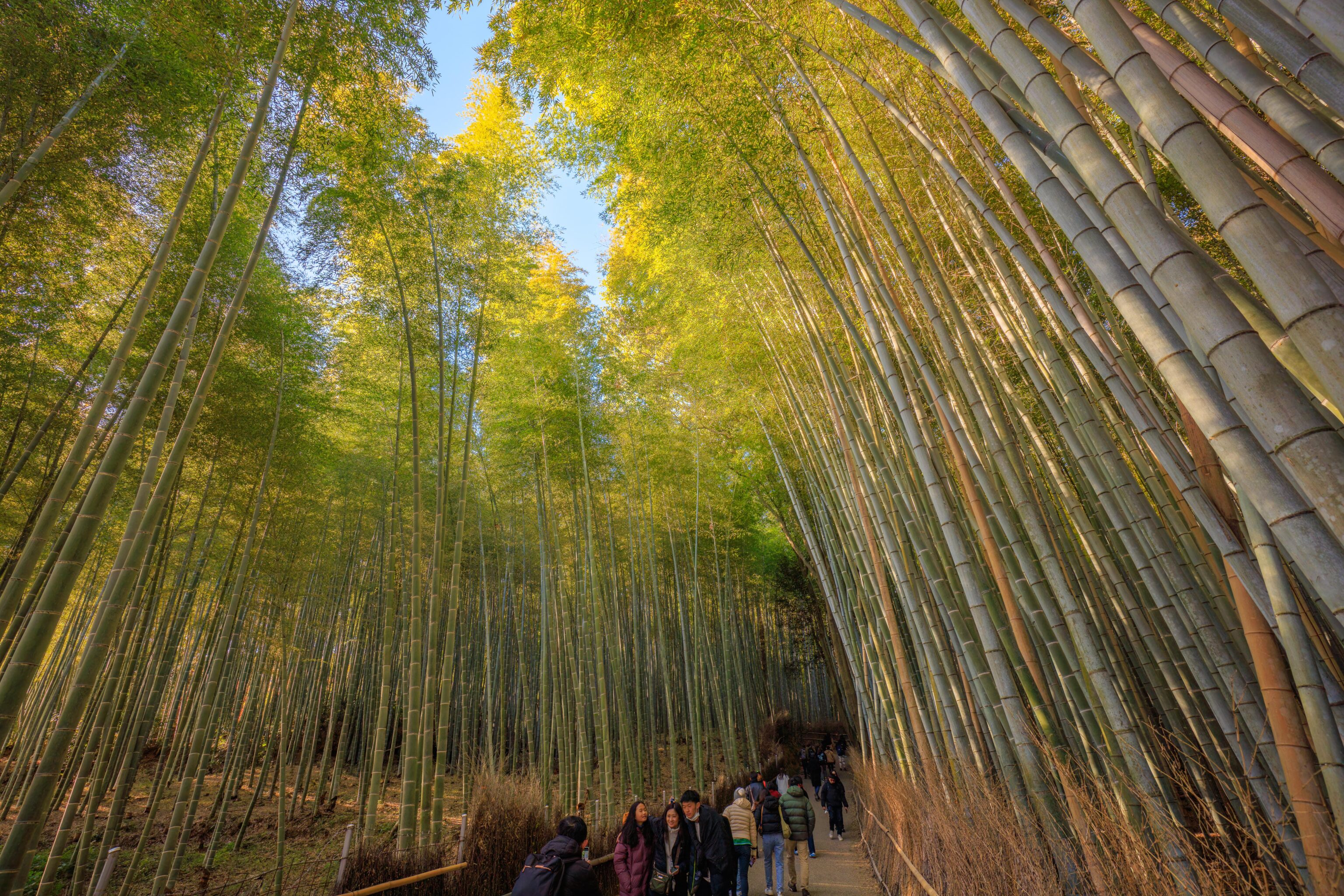
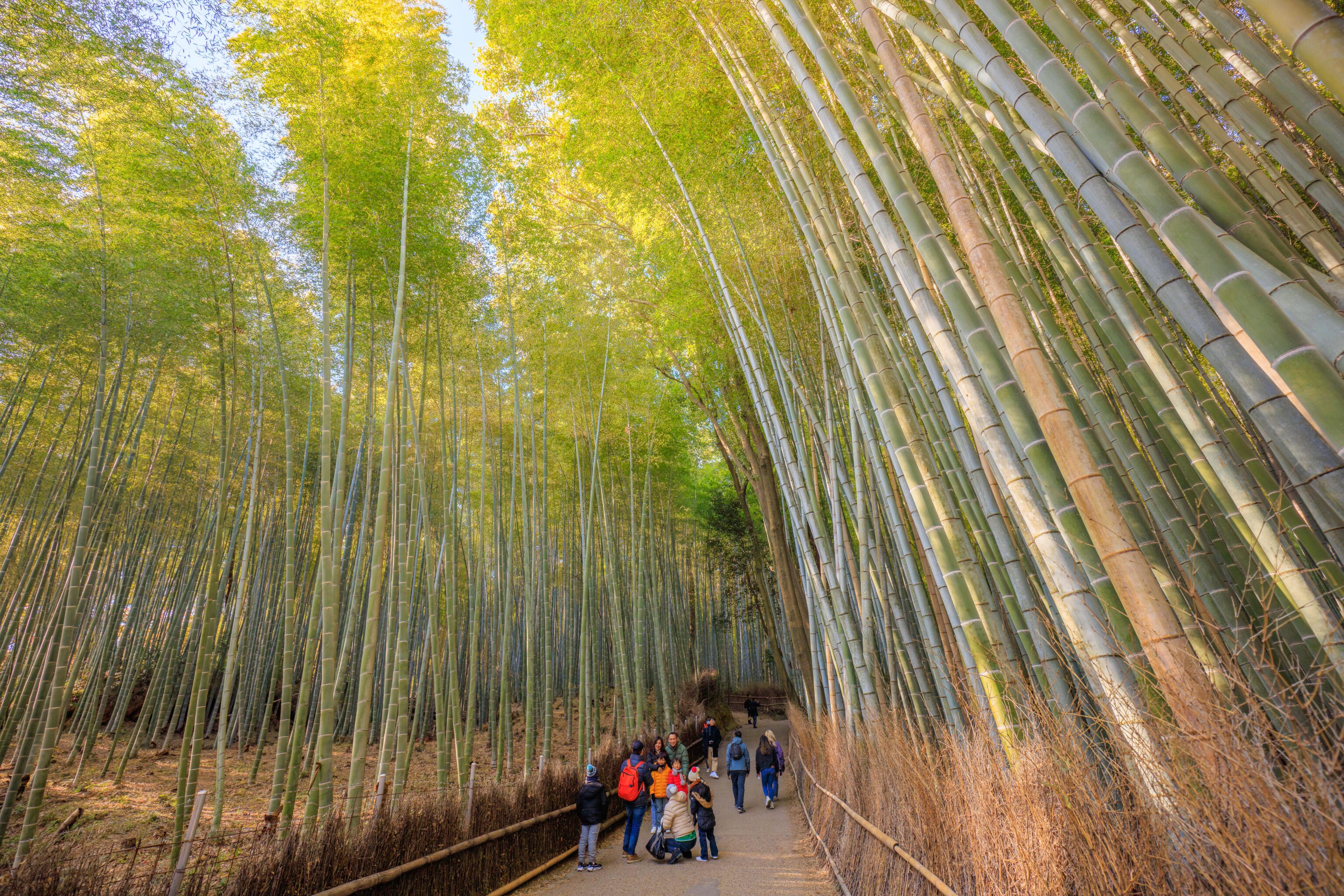
It was somewhat busy as we passed through the bamboo forest at around 9am. We have been here before so didn’t really linger.
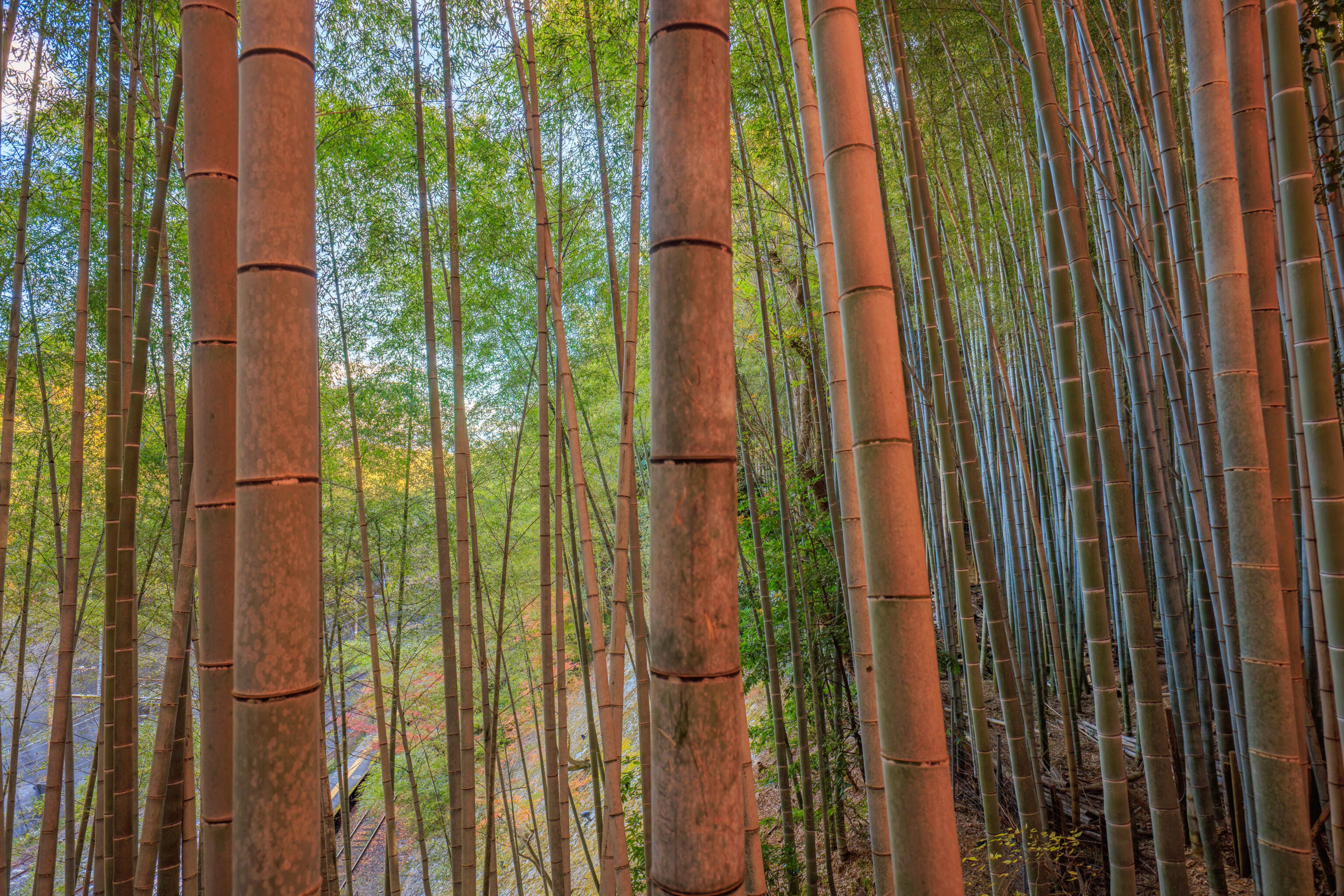
After walking through the forest, the path ends at an intersection. We walked to the north, crossing the railroad tracks below. There is a station below for the Sagano Scenic Railway. It is supposed to be particularly beautiful during the fall season. There is also an evening Light Fantasy Train service where the trees are illuminated. It wasn’t on our agenda for today though. The JR conventional line also runs below, though it does not stop at this station.
Jojakko-ji
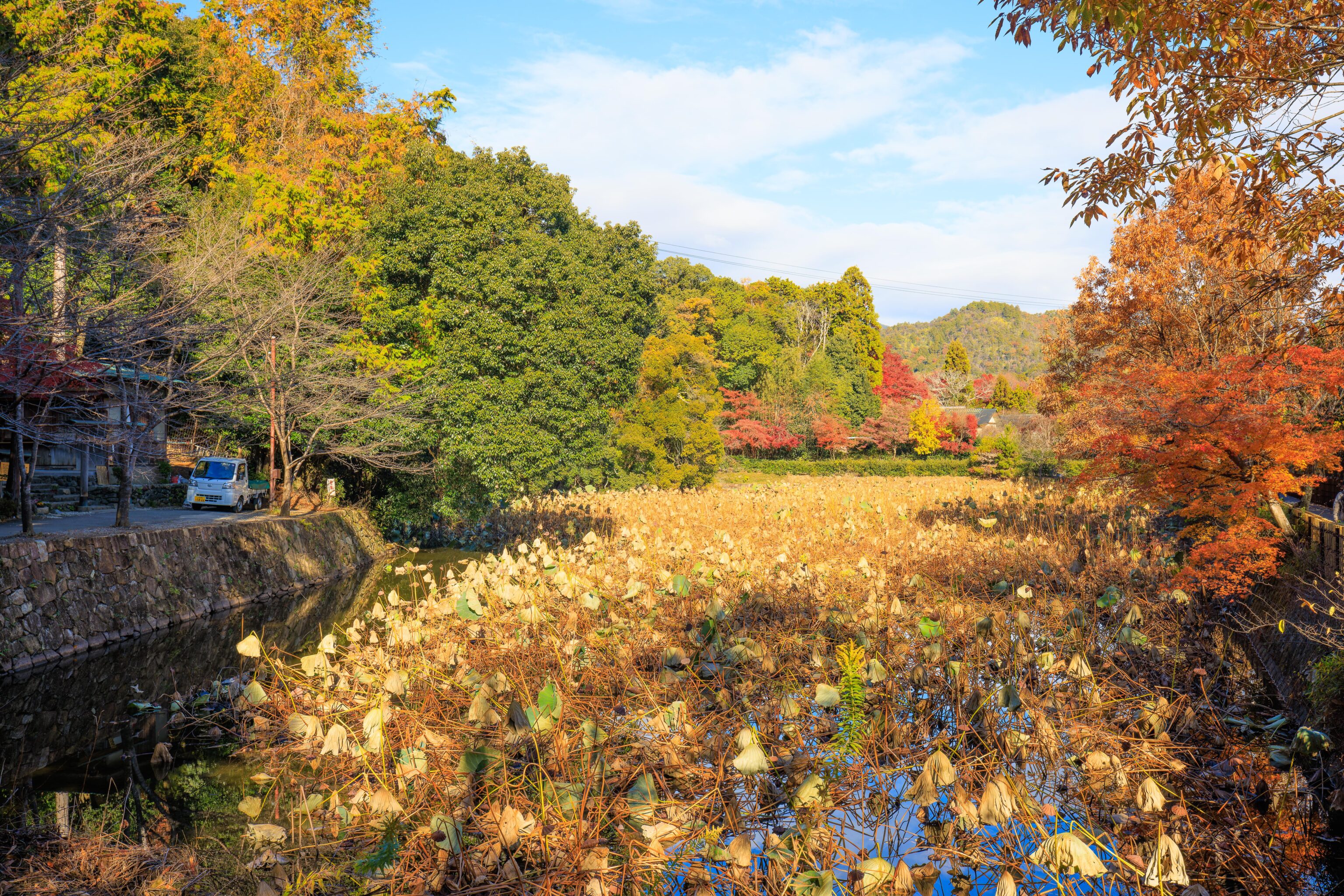
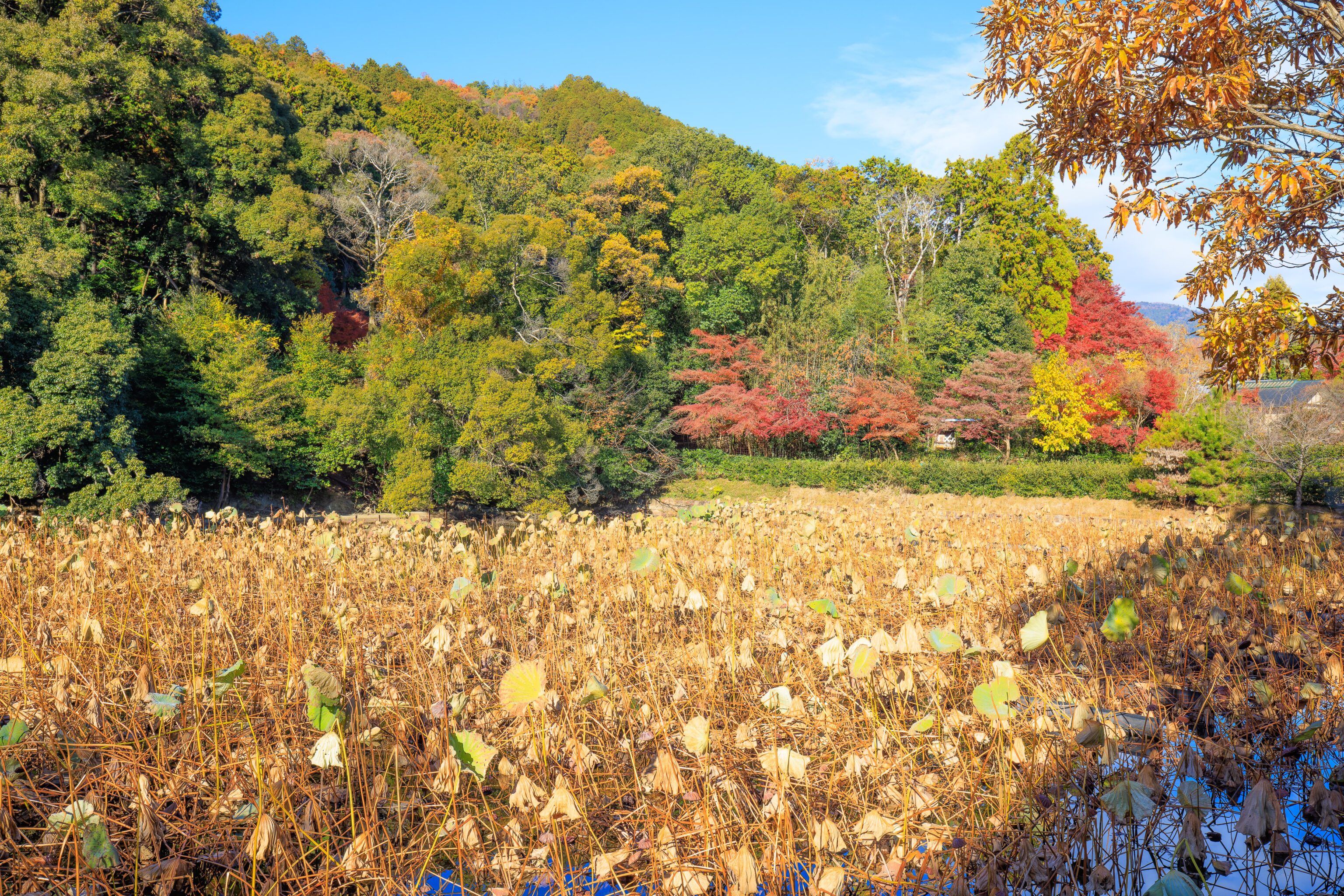
We continued walking to the north, heading downhill and passing by the Ogura Pond. It is filled with lotuses, though their season has ended.
This area is completely new to us. I’ve had many locations here marked on Google Maps for years now but we’ve never visited until today!
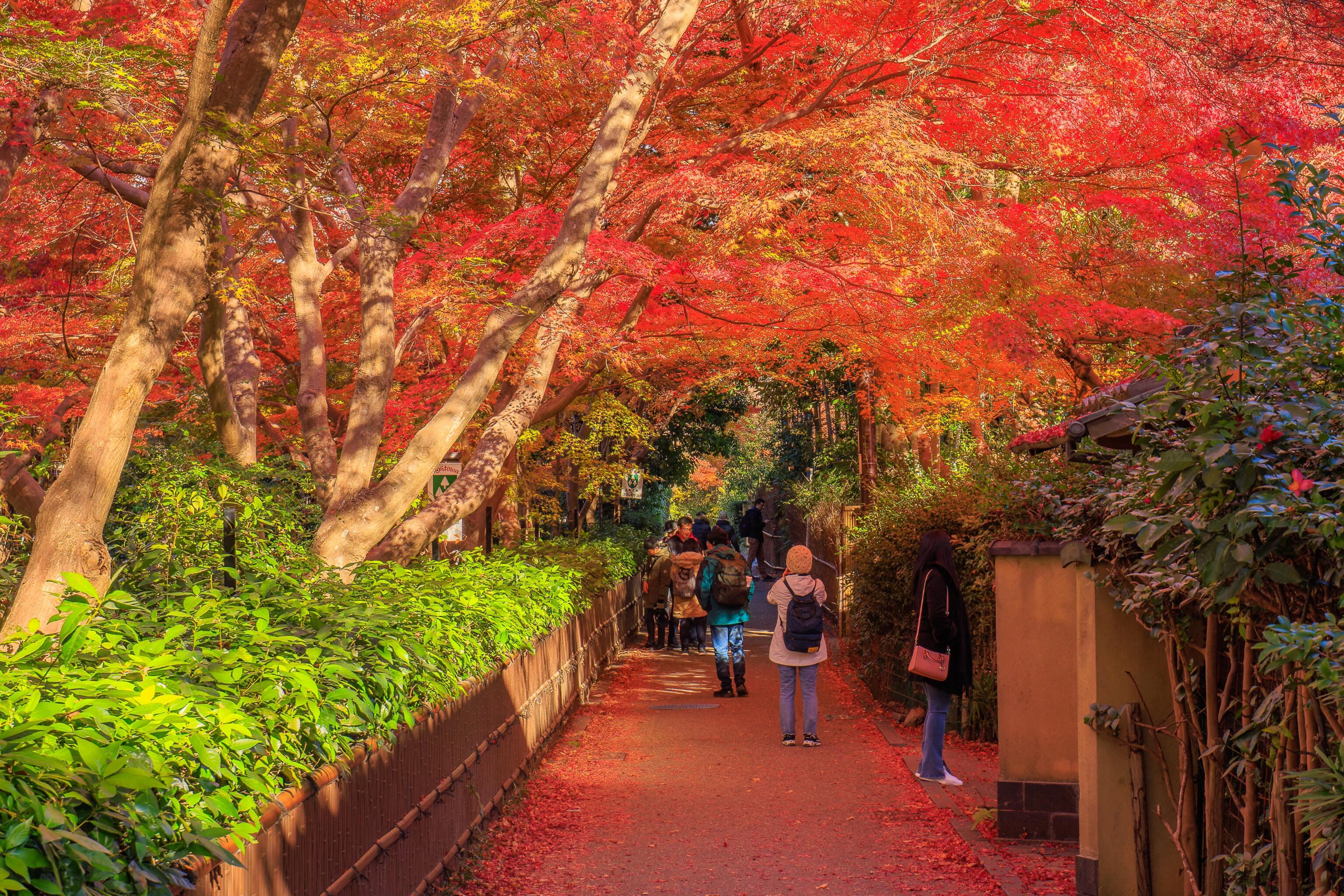
We walked by this rather beautiful scene!
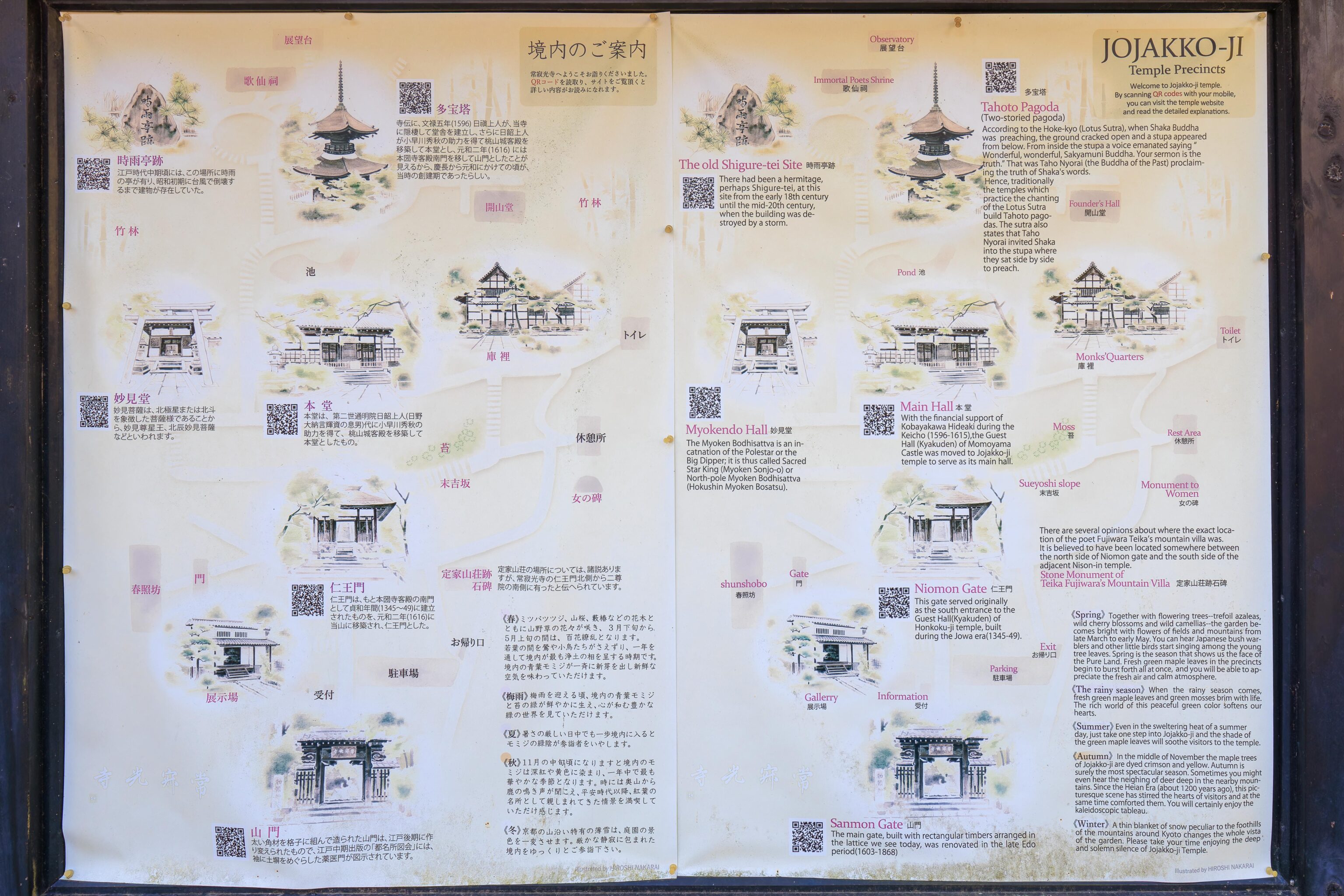
We soon reached the entrance to Jojakko-ji! There was a useful sign with a map along with English and Japanese text.
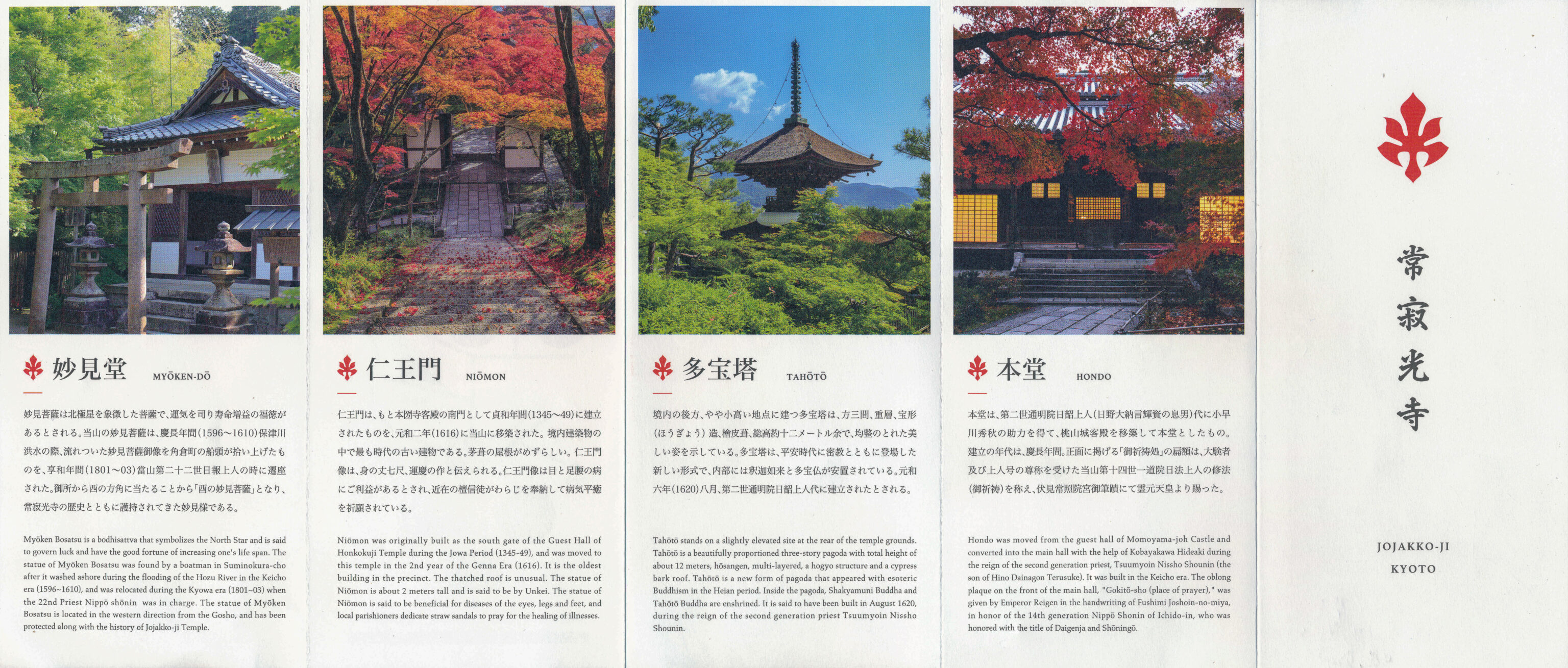
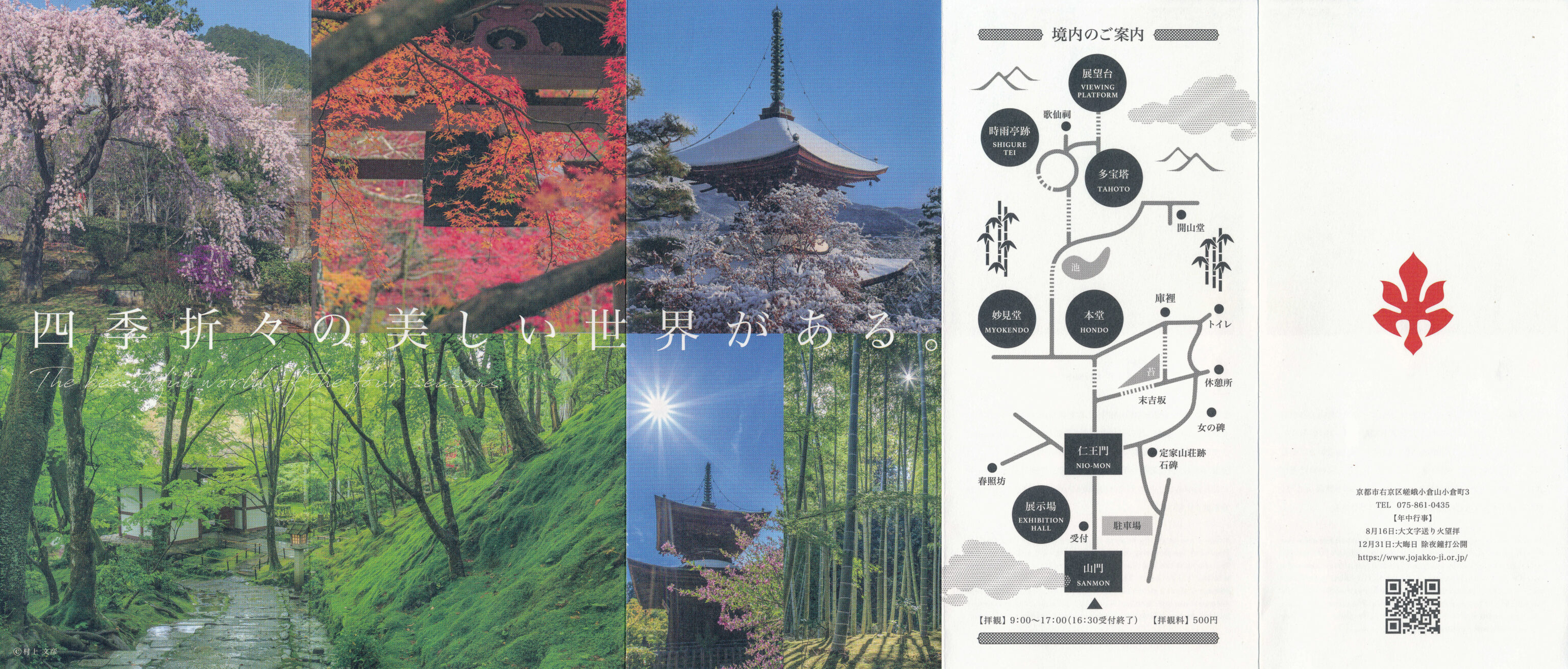
A pamphlet was provided with English and Japanese text. There is also a one panel map though it turns out to be a bit abstract in how the paths are drawn. Only the major landmarks are labelled in English. It would have been nice to also translate the minor points since most of the pamphlet is bilingual already!
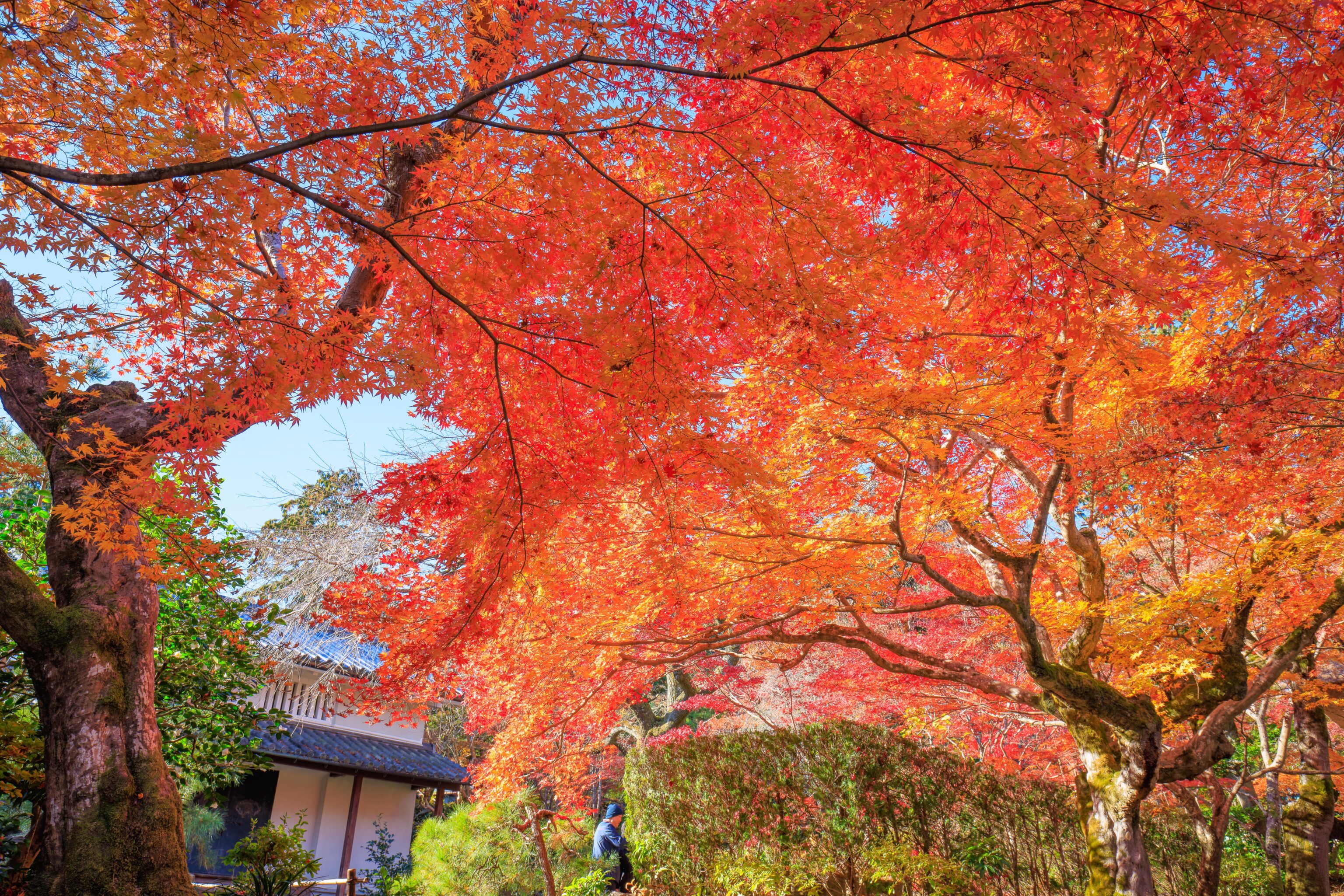
The entrance path to the temple is supposed to be beautiful in the fall, and indeed it was!
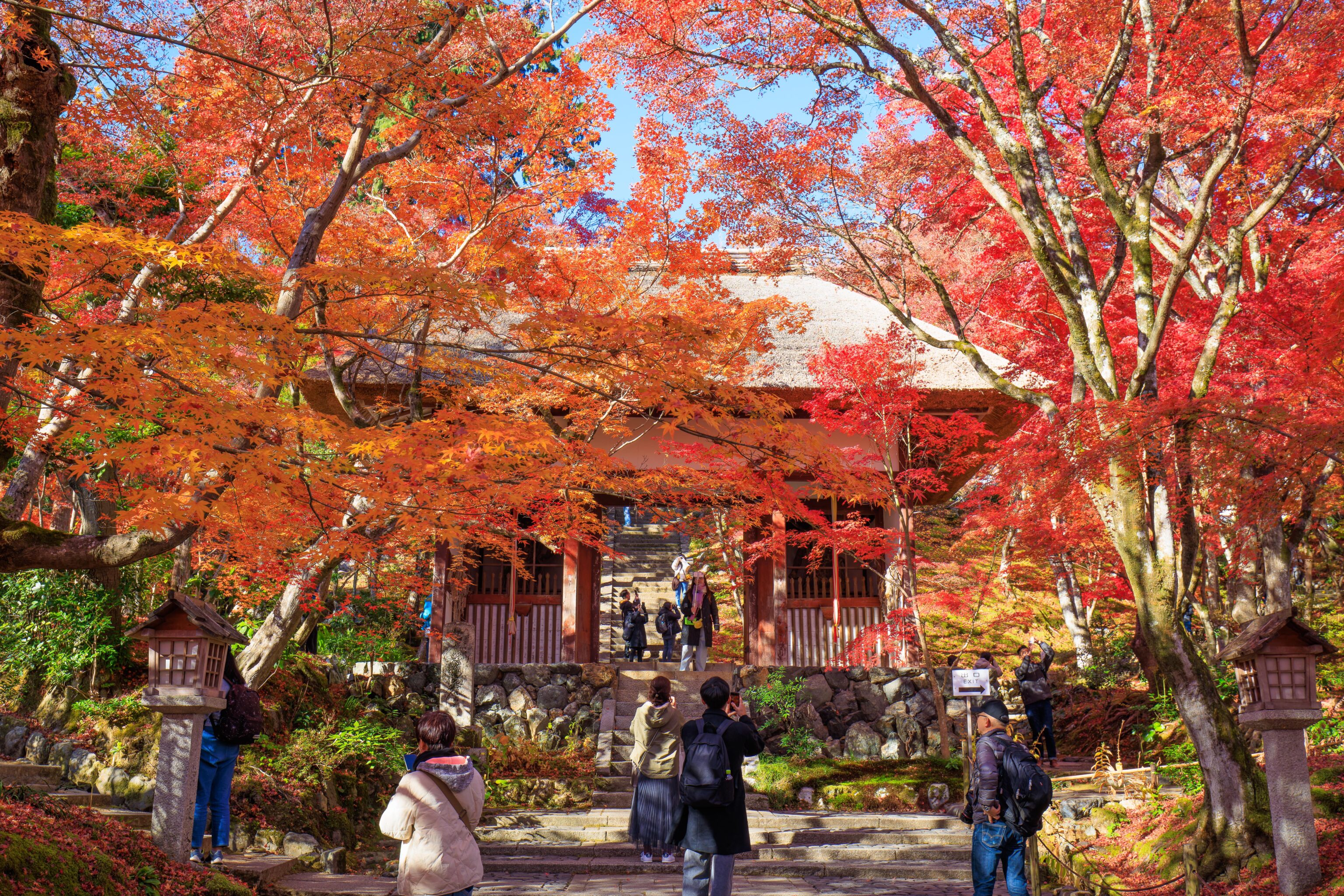
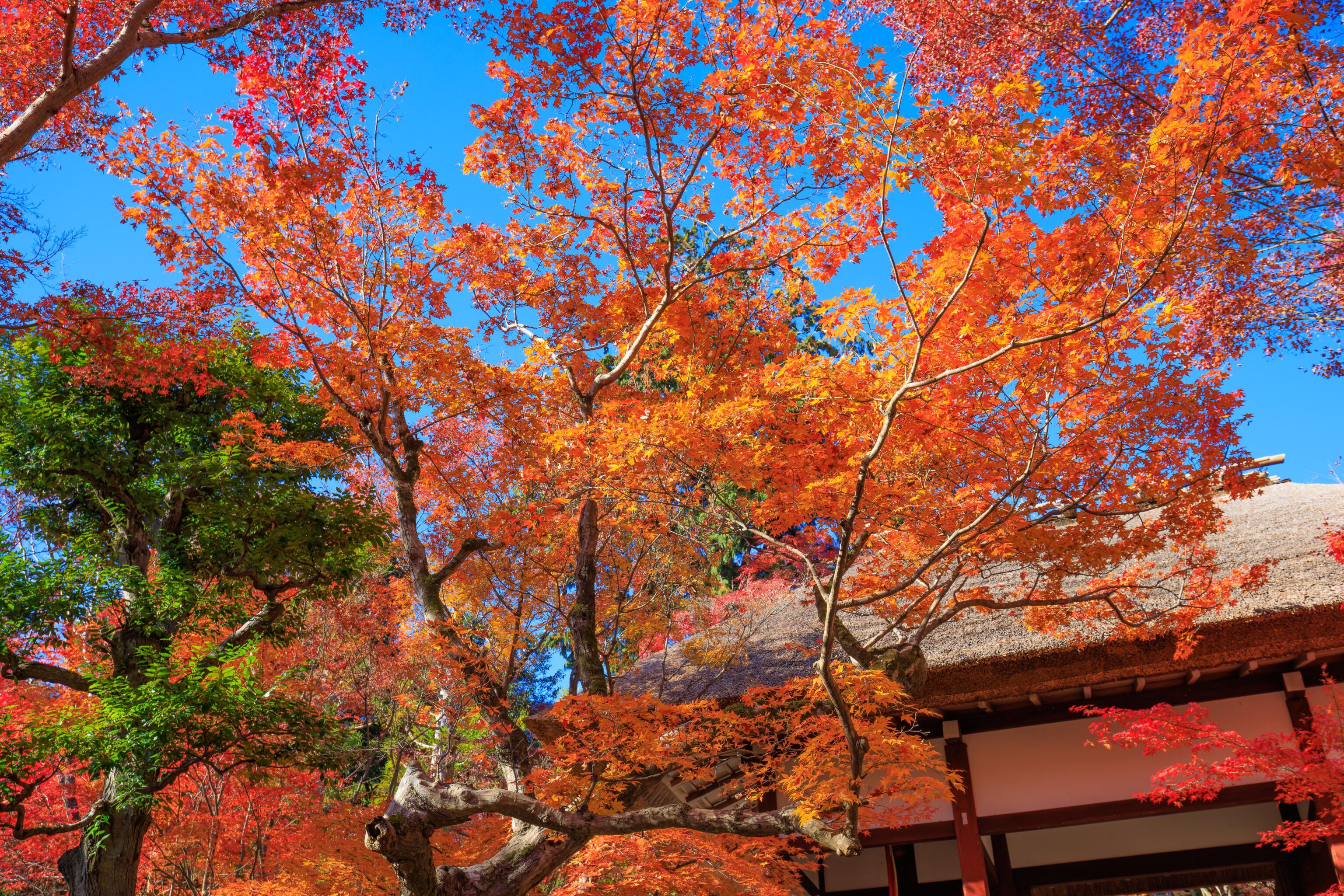
We passed through the Niomon. It was somewhat busy as everyone was enjoying the fall colors.
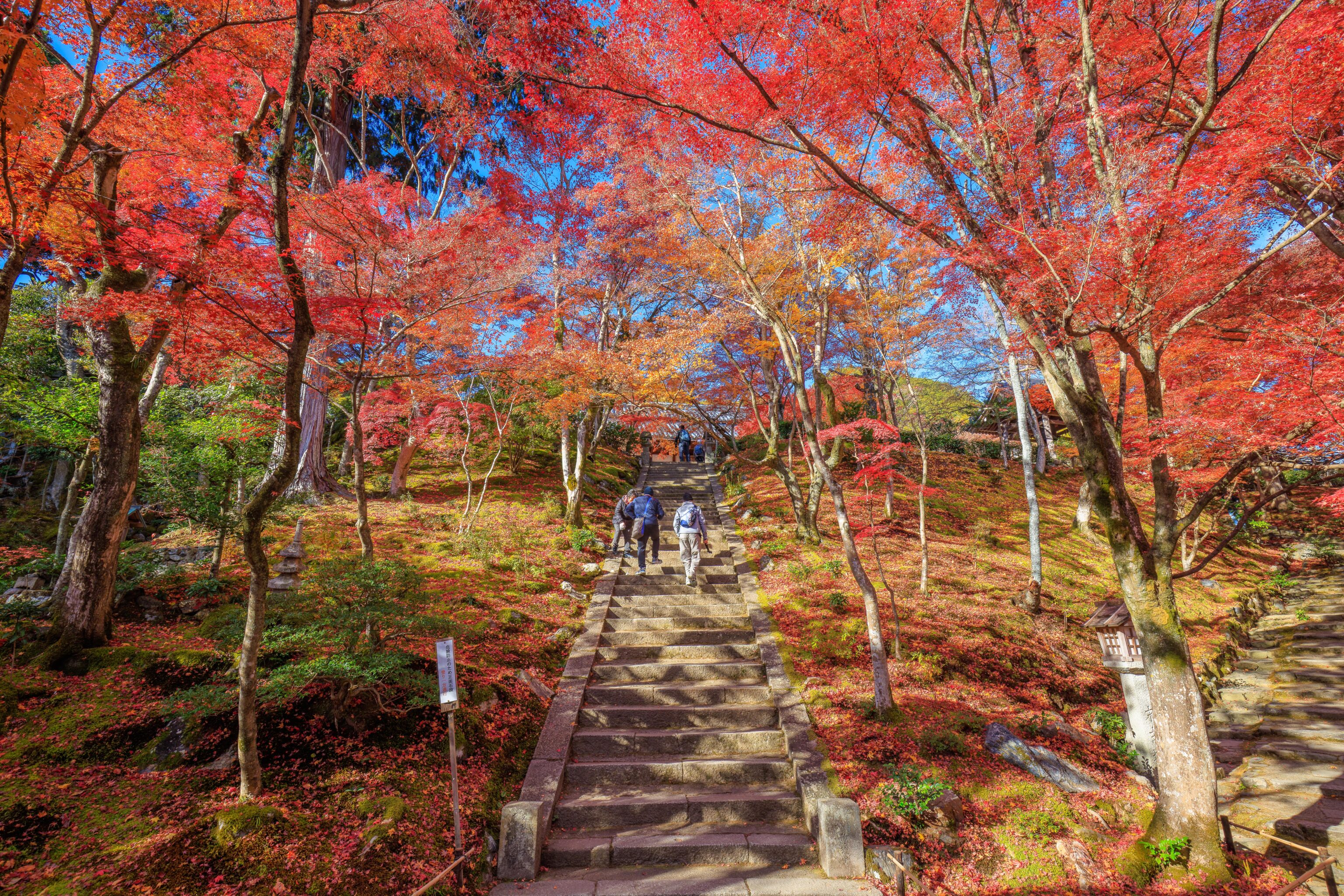
Jojakko-ji is on the side of Kyoto’s western mountains. So, lots of stairs!
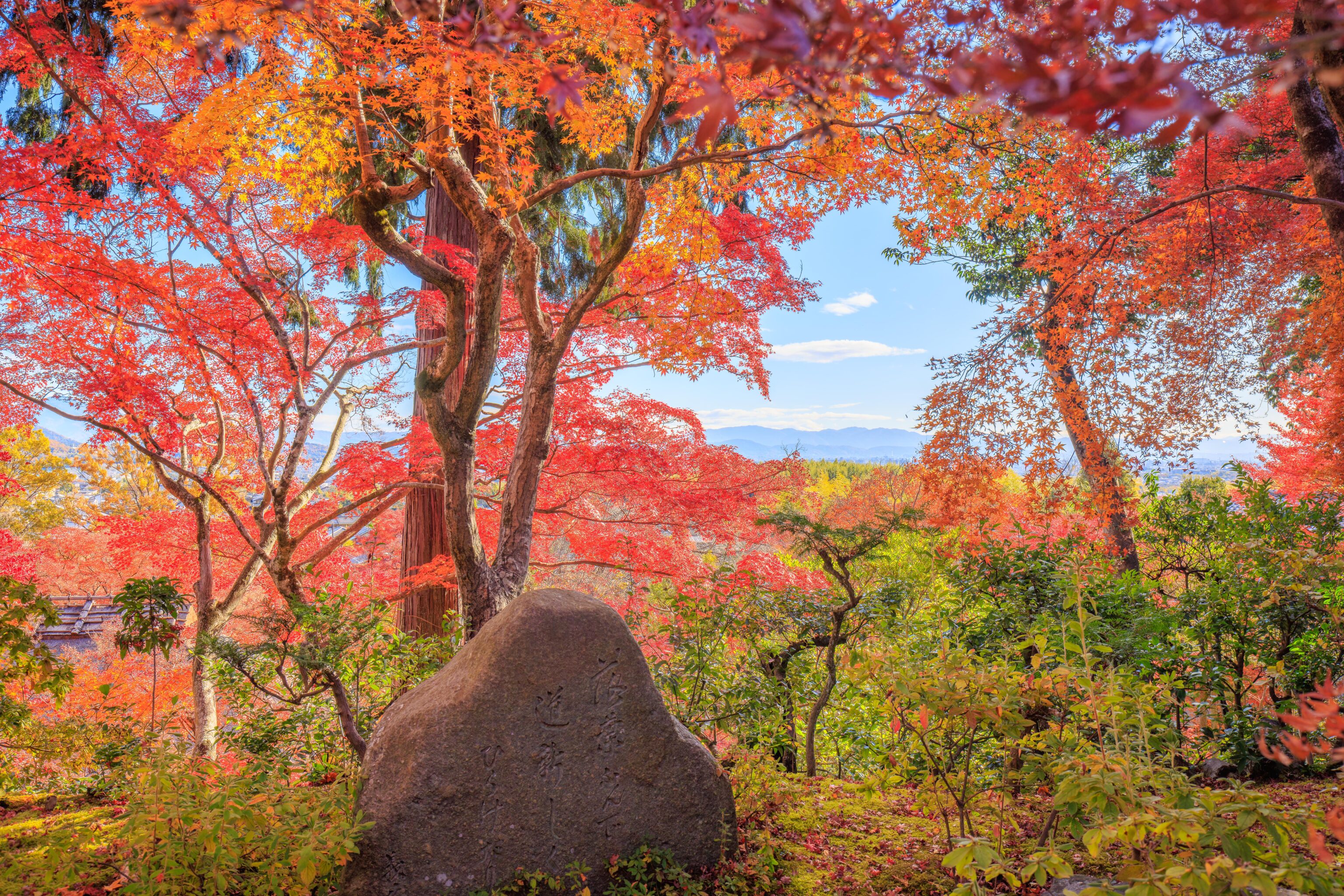
Quite a bit of varying types of foliage! The Kyoto Tower is actually visible here in the distance, though it requires a bit of careful examination to find!
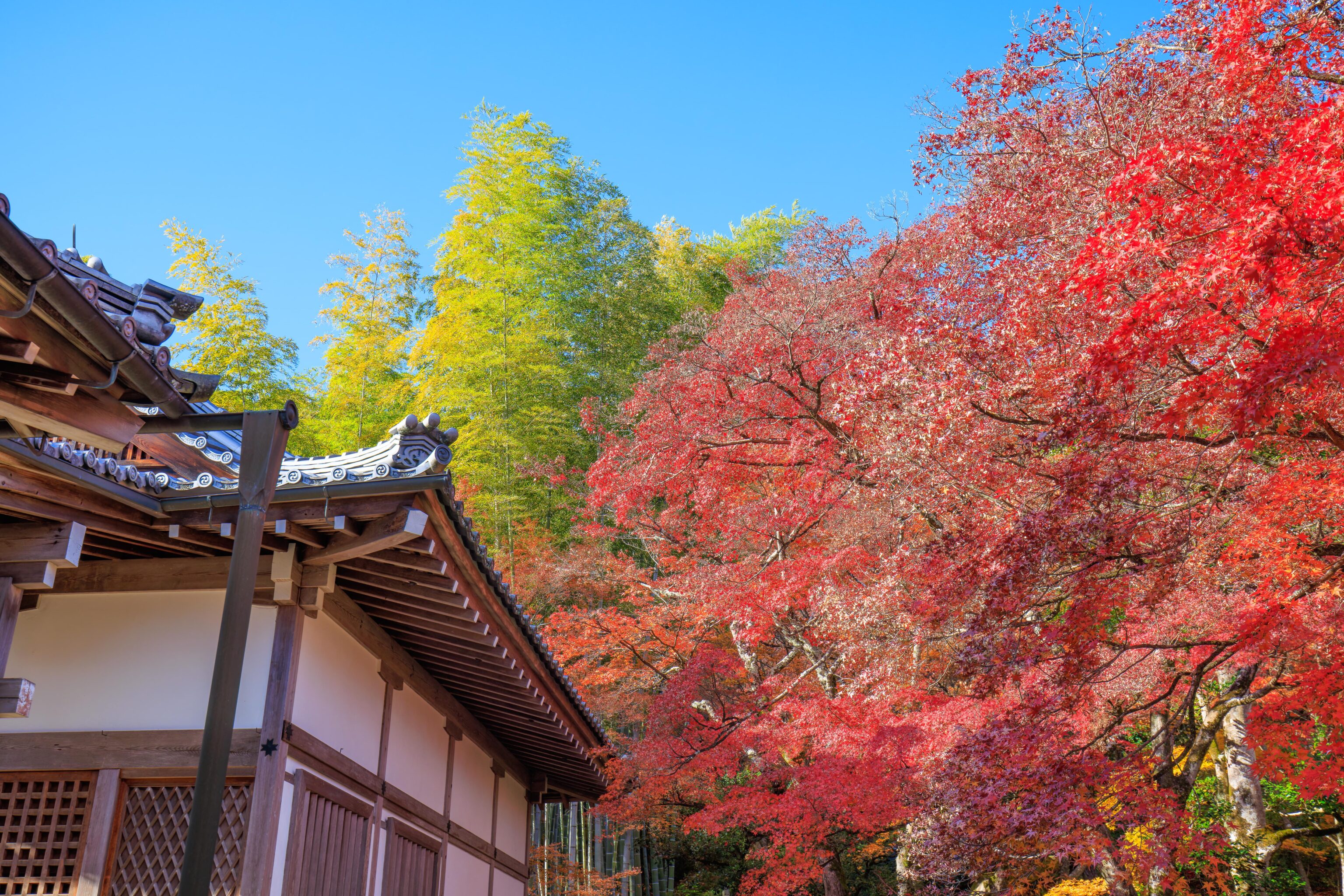
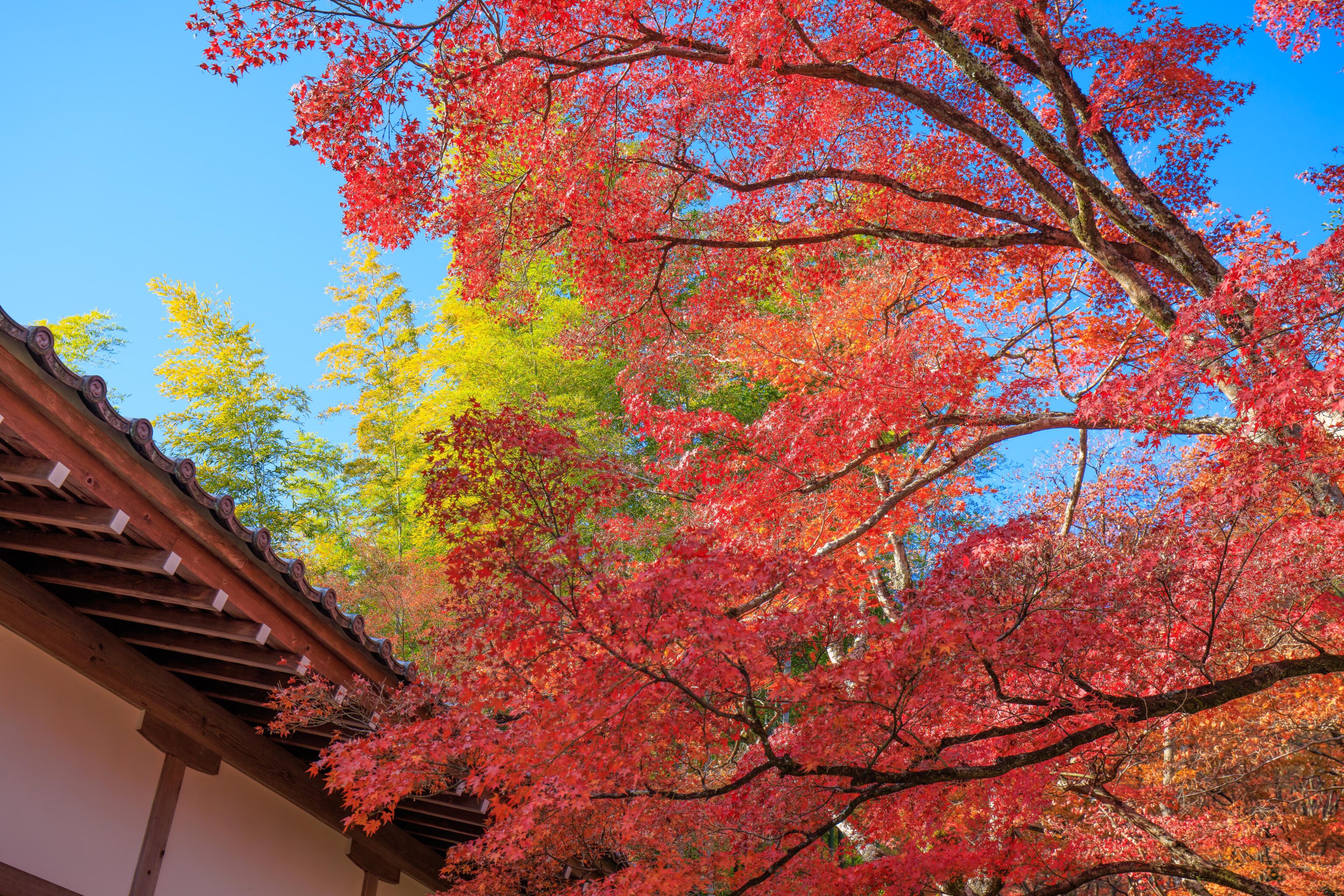
We passed by the Hondo, or Main Hall, as we continued walking upwards.
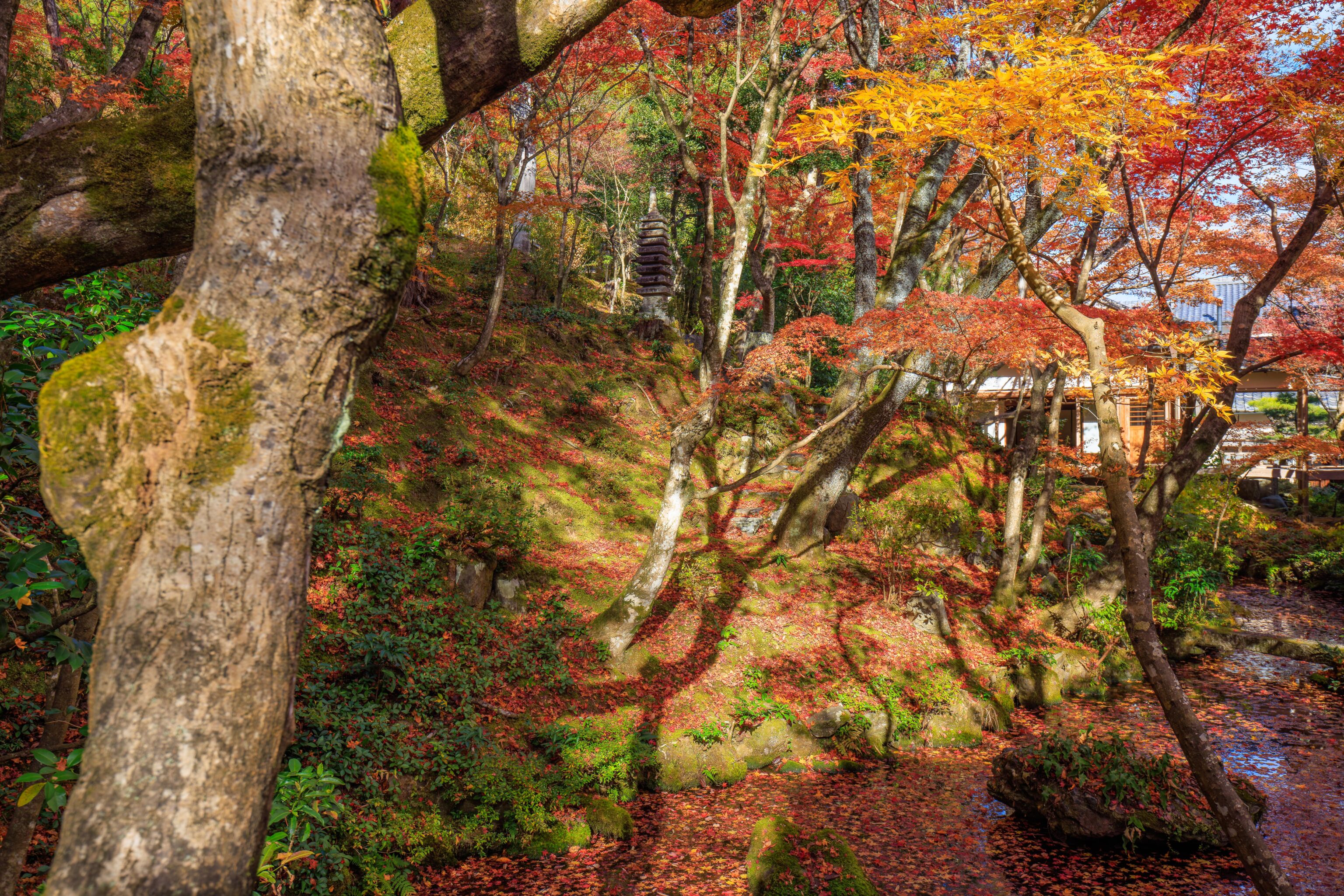
A mossy section of hillside as we walked past a pond beyond the Hondo.
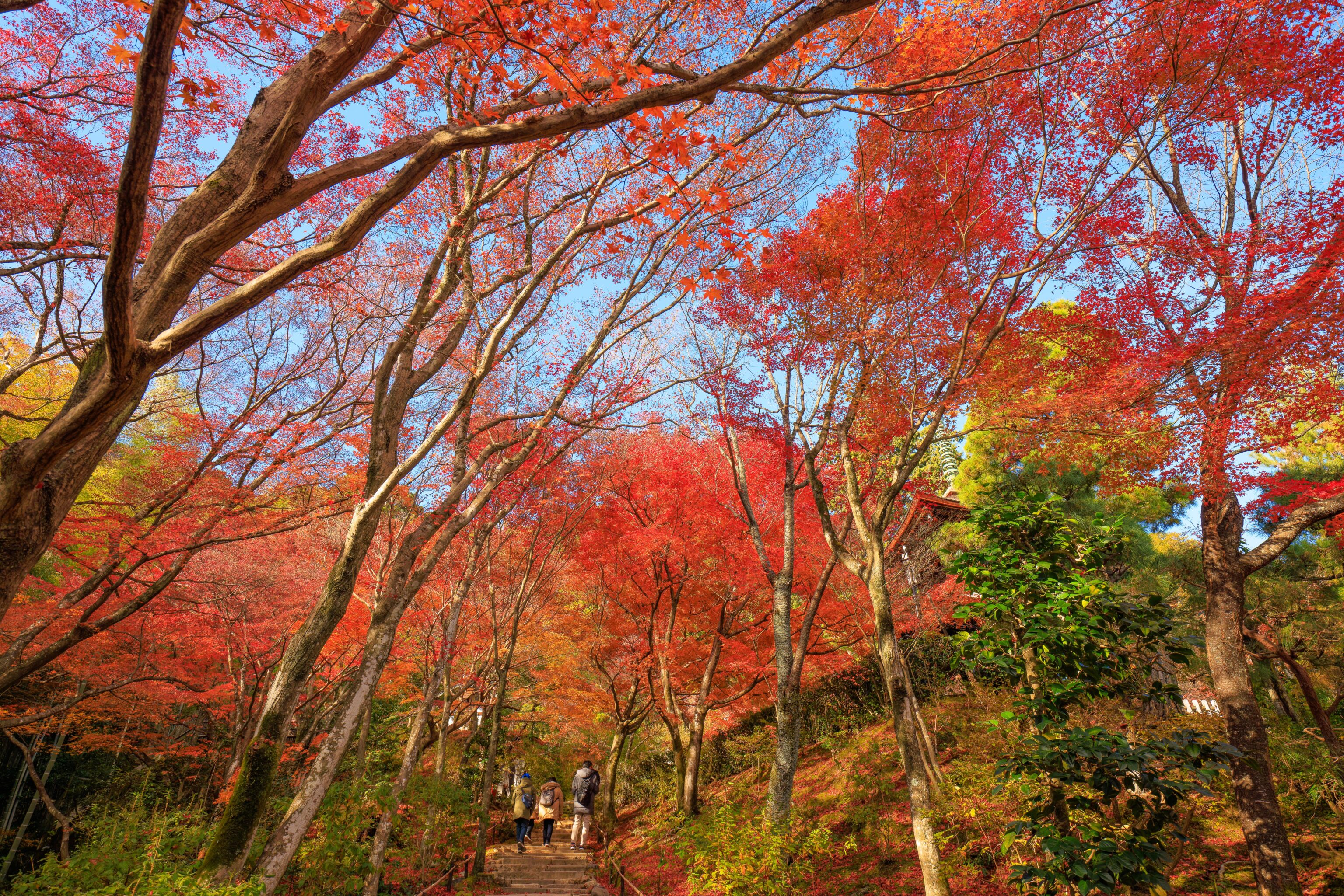
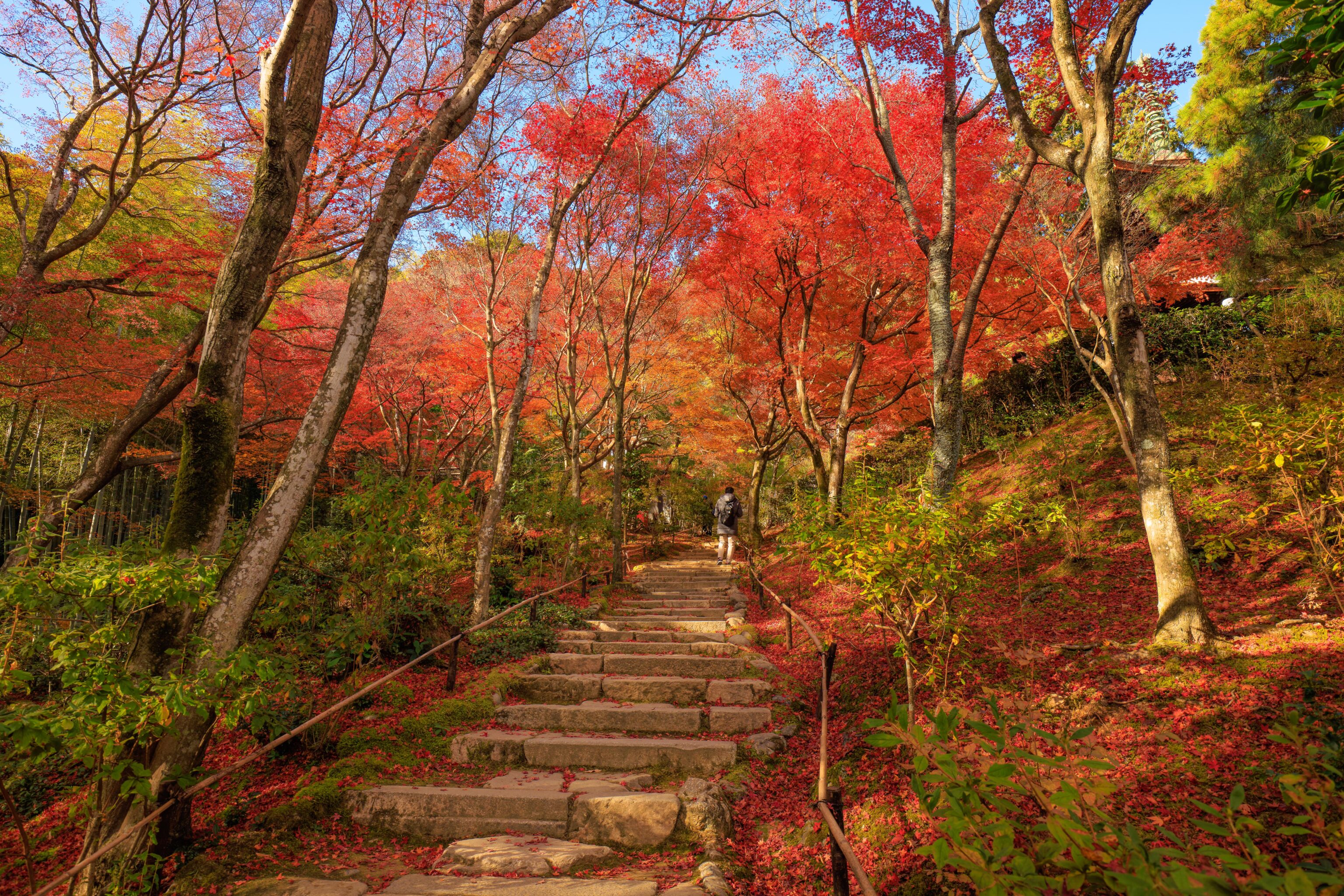
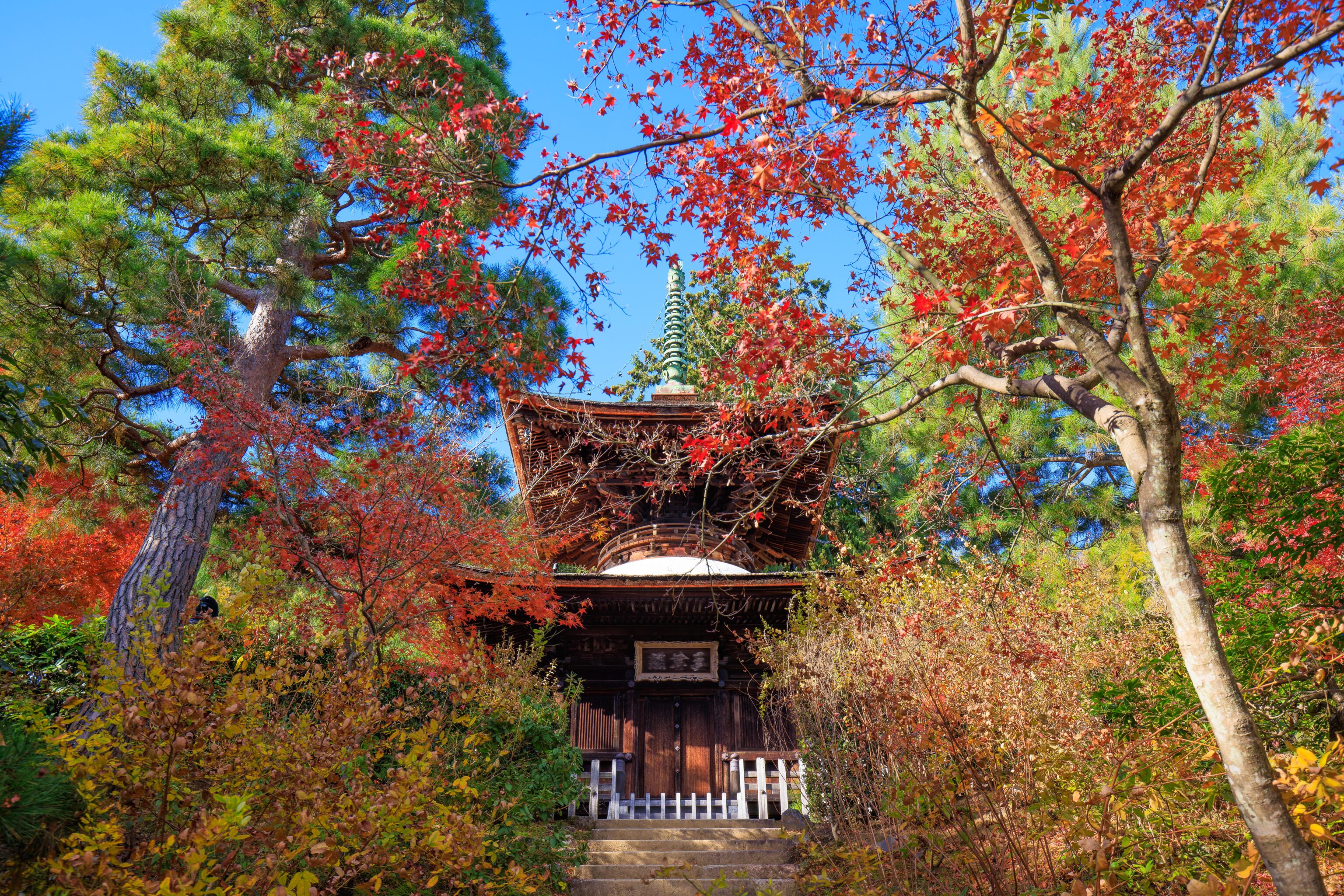
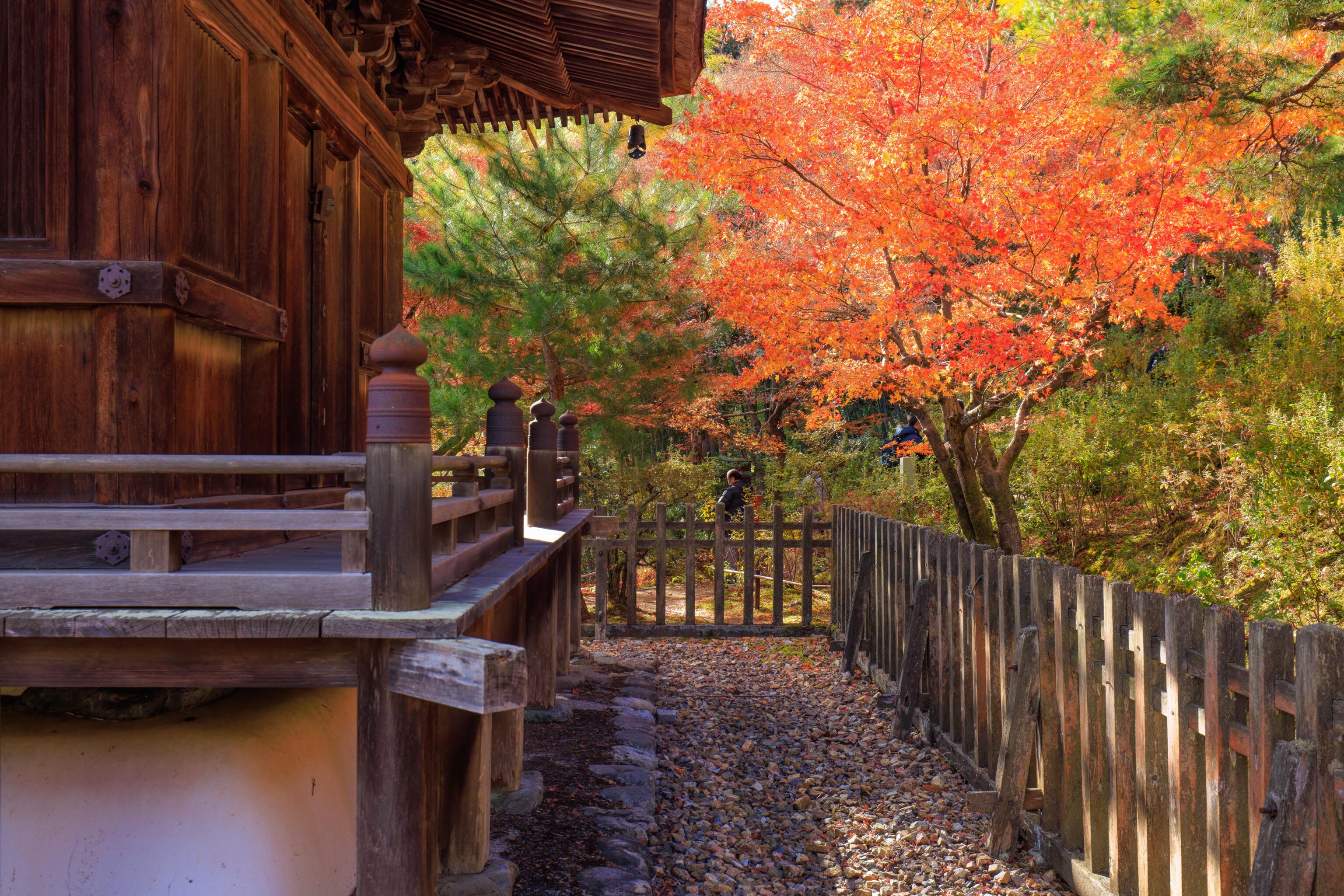
We choose a path that led up to the base of the Tahoto, the temple’s three story pagoda.
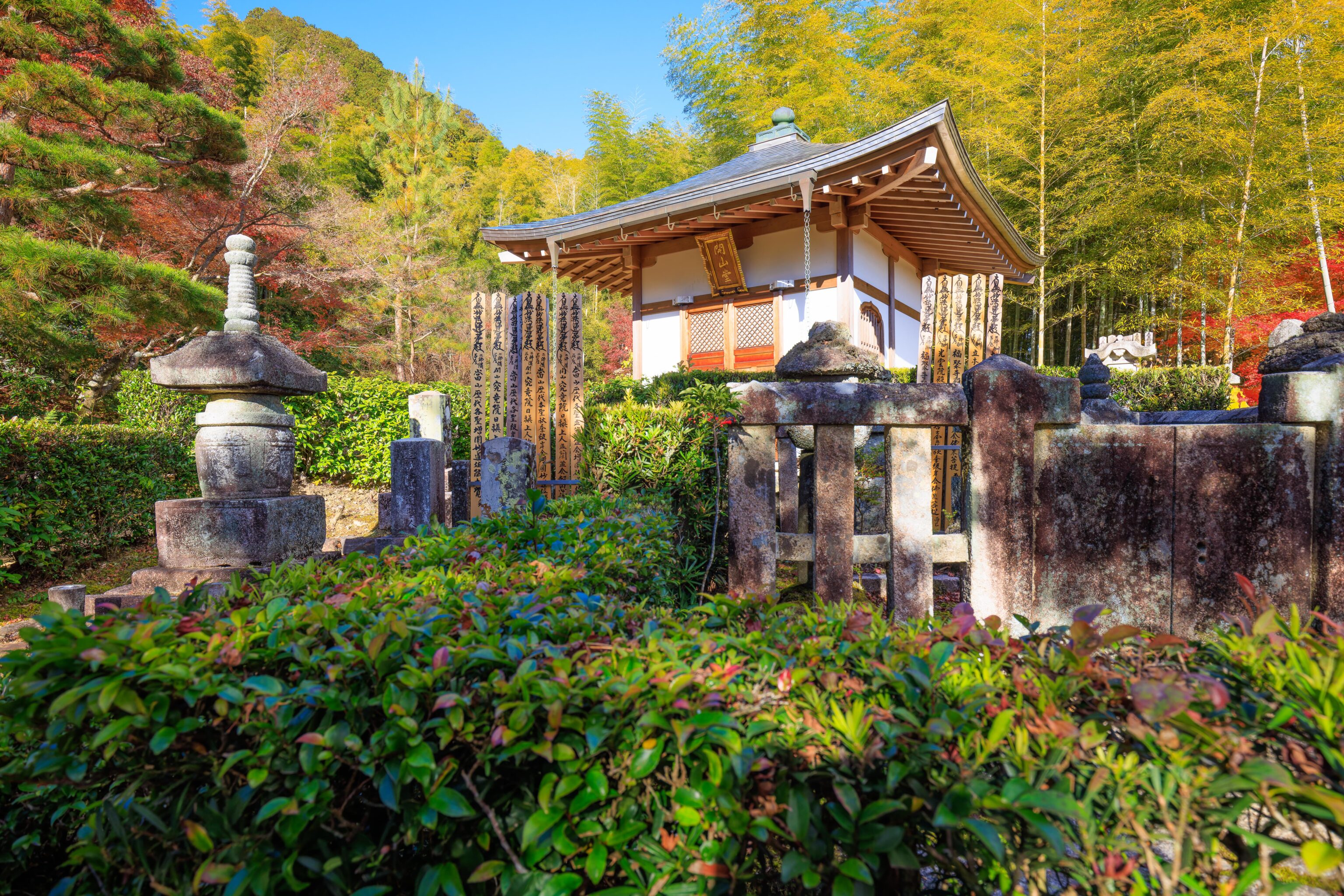
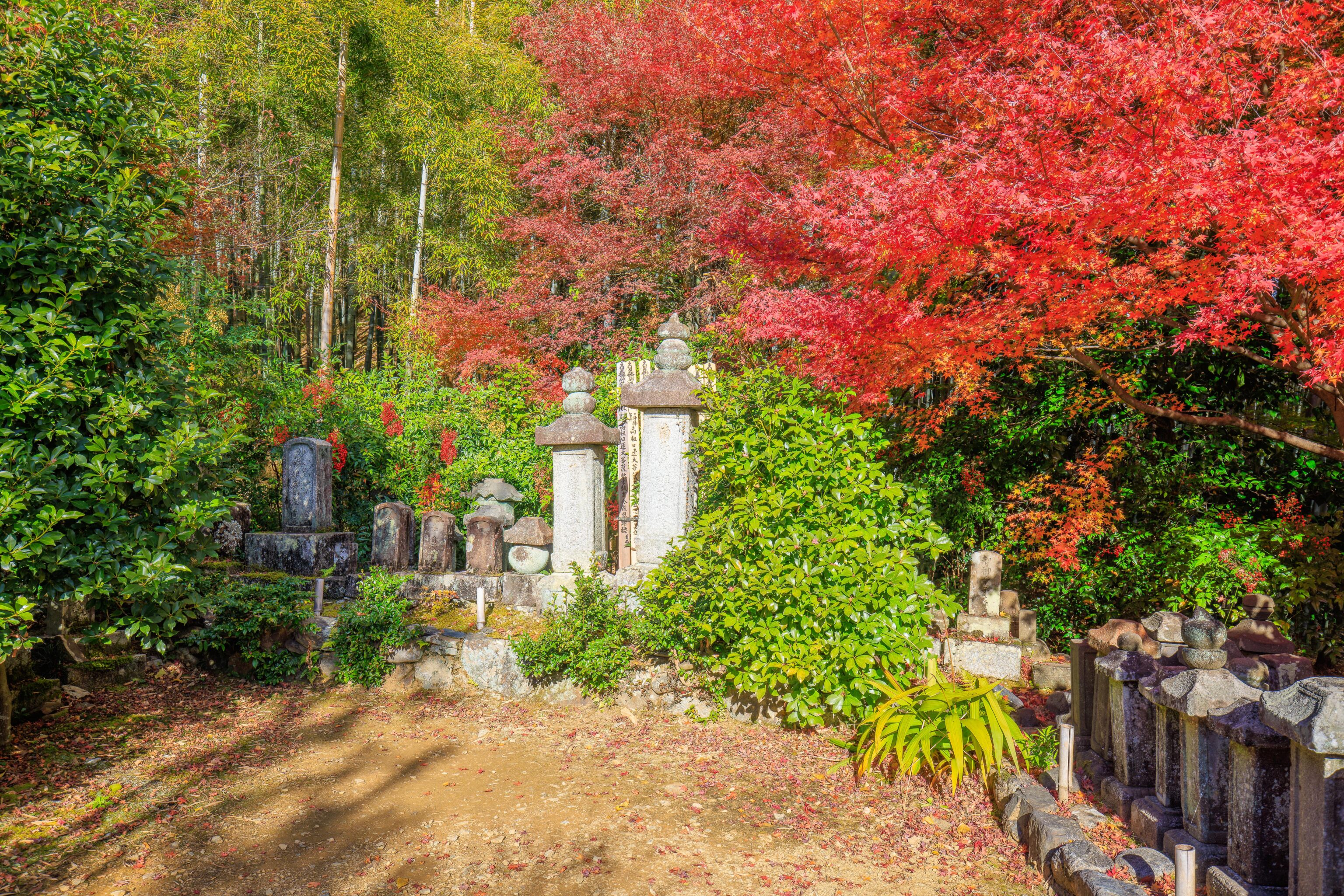
We briefly explored the area around the pagoda. There was a small building in a tiny cemetery just to the north.
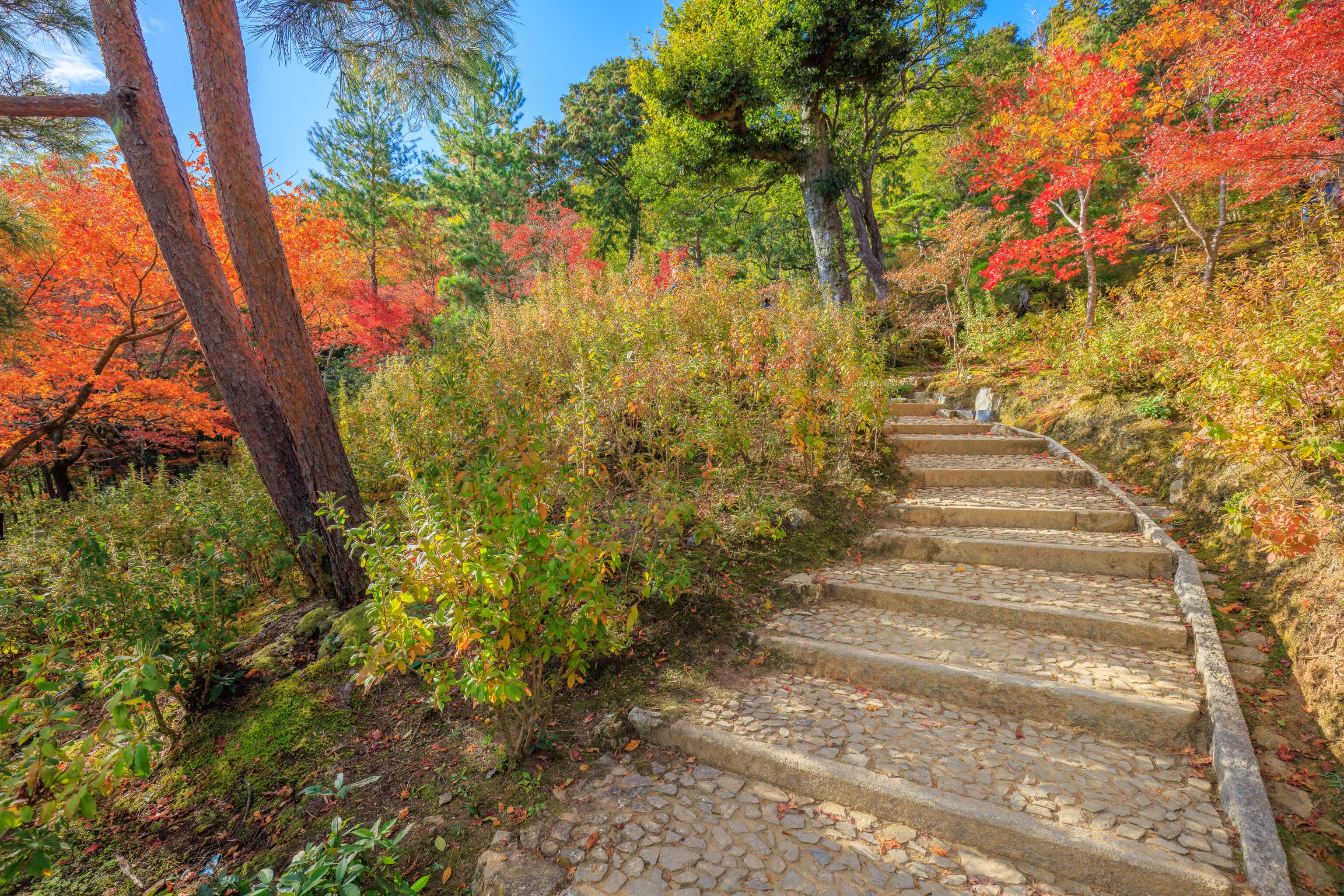
Up once again!
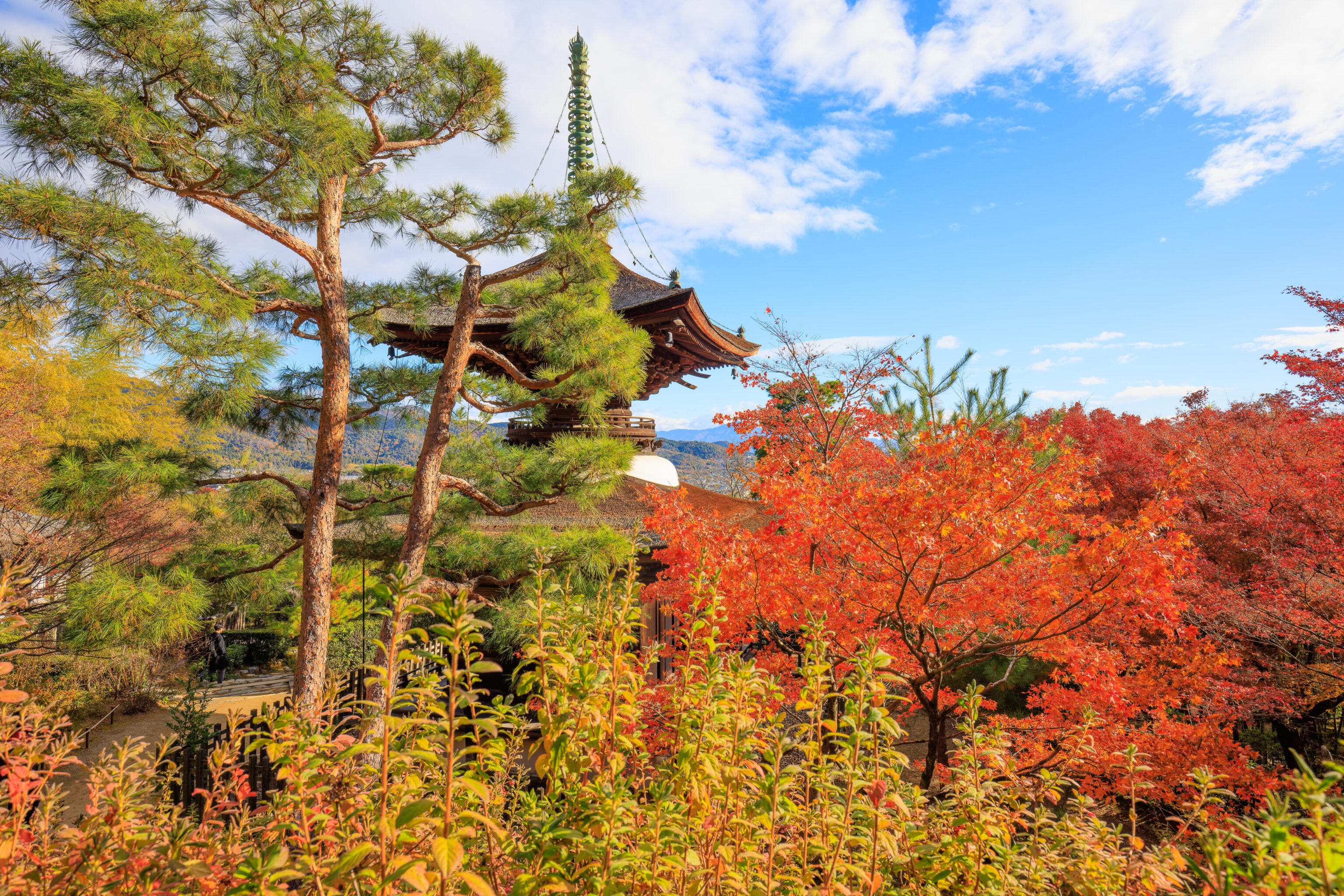
We passed by this obscured view of the pagoda, now partly below us.
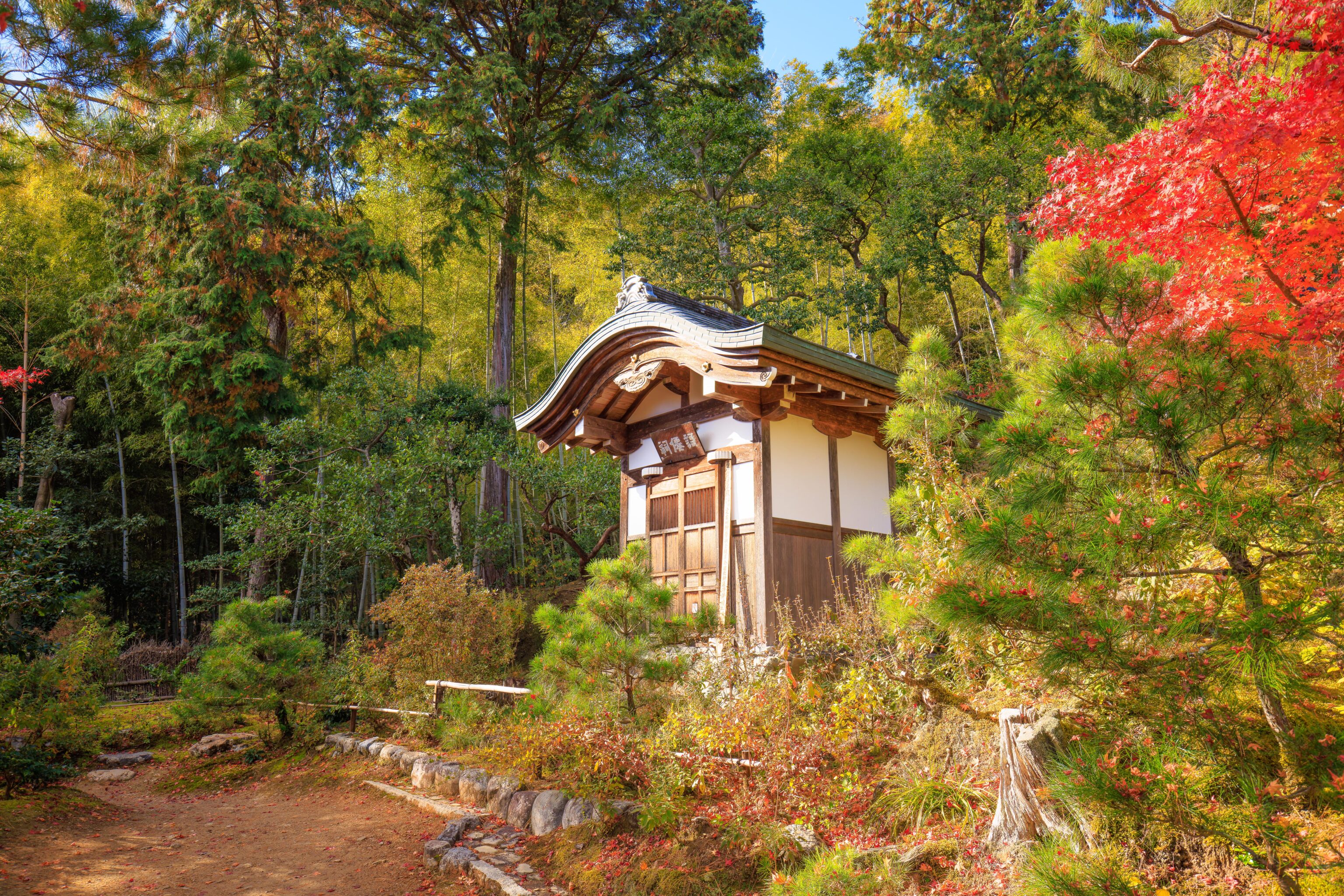
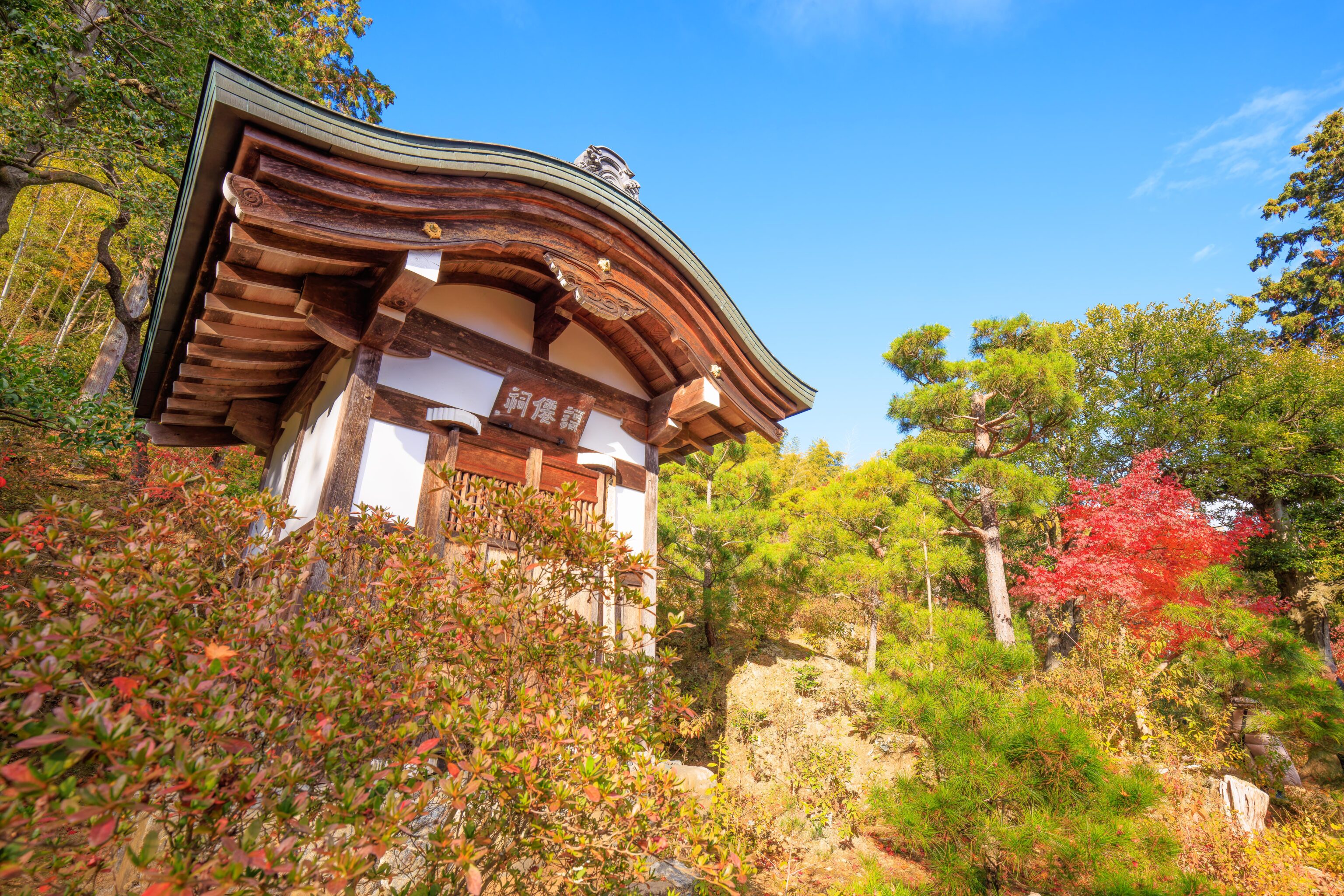
This small building seems to be the Immortal Poets Shrine. The temple’s website has a bit of background, unfortunately presented in a low resolution video1:
1890 The Immortal Poets Shrine that existed before the temple's establishment and was moved to the summit of the hill during the founder's time was rebuilt. Tomioka Tessai wrote the name plaque for it. This shrine was again rebuilt in 1994. Inside are statues (Muromachi period) of Fujiwara Teika and Ietaka in seated poses.
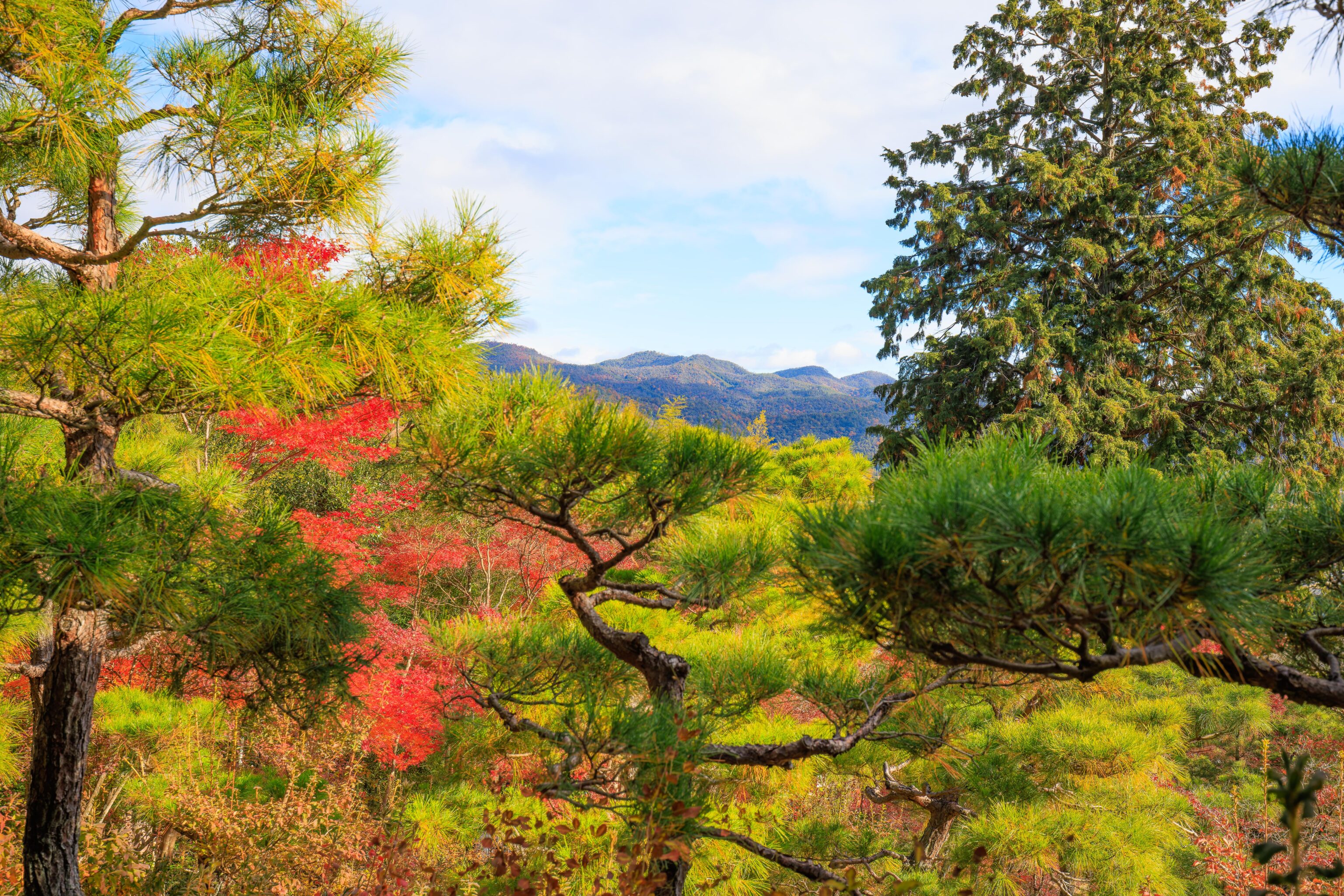
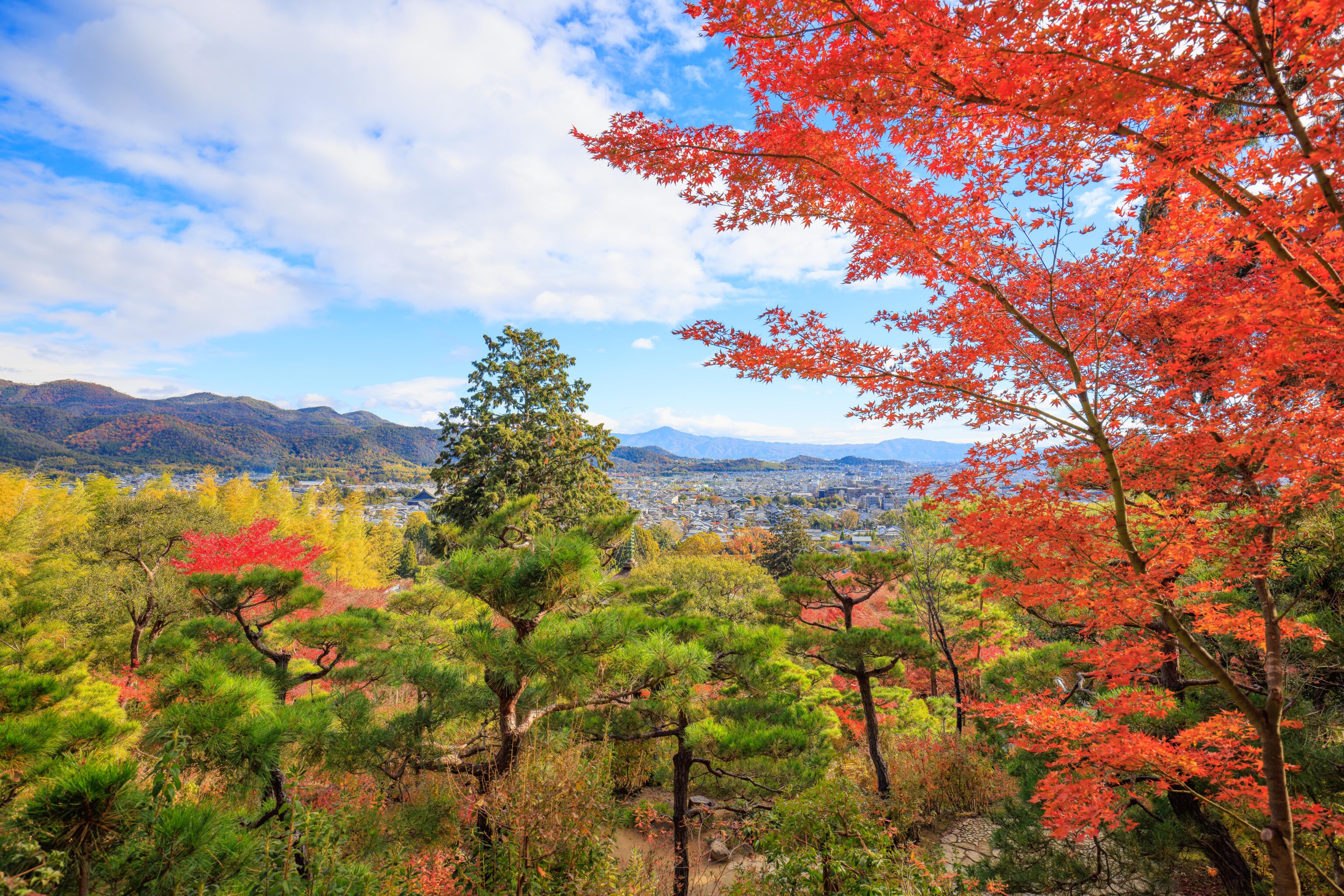
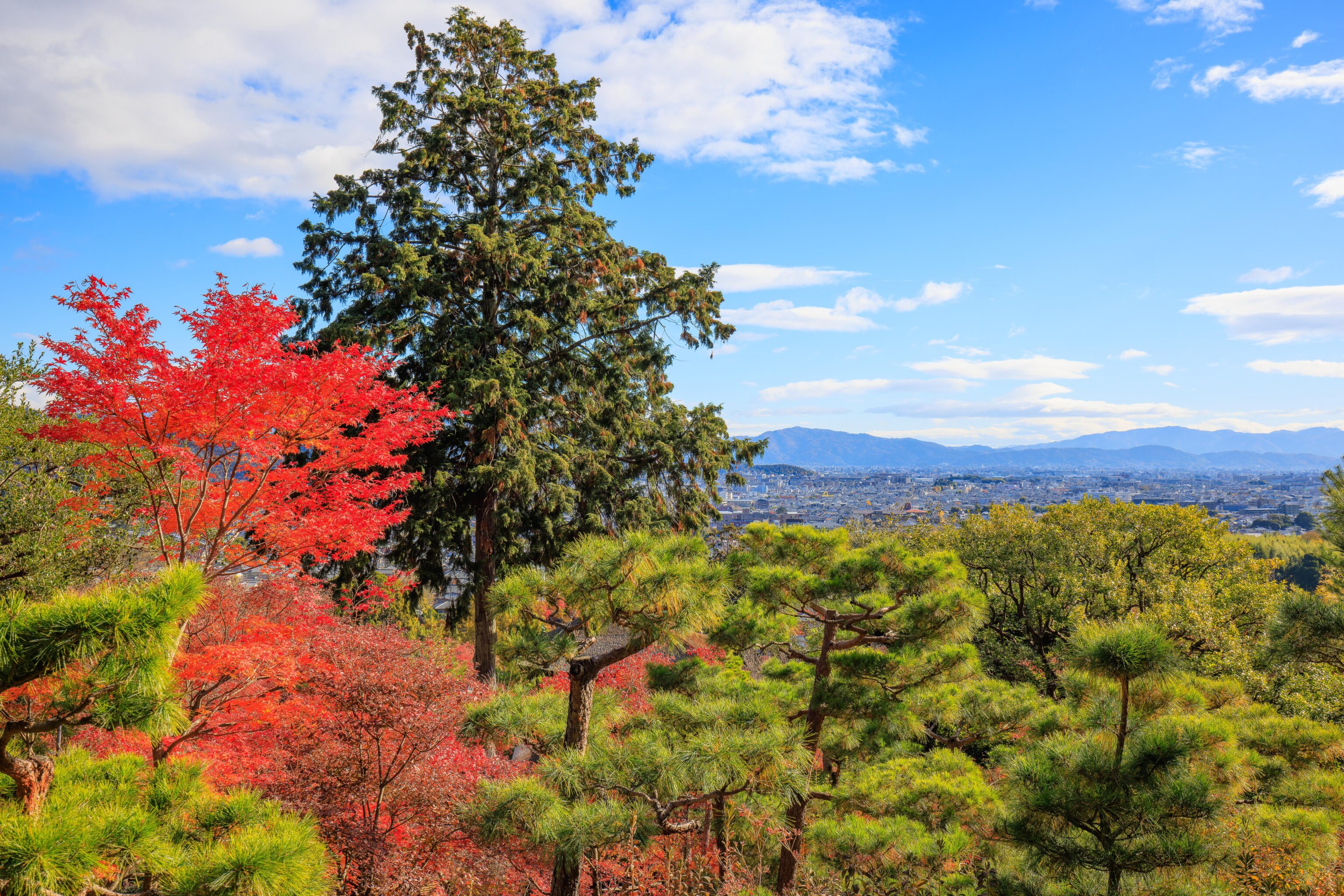
We continued up above the little shrine, reaching the very top of the path. We enjoyed the viewing area for a bit before heading back down.
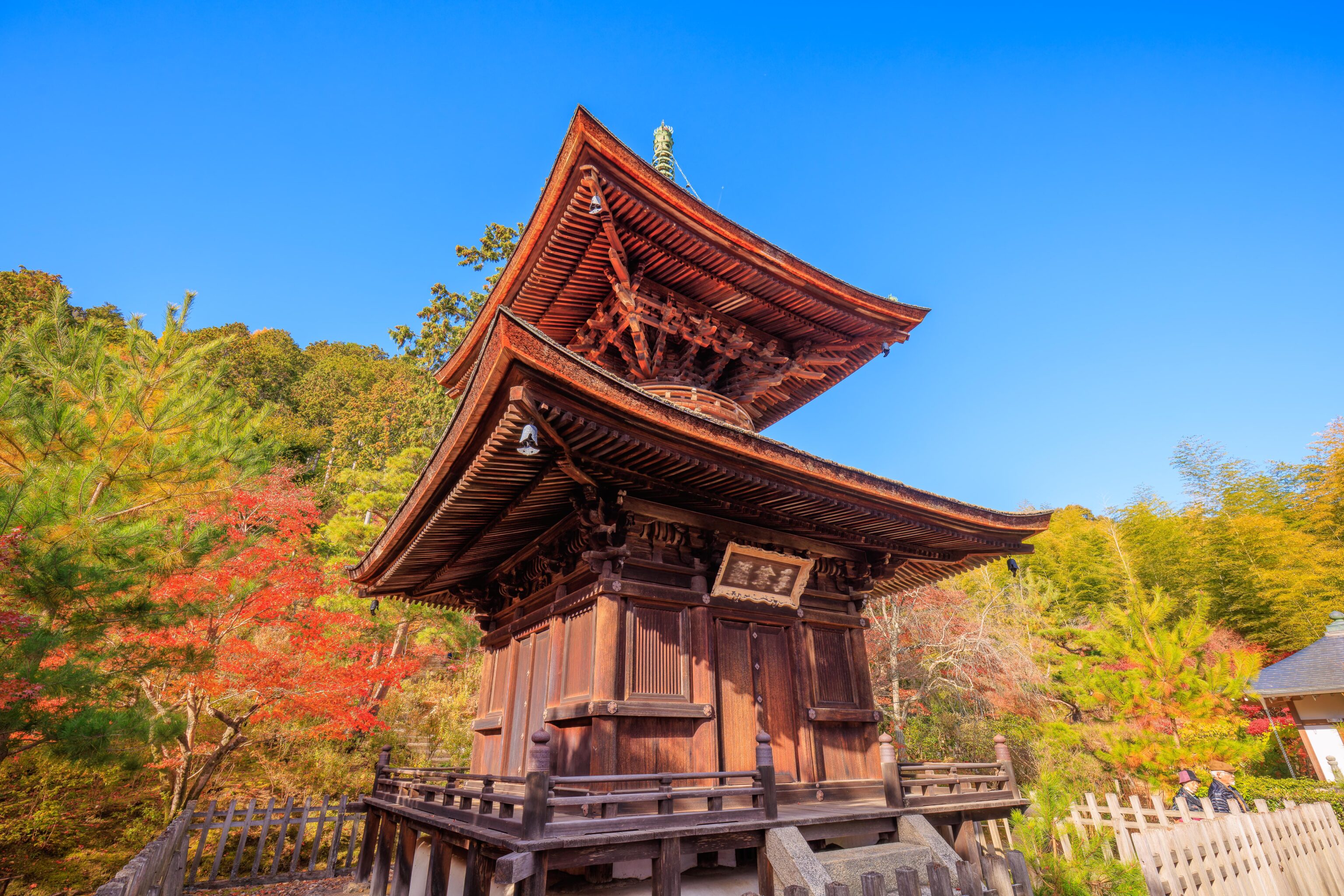
We tried to take different paths down when possible. We soon passed by the pagoda.
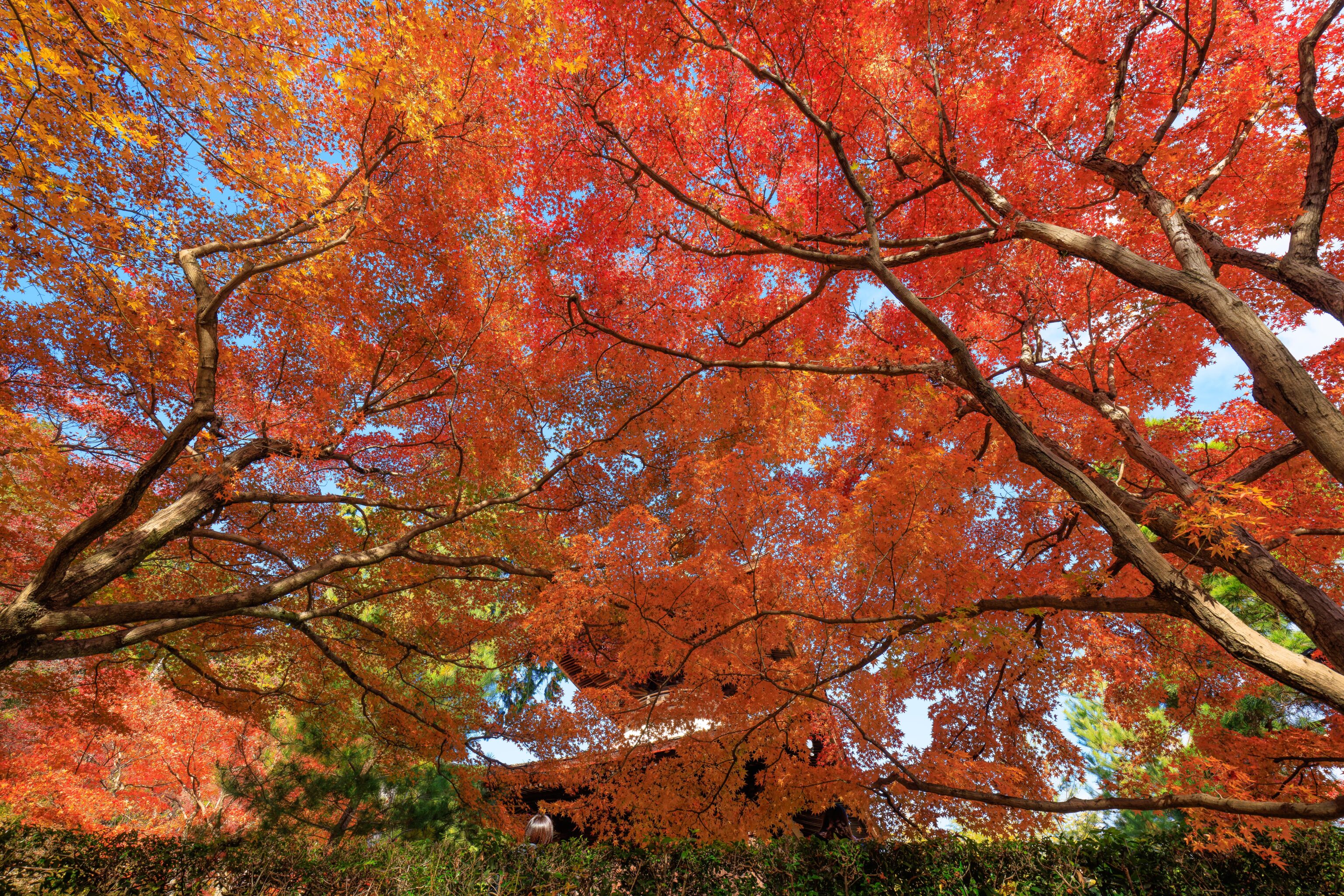
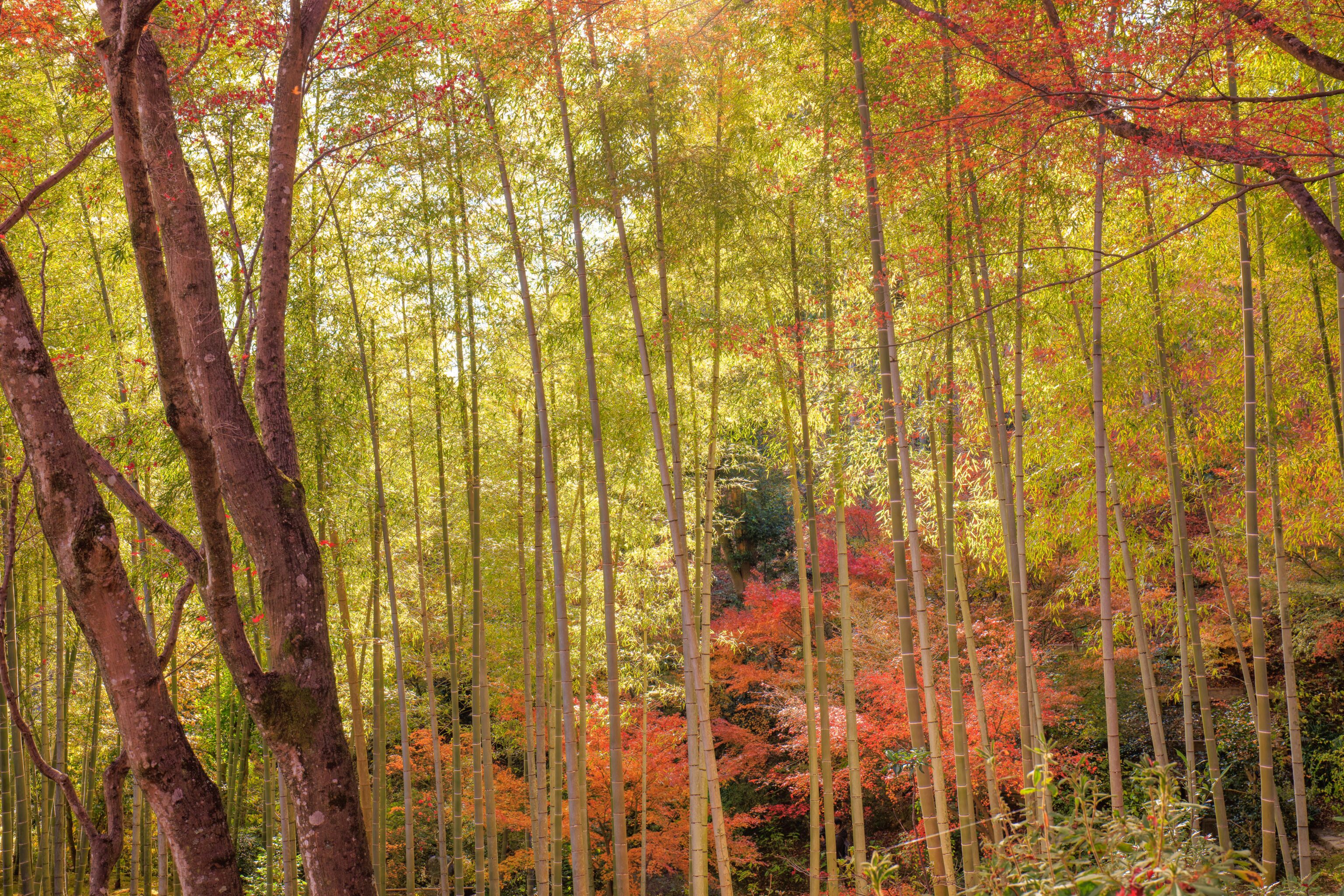
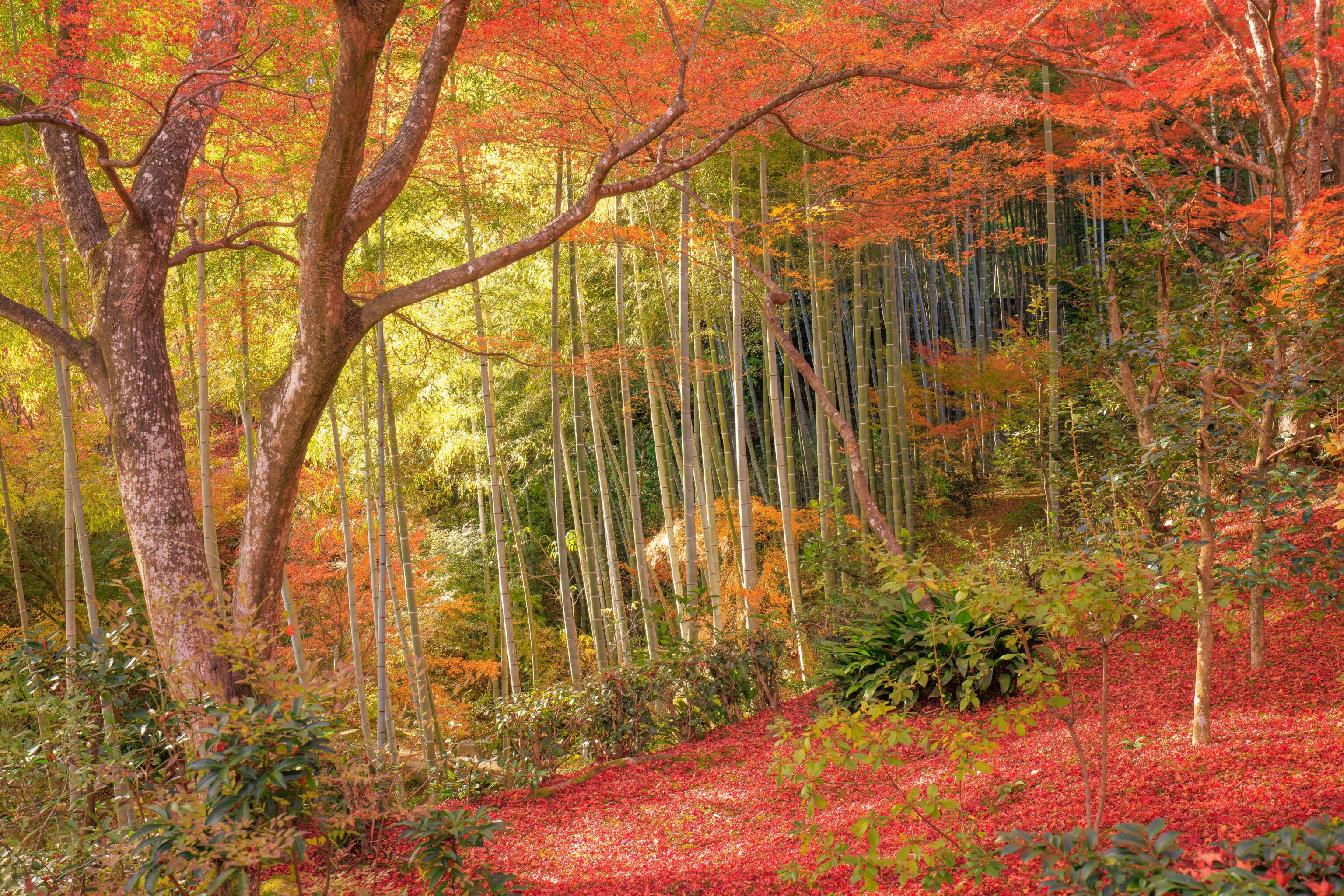
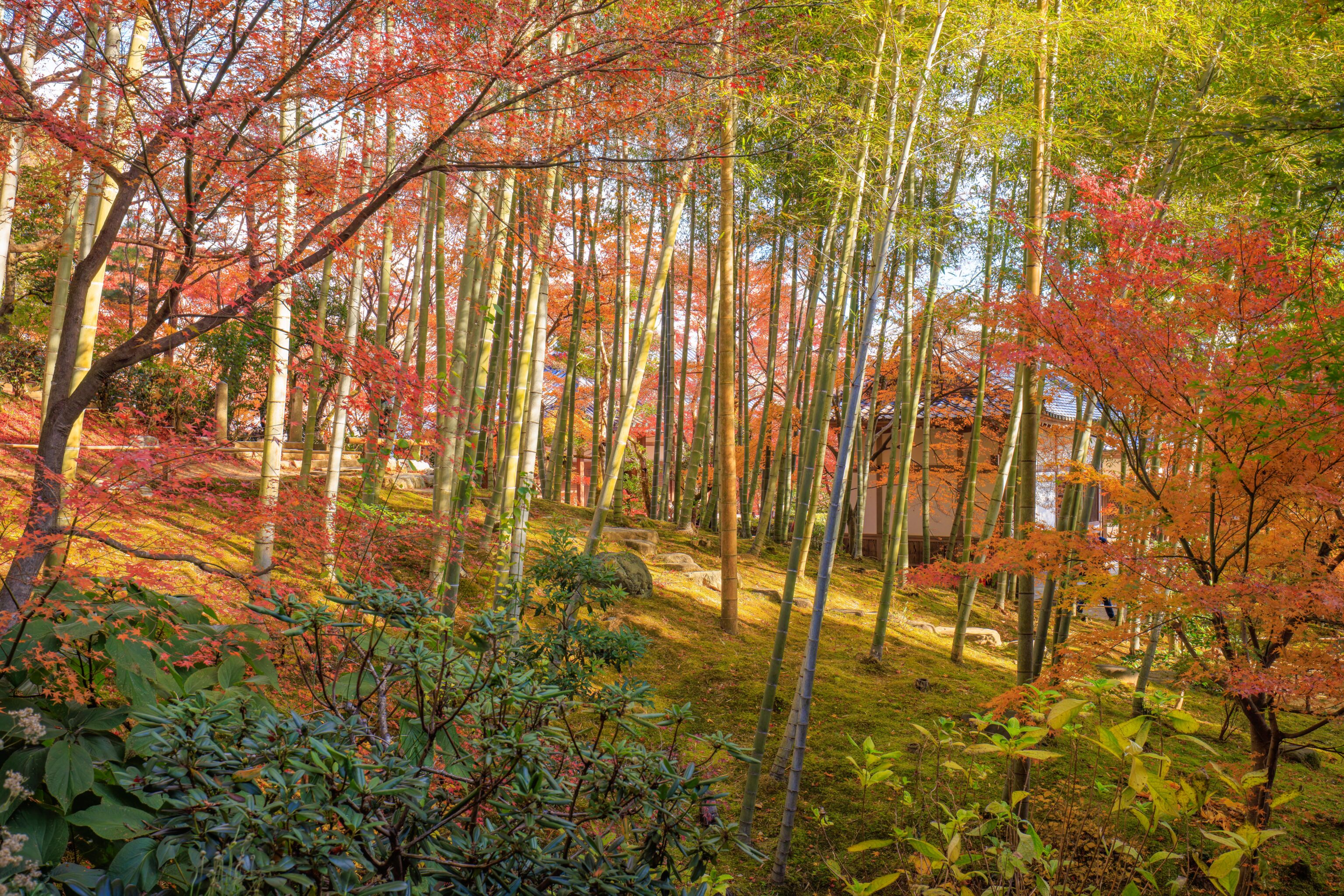
The path that we took below the pagoda went by a small bamboo forest.
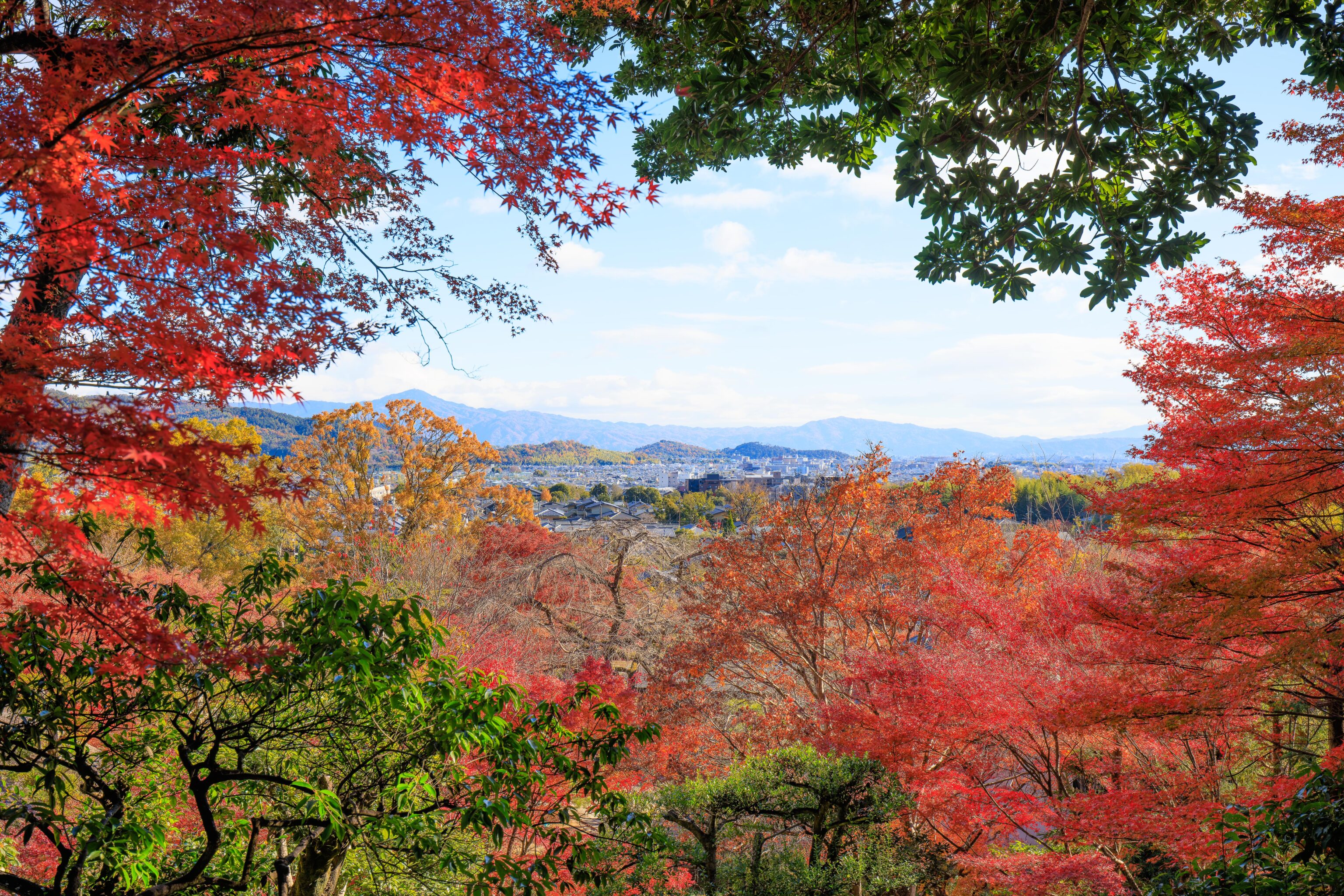
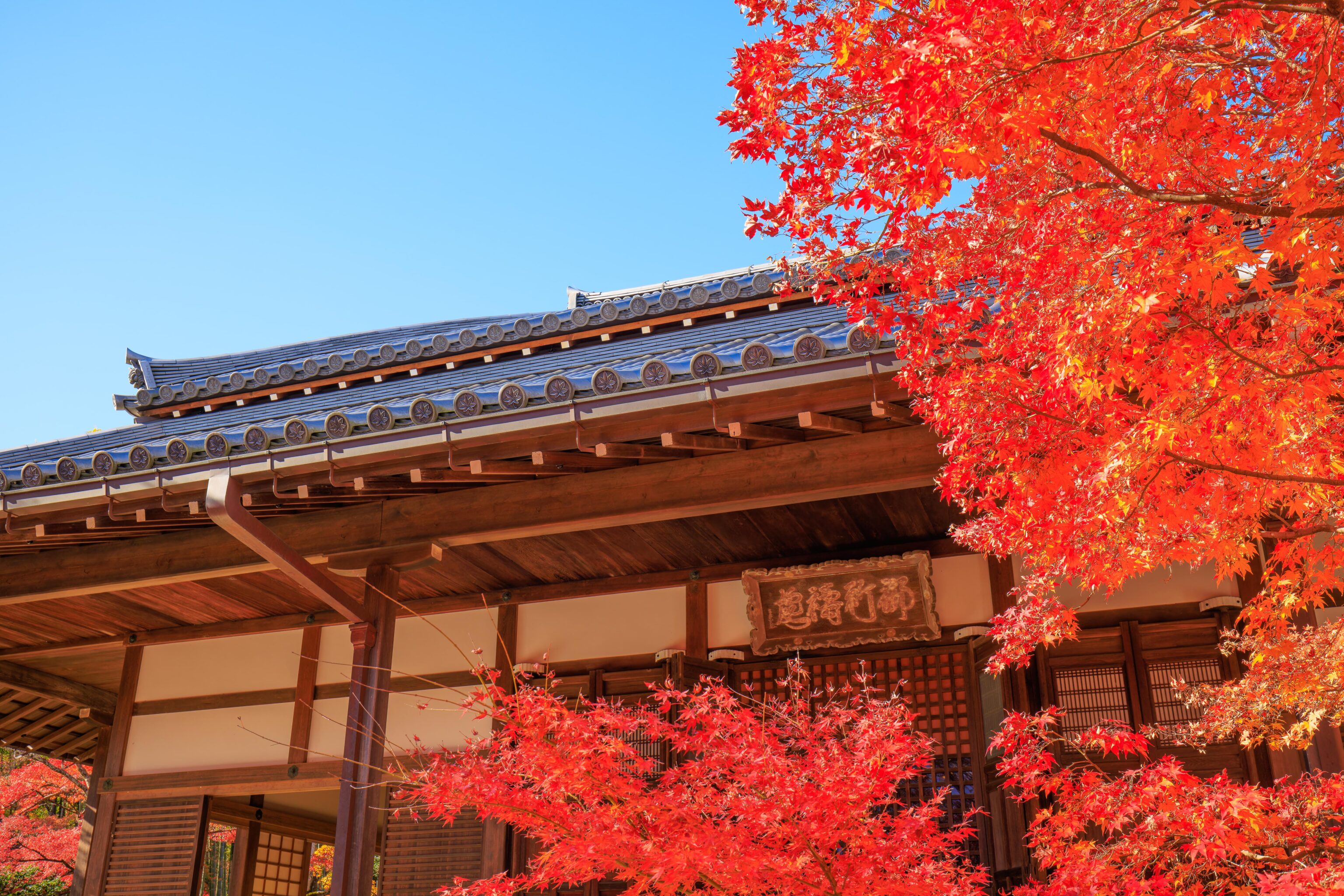
We ended up by the Hondo. We discovered that there is a small seating area as well as a nice view through the leaves of the neighboring trees. There is also a bathroom here, past the Monks’ Quarters.
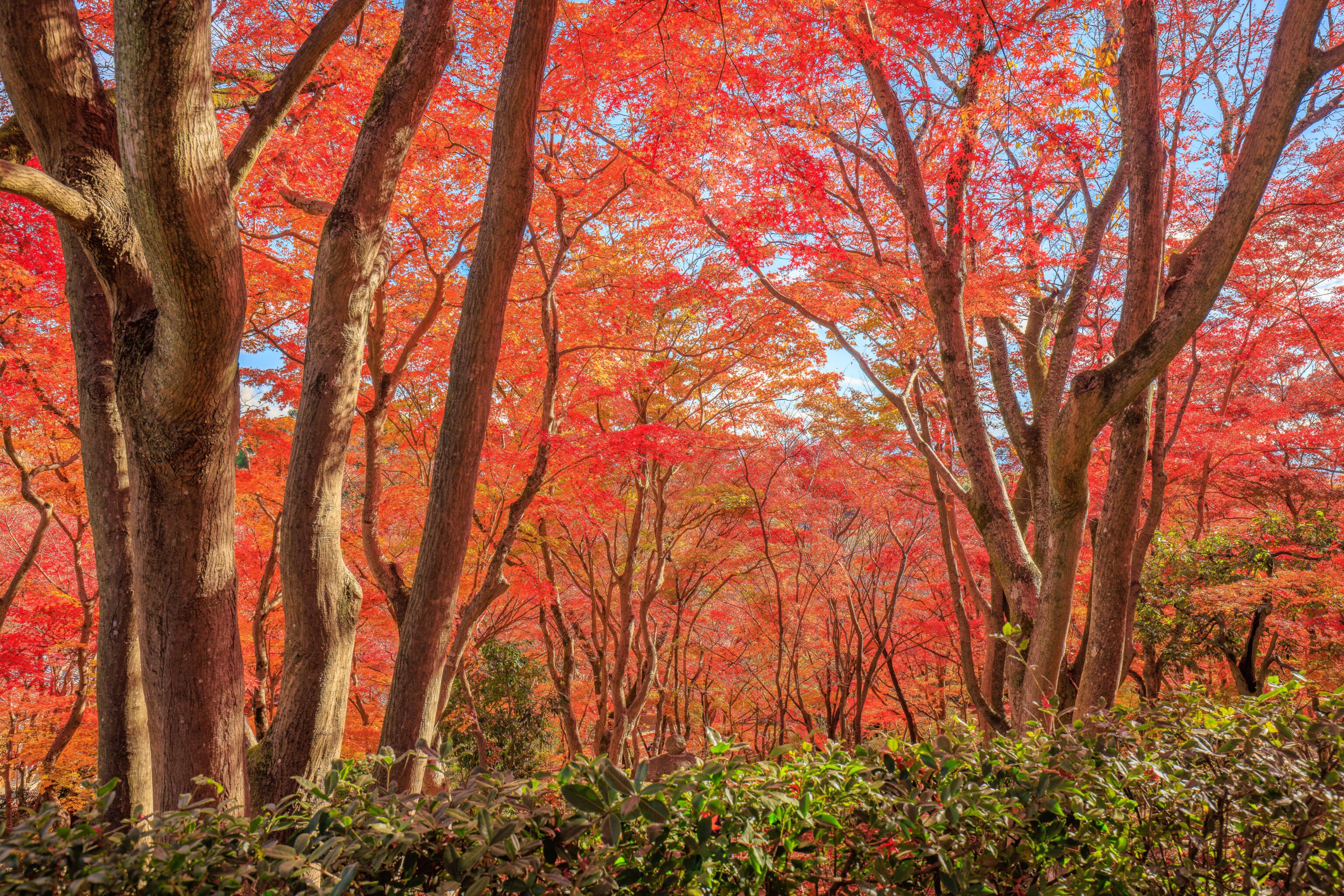
We conditioned on our way down, again taking a different path from when we arrived.
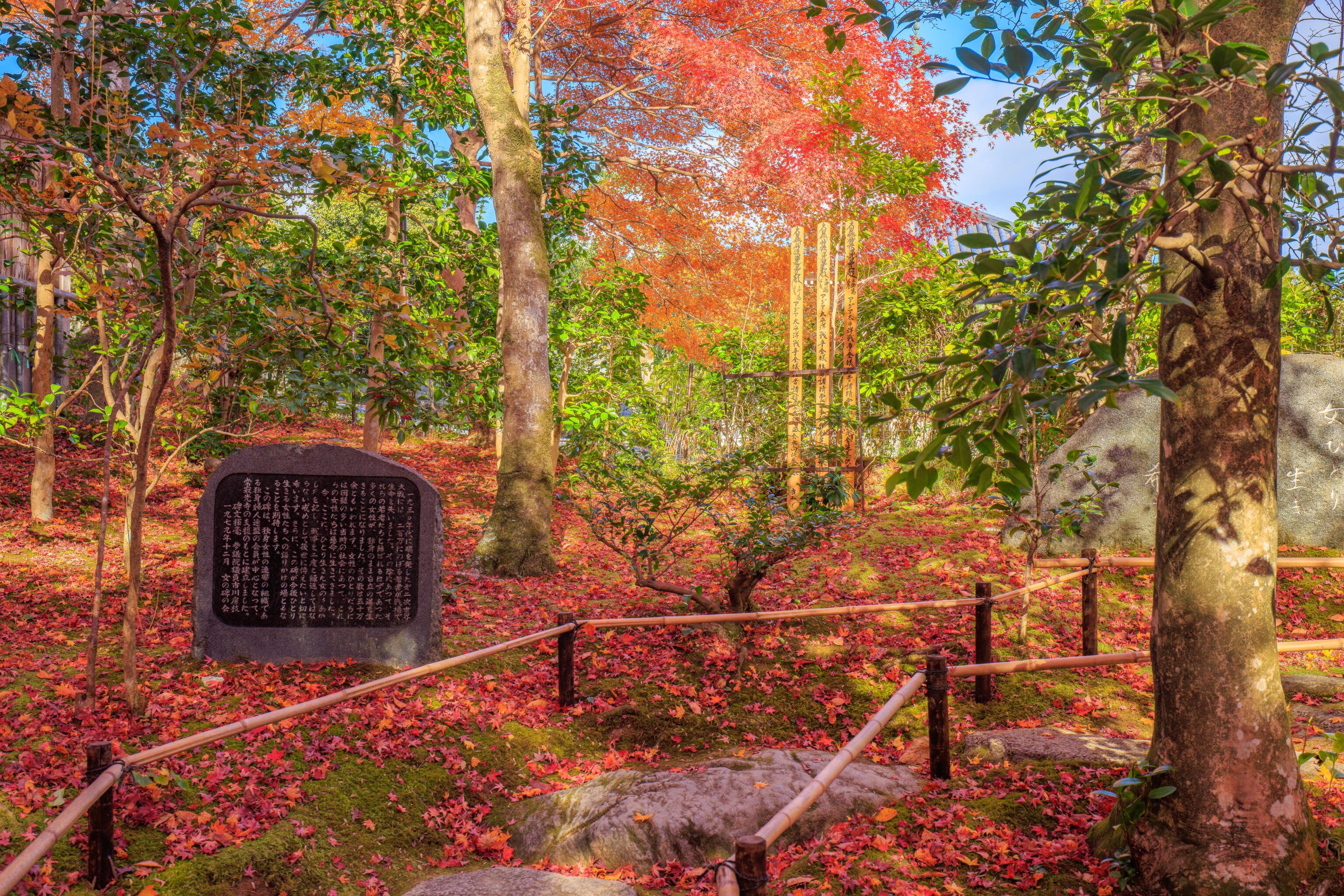
We passed by this stone with inscribed text. It was written by Fusae Ichikawa, an activist for womens’ rights in Japan. It reads, roughly translated using Google Translate:
Two million young people lost their lives in the Second World War, which began in the 1930s. As a result of this, many women who were supposed to be together with these young people ended up living a life of independence while remaining single. The number is said to be over 500,000. In the society of the time, where there were many difficulties for women living alone, these women lived to the fullest. Here now, I would like to record the death of a woman who lived alone, and pass it on to future generations as a warning never to repeat the war. Furthermore, I hope that this monument will serve as a warning to all women who will live alone in the future. I hope that it will also be a place for people to talk. This monument was erected by members of the Single Women's Federation, an organization for single women, with support from Jojakkoji Temple. Inscription written by Fusae Ichikawa, member of the House of Councilors, December 1979, Women's Monument Association
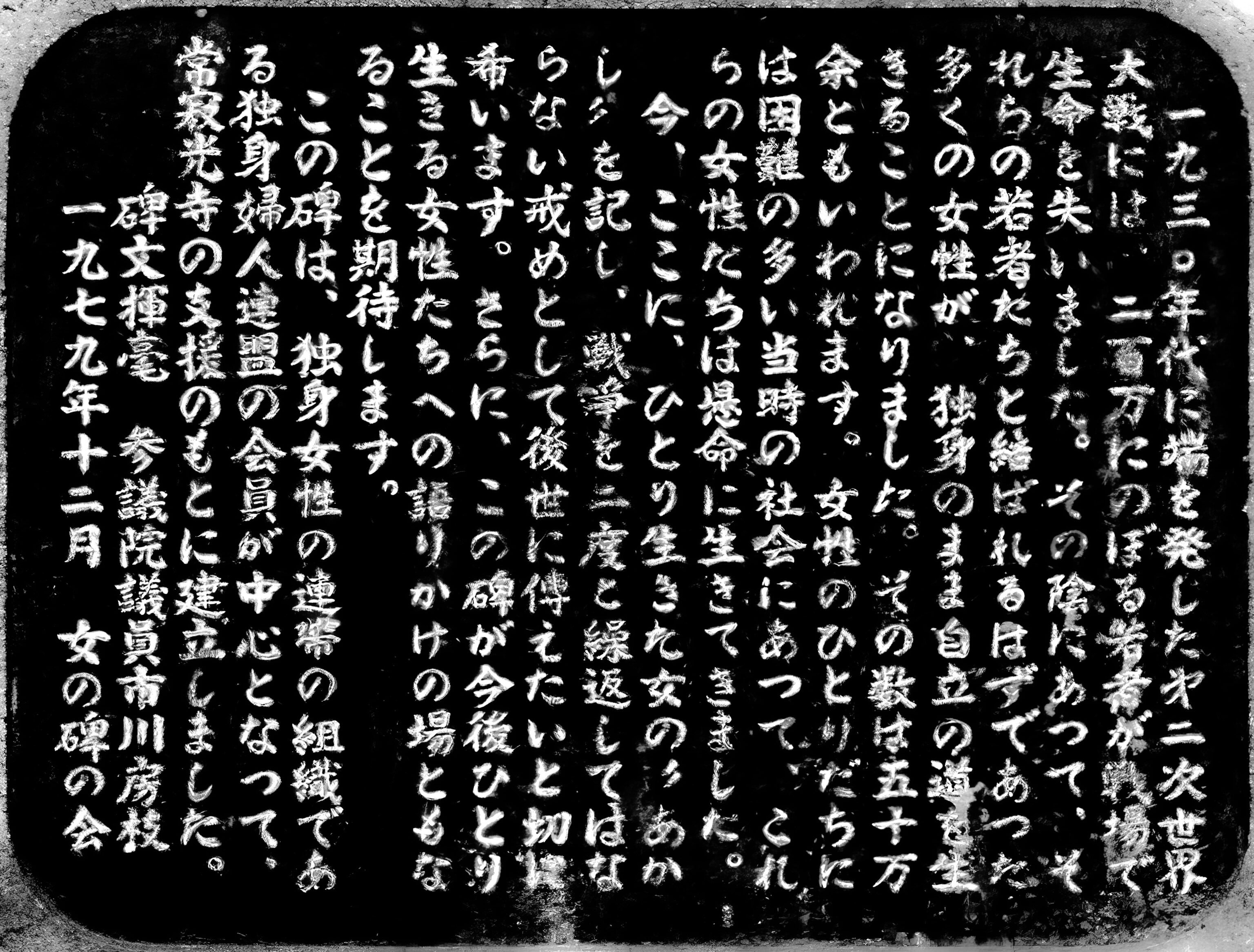
The text, enhanced to make it more legible.
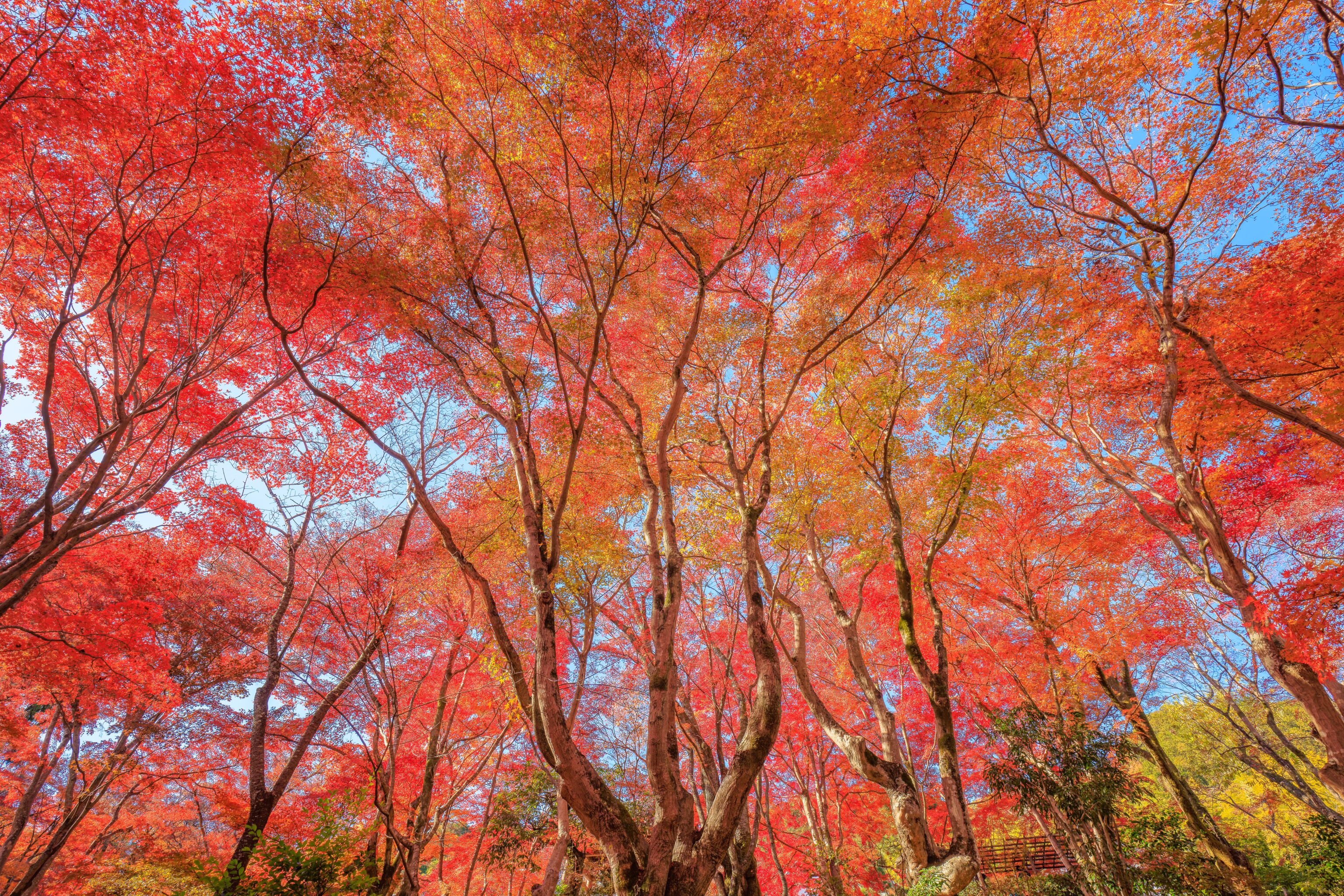
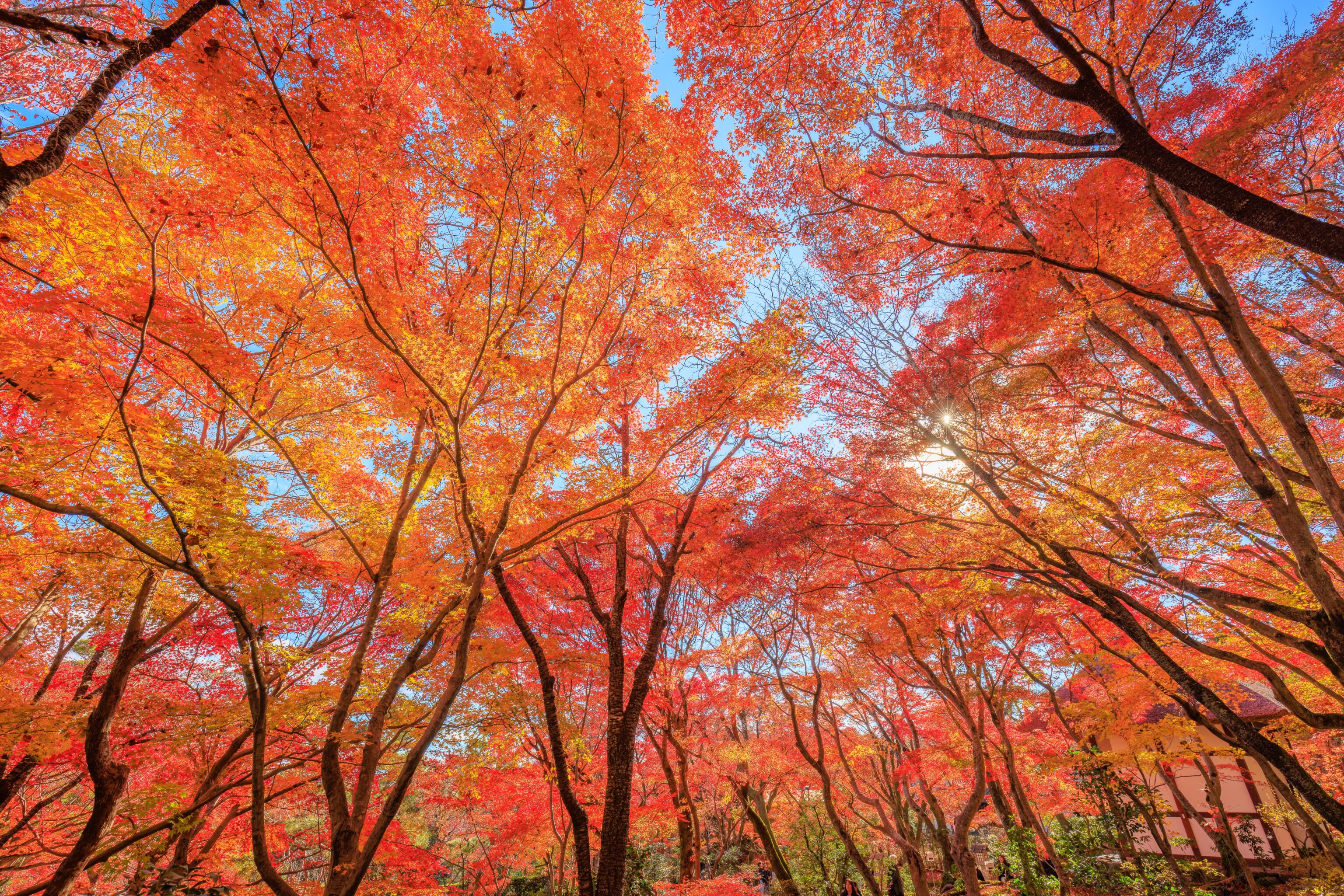
We continued on, passing under some nice fall colors on our way out.
Nison-in
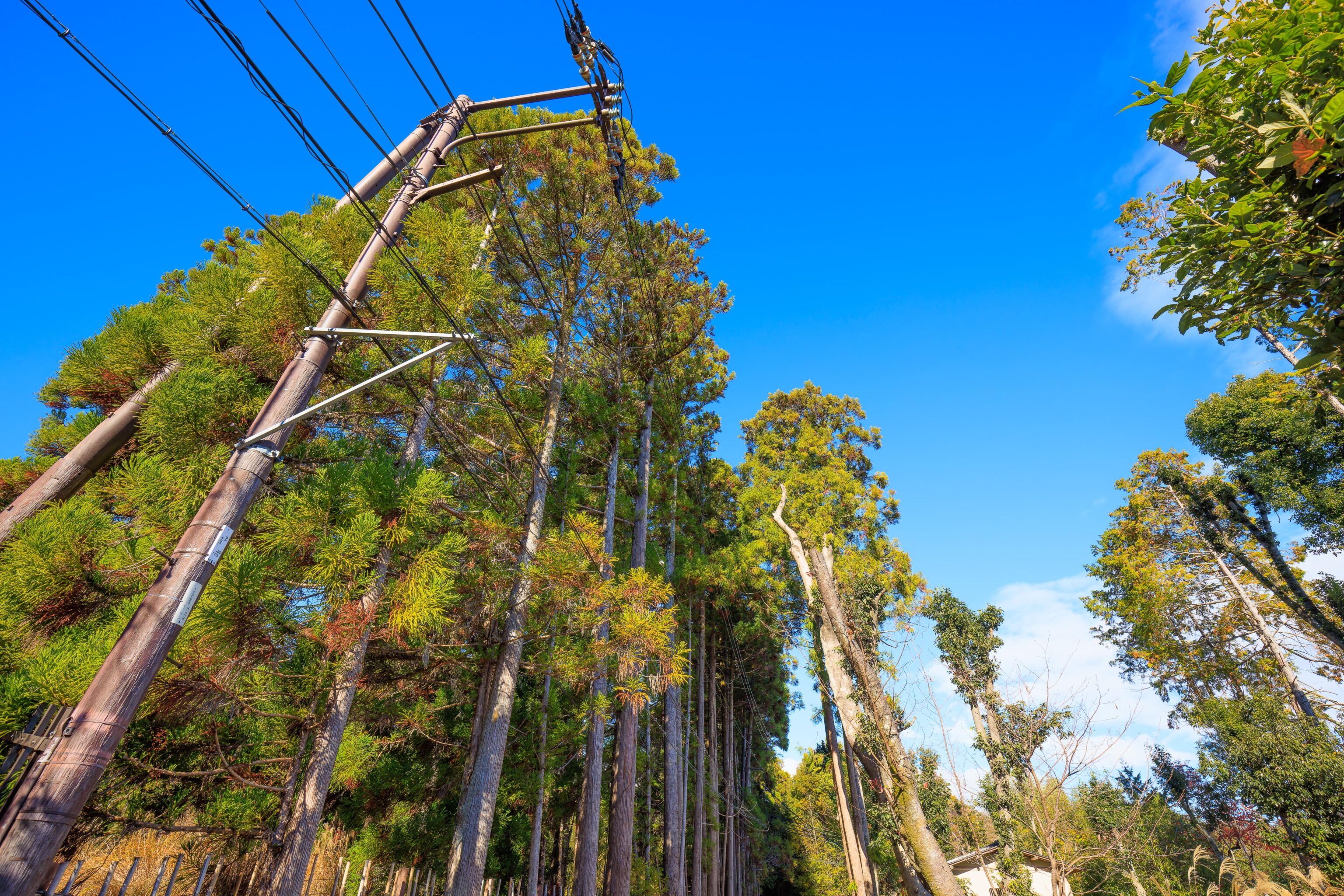
After exiting Jojakko-ji, we walked to the east and then north to head to Nison-in. We passed by these tall trees on the way.
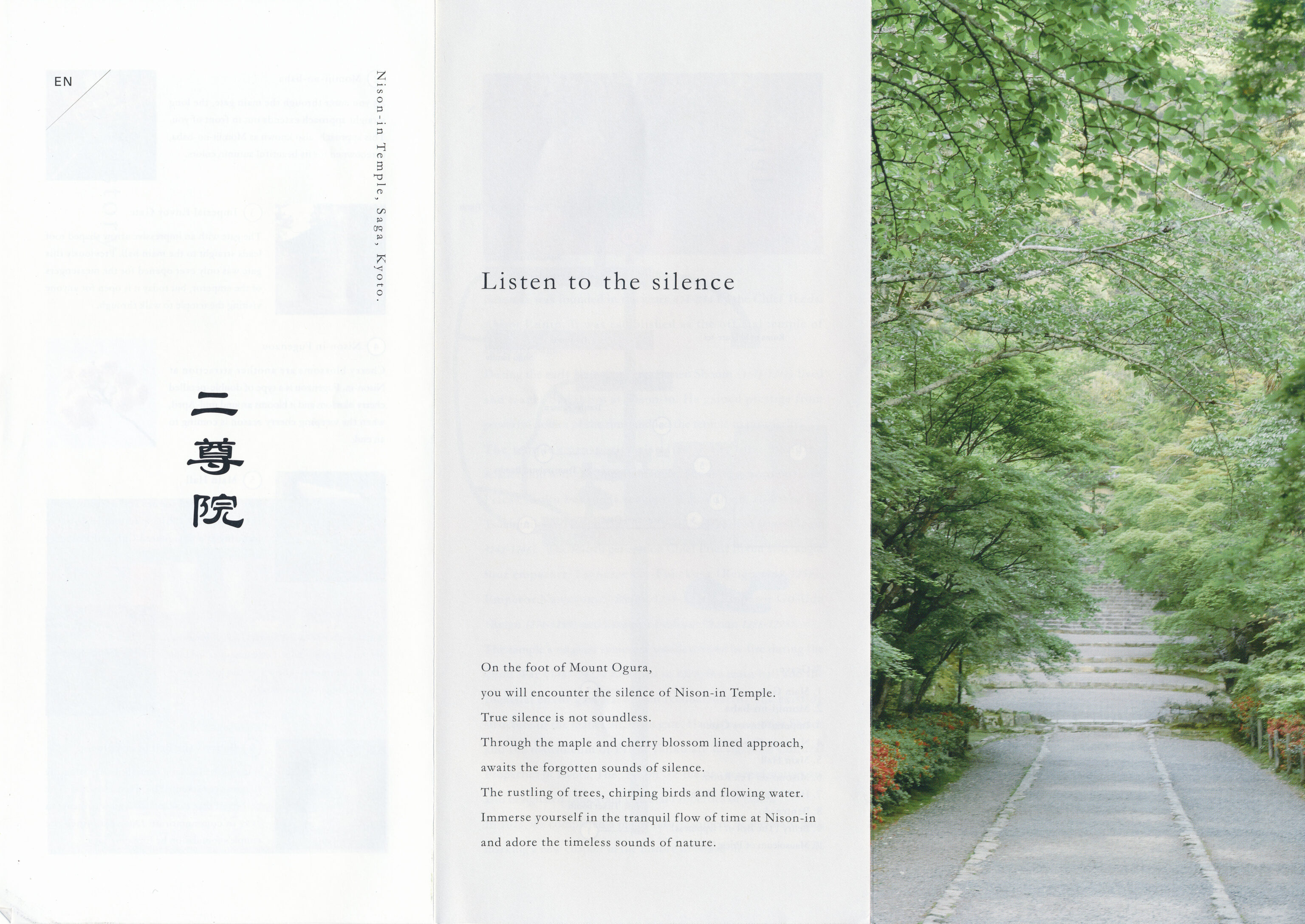
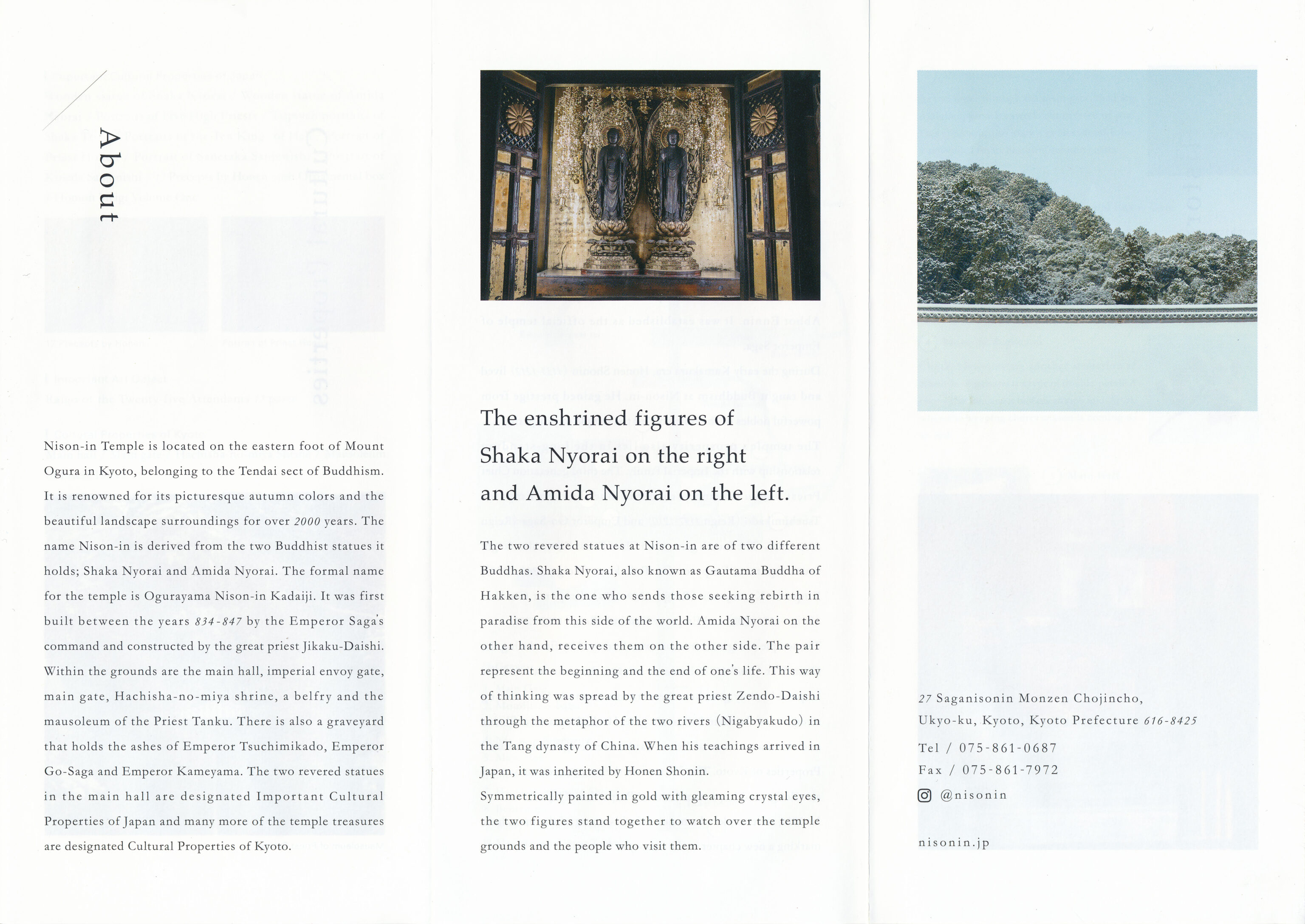
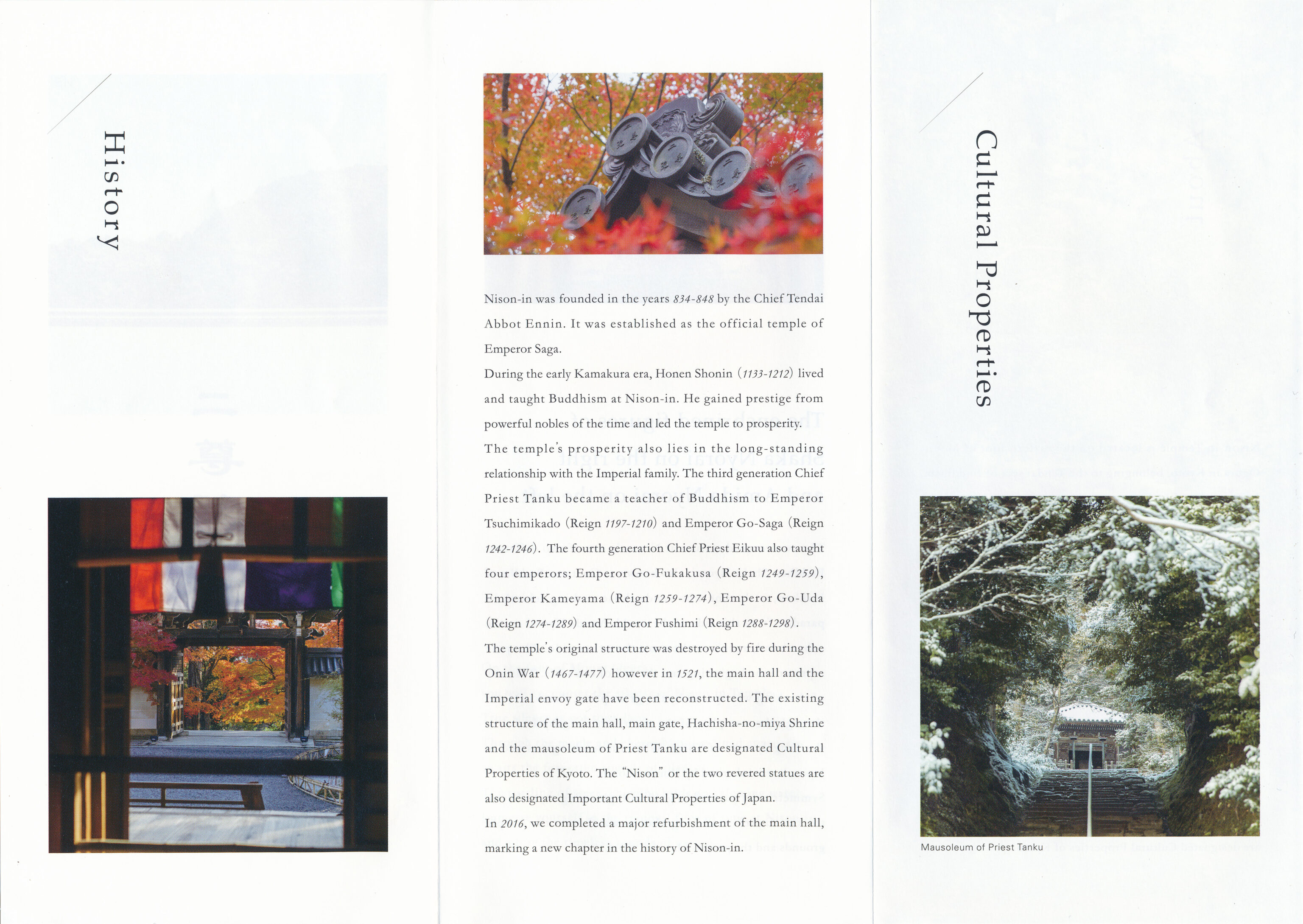
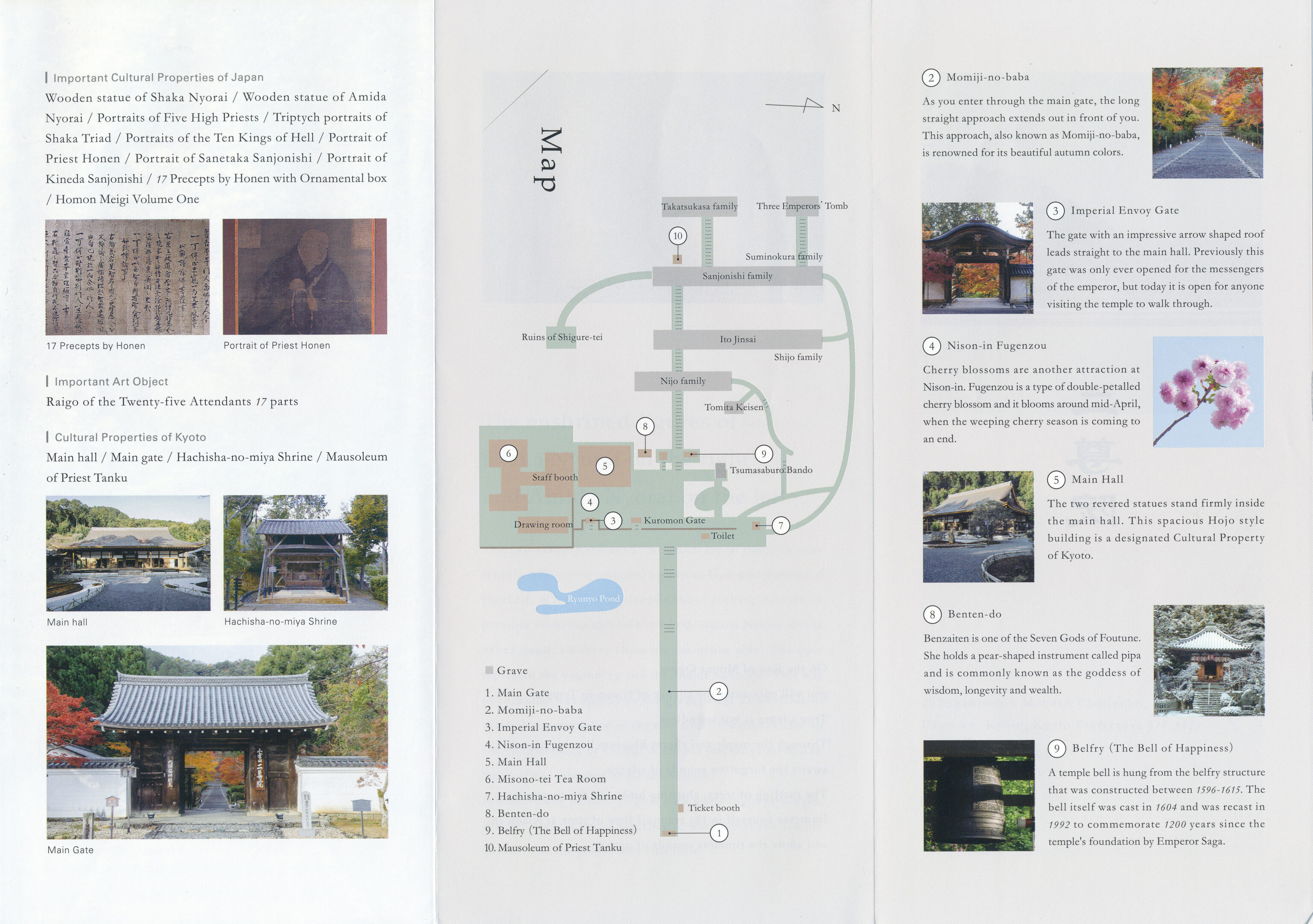
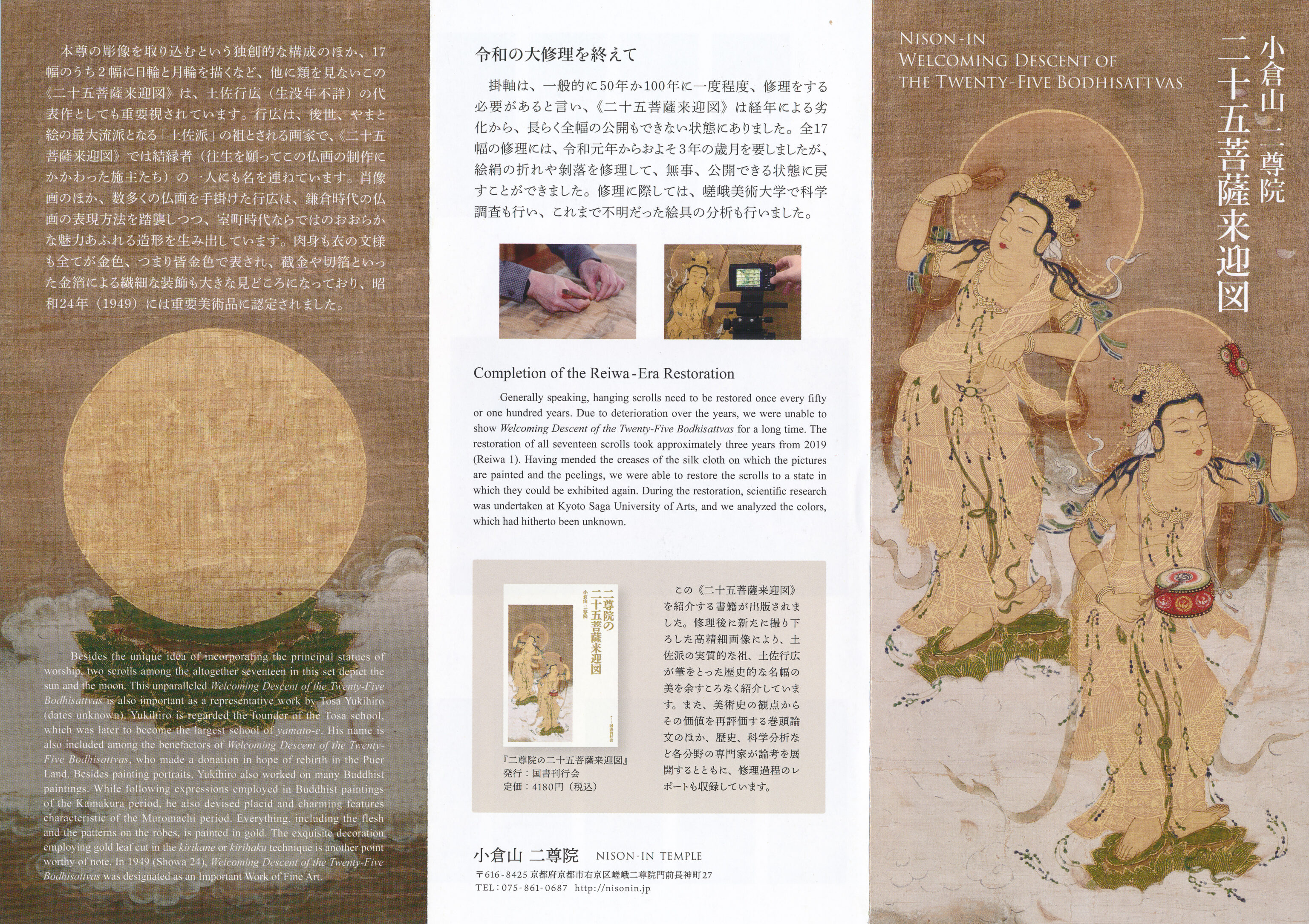
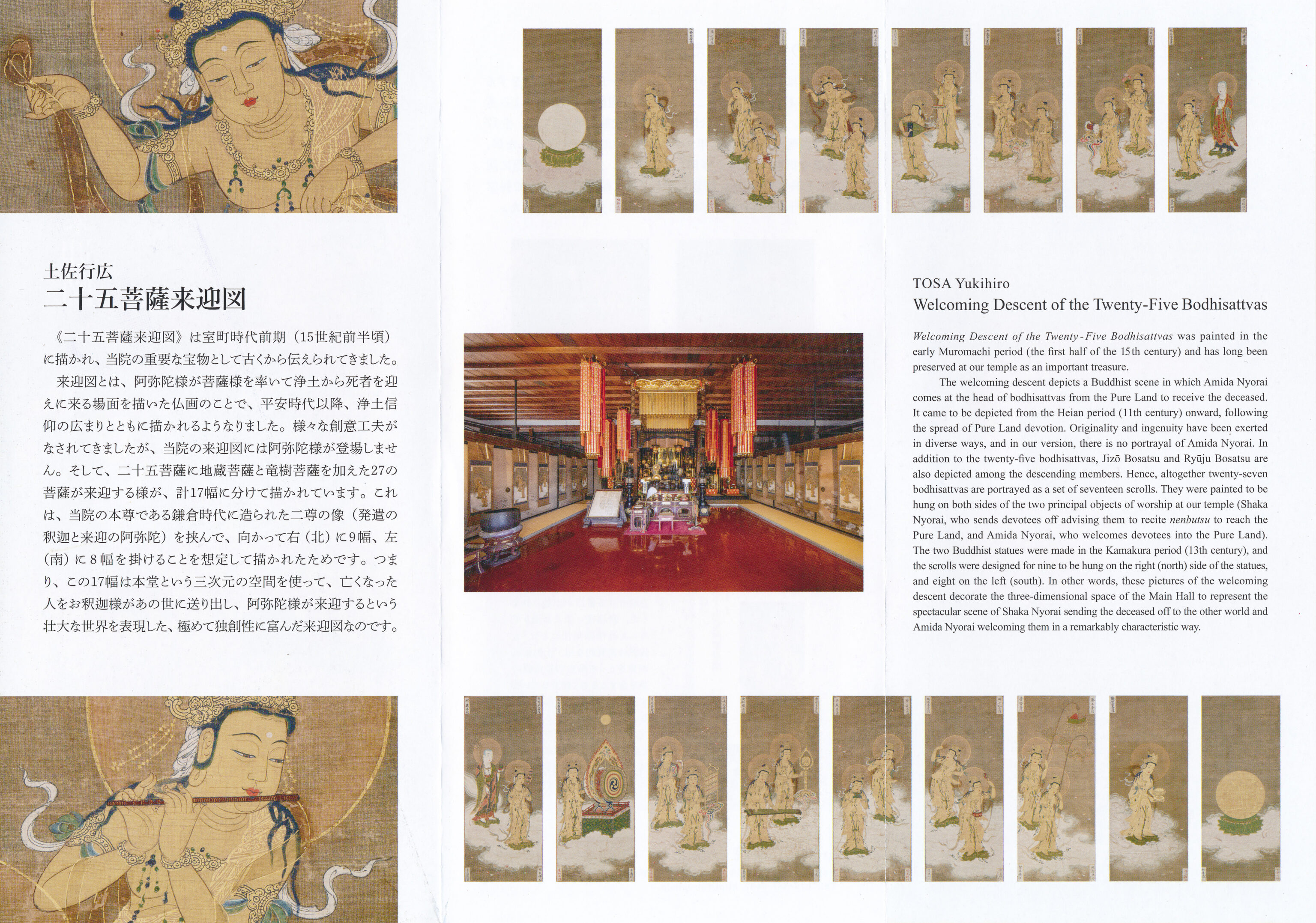
The Nison-in ticket booth is right next to the main entrance. We received two pamphlets, one about the temple and another about the Twenty-Five Bodhisattvas, a series of painted scrolls from the 15th century that were just restored. Photograph was not permitted so there are no photos of the scrolls here.
The temple’s website also has a nice guide that describes some of the temple’s major elements.
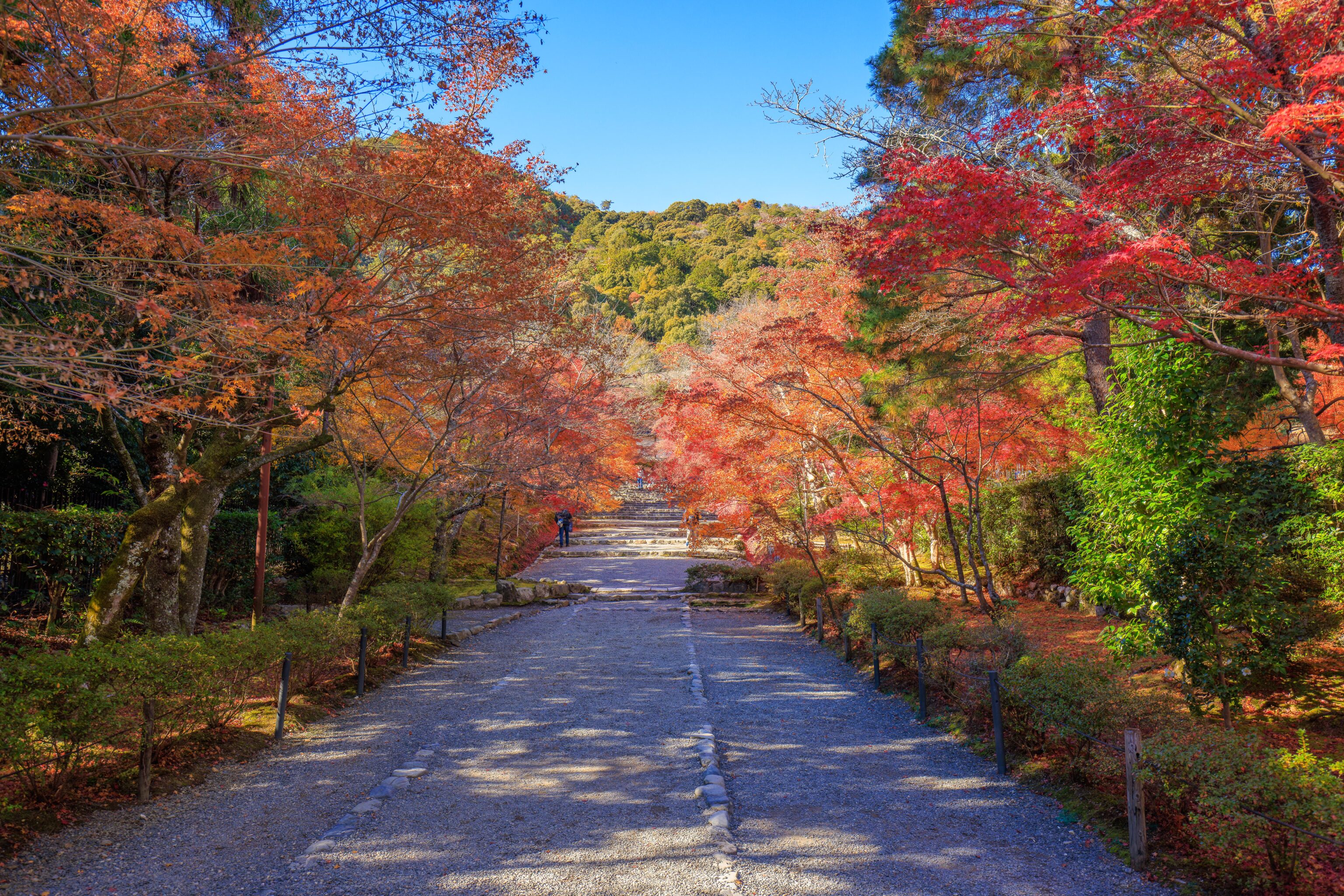
Like Jojakko-ji, there is a path lined with trees leading from the entrance to the temple buildings. It seems likely that the view would have been better a week or so ago.
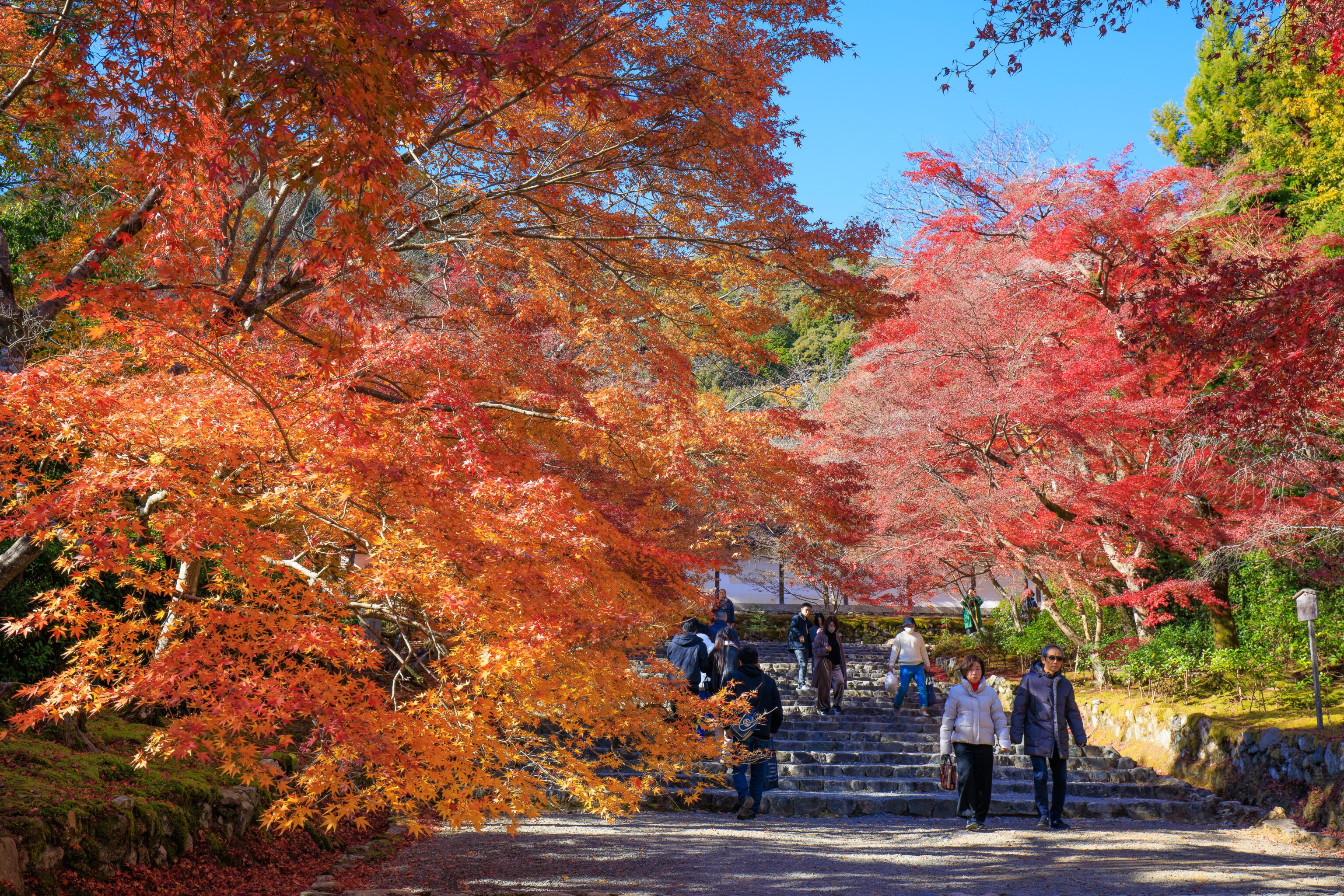
It was still nice though!
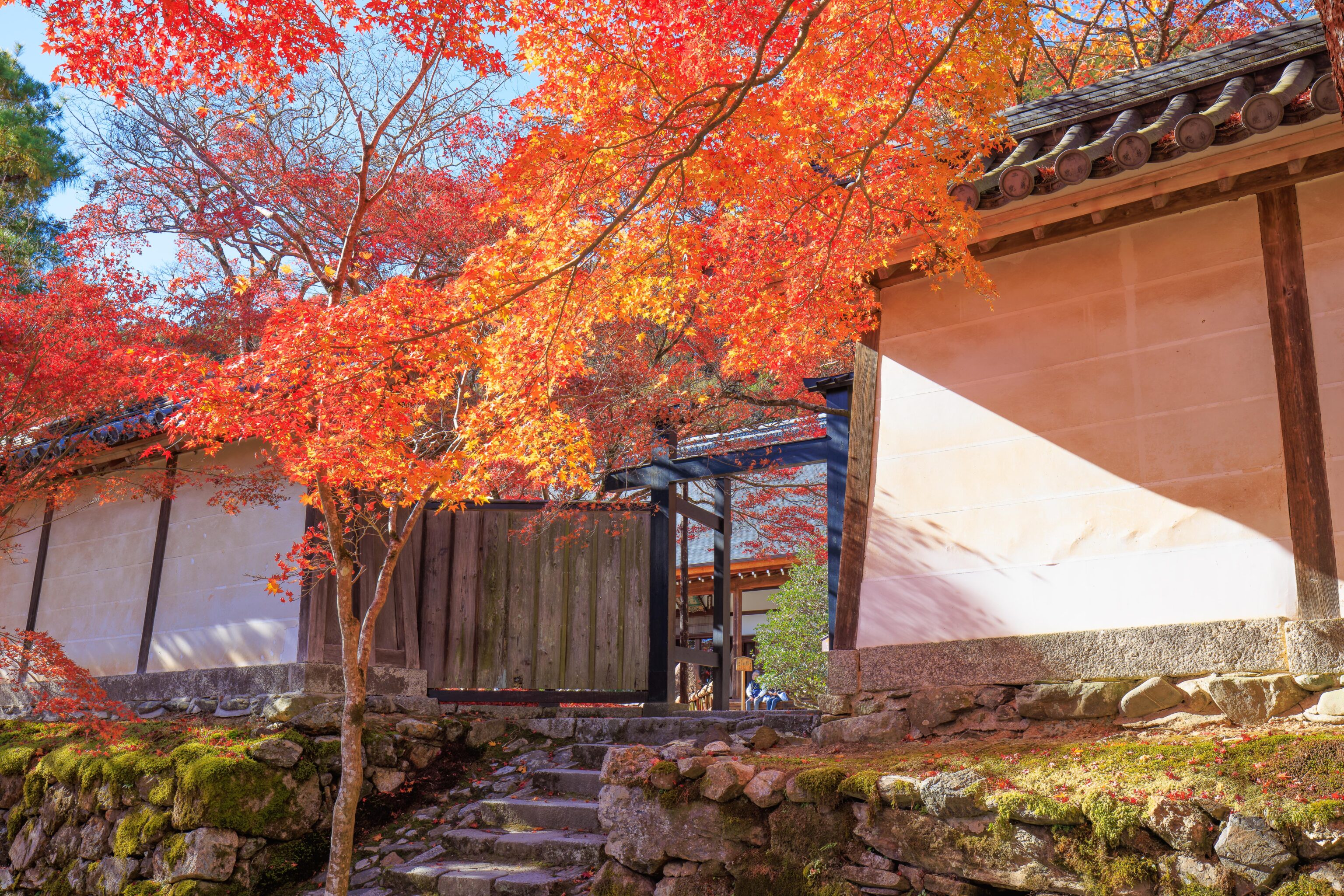
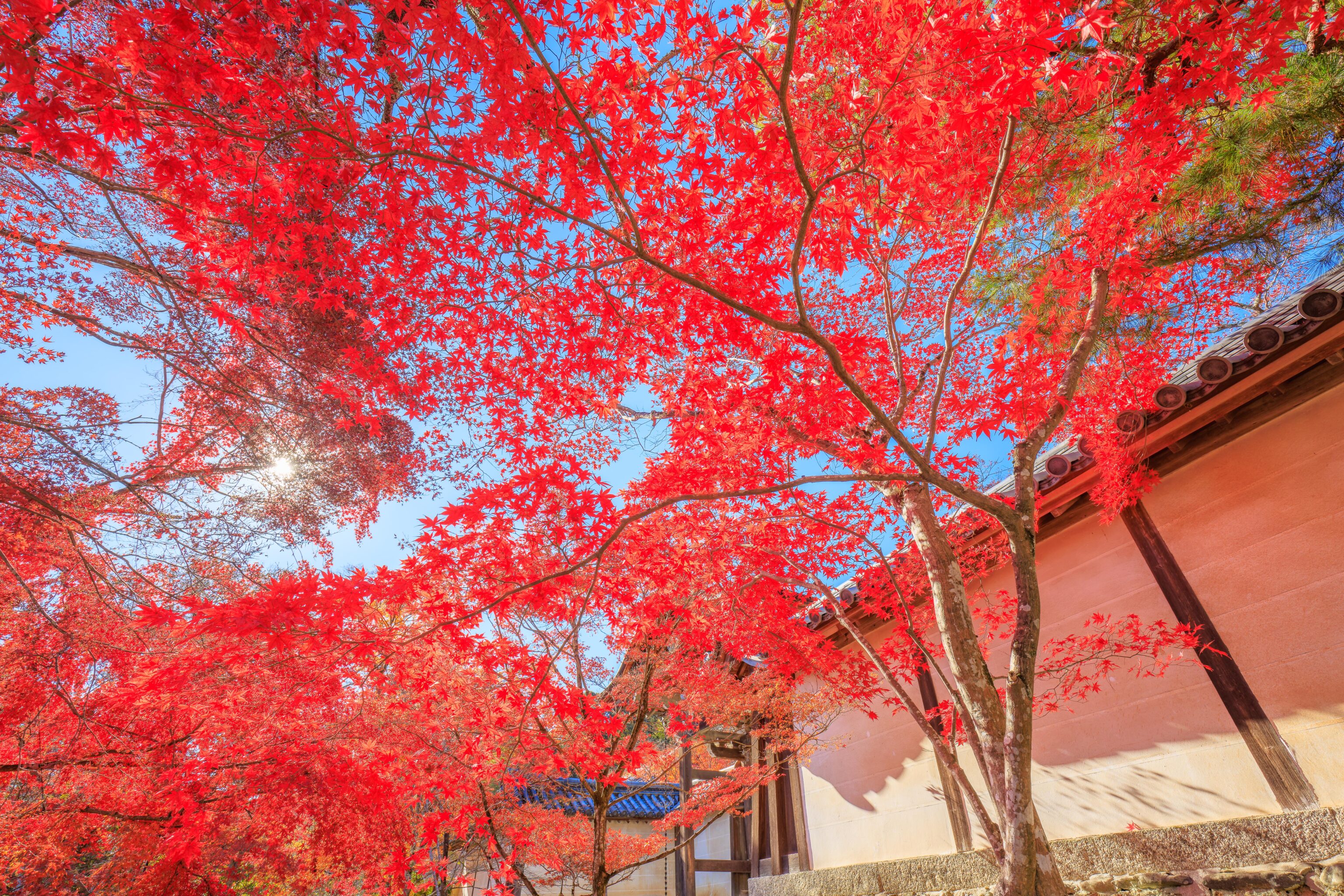
We passed by a particularly nice spot on our way into the walled section containing the temple buildings.
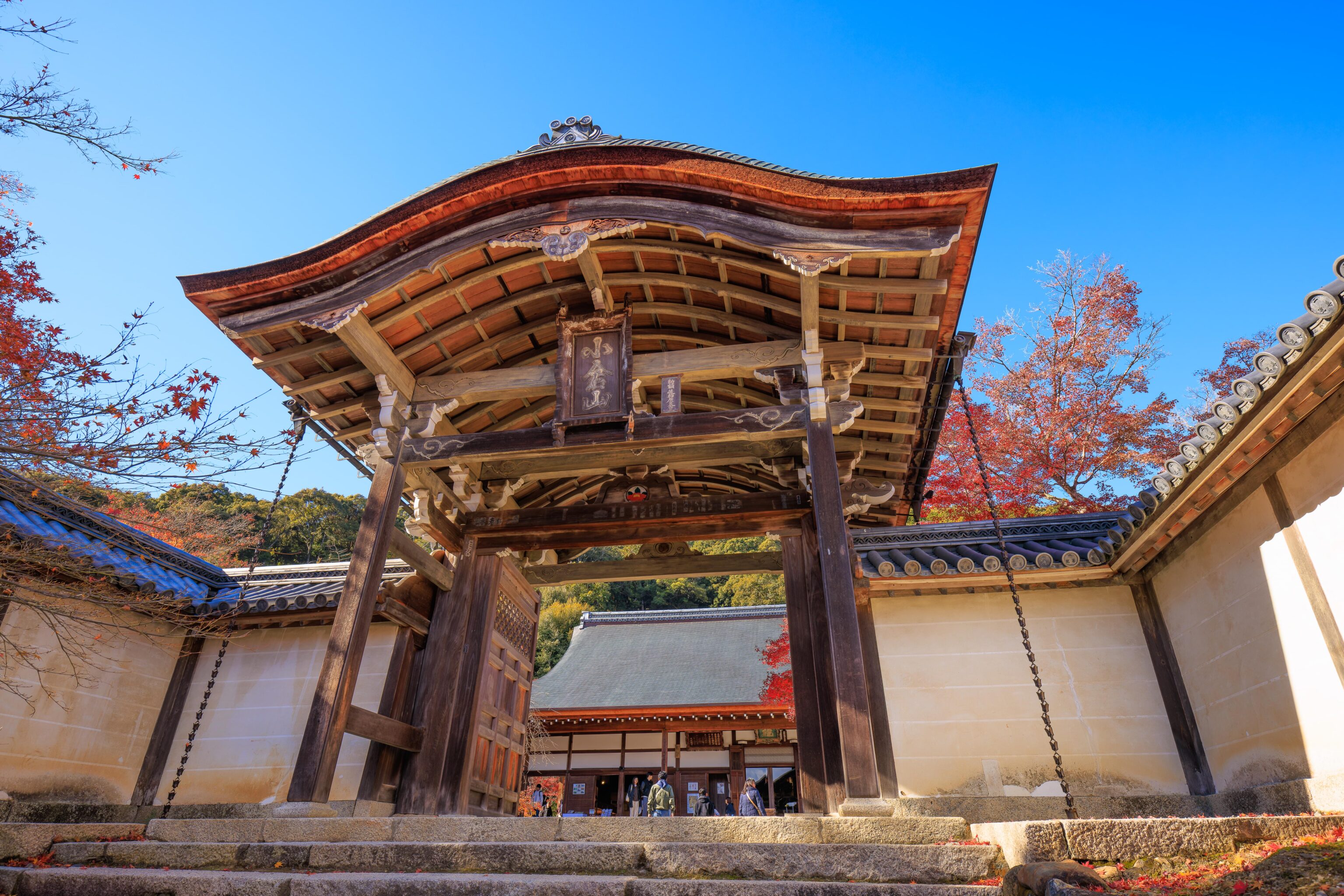
We entered via the second gate, the Imperial Envoy Gate. Many of the temples that we’ve visited on this trip have this type of gate somewhere.
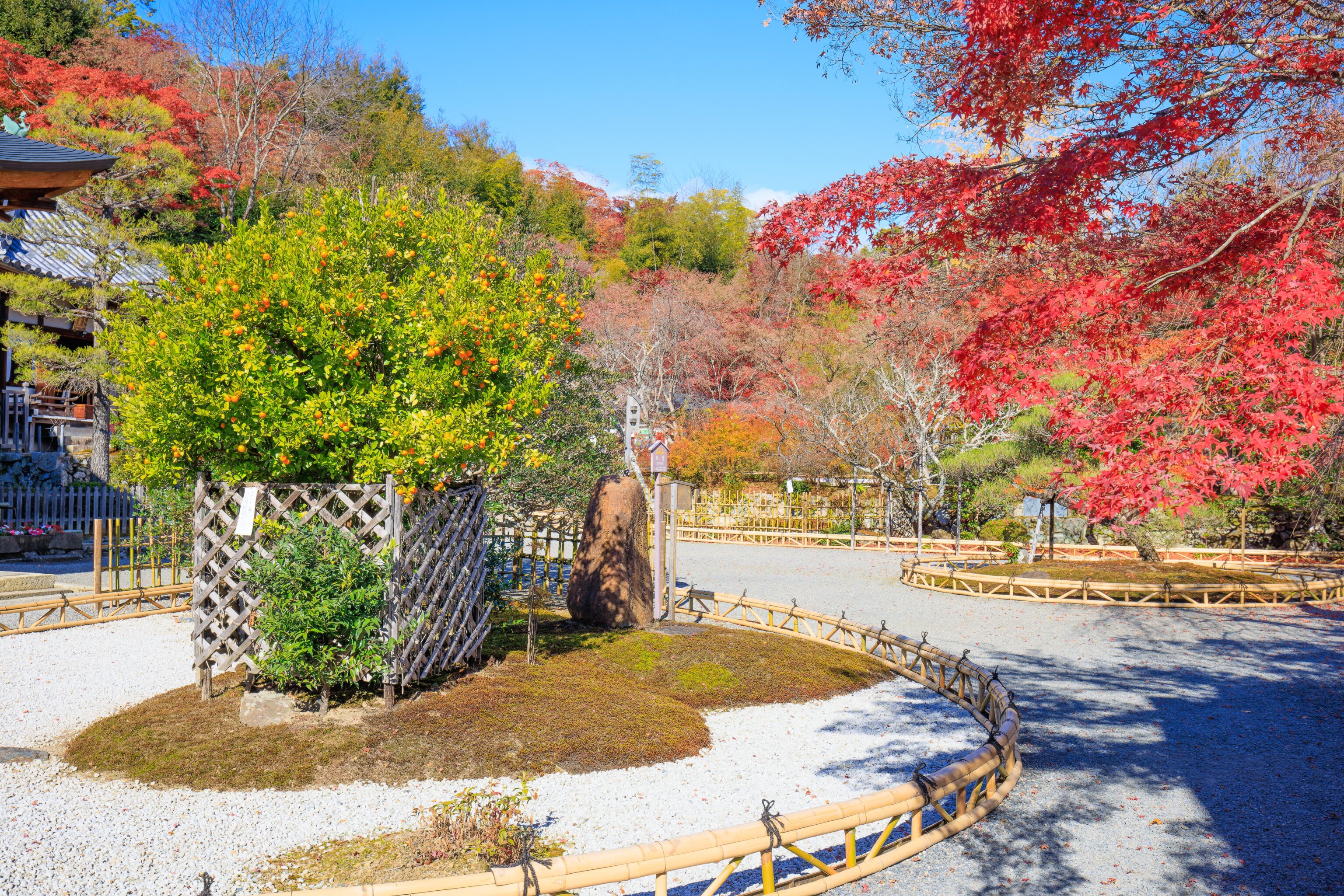
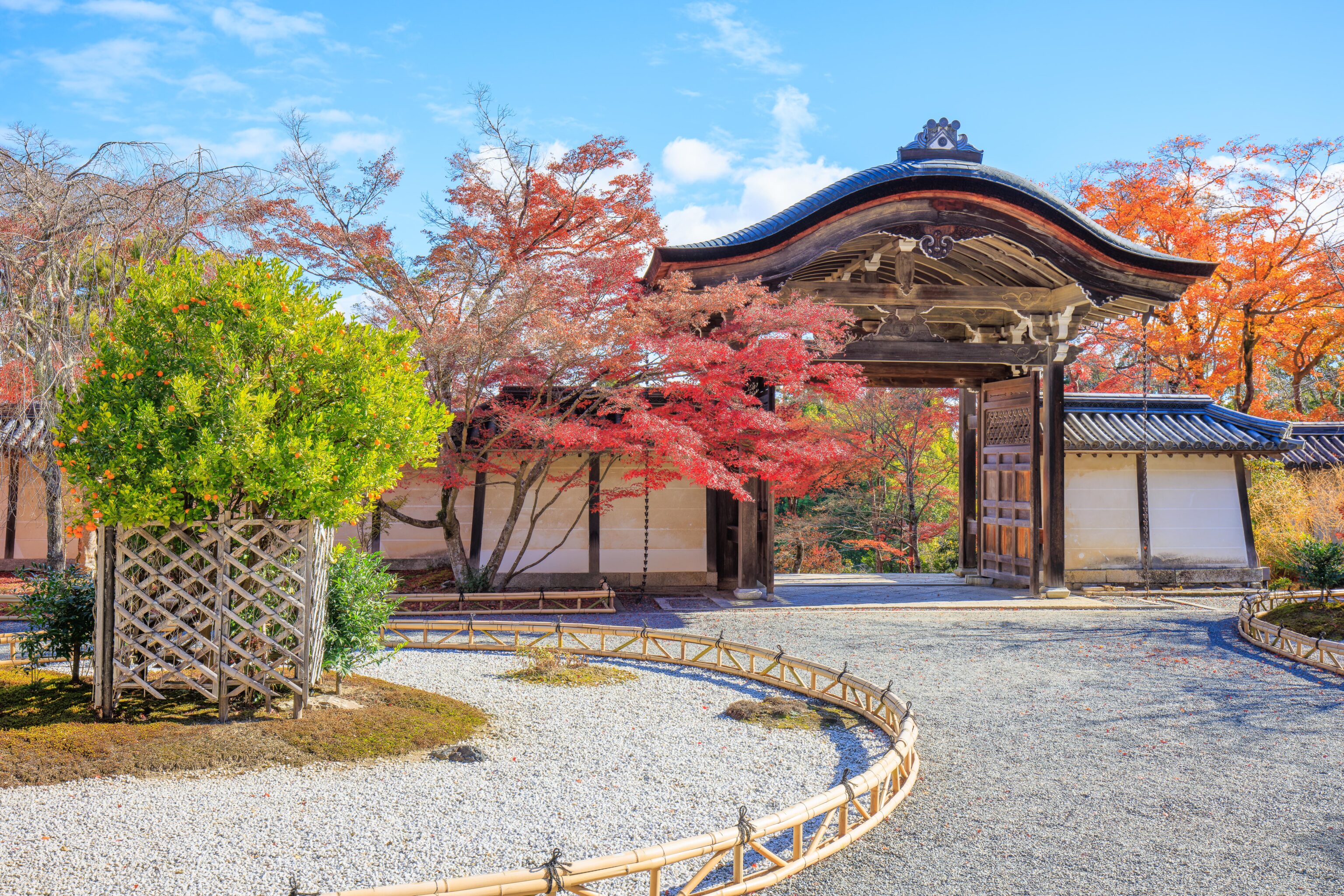
We sat for a bit on the front of the Hondo.
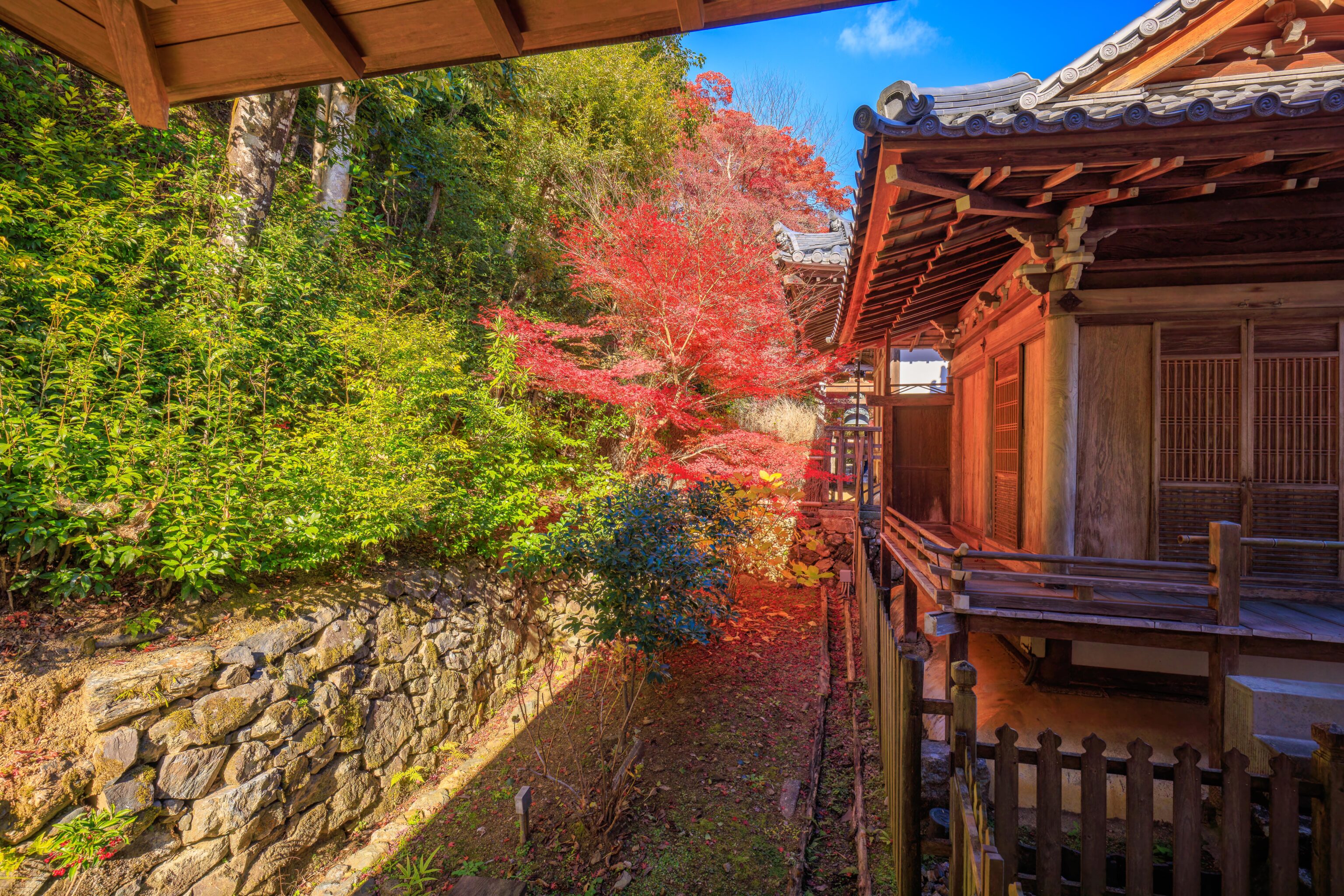
We walked around the building as well.
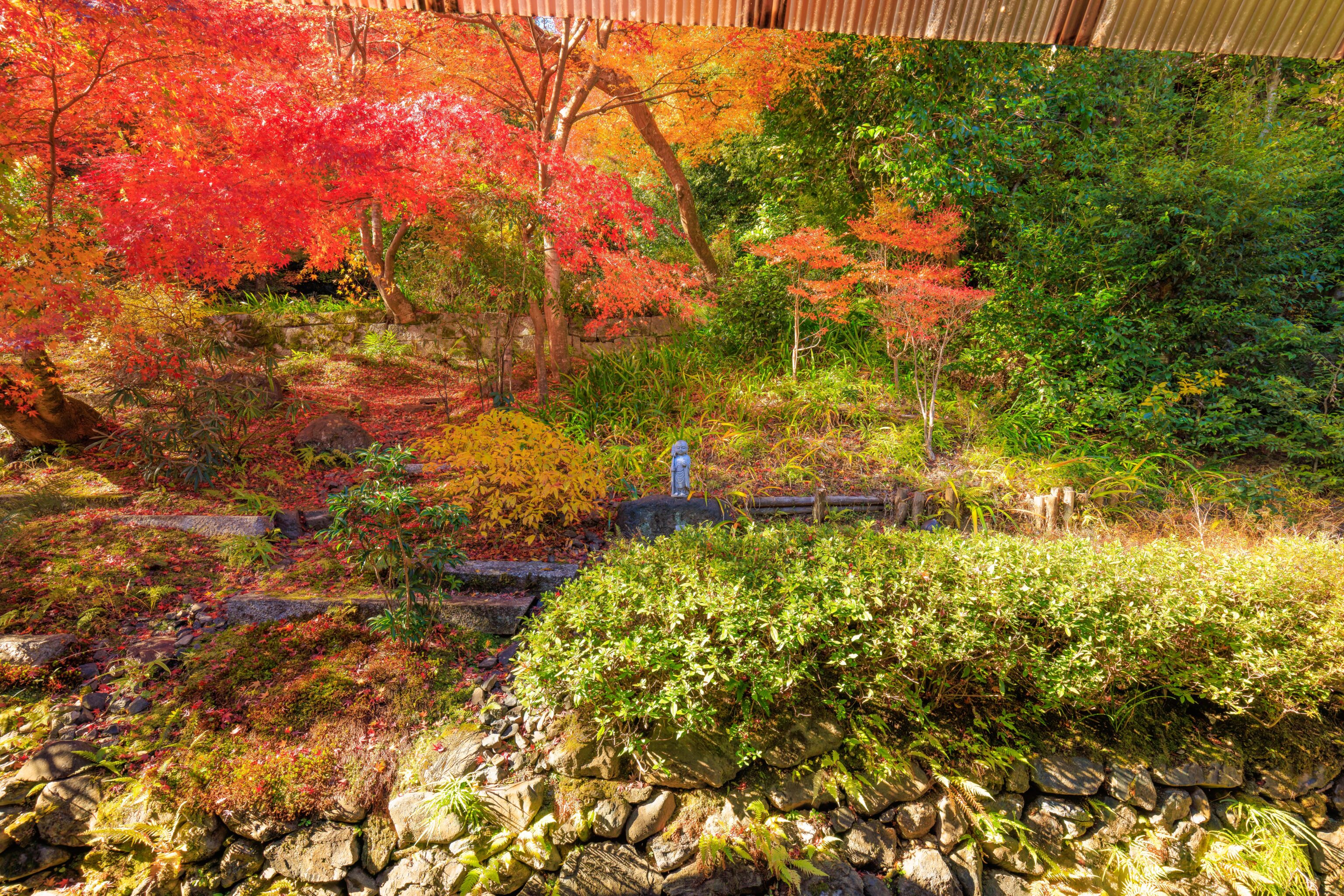
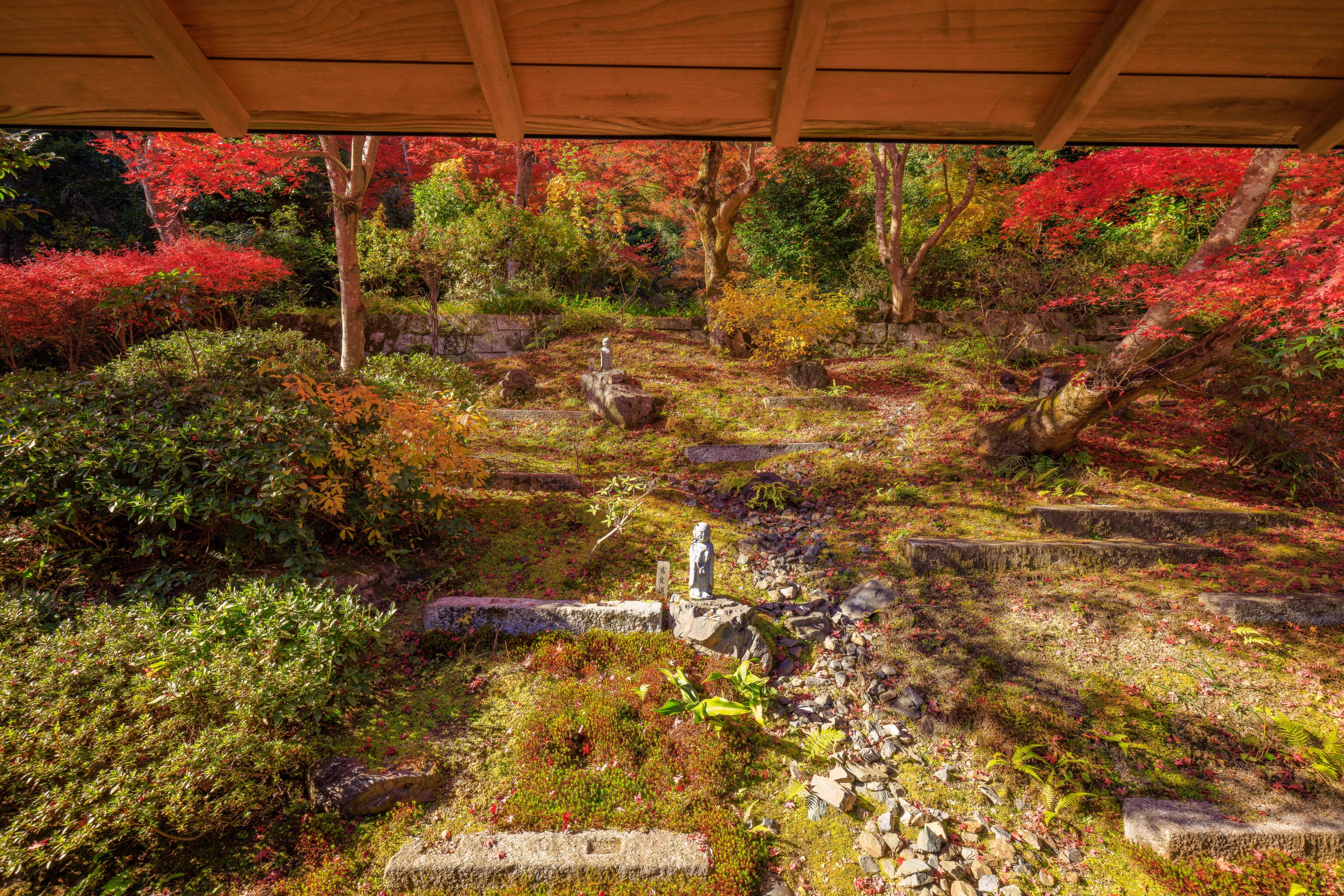
Like many of the temples in Kyoto, the rear of the main hall is up against the hillside. There are many small statues looking down upon the building.
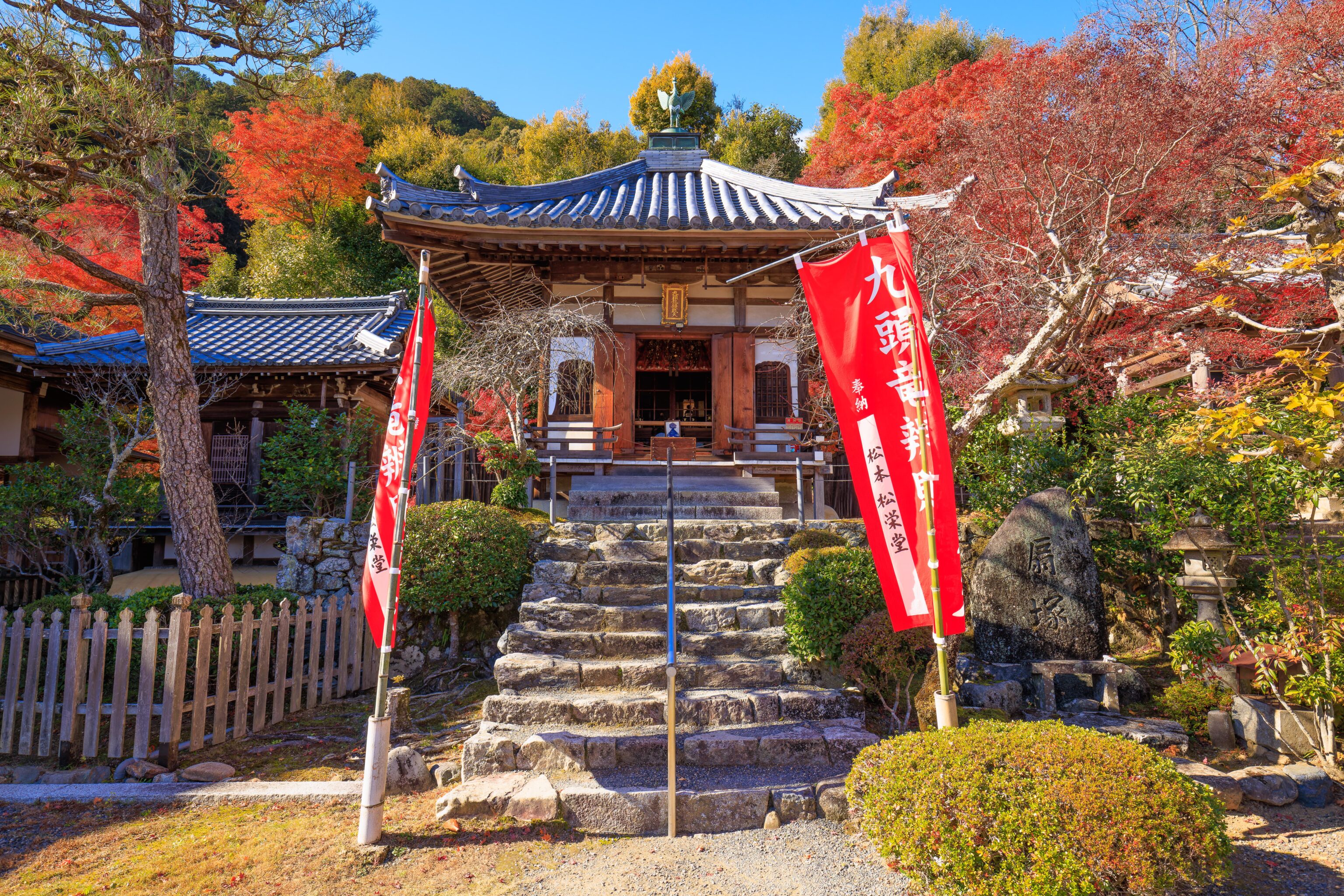
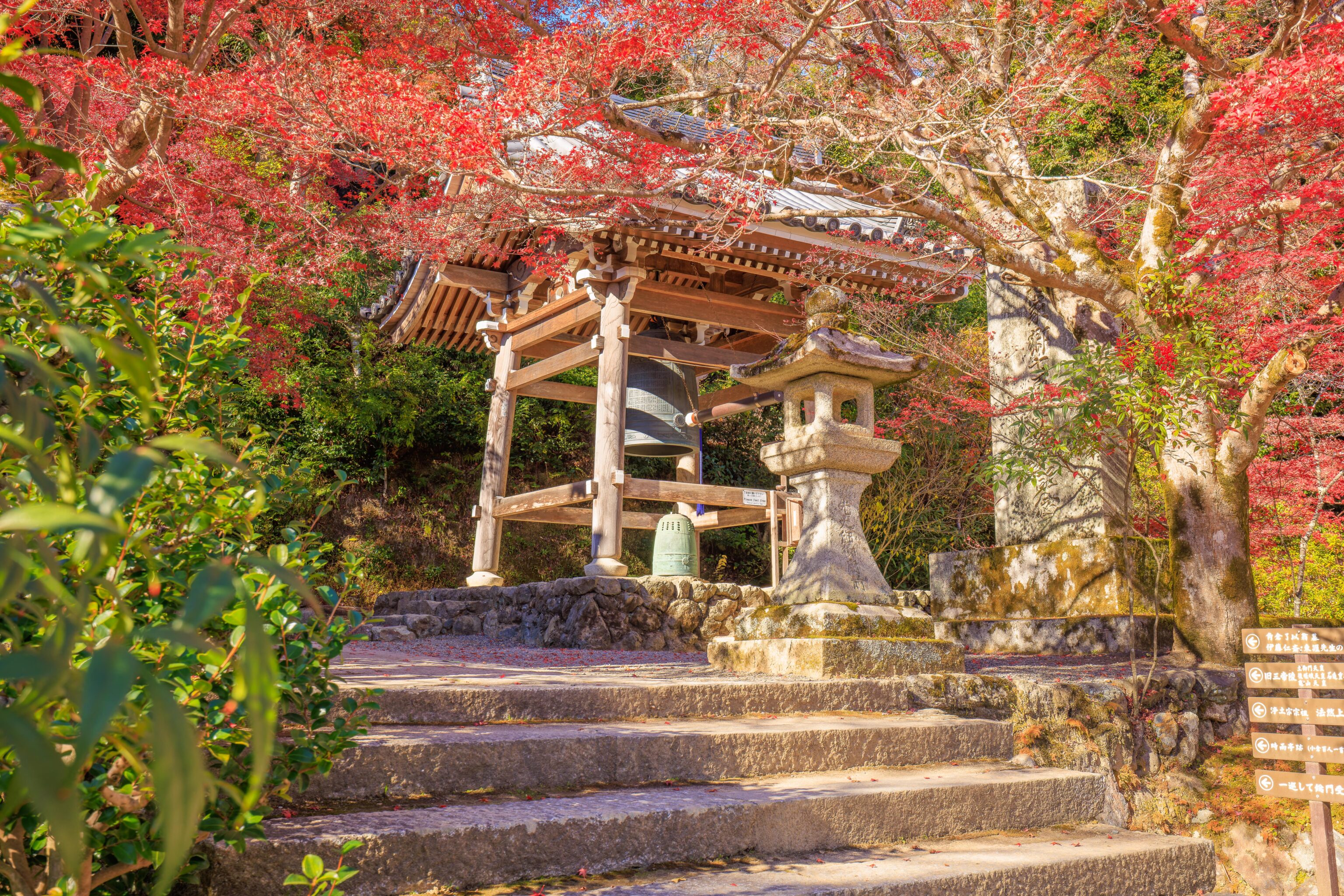
After enjoying the main hall, we walked around the temple grounds a bit. It is a fairly small area.
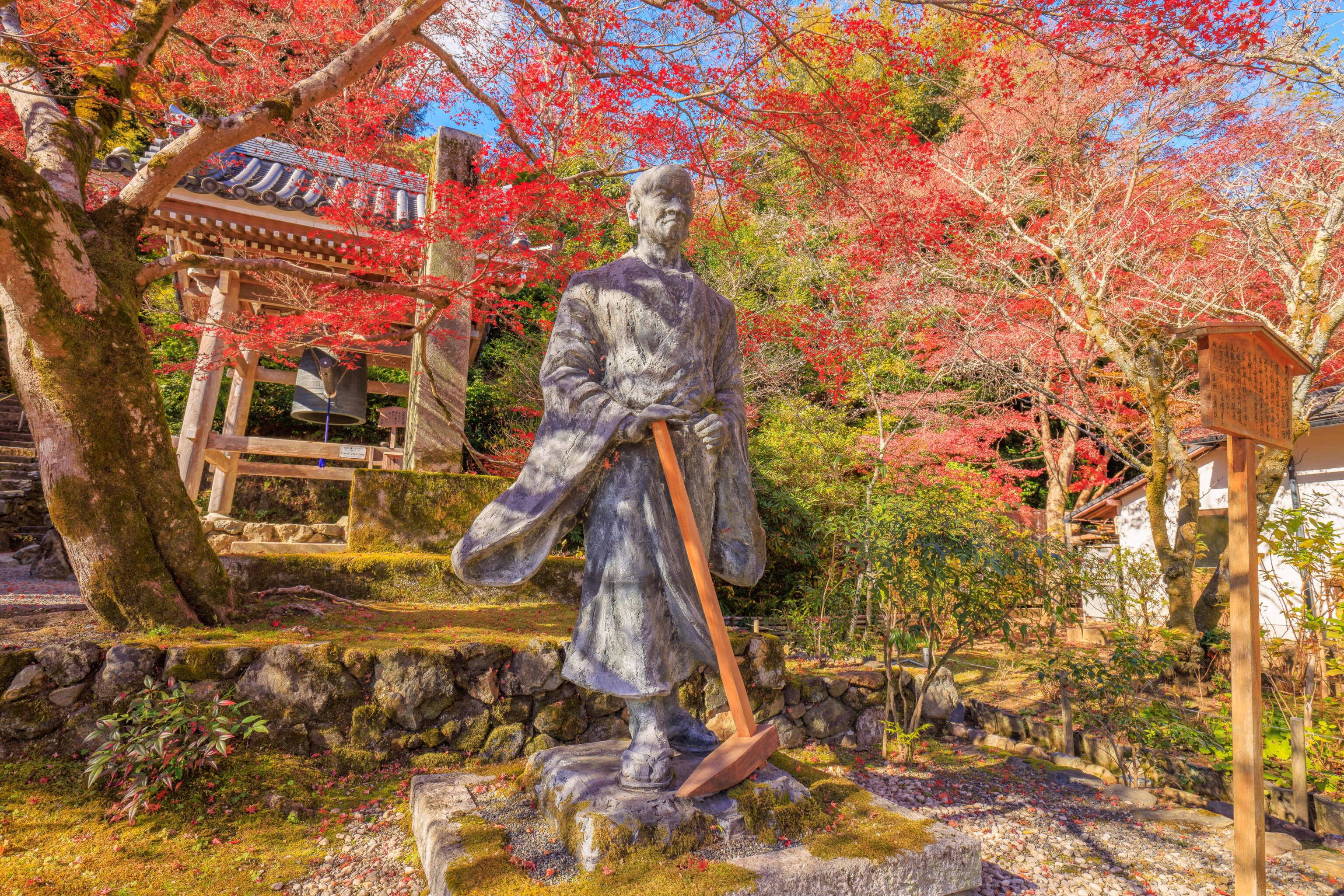
This statue is of Suminokura Ryoi. He is buried here in Nison-in’s cemetery.
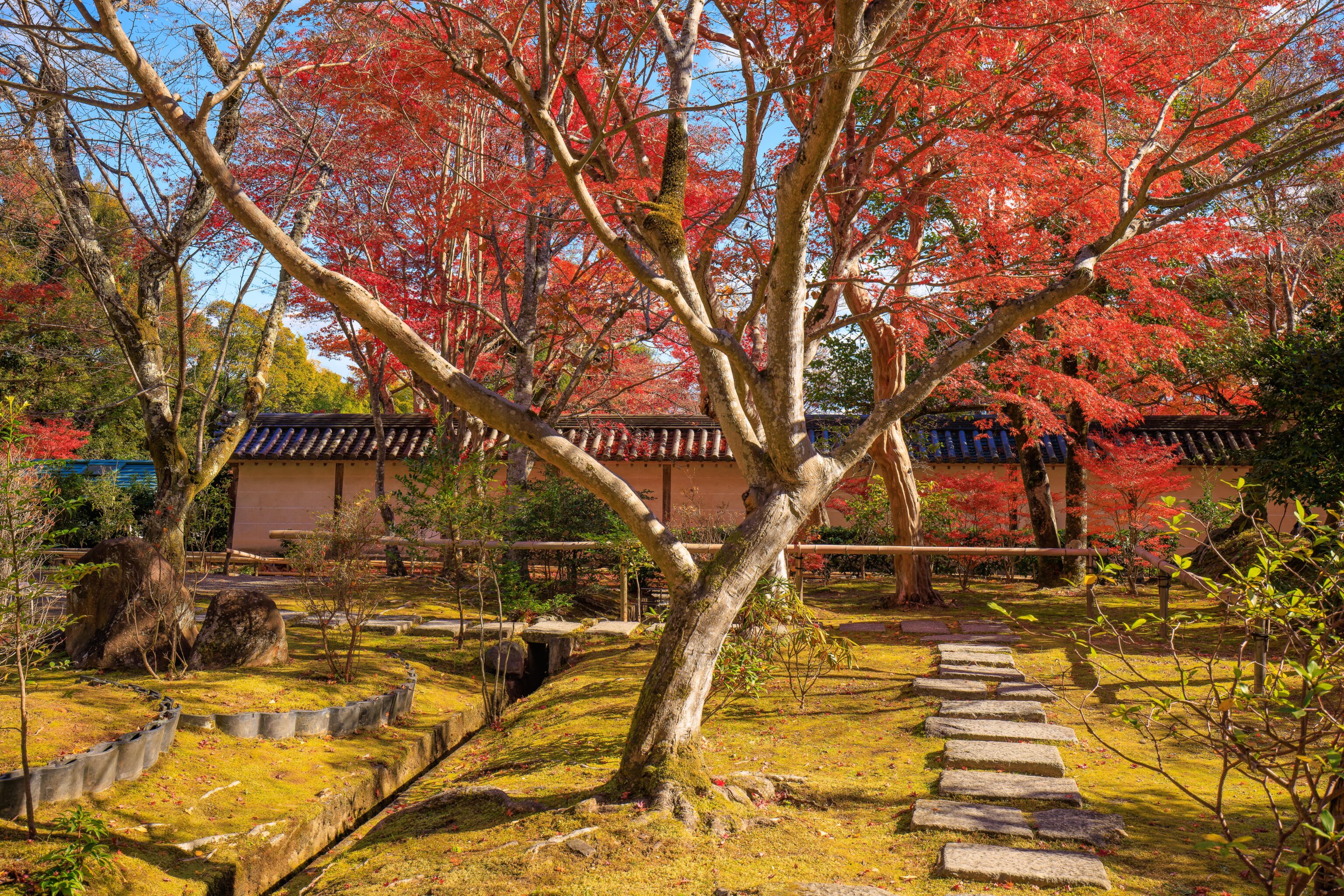
Just a pretty view… The landscaping on the left seems to be held in place by repurposed roof tiles?
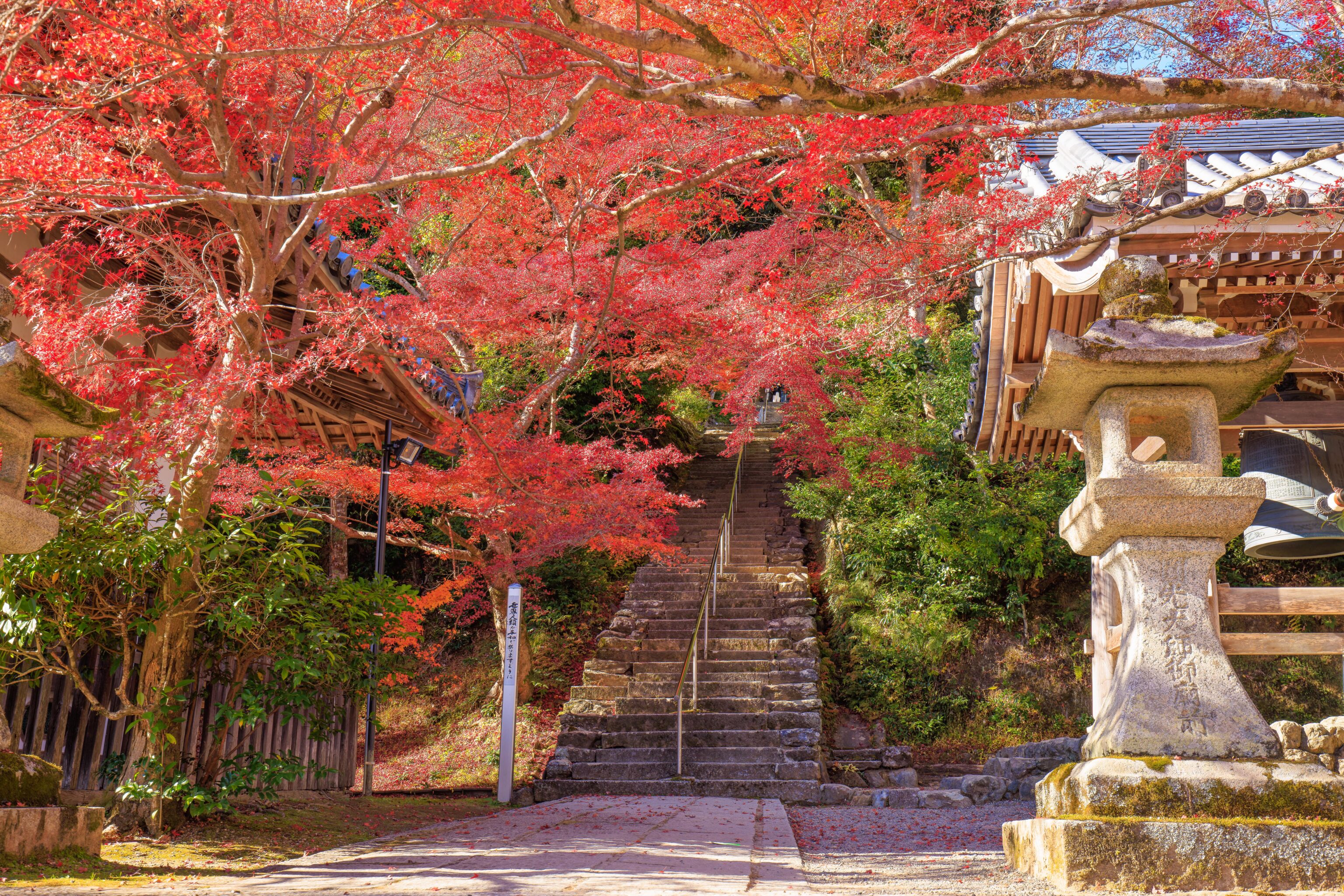
These stairs head up into the temple’s cemetery.
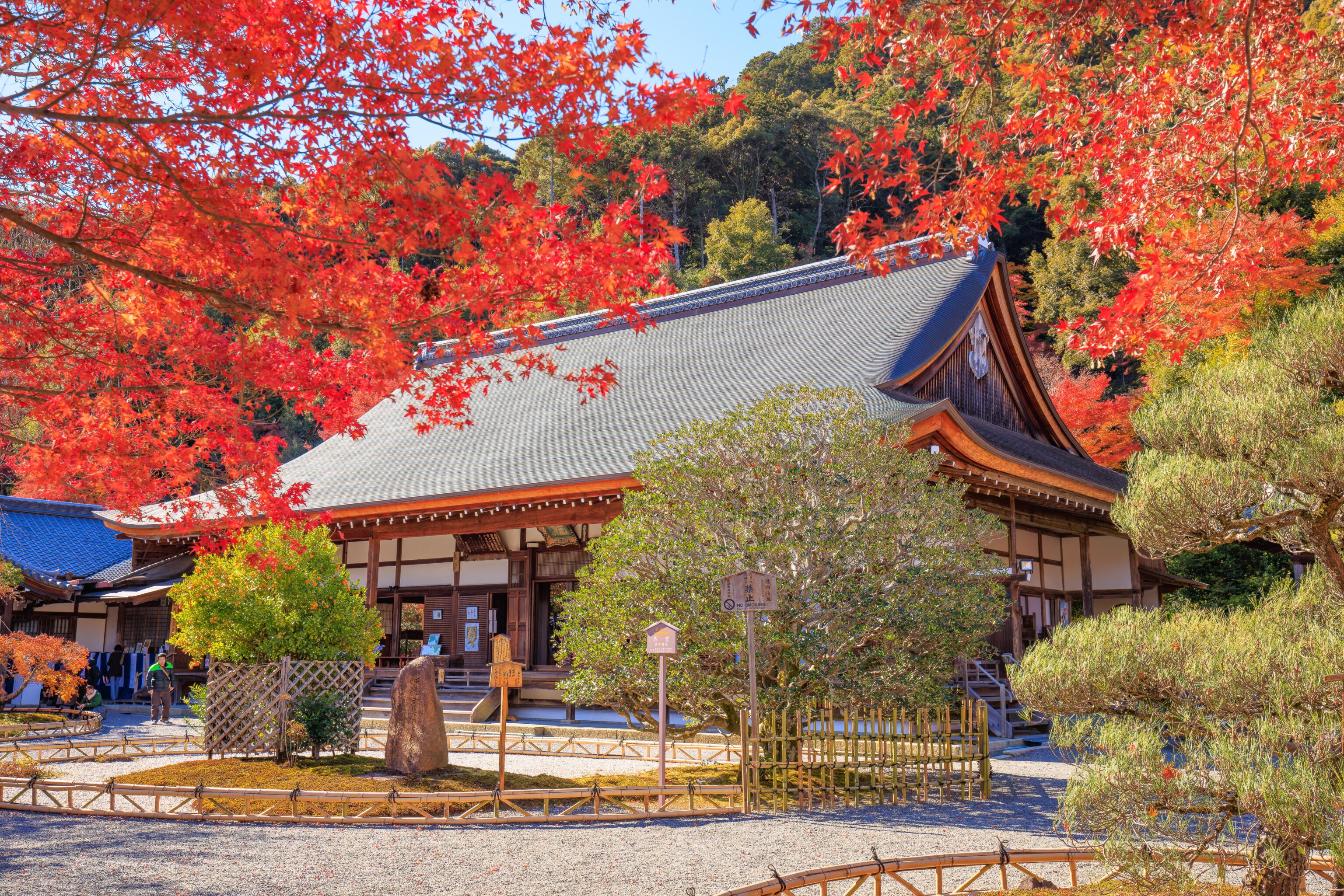
The main hall as seen from the main gate as we exited.
Lunch
It was 11:15am when we left Nison-in. Lunch time! There were a few options nearby.
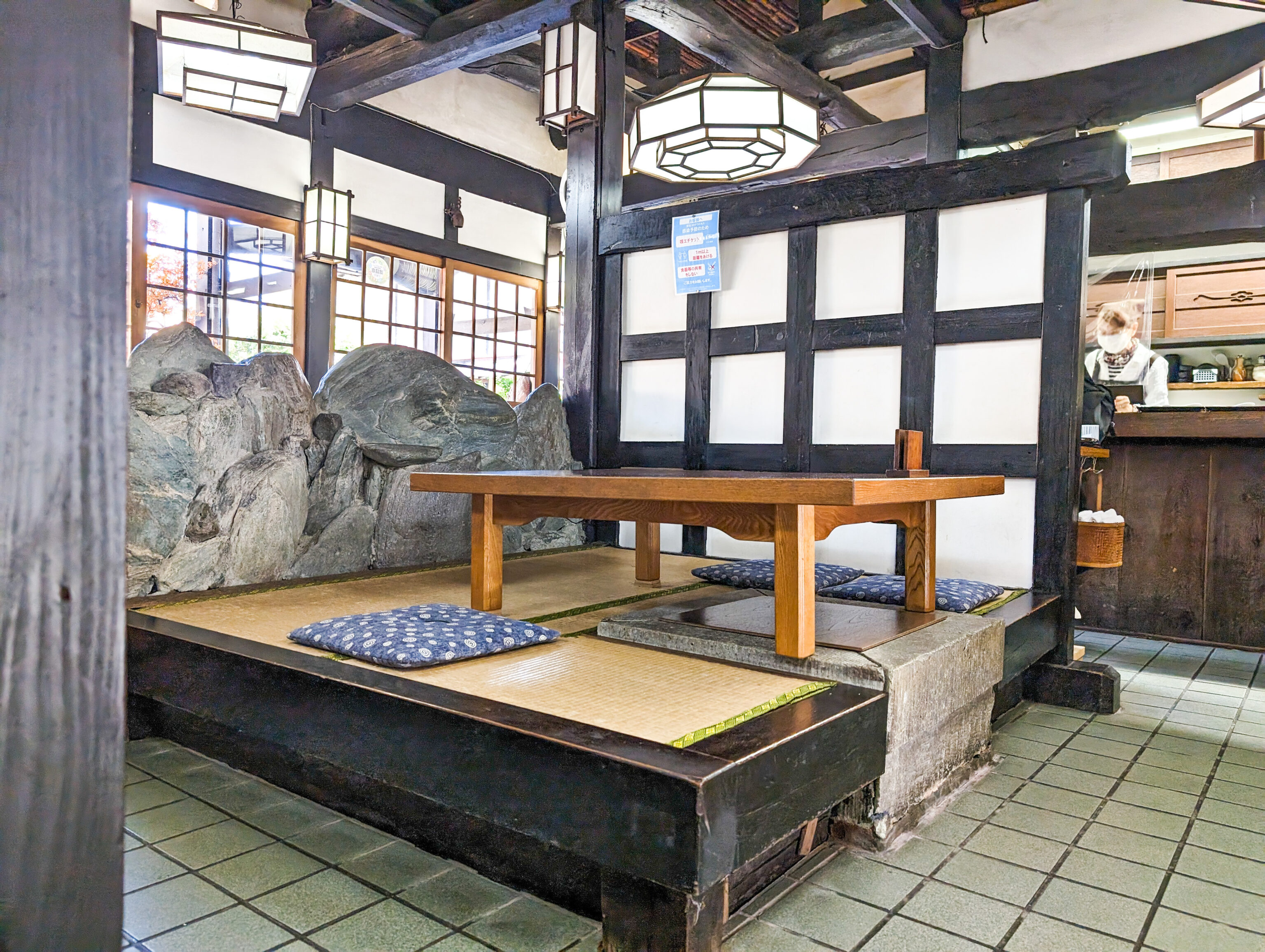
We decided to eat at あだし野 (Azasino / Adashino?), perhaps best described as a typical rustic Japanese restaurant.
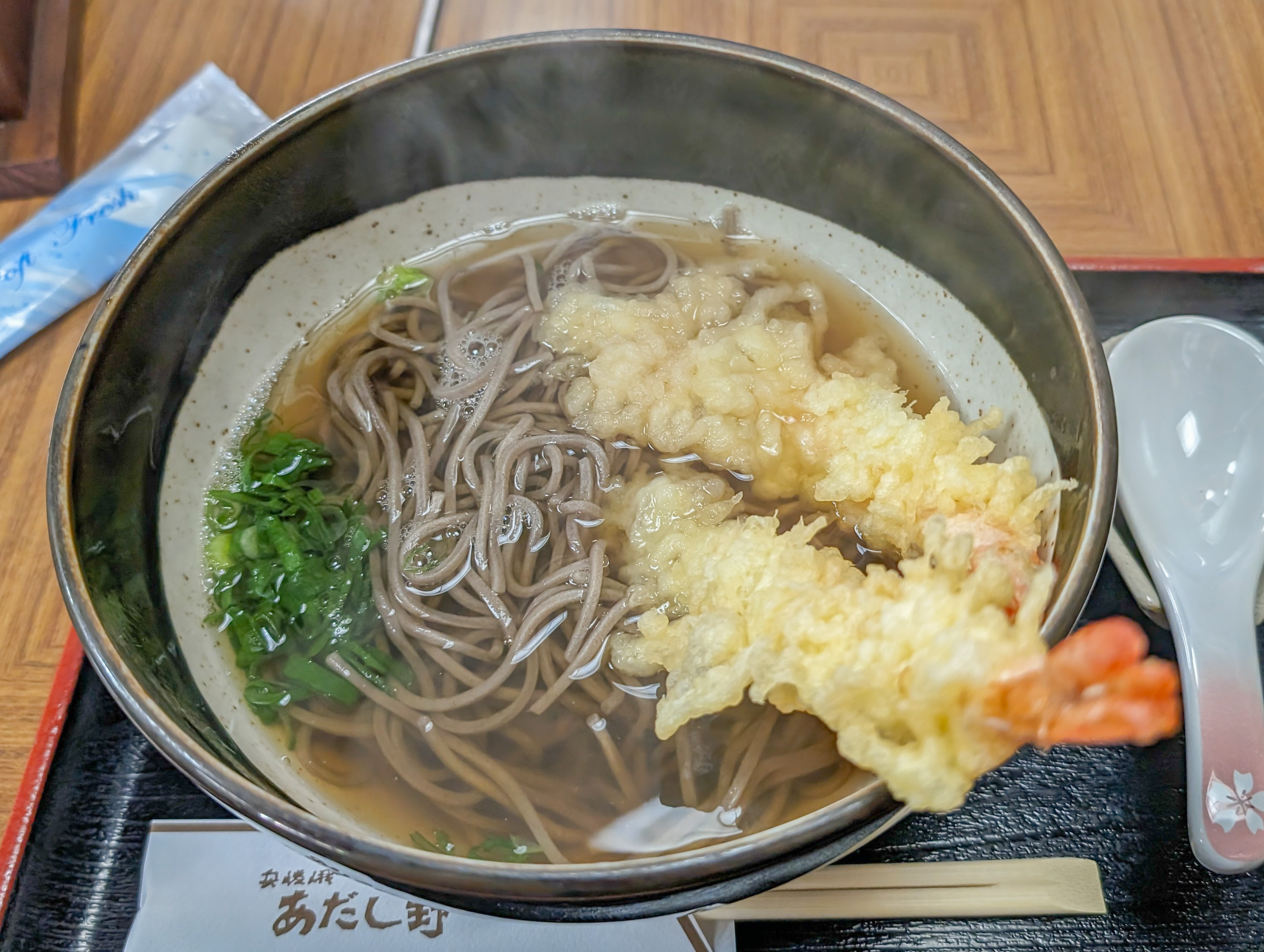
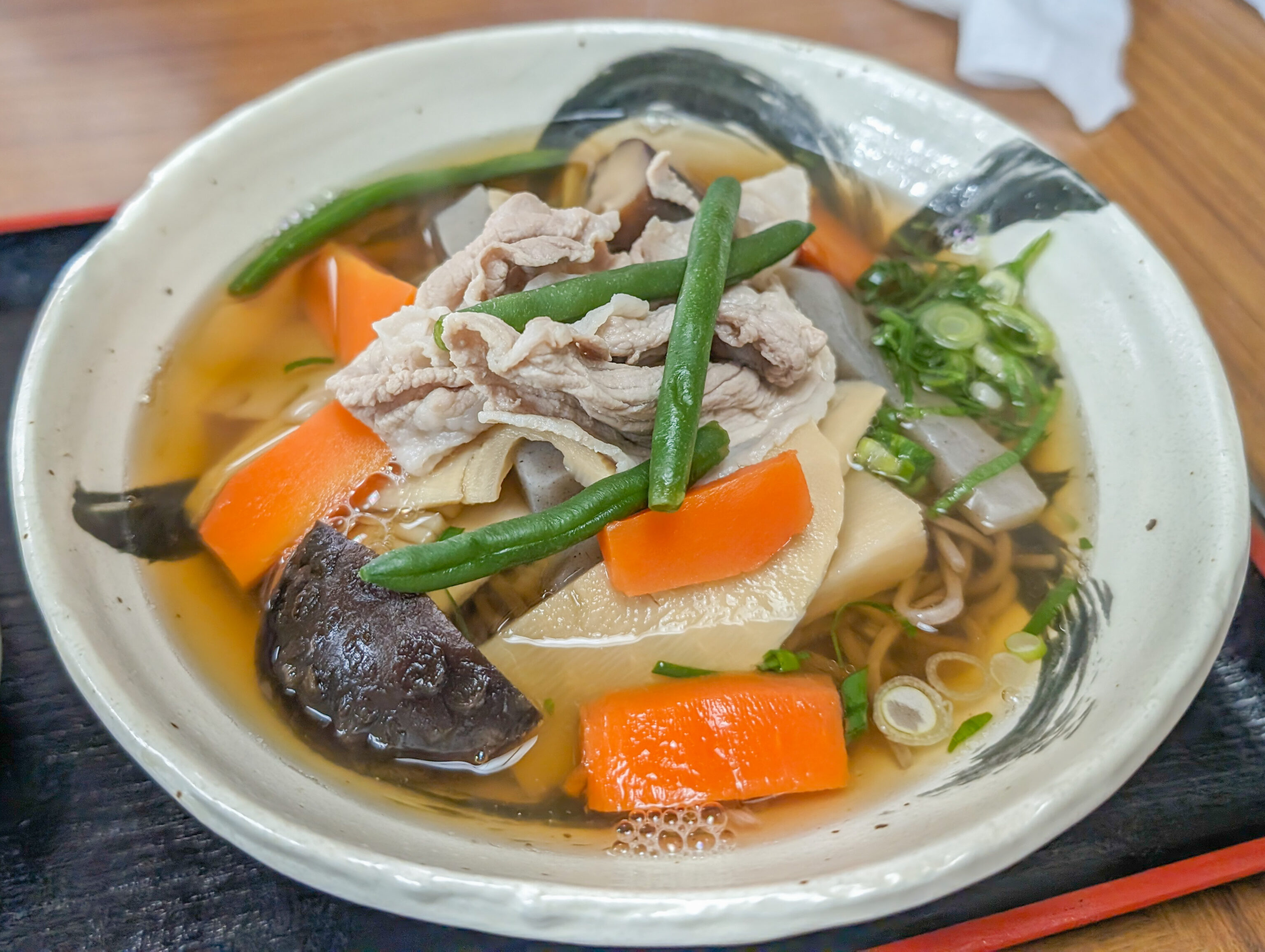
We went for two different soba noodle dishes. Both were very satisfying, through not particularly special.
Gio-ji
Our next destination was Gio-ji, a temple just to the north of Nison-in’s cemetery area. It was just a short walk away from our lunch spot.
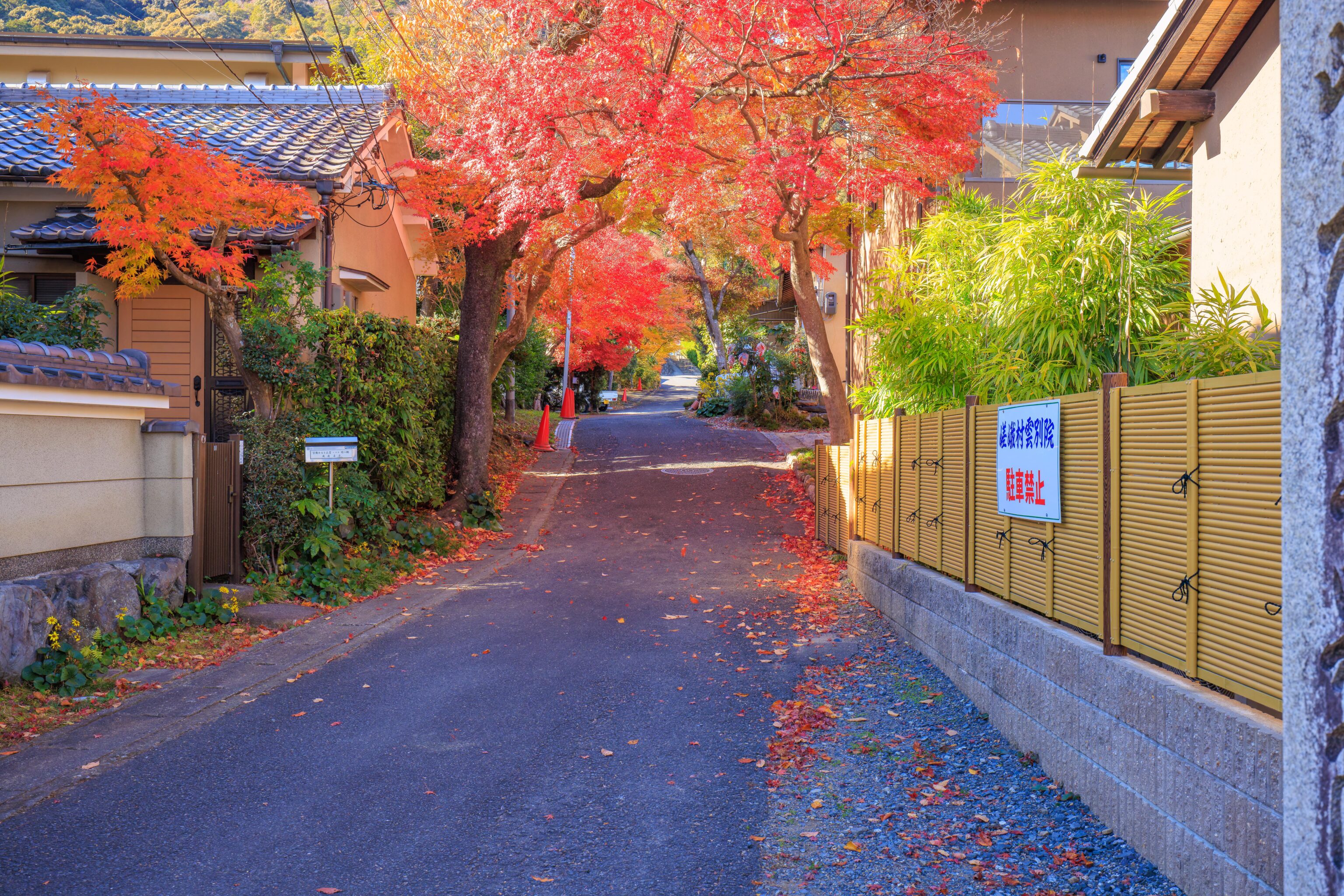
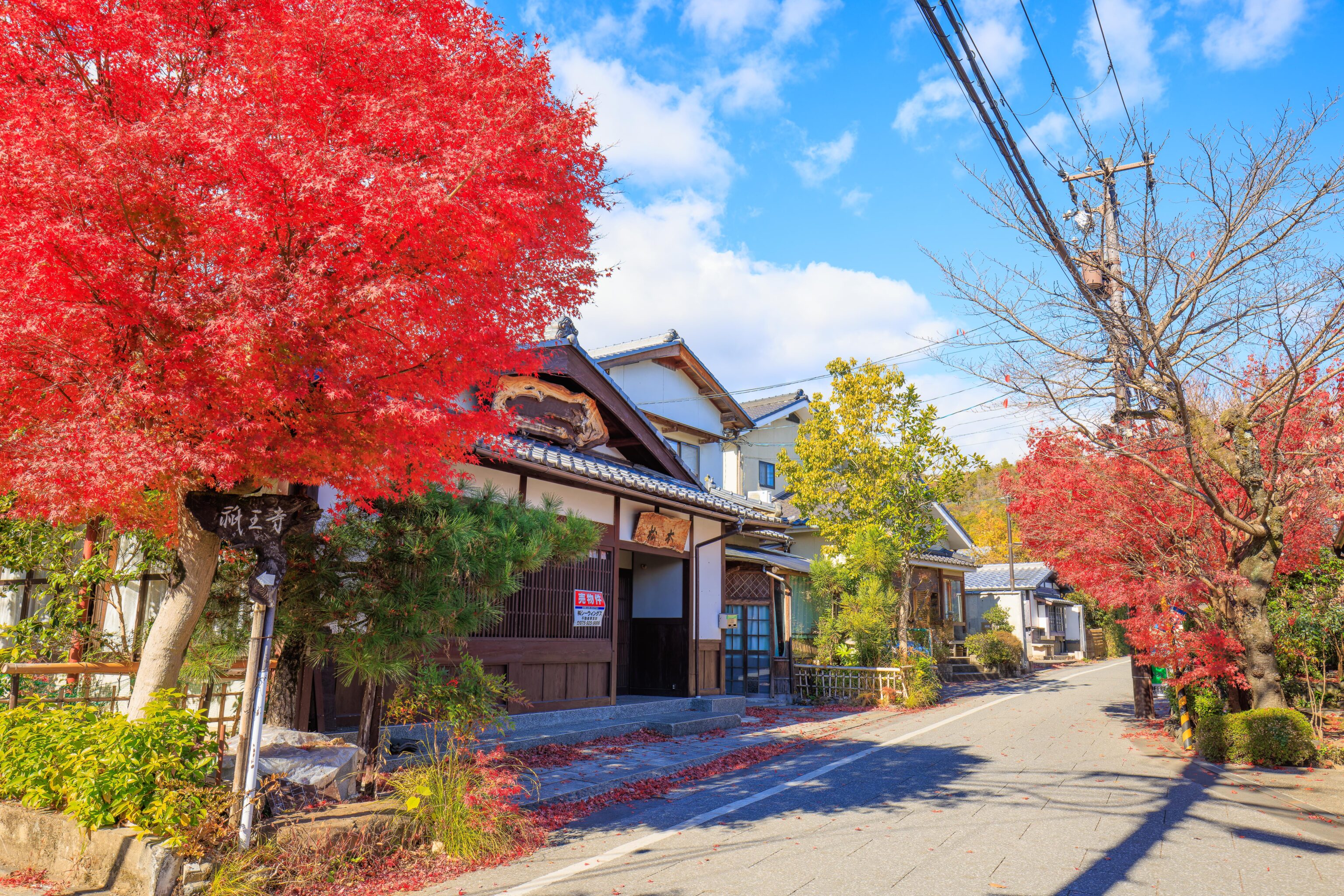
The walk along the small road leading to the temple had a bit of fall foliage.
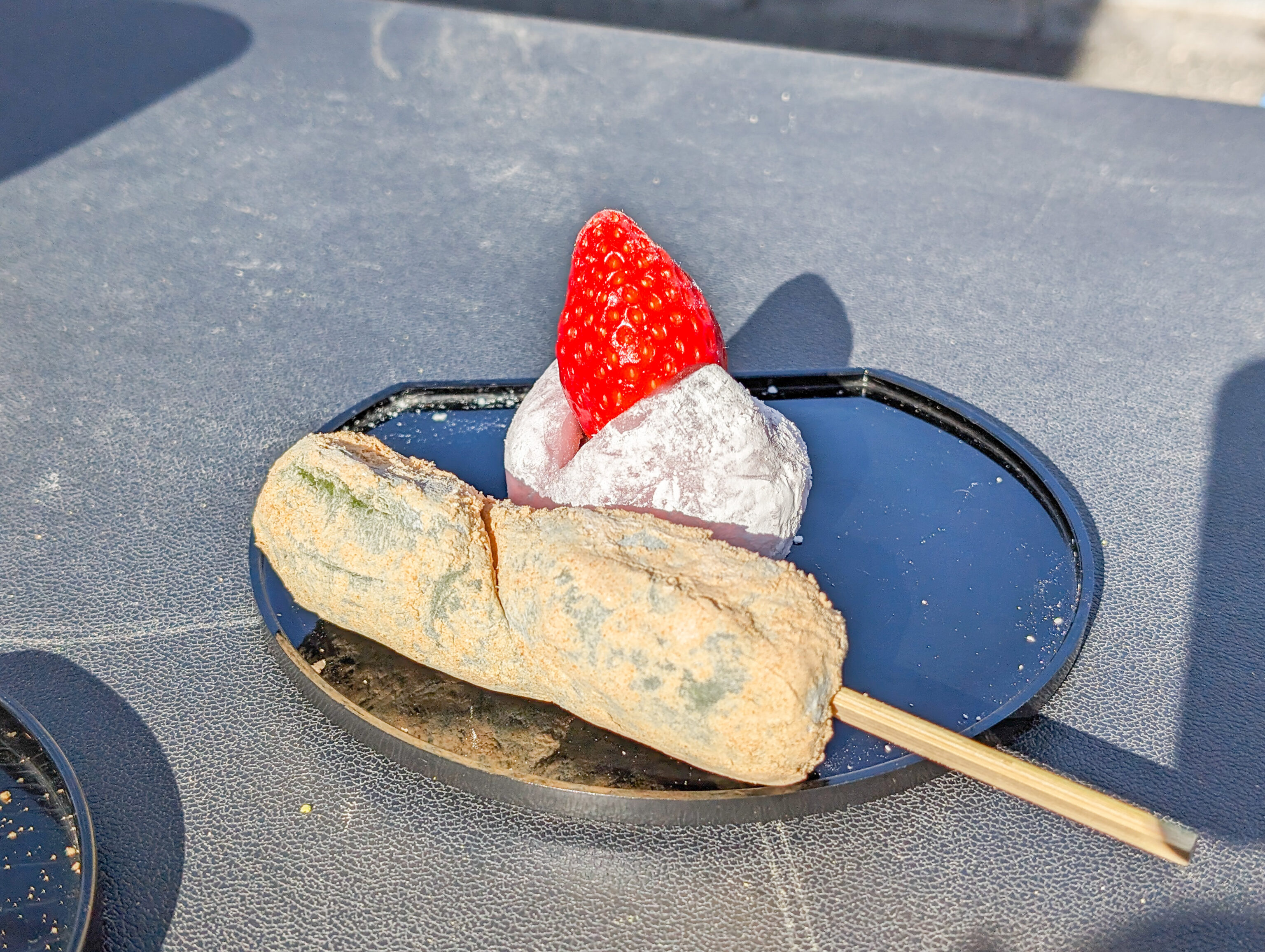
We stopped at 一夢庵 (Hitomuan / Ichimuan?) for a small snack. Both items were quite satisfying!
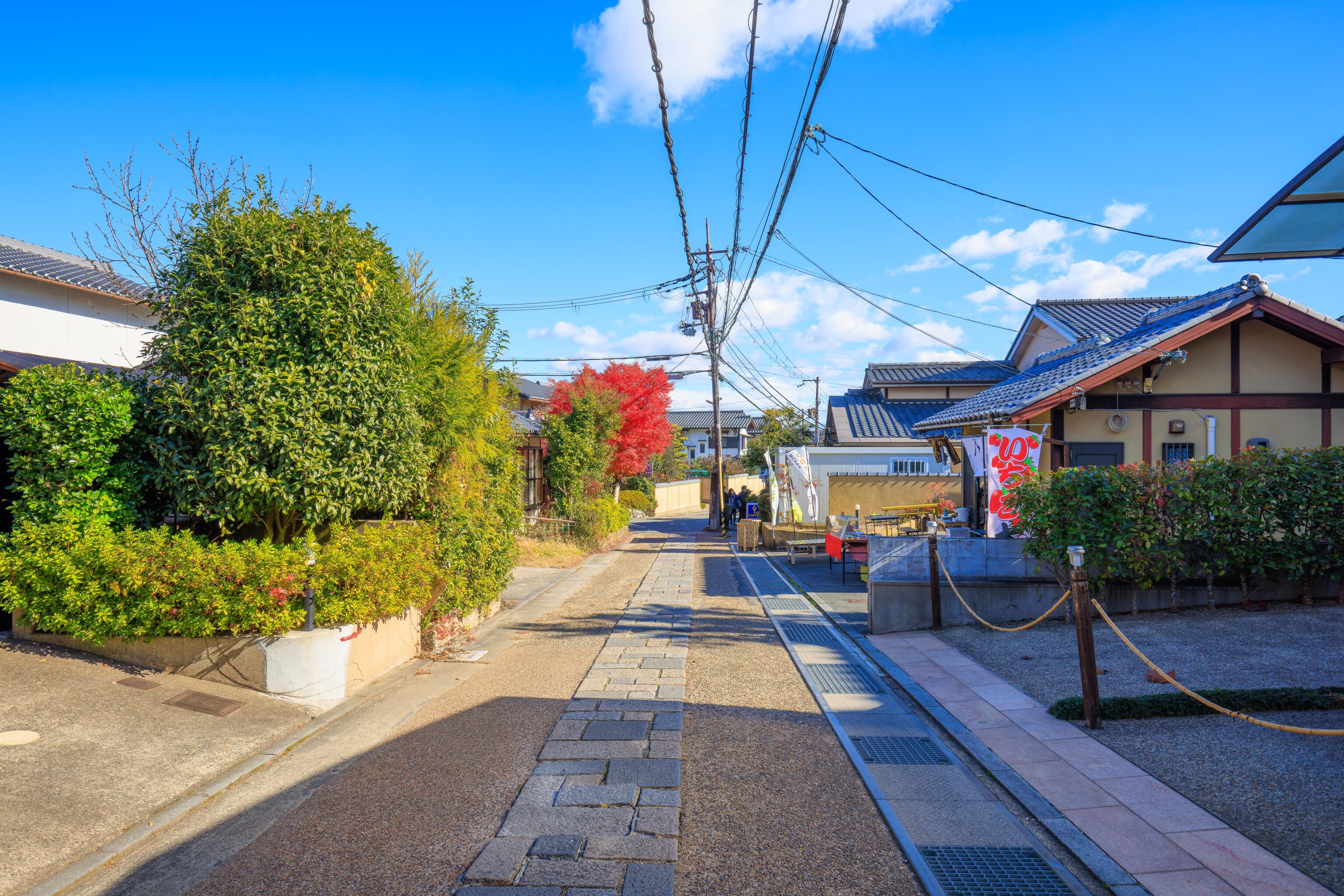
Looking back at the small shop that we just snacked at. It wasn’t very busy here at all.
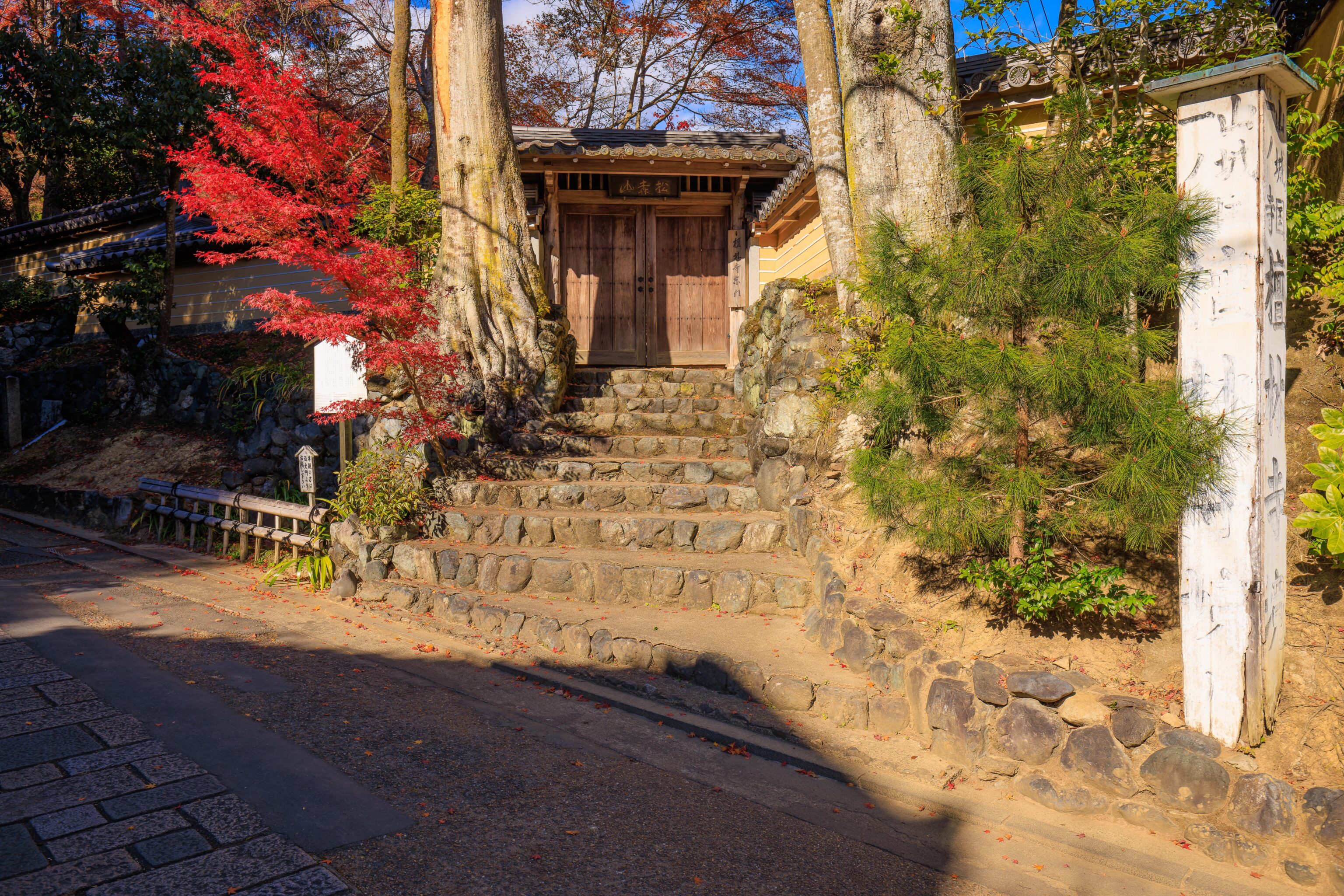
We passed by this entrance to another temple, Danrin-ji. The sign on the left reads:
It is said Emperor Saga's wife, Tachibana Kachiko, founded the Danrin-ji temple during the early part of the Heian period. The empress was said to be beautiful in appearance, excelling in woman's virtue, a lover of arts & science, and was said to have founded a school "Gakkan-in" for the Tachibanas. There was a monk from China visiting at this time, Yikong (Jap Giku), whom the Empress invited to come teach at the temple. Under his tutelage Zen Buddhism was taught at Danrin-ji, and helped propel the major surge in the adoption of Zen Buddhism throughout Japan.
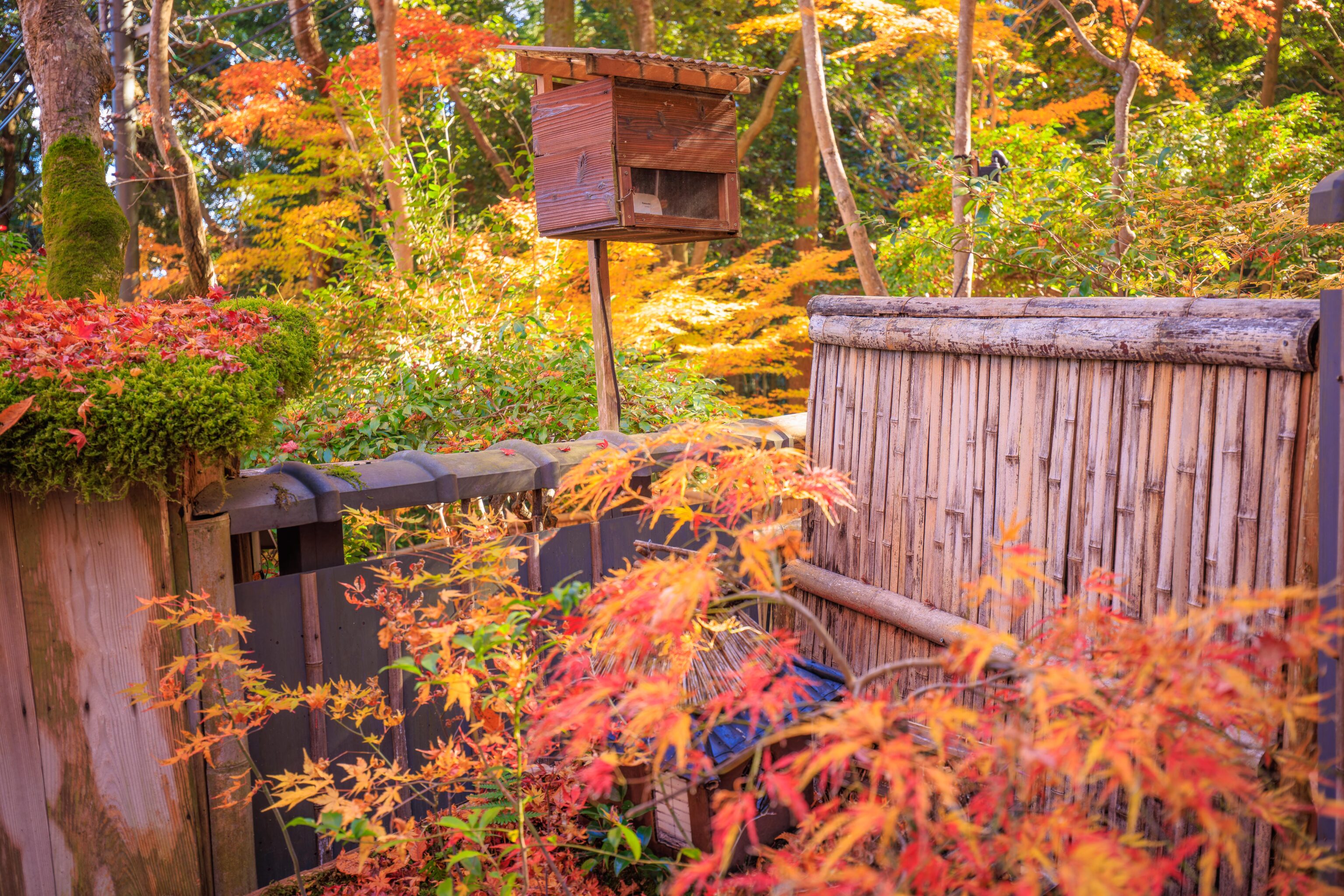
Gio-ji was just beyond, at the end of the road. This somewhat random scene was by the entrance. A nearby sign describes the temple:
Gioji Temple (Ojoin Temple) The Gioji Temple, of the Shingon Buddhist sect and formerly known as Ojoin, is said to have been founded by Nembutsubo Ryochin, a disciple of the priest Honen. The main building, reconstructed in 1895, enshrines a statue of the Buddha Dainichi, who symbolizes oneness with the universe. There is also a statue of Taira no Kiyomori, the 12th century Taira clan chieftain, and four statues of nuns, one of whom is Gio, a great beauty who had renounced the world while still young after she had lost favor with Kiyomori. In the precincts stands a pagoda which is said to be the grave of Gio and her sister, and another pagoda dedicated to Kiyomori.
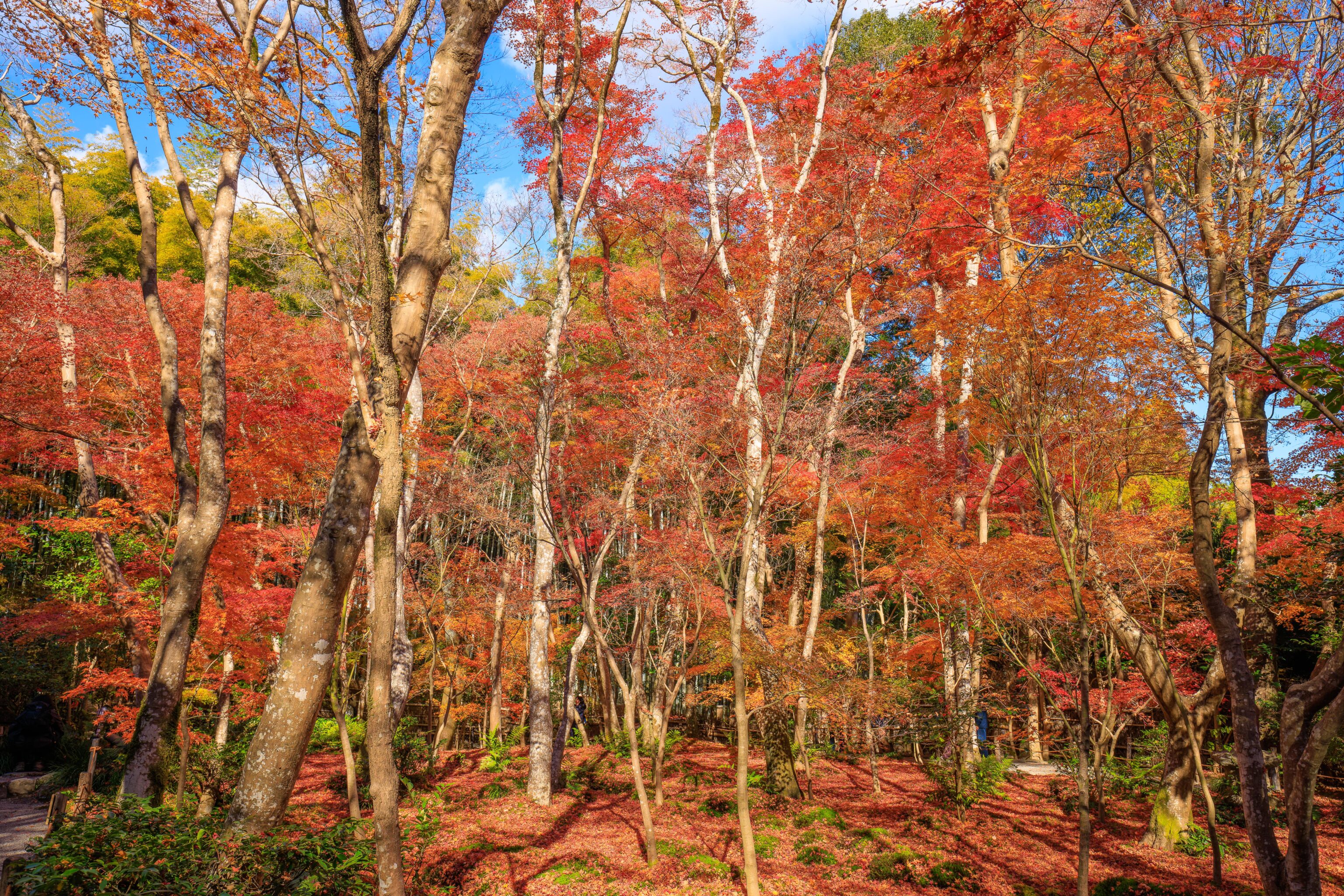
Another scene near the entrance. While there were still many maple leaves on the trees, there seemed to be just as many on the ground!
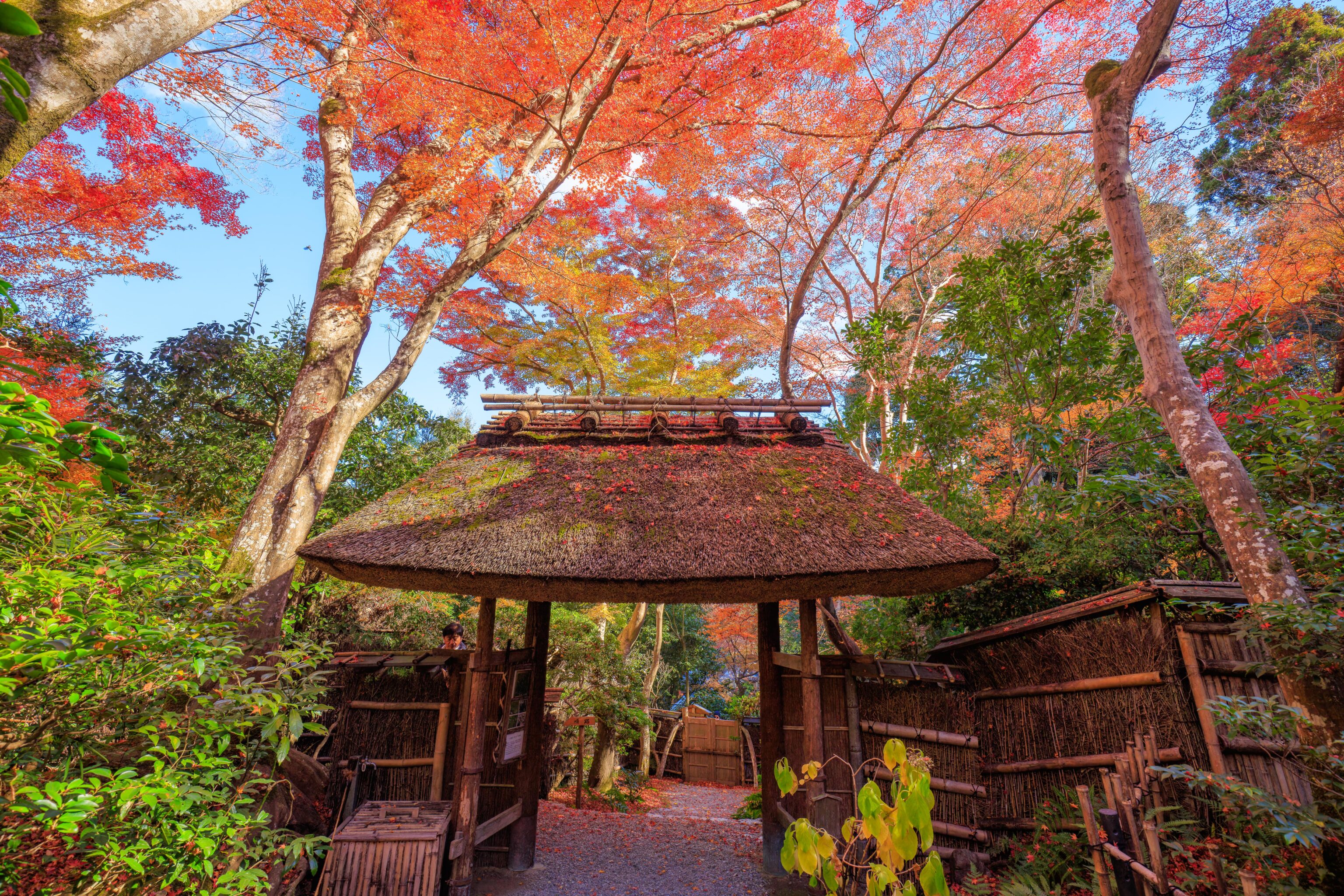
A small gate that leads into the actual temple grounds.
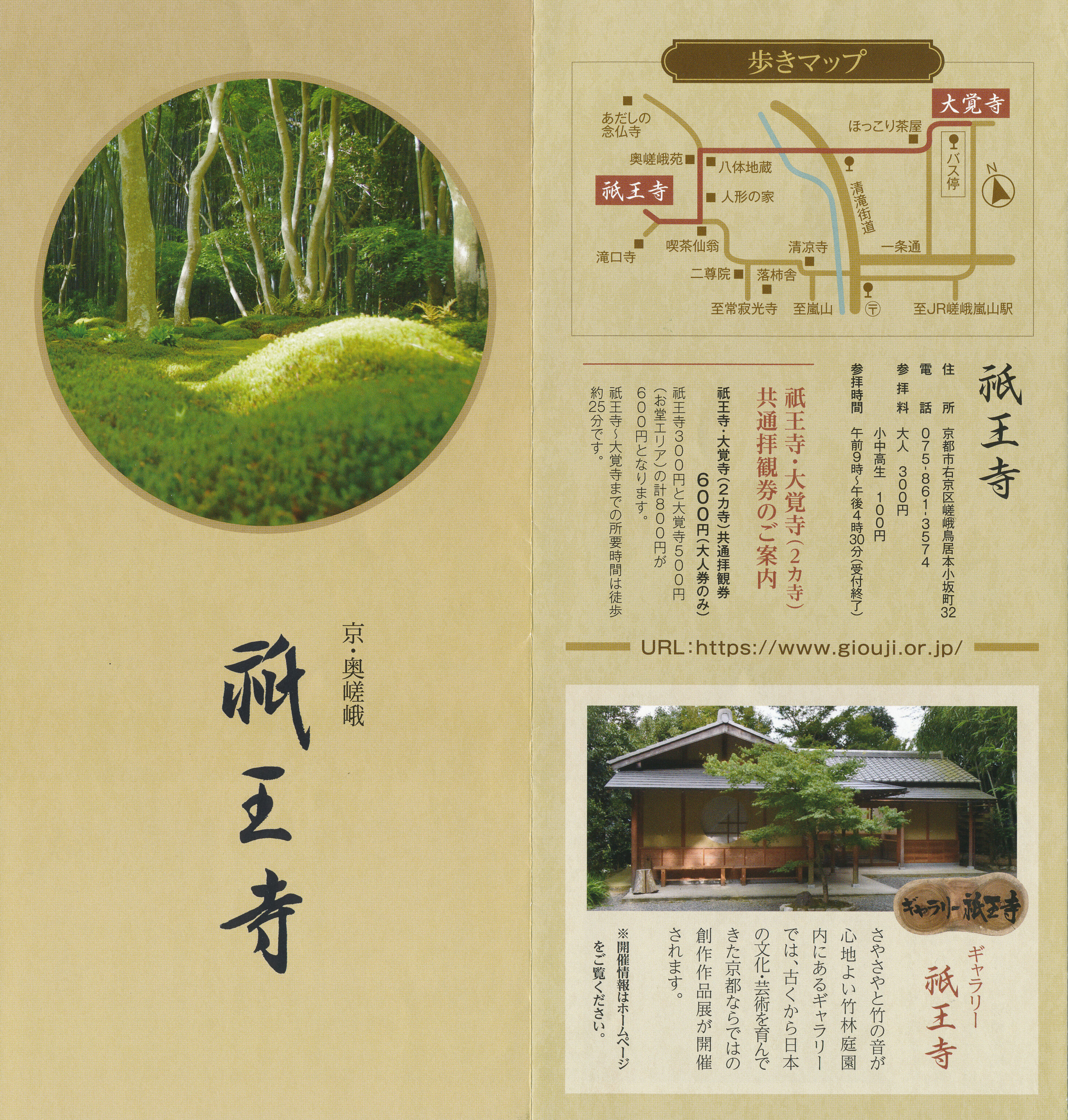
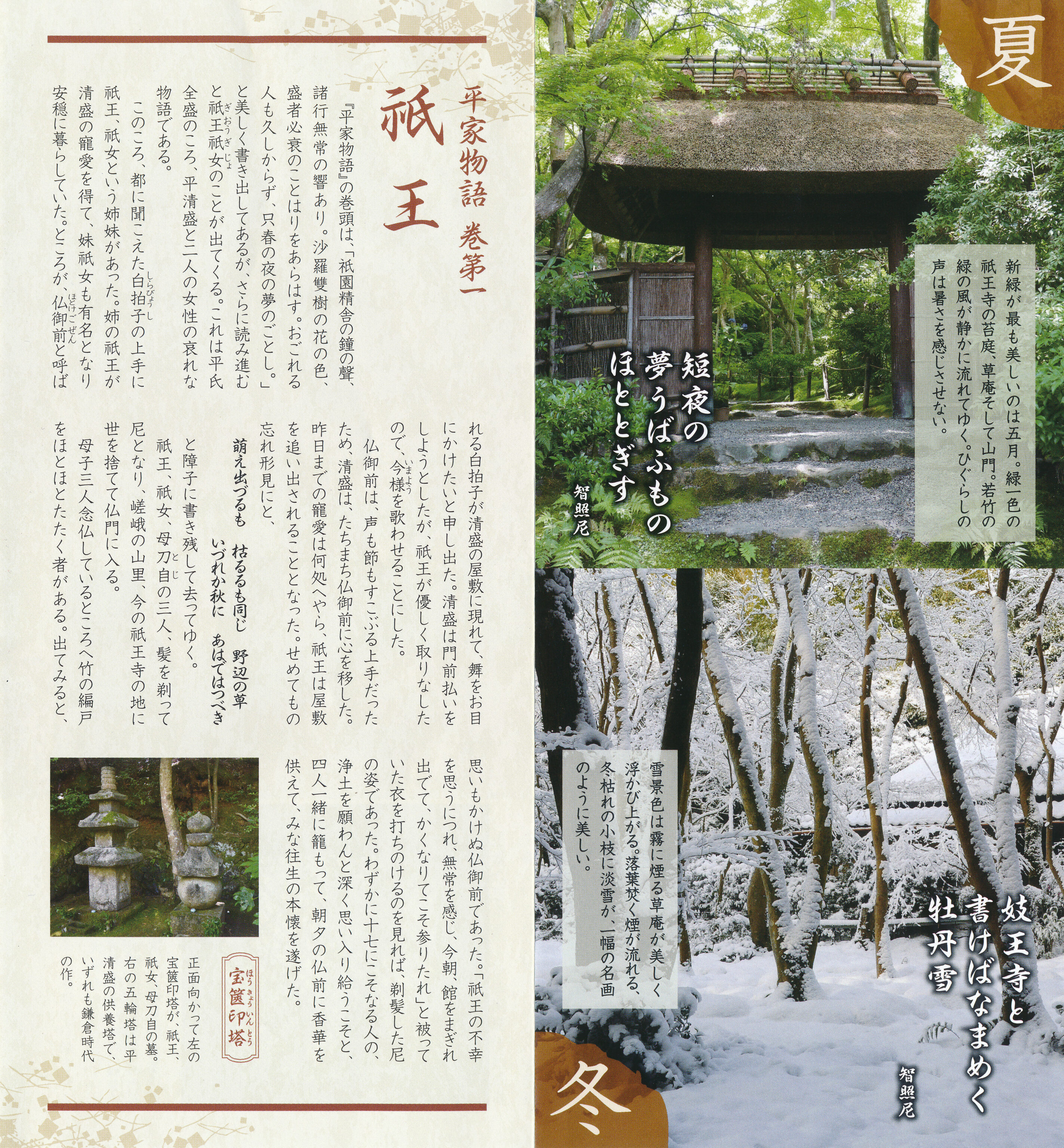
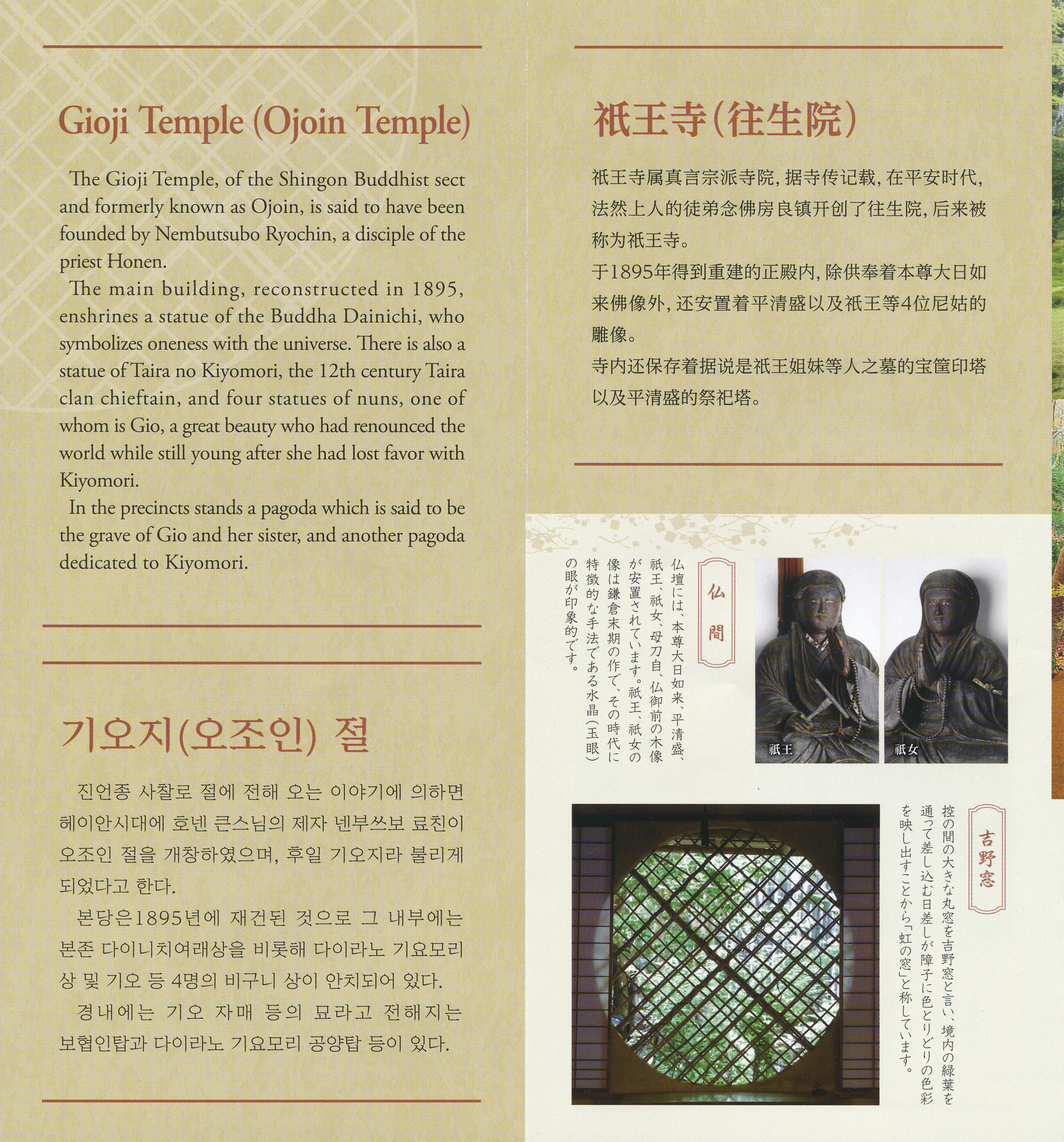
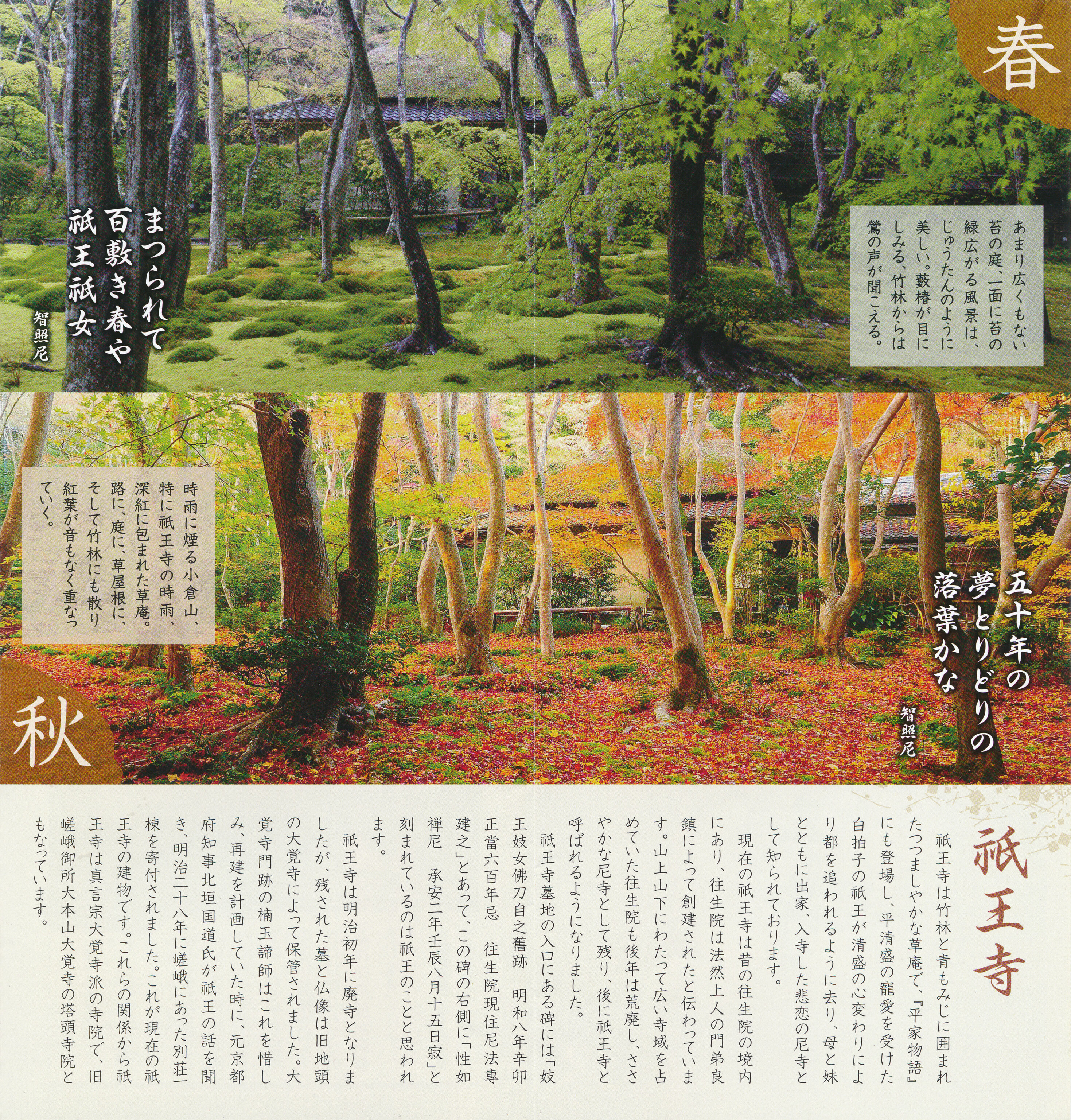
A pamphlet was provided upon entry. It is mostly in Japanese with just bit of English, Chinese, and Korean text.
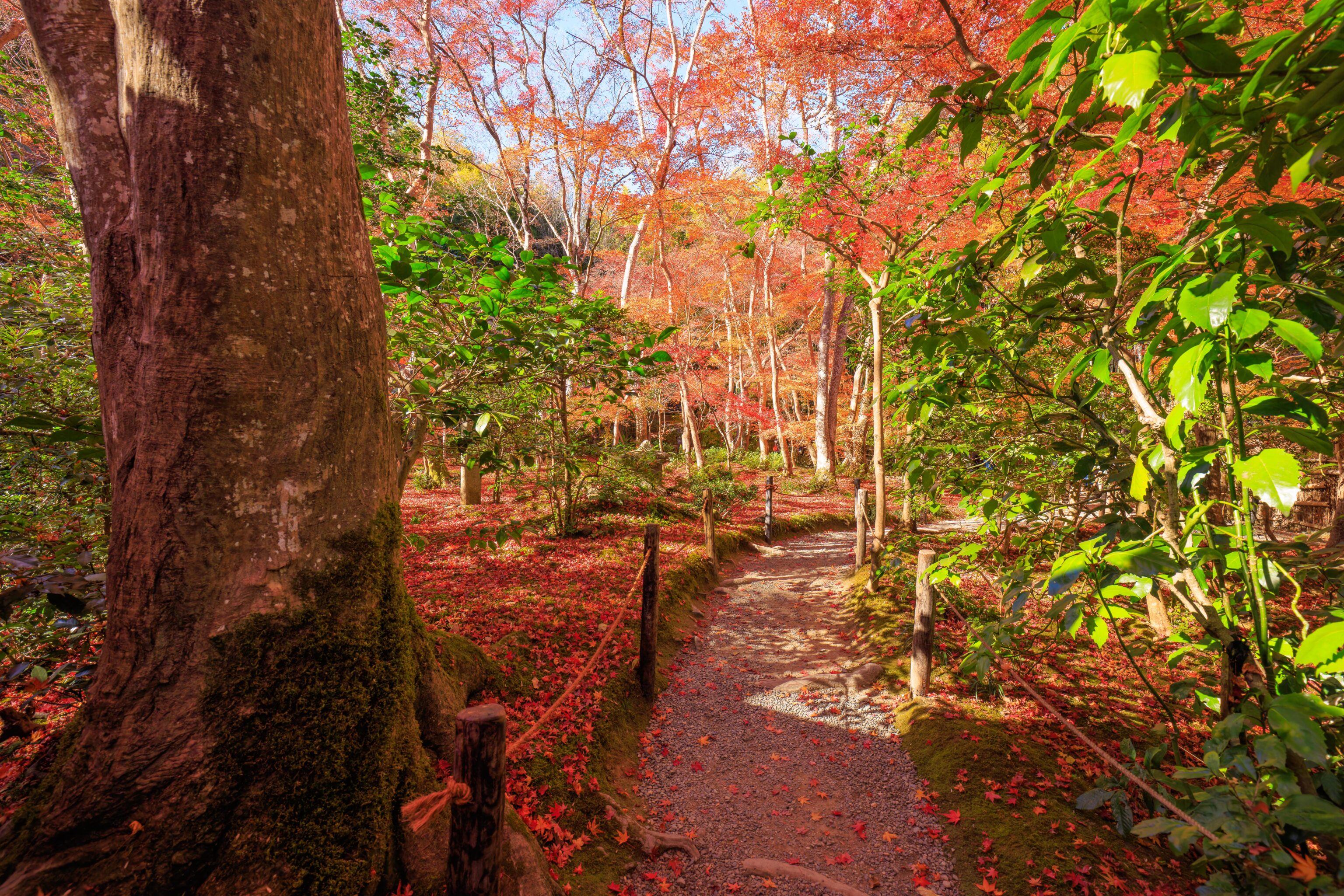
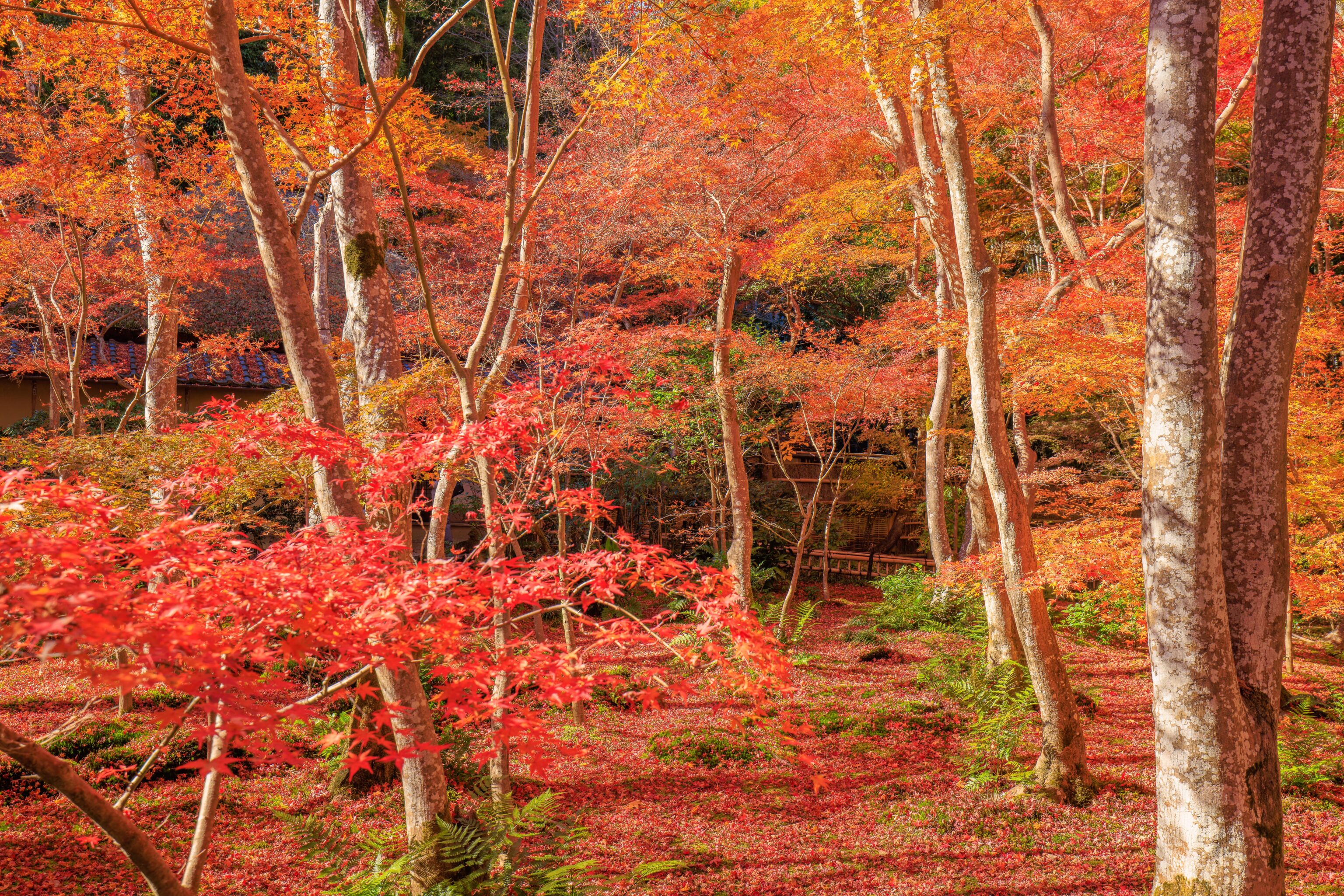
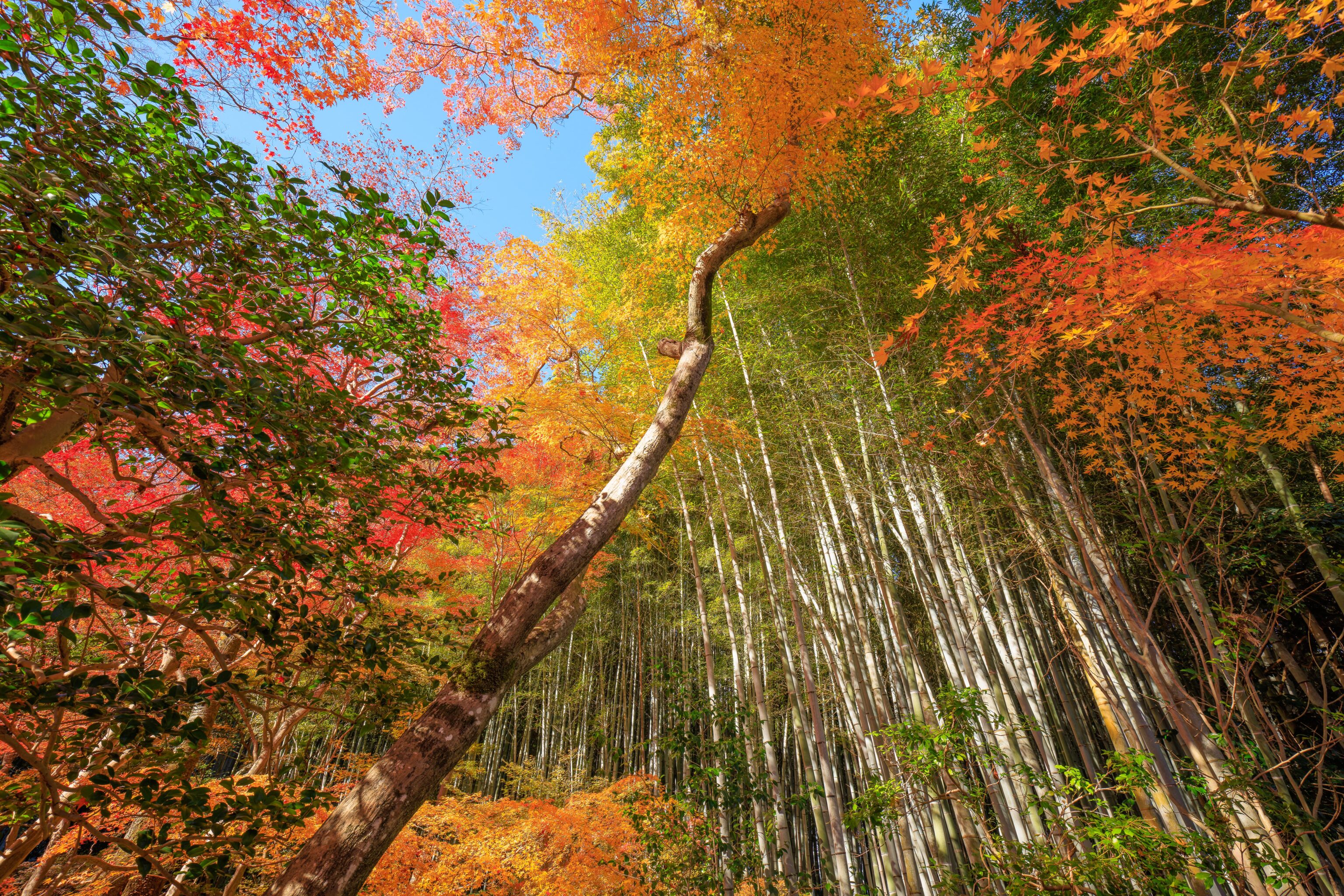
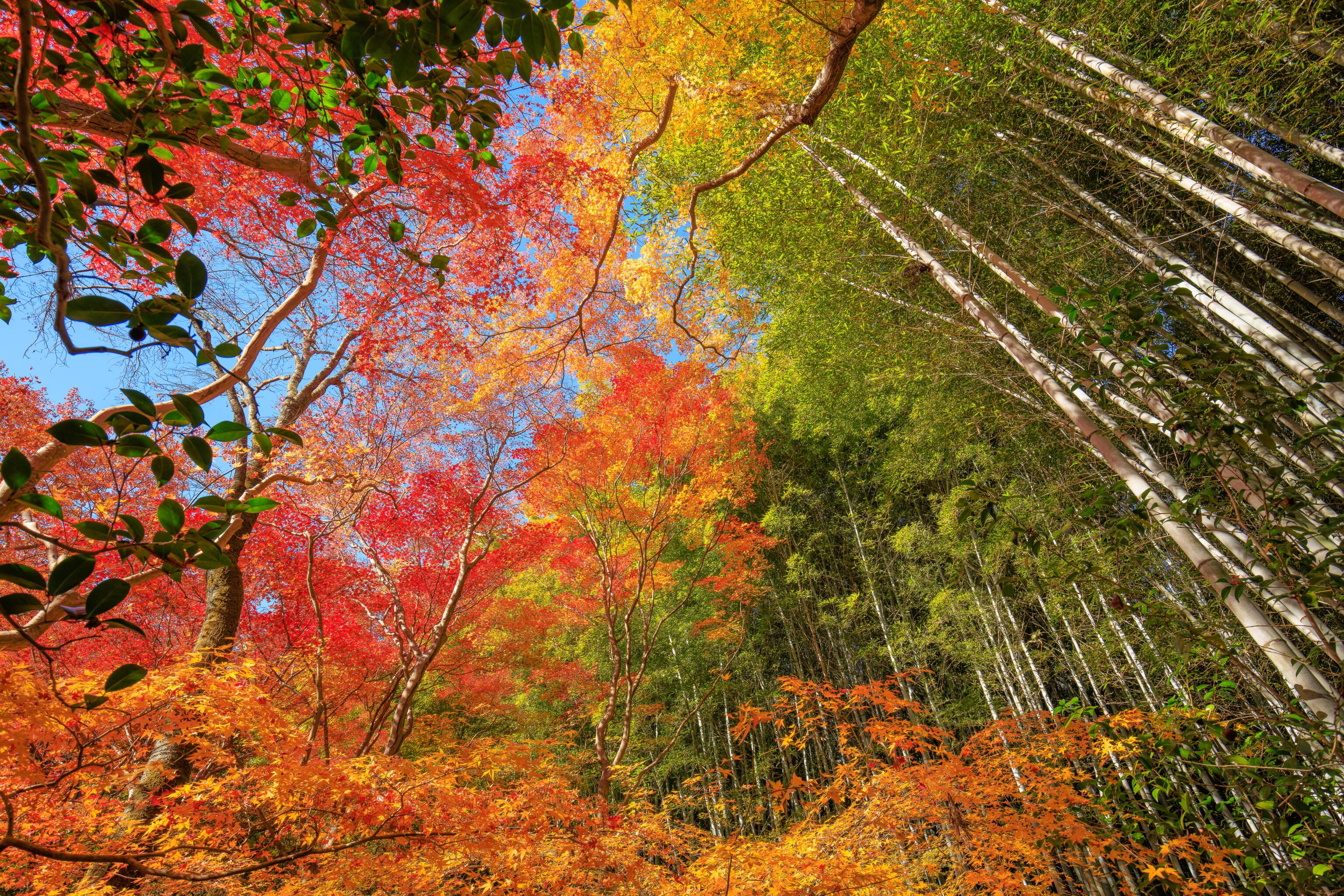
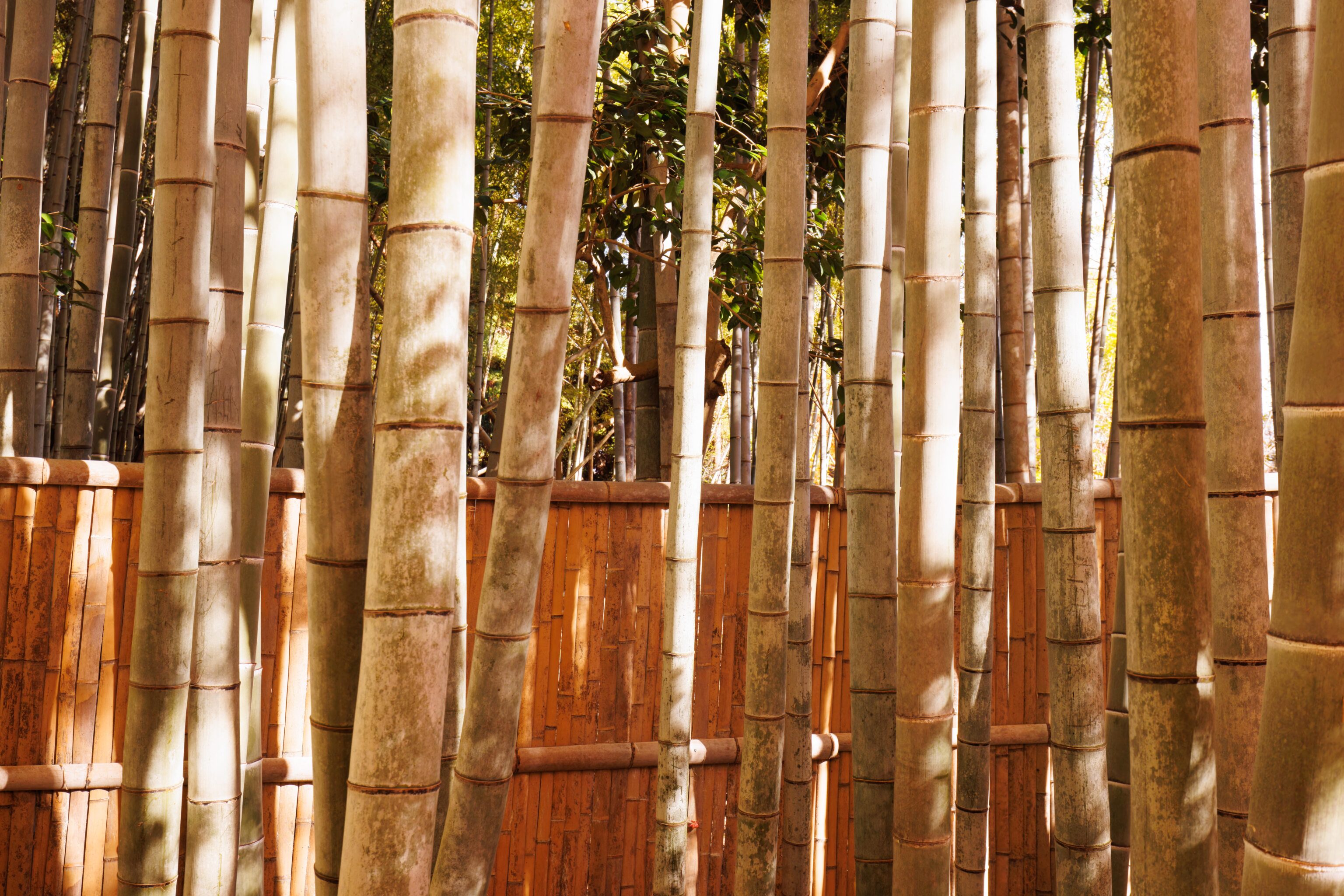
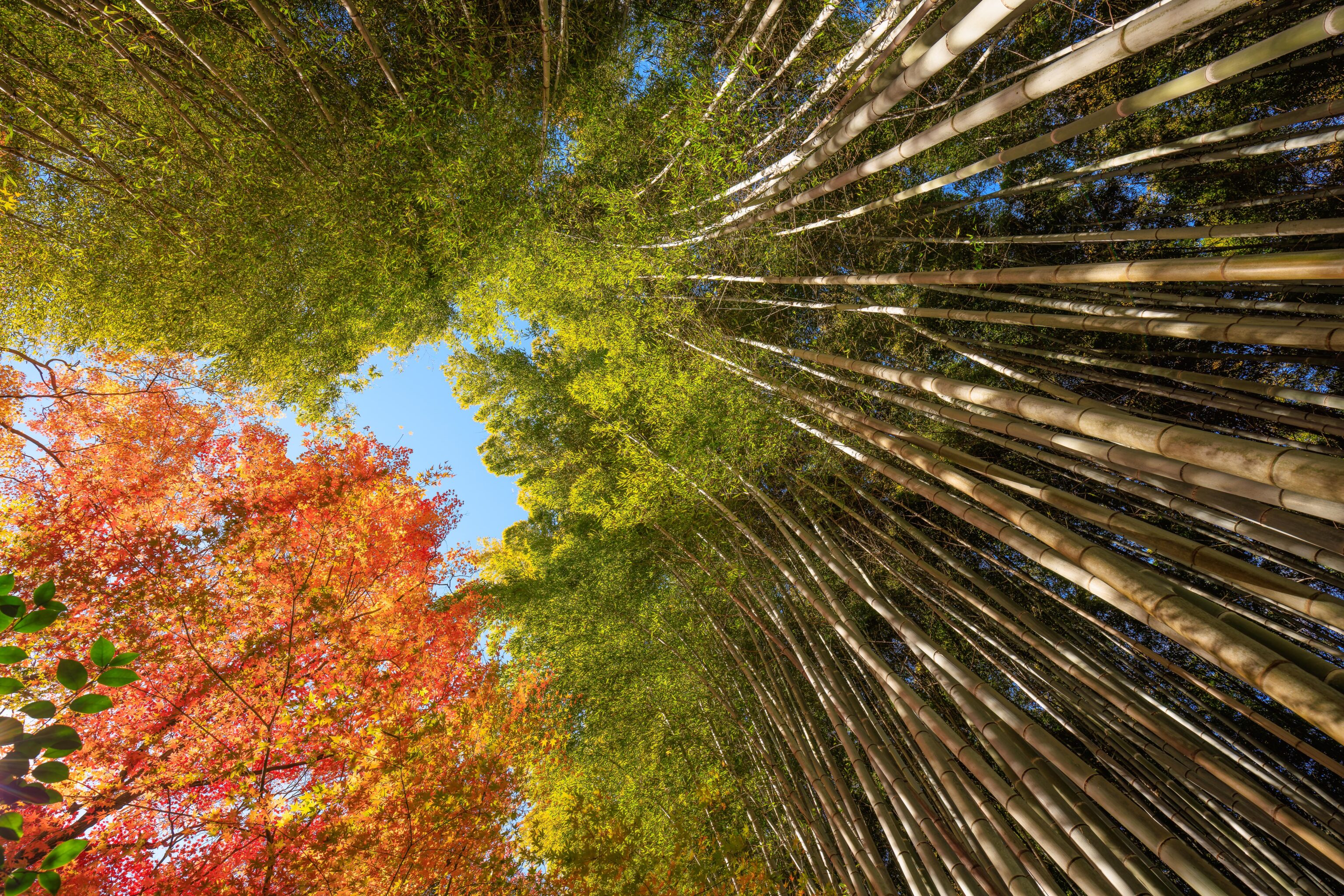
We spent 15 minutes or so walking through the the small temple grounds.
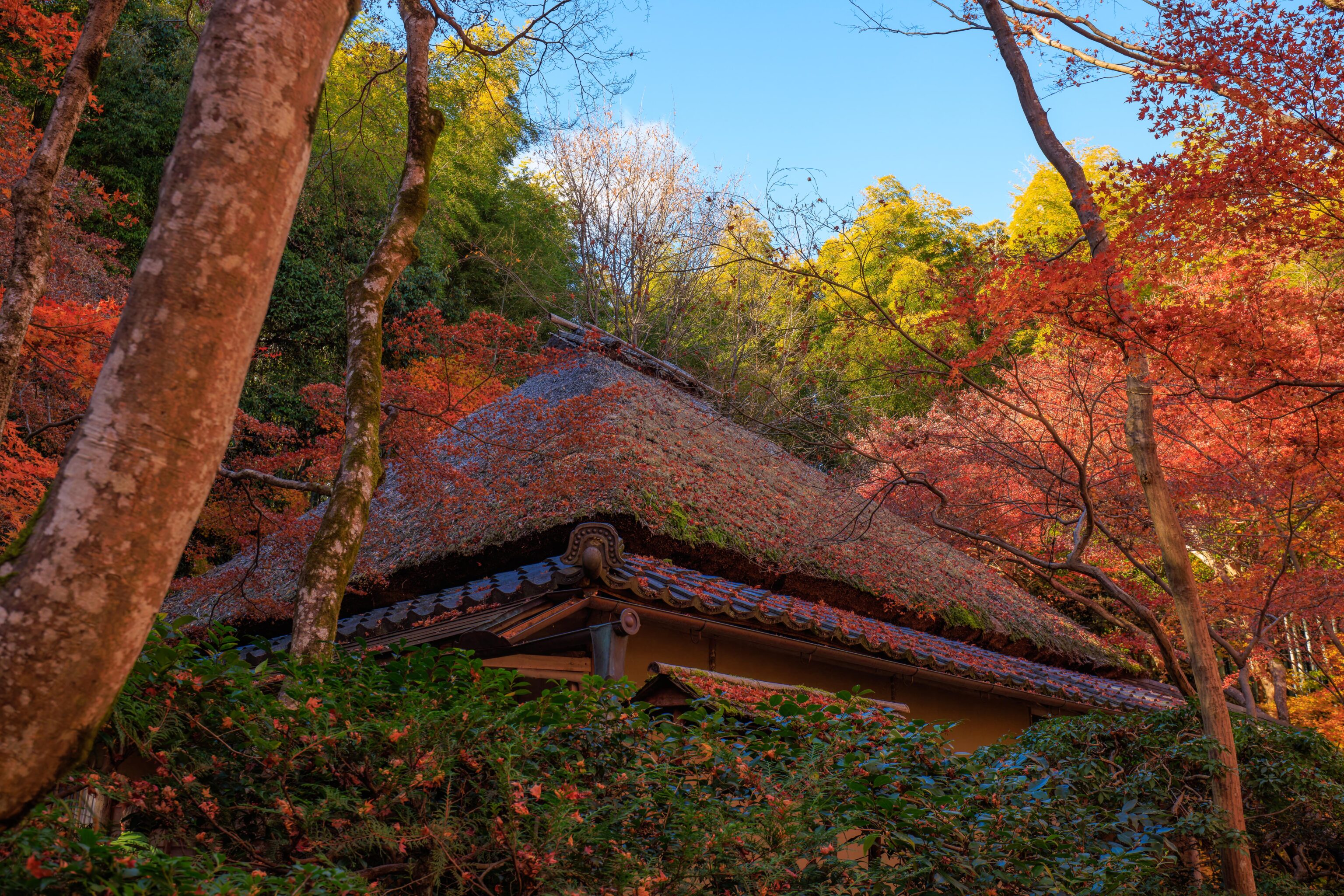
This thatched roof building is the only temple building at Gio-ji.
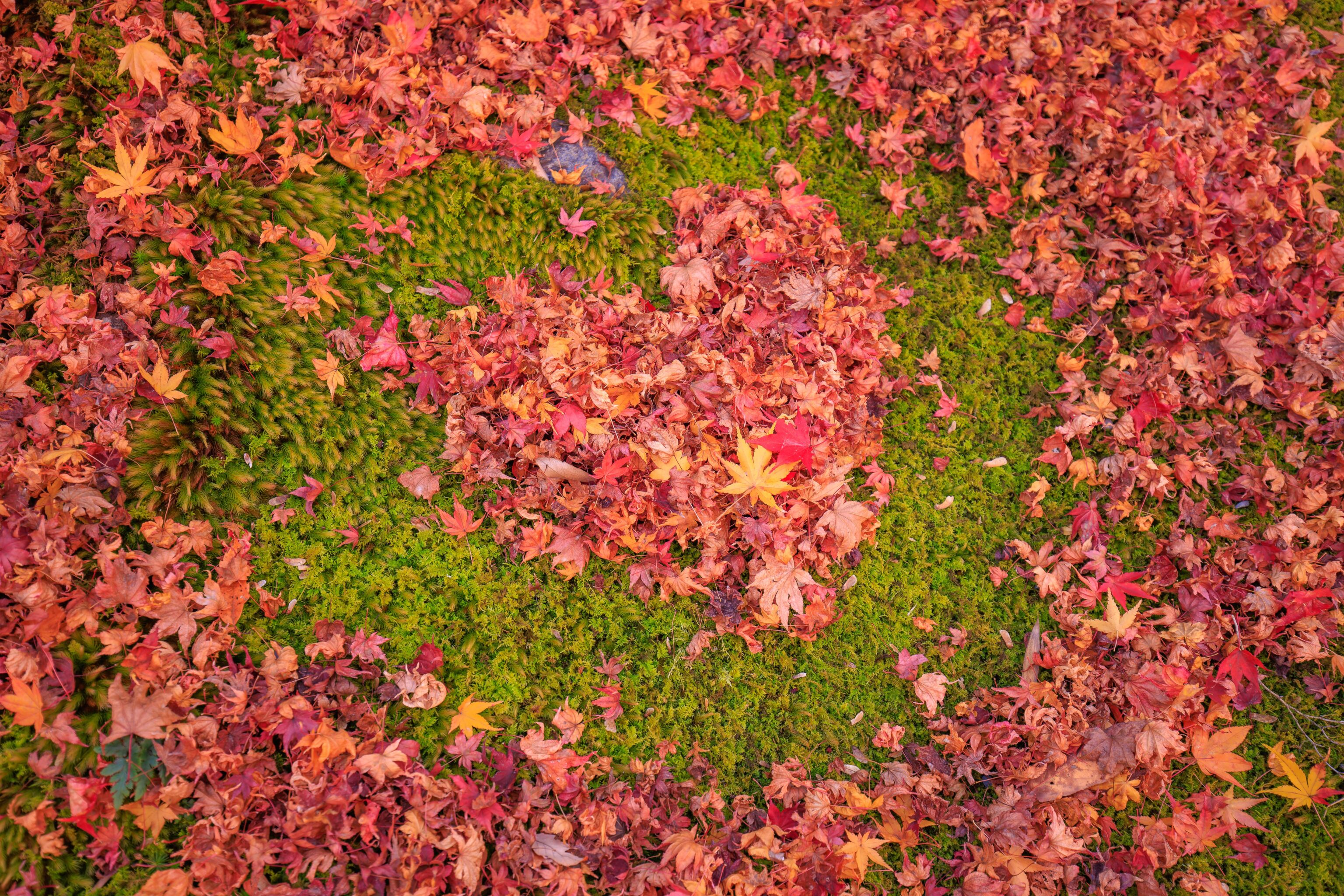
We saw a heart in the fallen leaves on the ground! Was this created by monks?
Takiguchi-dera
There is another temple at the entrance to Gio-ji, Takiguchi-dera. We decided to go in to take a look.
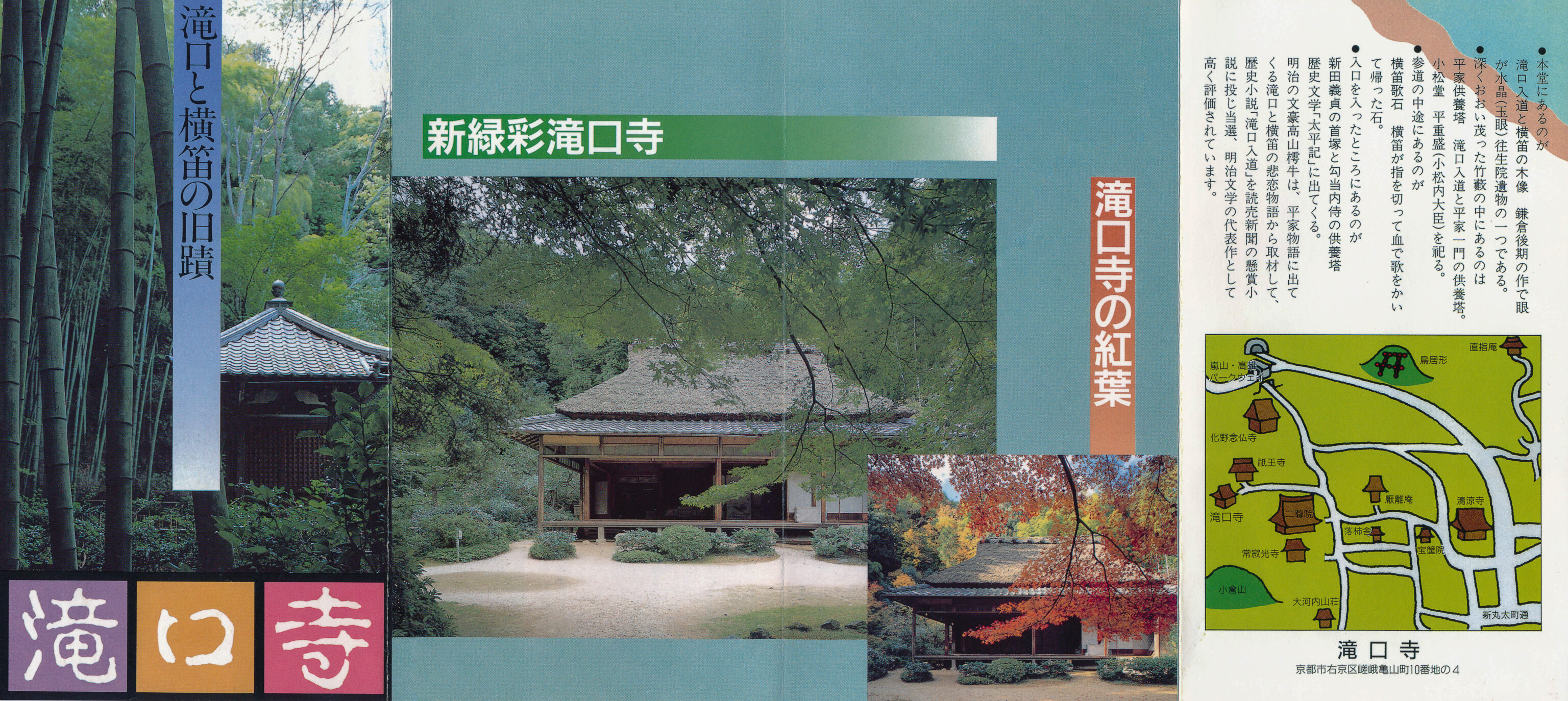
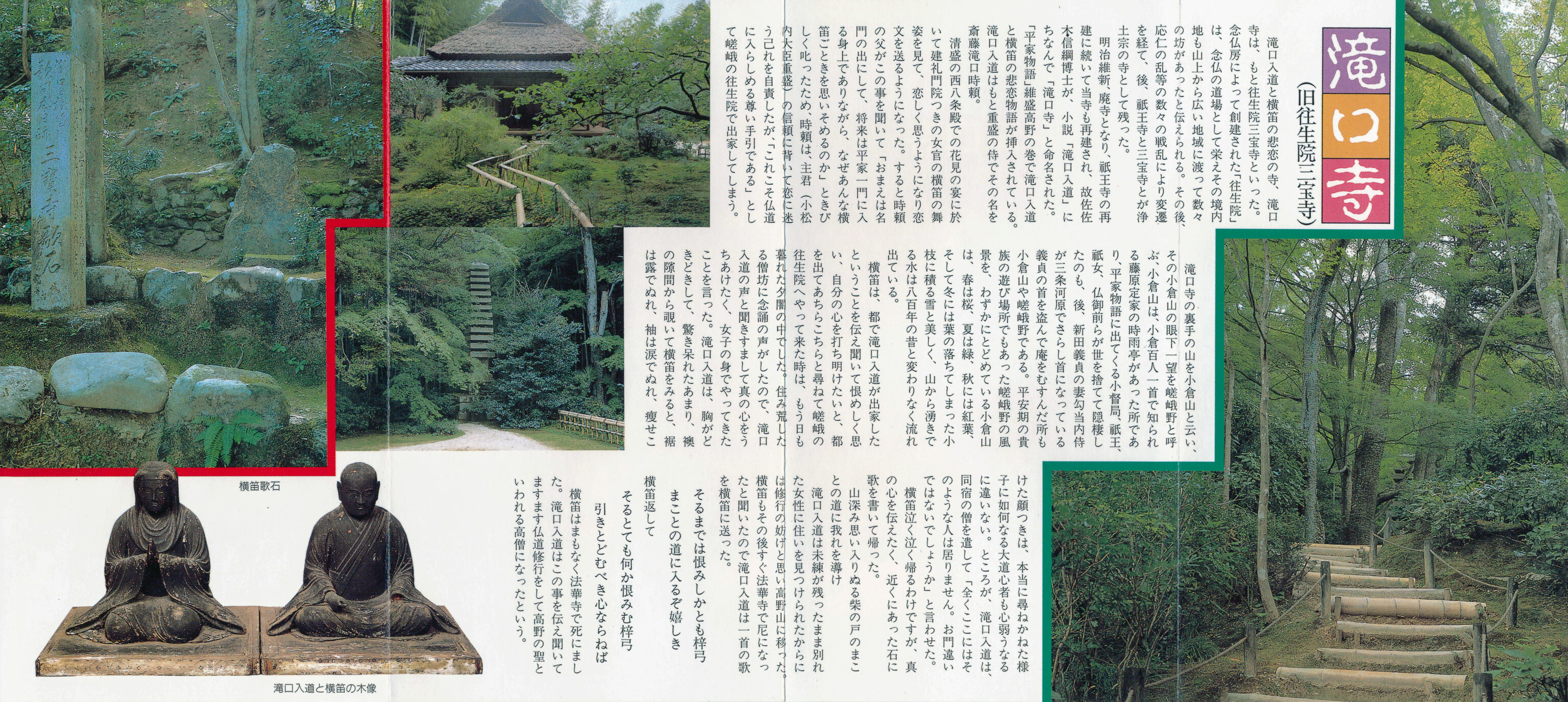
Like Gio-ji, Takiguchi-dera is a very small temple. It also provided an informational pamphlet, though only in Japanese. The text reads, translated using Google Translate:
Takiguchiji Temple (Former Ojoin Sanpoji Temple) Takiguchi, a temple of tragic love with the Takiguchi Nyudo and the flute. The temple was originally called Ojoin Sanpoji. Ojo-in, which was founded by the Nenbutsu-bo, flourished as a dojo for Nenbutsu, and it is said that there were many Buddhist temples within its precincts that spread over a wide area from the top of the mountain. After that, it underwent many changes due to the Onin War and other wars, and Gio-ji and Sanpo-ji remained as temples of the Jodo sect. During the Meiji Restoration, the temple was abandoned, and following the reconstruction of Gioji, this temple was rebuilt, and the late Dr. Nobutsuna Sasaki named it "Takiguchi Temple" after the novel "Takiguchi Nyudo." Takiguchi Nyudo in the Koremori Koya volume of “The Tale of the Heike” and Yokofue's tragic love story are inserted. Takiguchi Nyudo was originally named after Shigemori's samurai, Tokiyori Saito Takiguchi. At a cherry blossom viewing party at Kiyomori's Nishi-Hachijo-dono Palace, he saw Kenreimonin's lady-in-waiting dance on the flute, and he began to miss her and began to send her love letters. When Tokiyori's father heard about this, he scolded Tokiyori sternly, saying, "You come from a prestigious family and are destined to join the Heike family in the future, so why do you think of such a flute?" Yori blamed himself for betraying the trust of his master (Shigemori, Minister of the Interior Komatsu) and getting lost in love, but he became a monk at Ojoin in Saga, believing that "this is a precious guide to entering Buddhism." The mountain behind Takiguchiji Temple is called Ogurayama. The panoramic view of Mt. Kokura is called Sagano. Mt. Kokura is the site of Fujiwara Sadaie's Shigure-tei, known for the Ogura Hyakunin Isshu poem, and is also famous for Kogo no Tsuke, Gio, and Gio, which appear in the Tale of the Heike. Kokurayama and Sagano are the places where women such as Buddha-gozen renounced the world and lived in seclusion, and where Nitta Yoshisada's wife, Koto no Naishi, later stole Yoshisada's head and had her head hanged at the Sanjo Riverbed and built hermitages. Kokurayama retains a little of the scenery of Sagano, which was a playground for the aristocrats during the Heian period, with cherry blossoms in the spring, greenery in the summer, autumn leaves in the fall, and small fields with fallen leaves in the winter. Beautiful with the snow on the branches, springing from the mountains. The water continues to flow as it has for 800 years. When Yokobue heard in the capital that Nyudo Takiguchi had become a monk, he felt bitter and wanted to confess his heart, so he left the capital and visited the Ojoin Temple in Saga. By the time he arrived at Ojoin, it was already nightfall. It was in the dark. When she heard a voice reciting prayers in a run- down monk's quarters, she pretended to be the voice of Nyudo Takiguchi and swore that she had come as a woman to open her true heart. Nyudo Takiguchi's heart pounded in his chest, and when he peered through the gap in the sliding door and saw the flute, he saw that his hem was wet with dew and his sleeves were wet with tears, and he was thin and gaunt. The stern look on his face would make even the most spiritual person feel weak at the fact that he seemed unable to ask questions. However, Nyudo Takiguchi sent a monk living at the same hotel to say, "There is no such person here at all. Aren't you from the wrong school?" I returned home in tears, but I wrote a song on a nearby stone to convey my true feelings. Mako Shiba's door is filled with deep thoughts about the mountains. lead me to the path of Nyudo Takiguchi, still feeling unsatisfied, moved to Mt. Koya because he thought it would be a hindrance to his training since he found a new home with a woman he had broken up with. Nyudo Takiguchi heard that Yokobue also became a nun at Hokke-ji Temple soon afterward, so he sent Yokobue a poem. Until then, I'll hold a grudge, but Azusa Yumi, I'm happy to be on the path to truth. Azusa Yumi holds a grudge against me as I return the flute. If you have the heart to hold back, Yokofue died soon after at Hokke-ji Temple. When Nyudo Takiguchi heard about this, he practiced Buddhism even more and became a high priest who is said to be the holy man of Koya.
The translation is a bit rough but better than nothing!
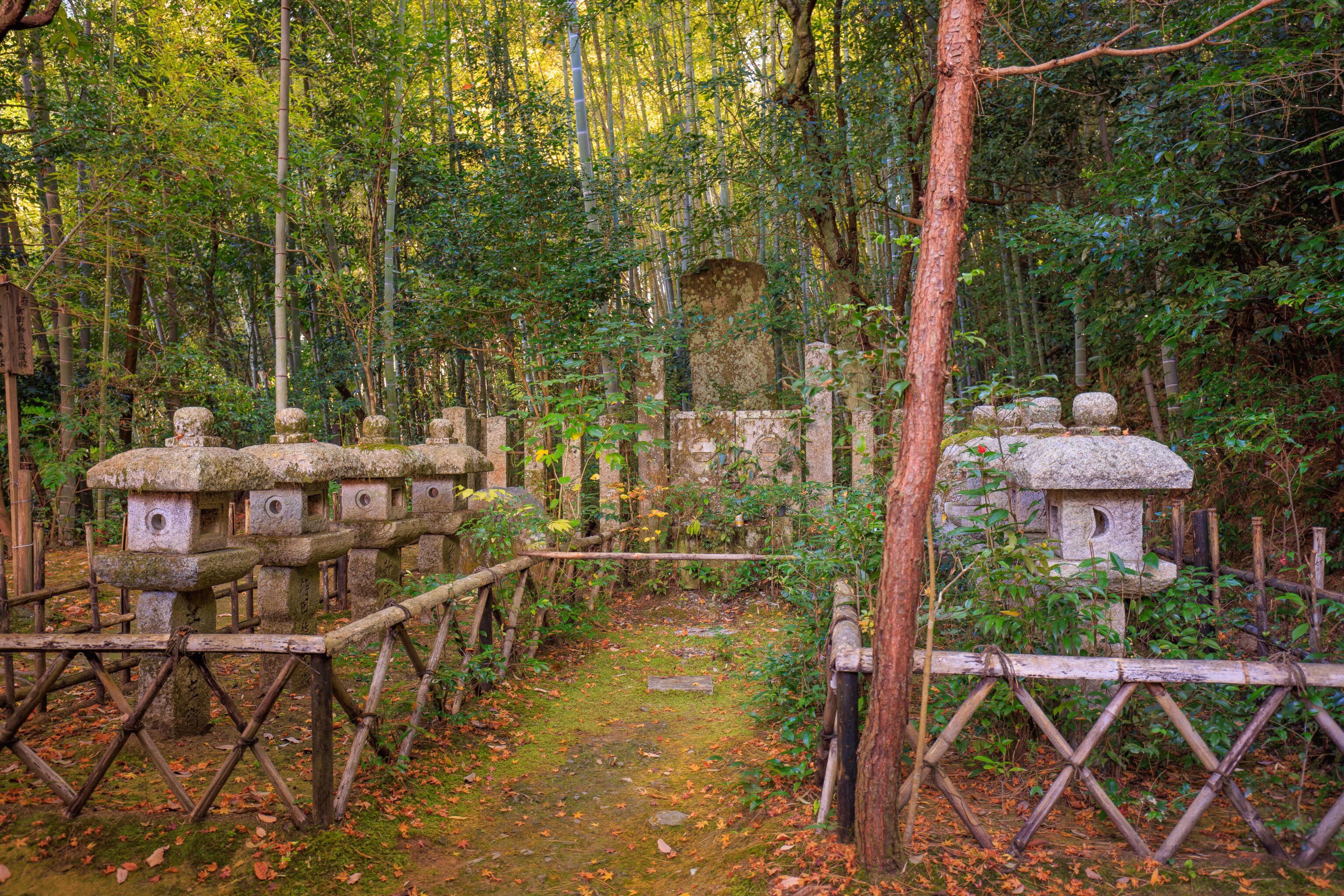
This grave lies to the left of the entrance, just beyond the ticket booth. This may be a Kubizuka, described as a type of tomb where “severed heads are interred”. This one is described as containing the stolen head of Yoshisada Nitta, though it is also referred to as a legend.2 This appears to be a bit difficult to research in English.
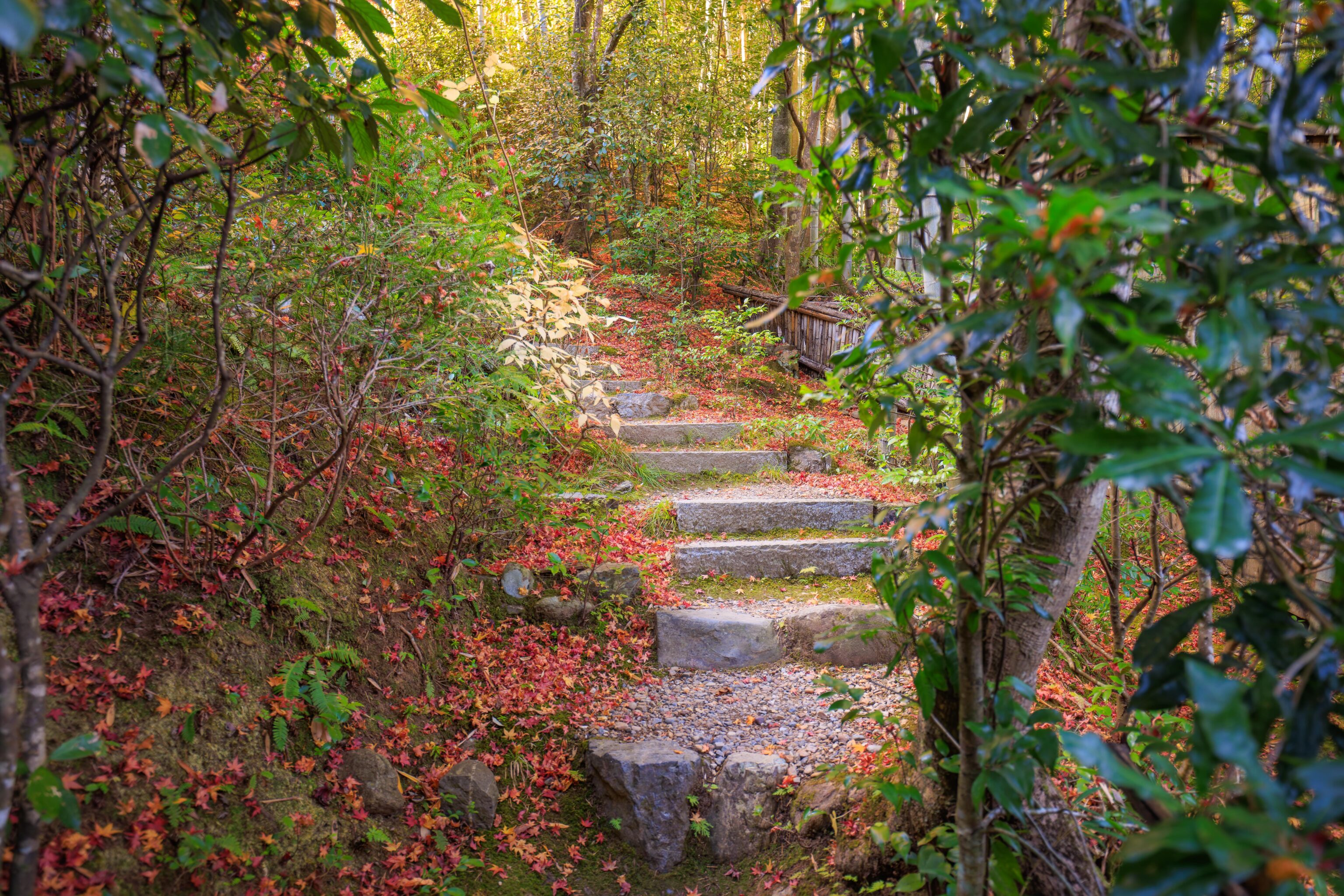
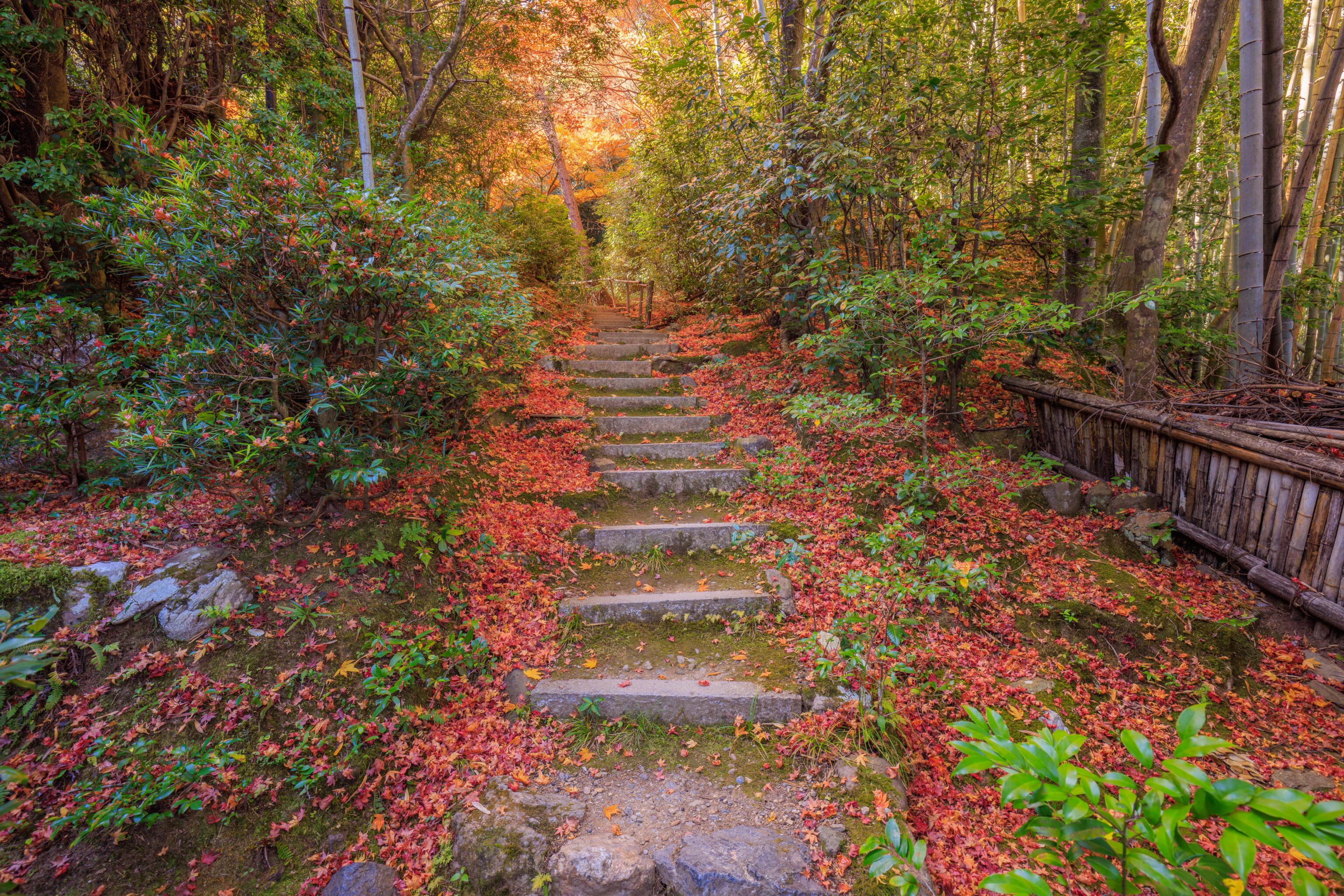
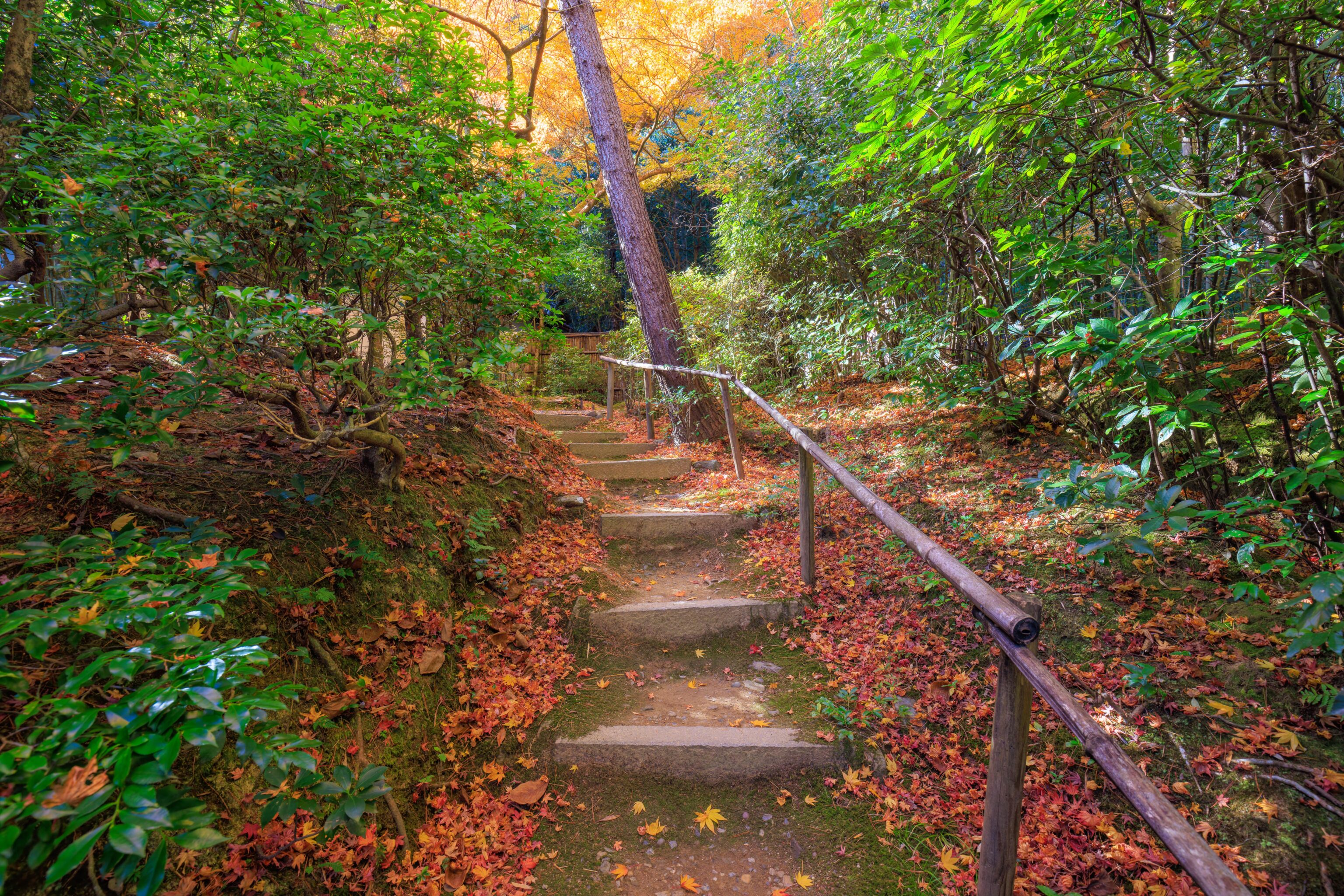
A path leads uphill to the right of the entrance.
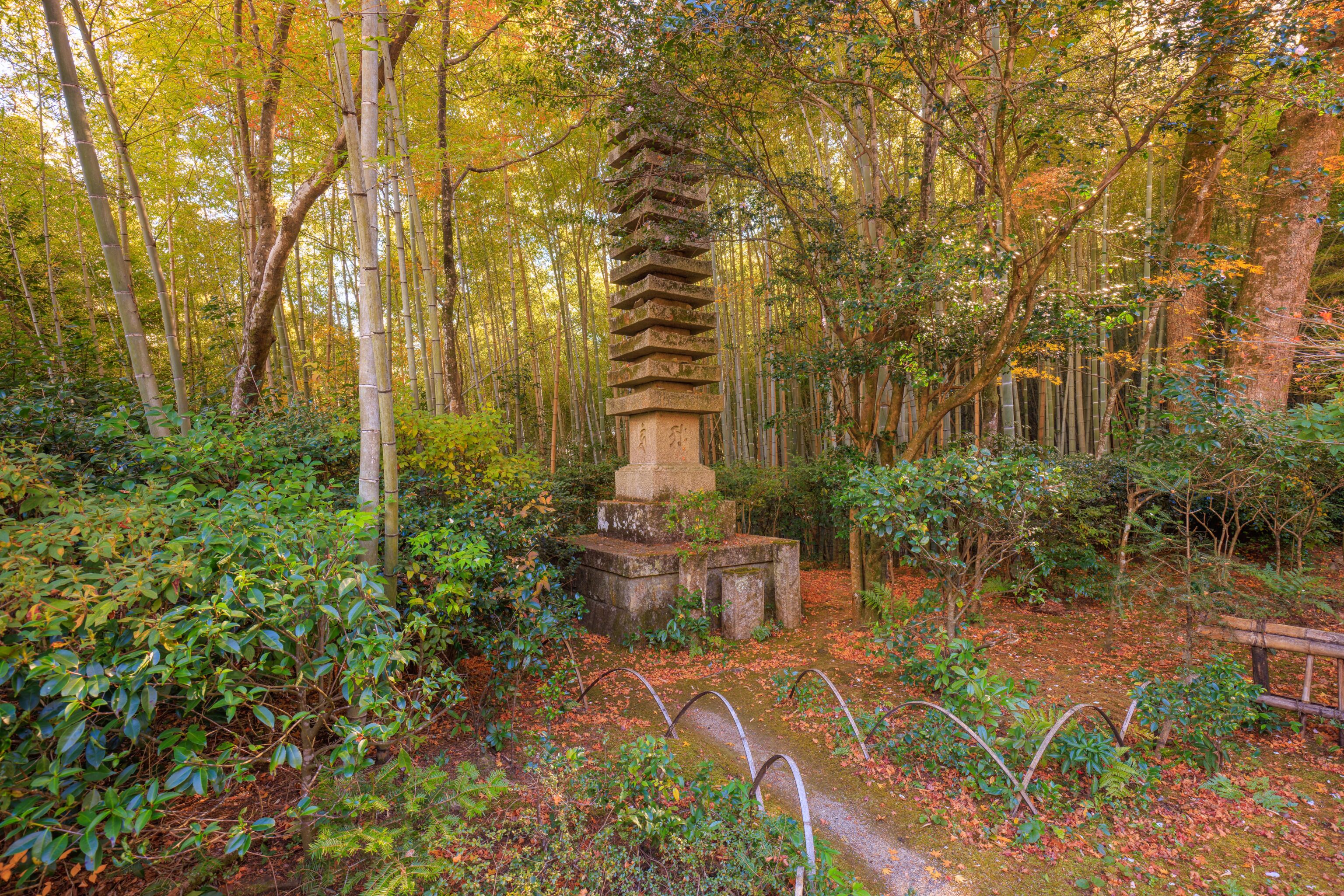
The path soon levels out. This flat area contains a small stone pagoda.
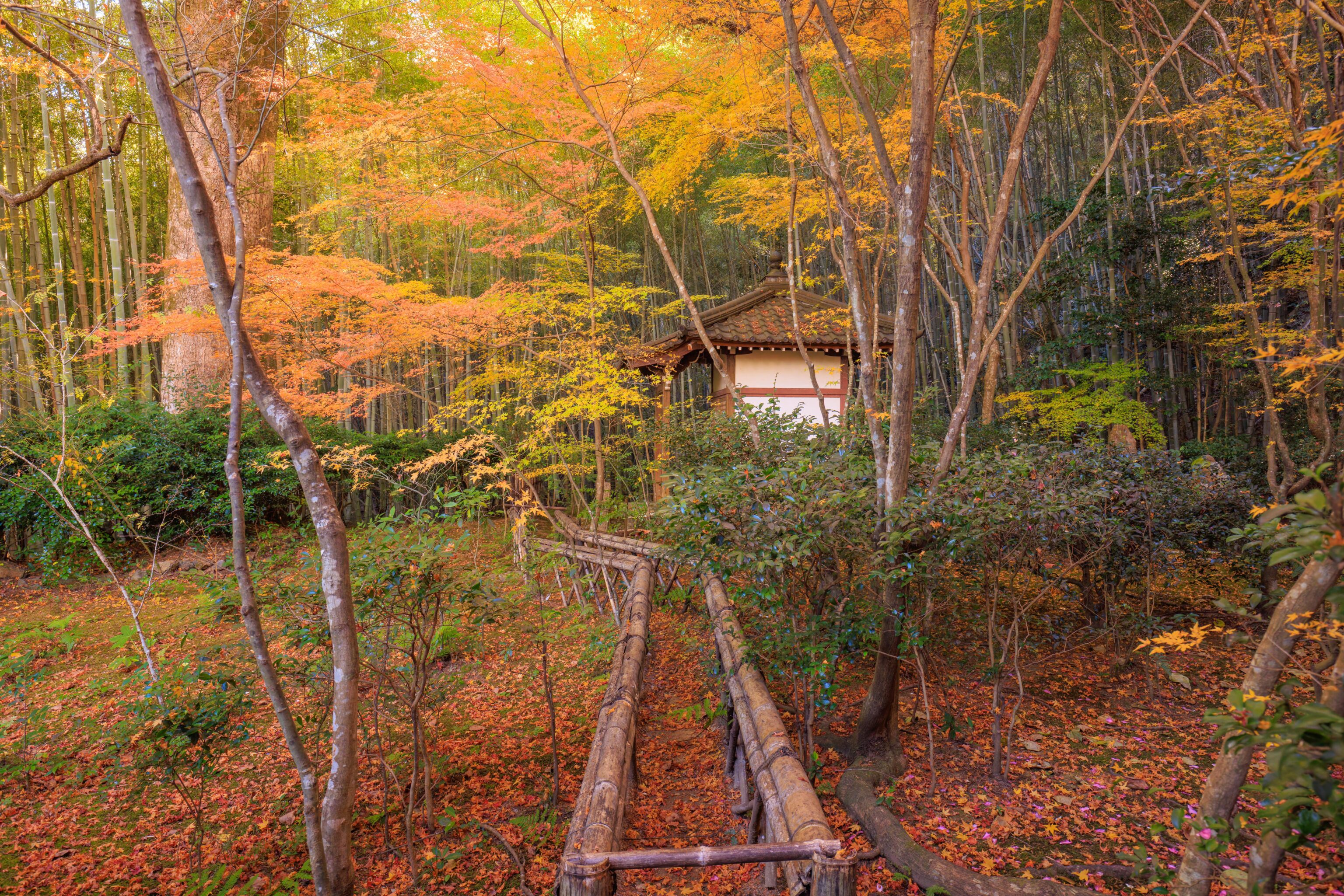
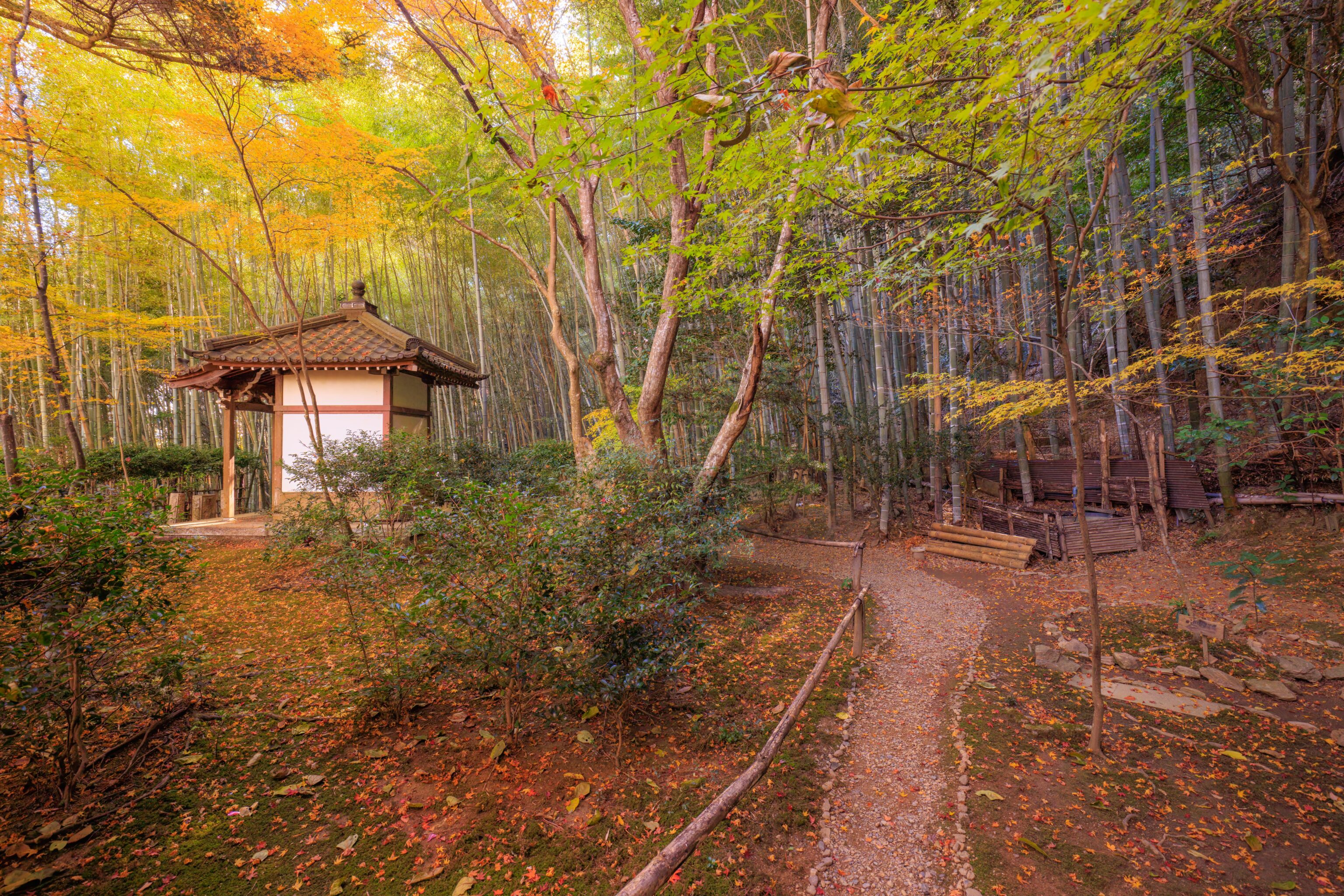
It is very rustic and undeveloped. A bit similar to Gio-ji, but even less developed.
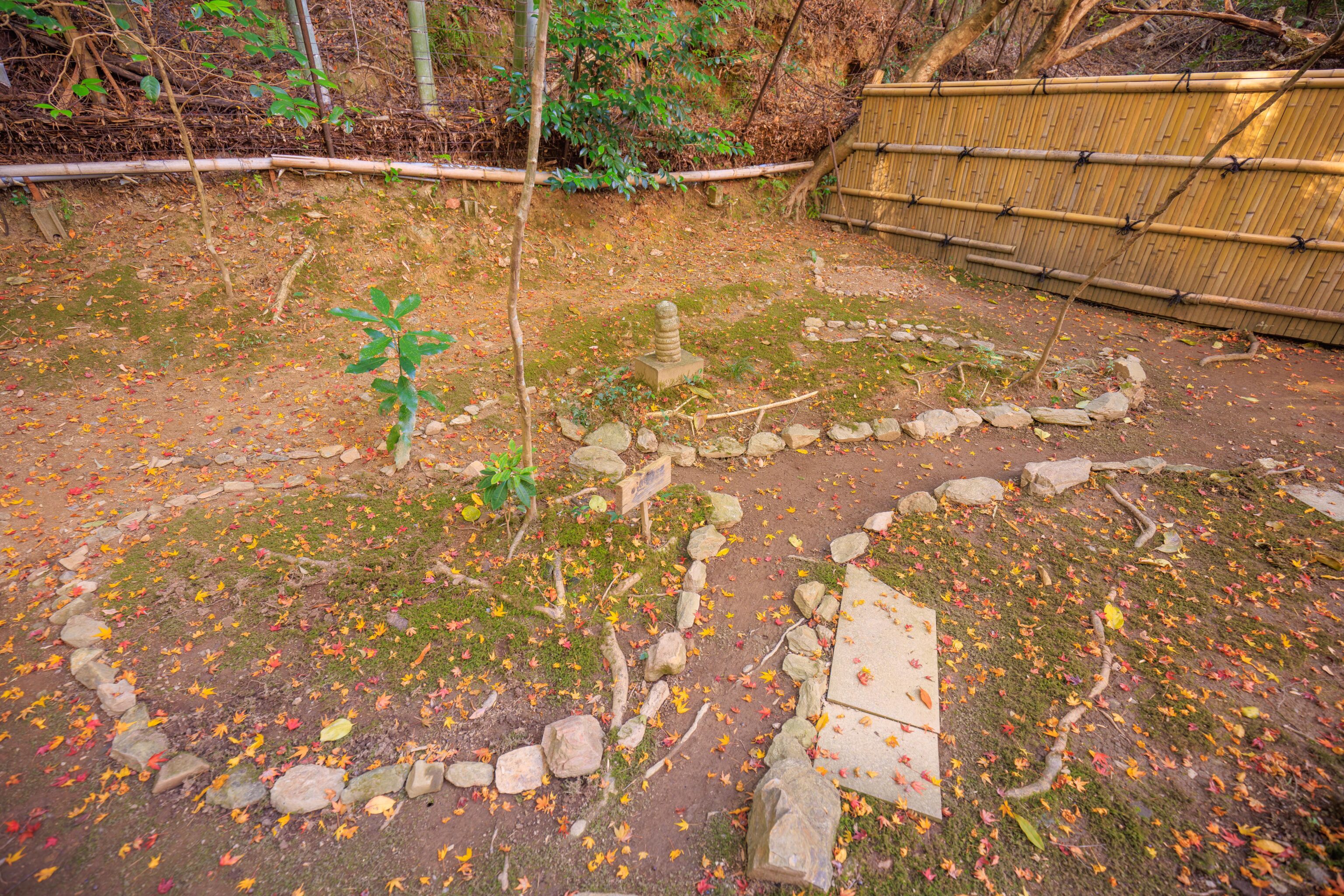
This seems to be a map of the grounds? Is that little tower the stone pagoda we just saw?
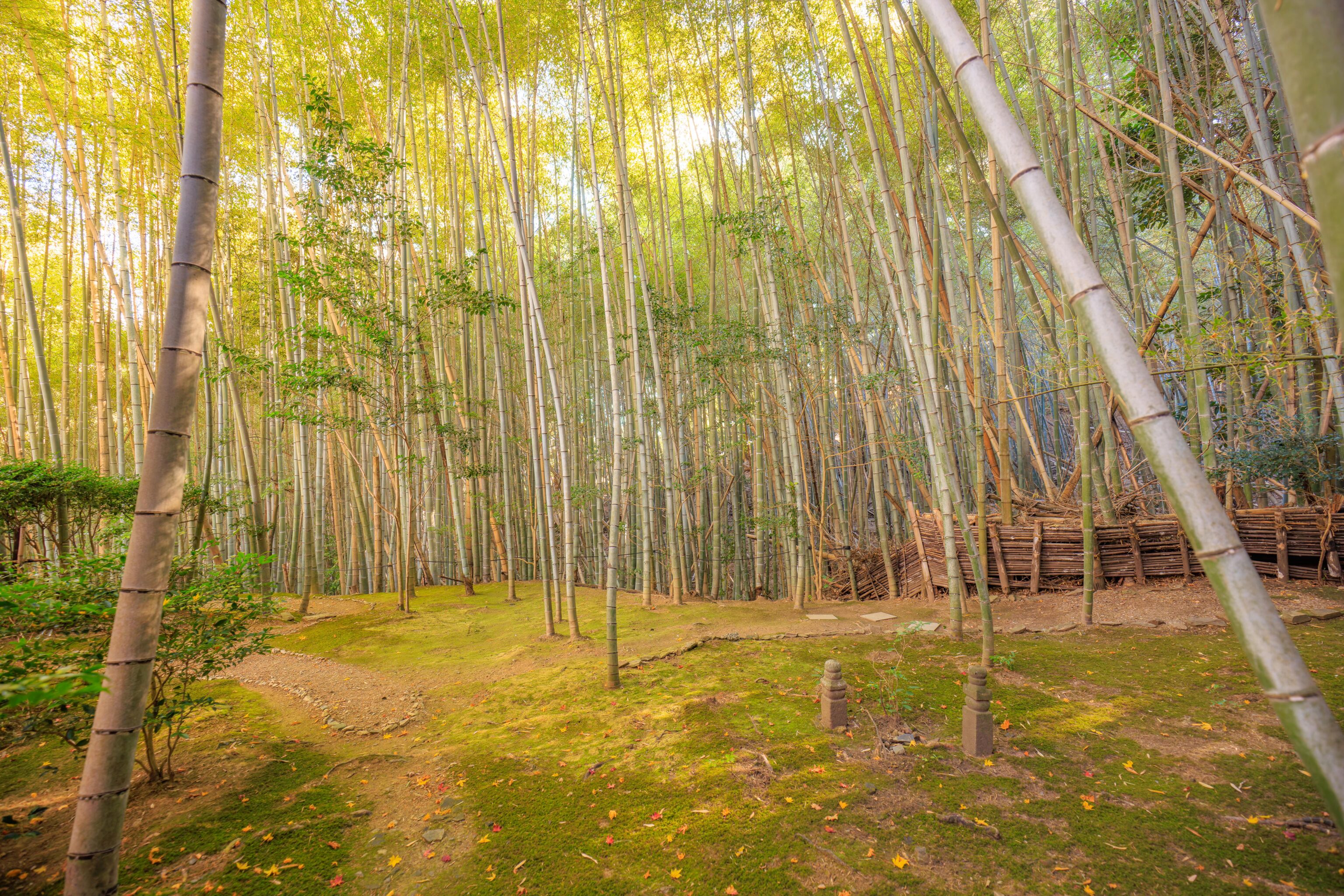
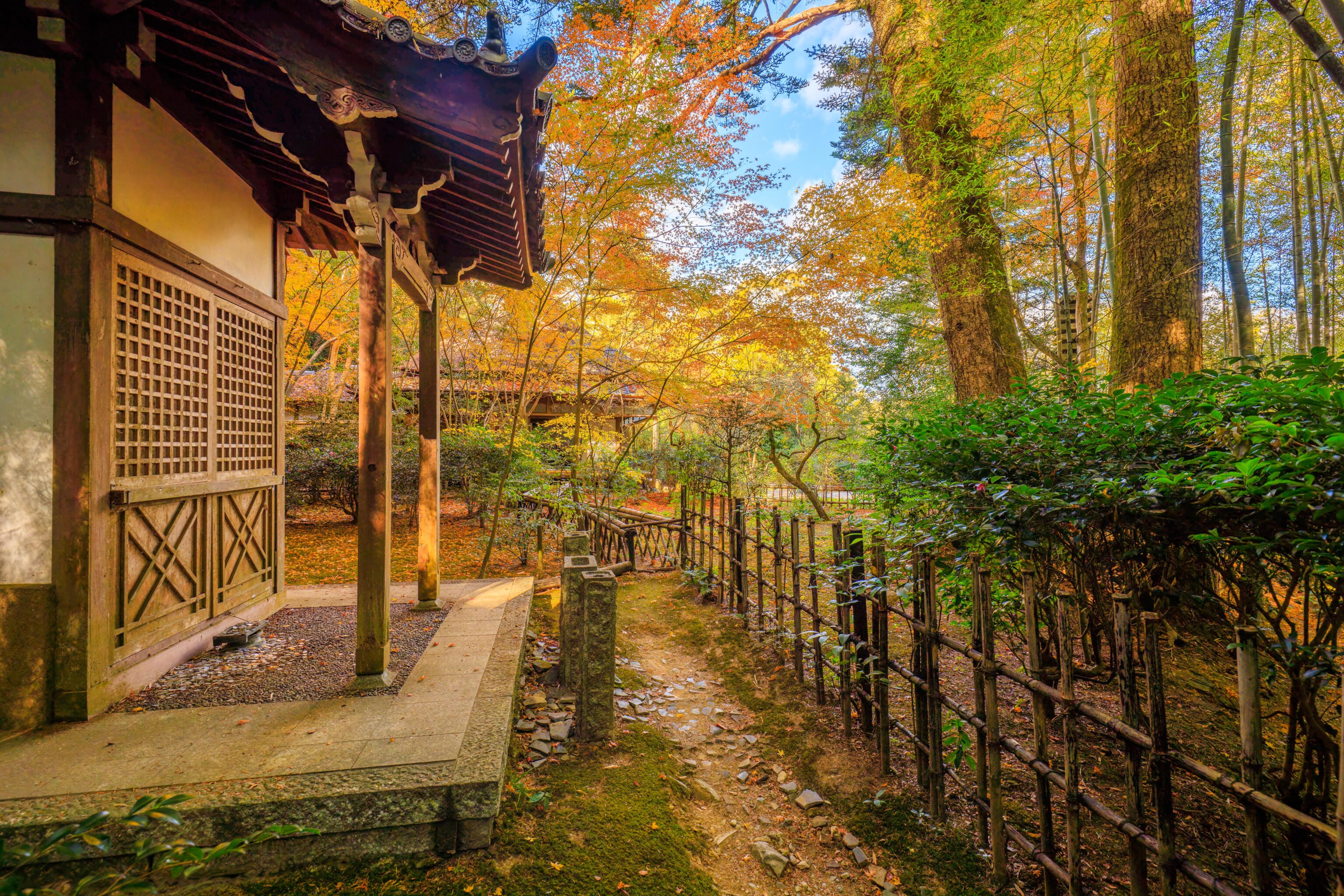
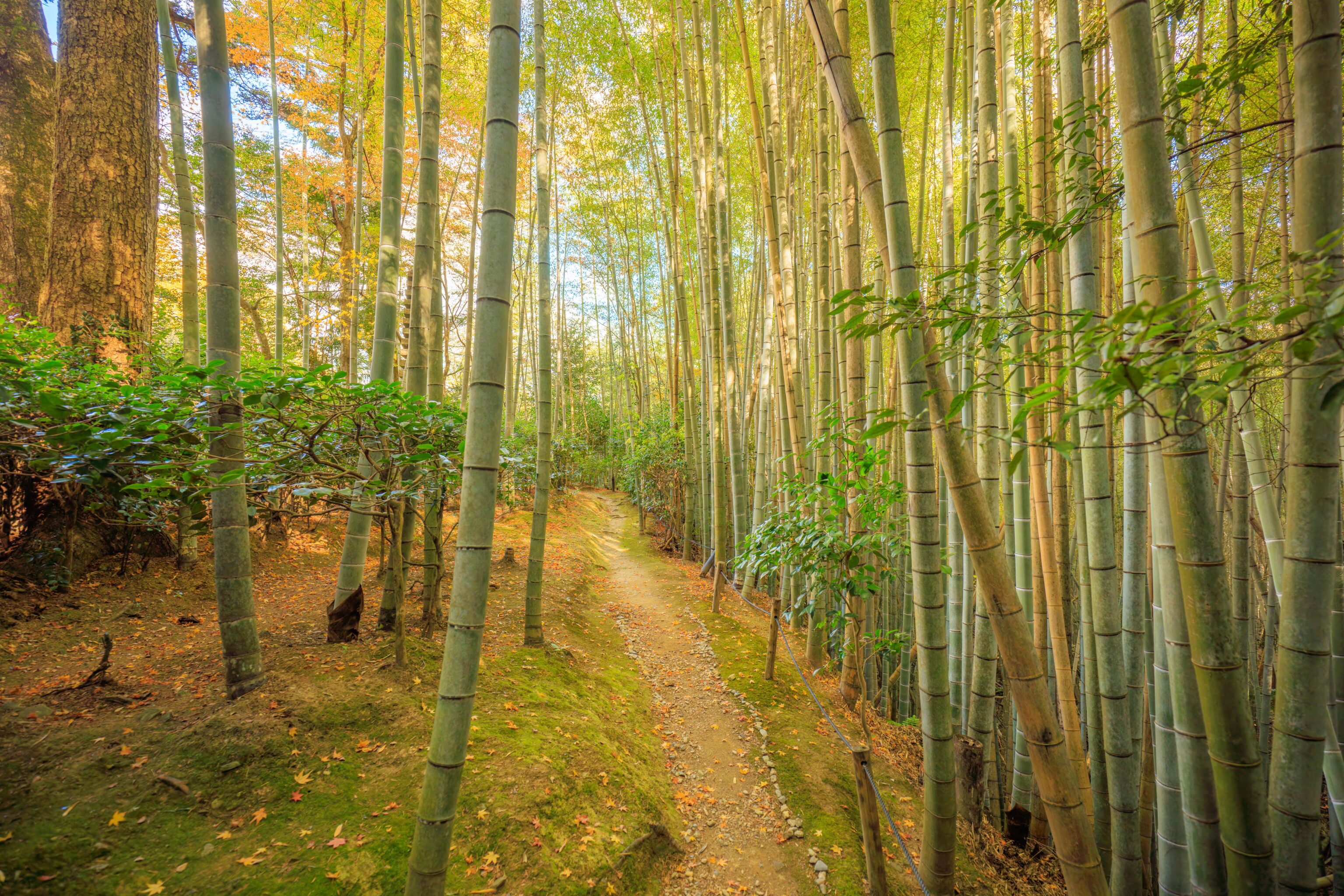
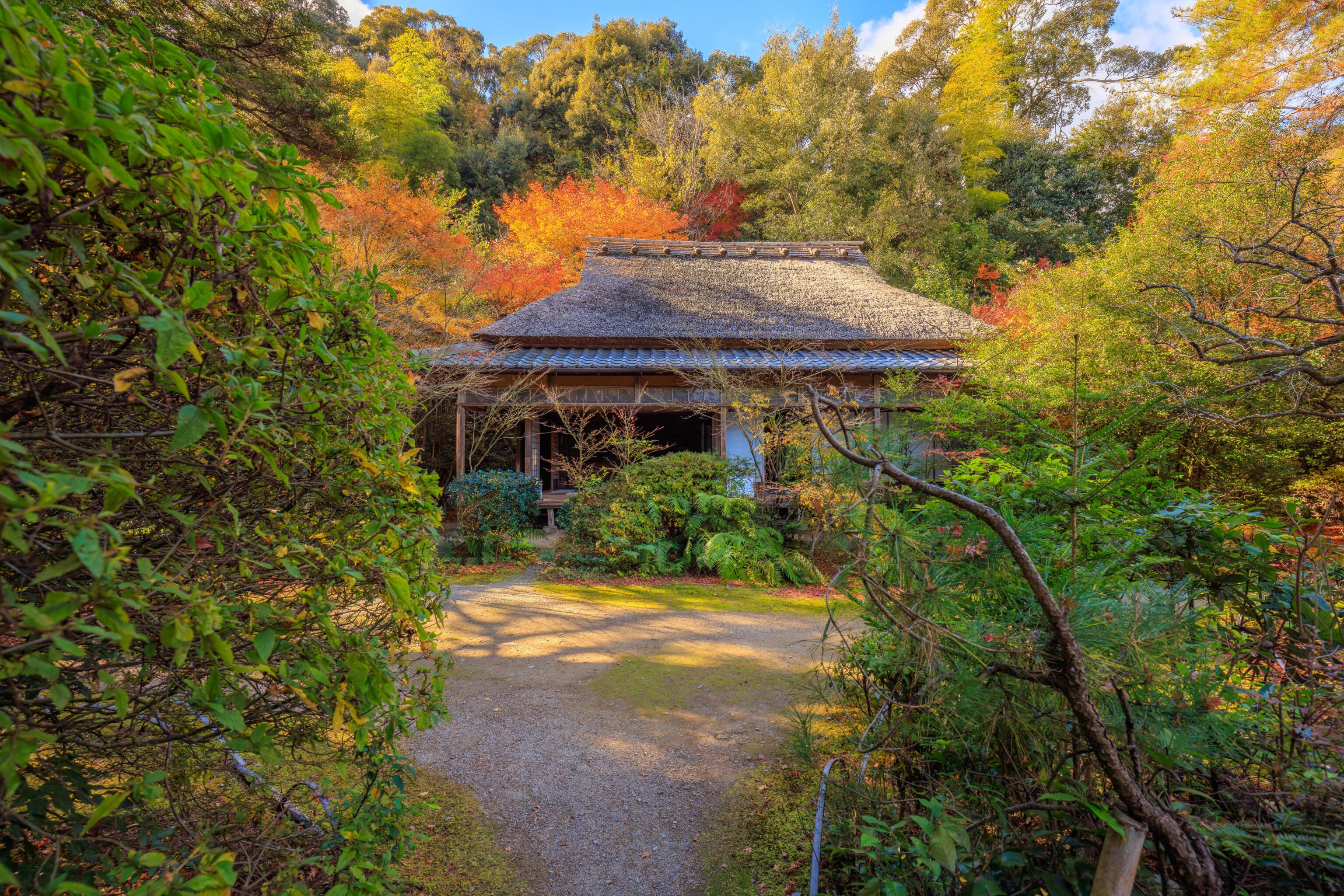
We continued walking on the looped path, ending up back at the temple’s only largeish building. From here, we headed back downhill to exit. This temple seems to be infrequently visited as most visitors to the neighboring Gio-ji don’t seem to enter here. It took us just 10 minutes to walk through. Overall, a very different experience.
Adashino Nenbutsu-ji
Our next destination was Adashino Nenbutsu-ji, a temple that was a bit further away to the north.
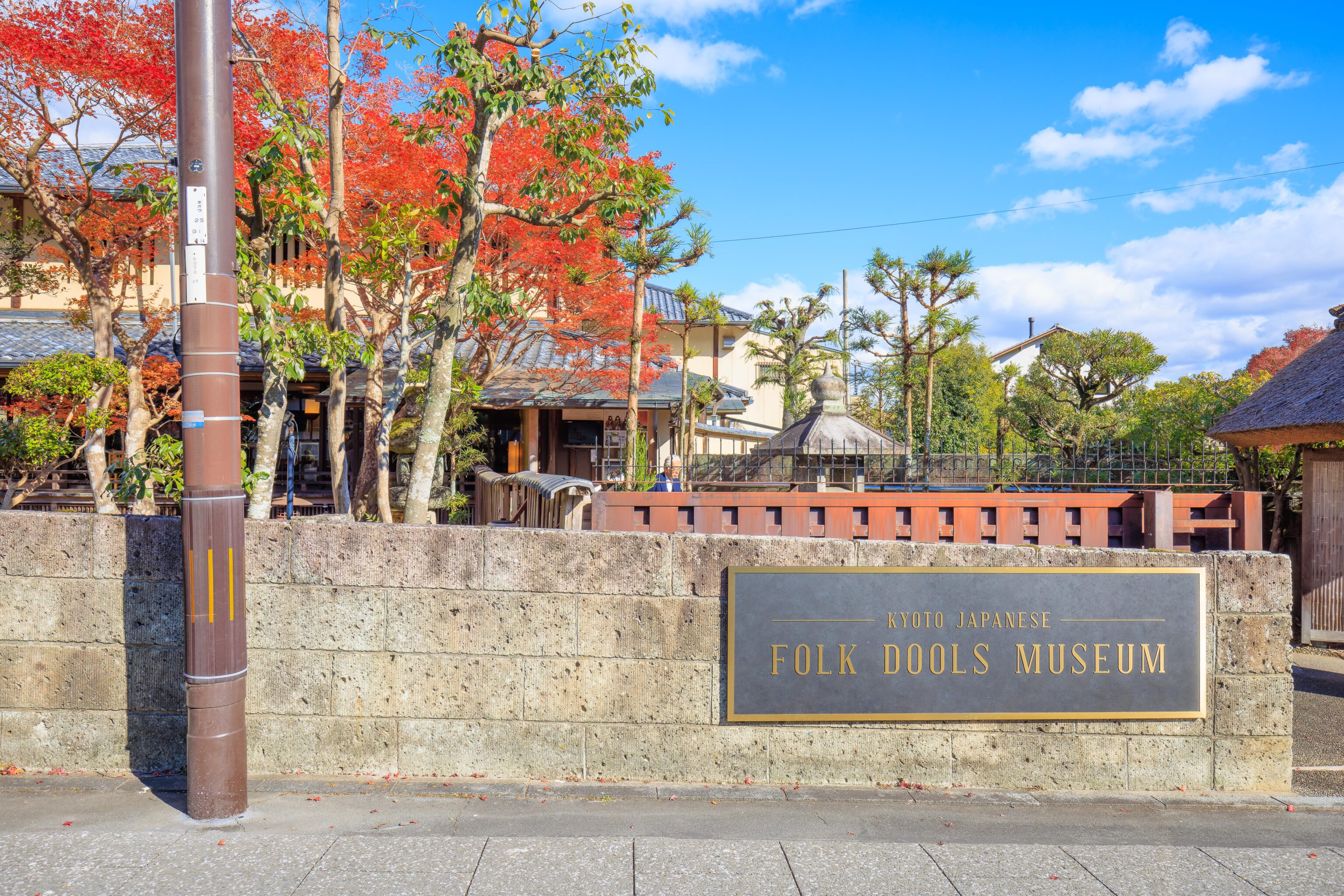
We passed by the Kyoto Japanese Folk Dolls Museum which had an unfortunate spelling error on their sign!
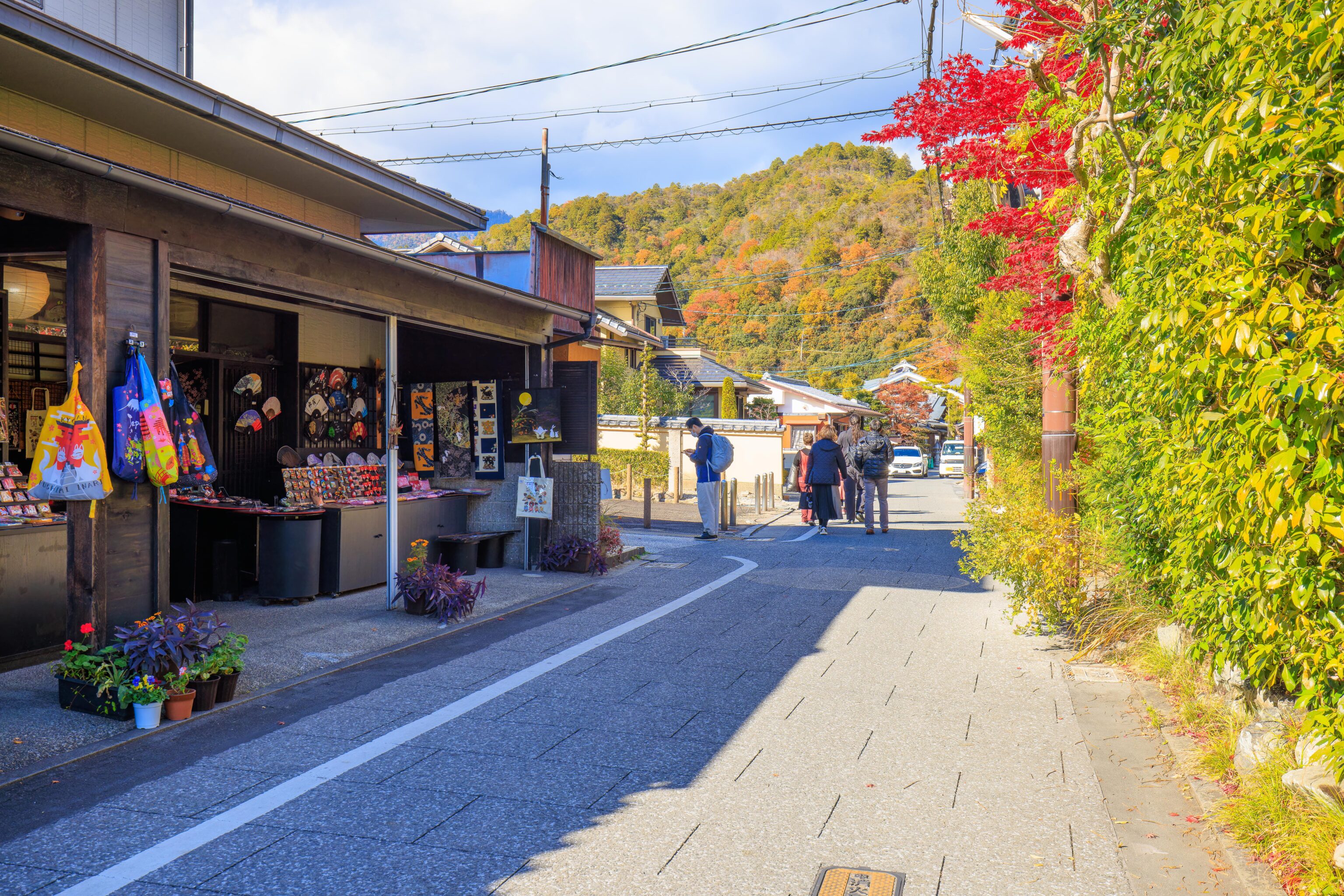
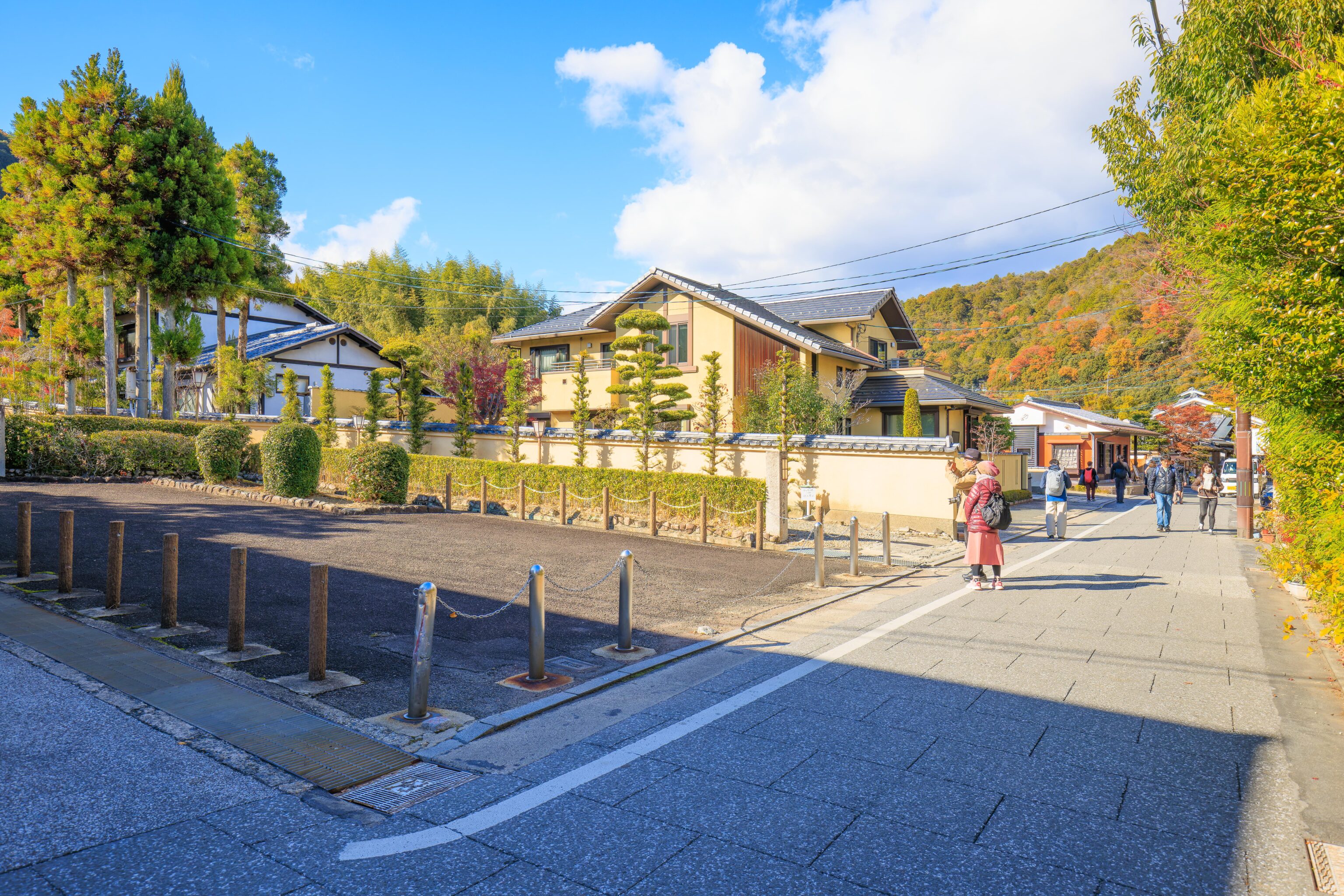
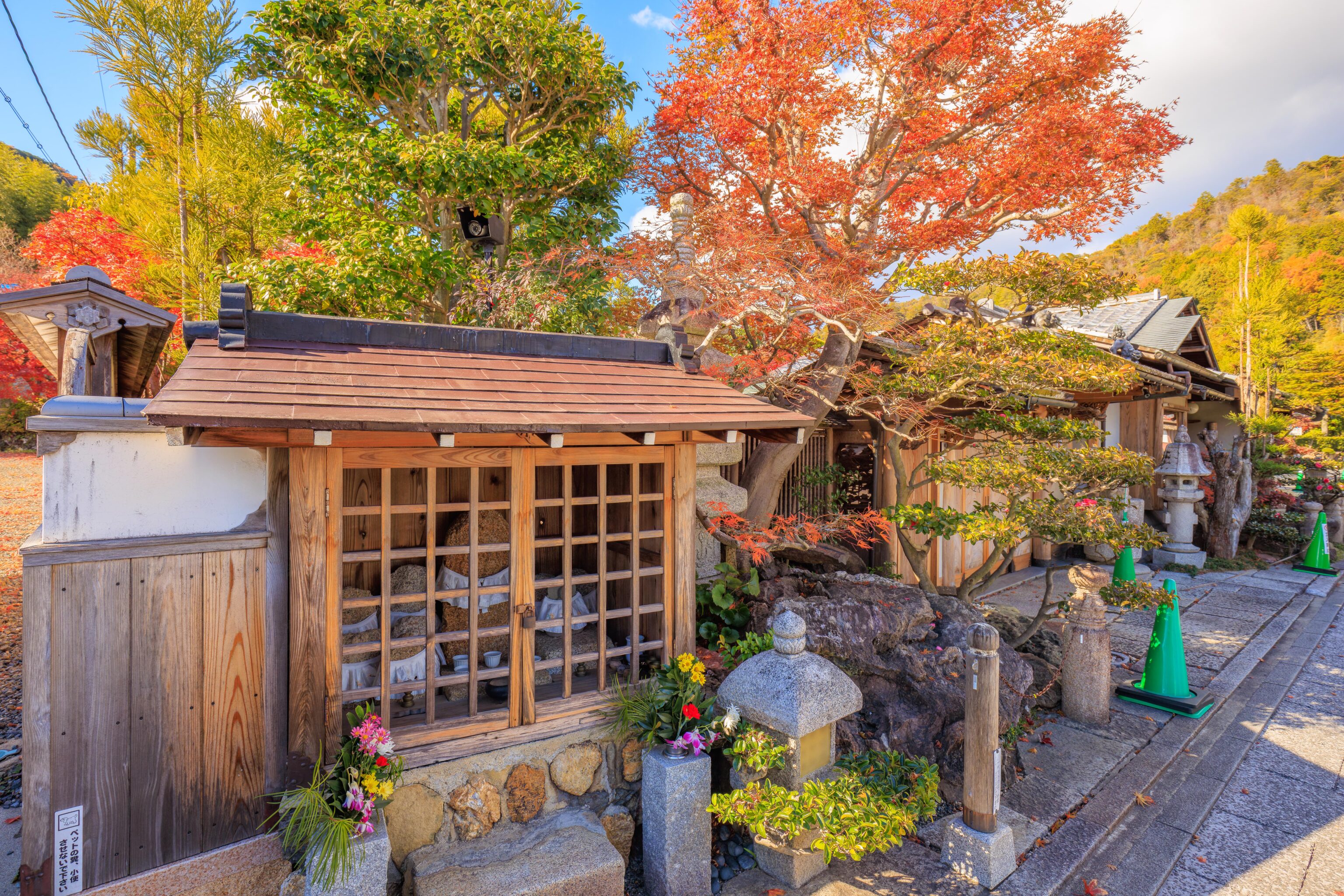
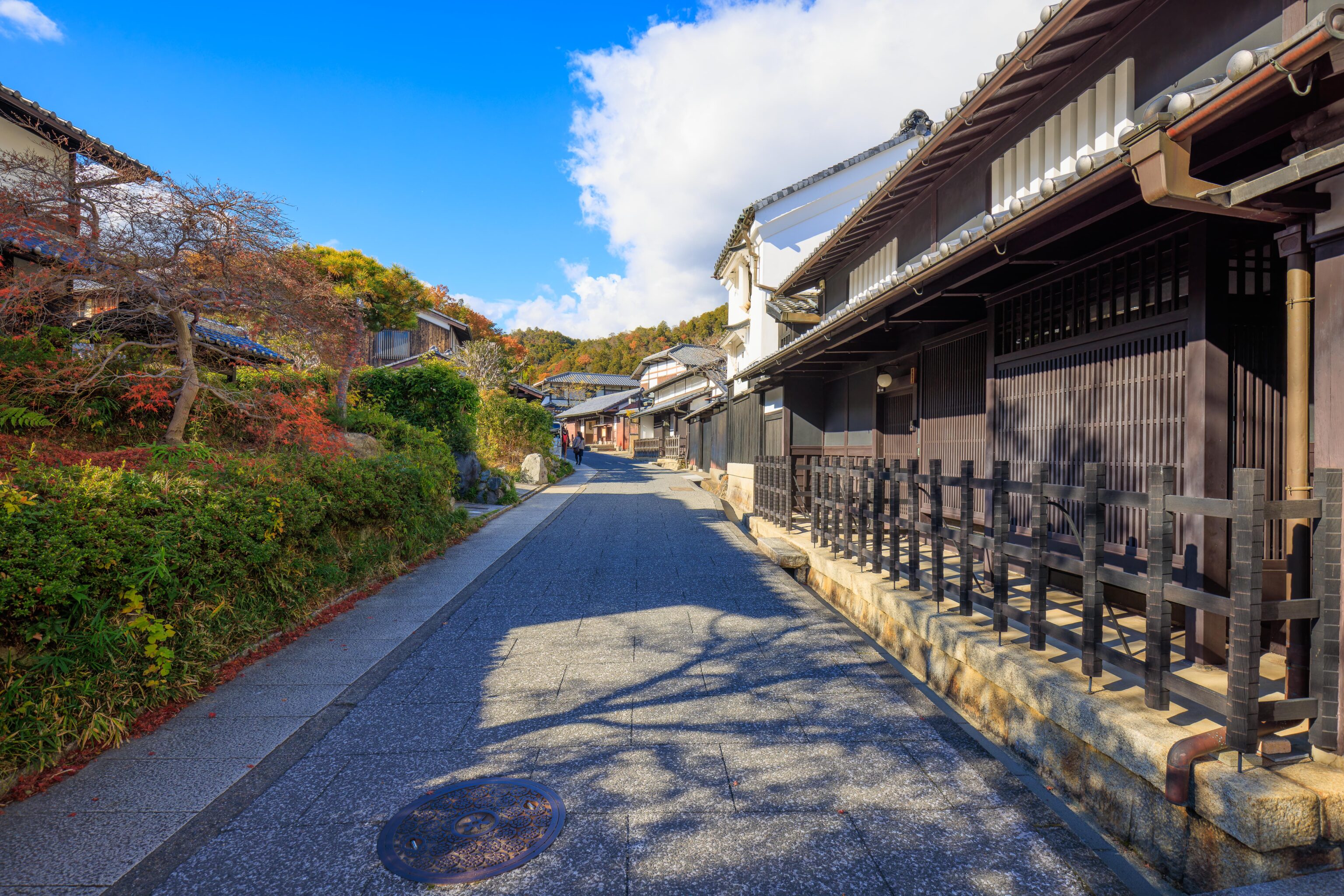
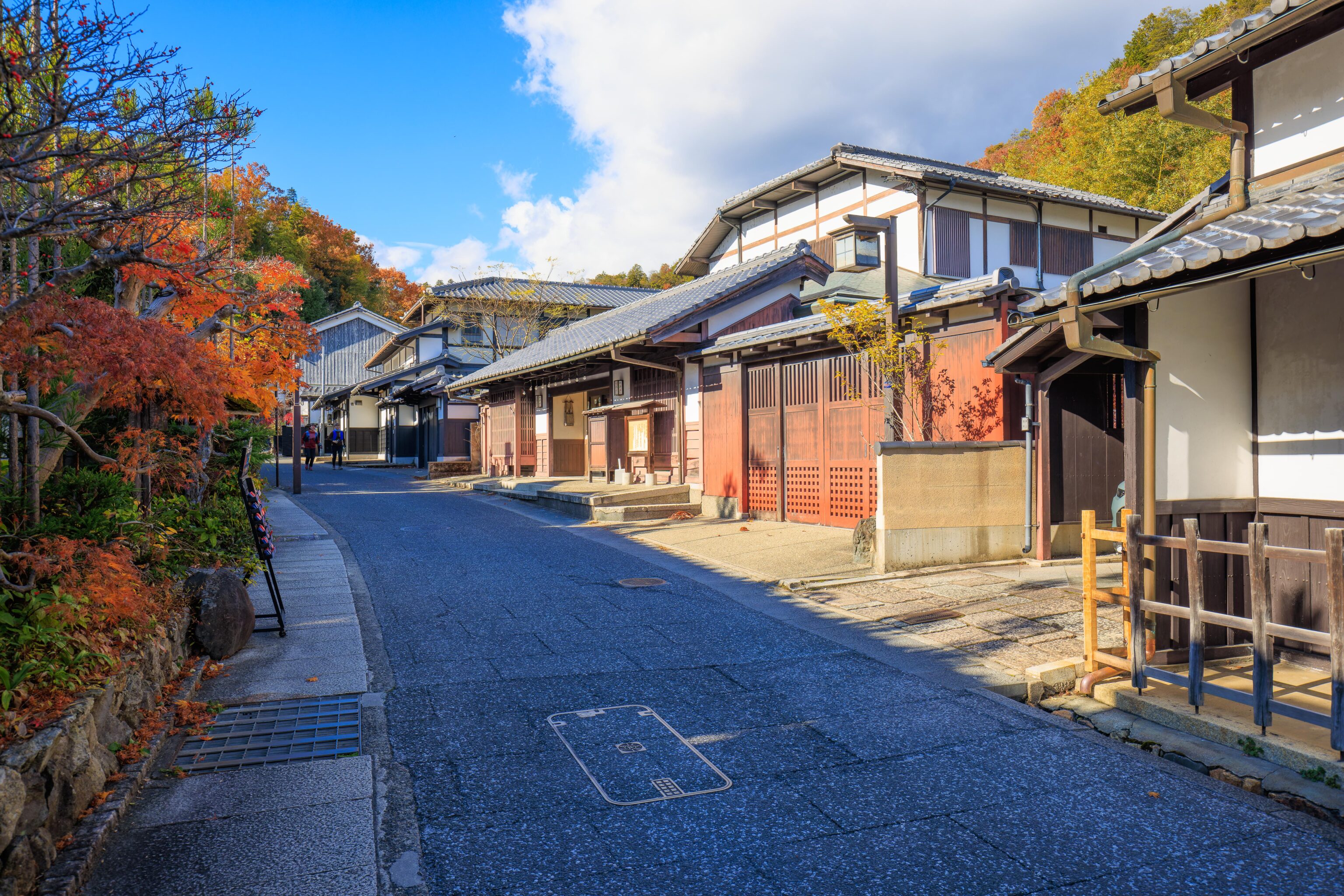
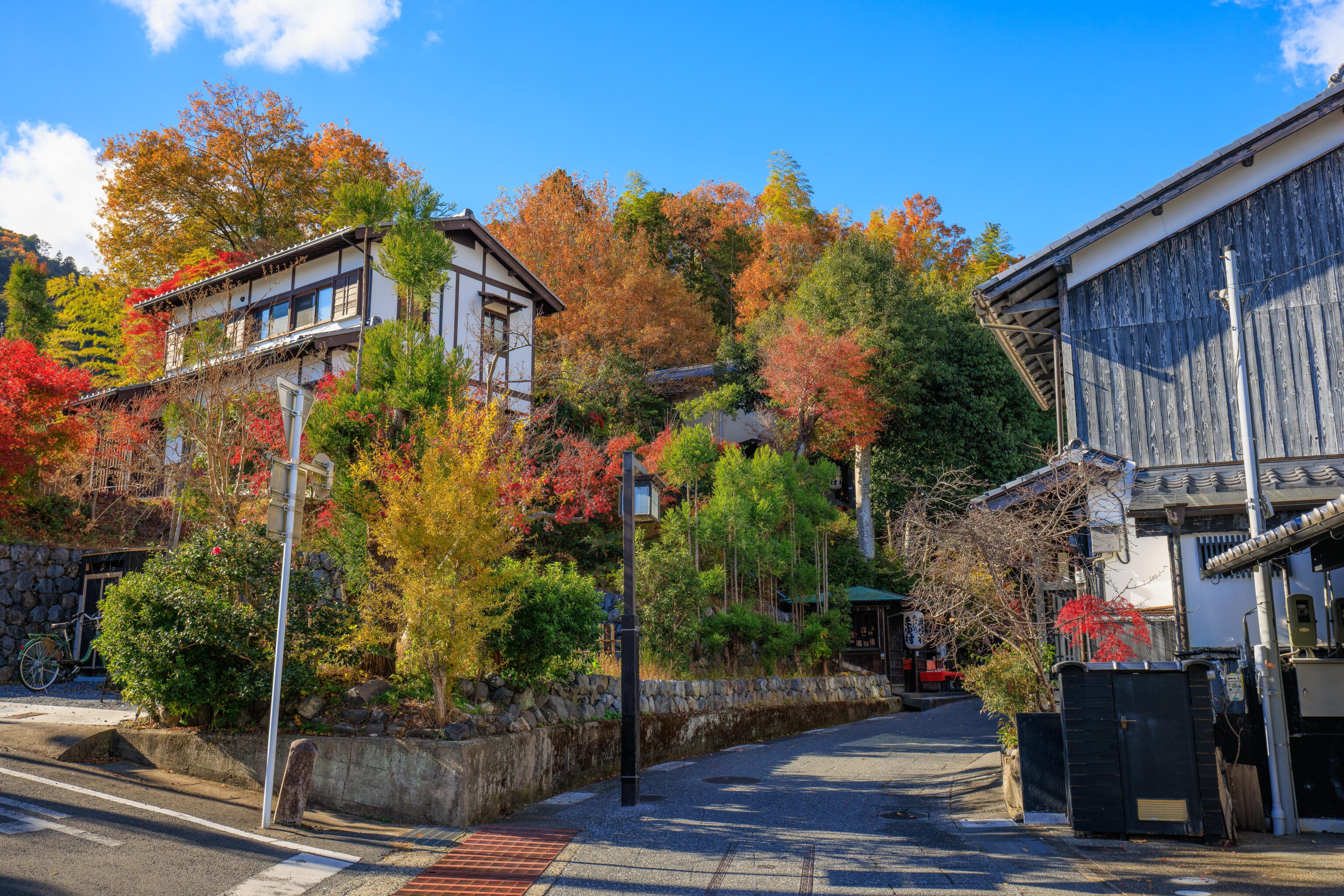
It was a pleasant quiet walk to the temple. We passed by various shops which were open but none were busy.
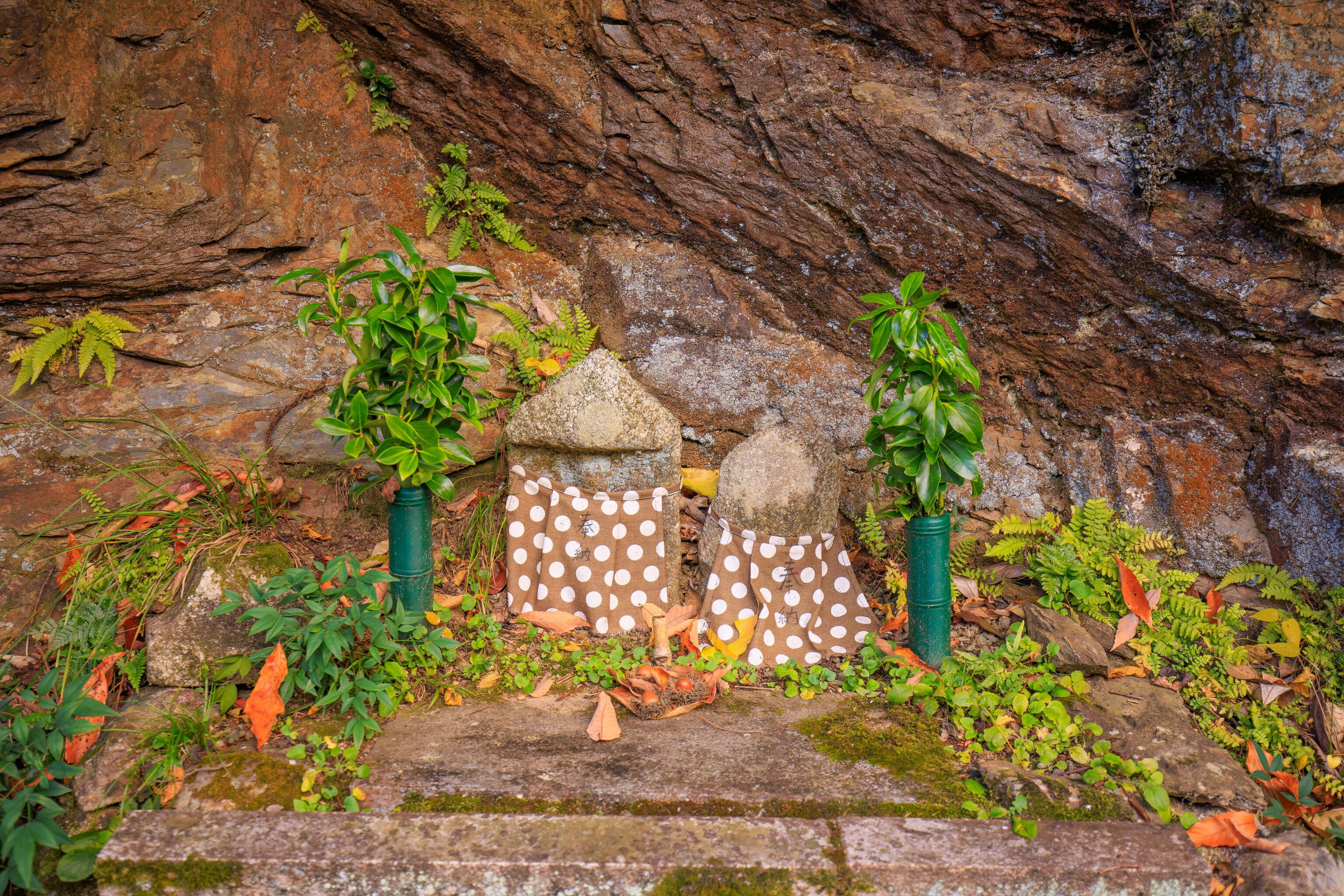
These two small stone statues sit by the pedestrian path leading to the temple. A nearby sign reads:
Adashino Nenbutsuji Temple This temple belongs to the Pure Land sect of Buddhism. Its precinct is filled with numerous stone monuments and stone images of Buddhist deities excavated around the temple. Adashino, this area, was a graveyard in old days. "Adashino-no-tsuyu (the dews of Adashino)" has been widely used in Waka poems and others as an expression symbolizing a sense of mortality. According to a temple legend, between 810 and 824, the high priest Kukai buried a thousand stone Buddhist statues and placed a stone image of the Gochi Nyorai (Buddha of the five wisdoms) on the side of a river flowing in the middle of Adashino to pray for the souls of the people buried here. He also established a temple called Gochizan-myoraiji Temple, which is believed the origin of this temple. At first, it was a temple of the Shingon sect, but in the early Kamakura period, it was made into a training hall of constant prayer of the high priest Honen and was converted into a temple of the Pure Land sect called Nenbutsuji temple. In the main hall, reconstructed in 1712, the main statue of the sitting Amitabha Tathagata is placed. On the 23rd and 24th of August every year, "Sento Kuyo (the thousand candle-lights offering)" festival is held, when a lit candle is offered to each one of 8,000 stone Buddhist images for unknown people. Many people visit this temple on these days.
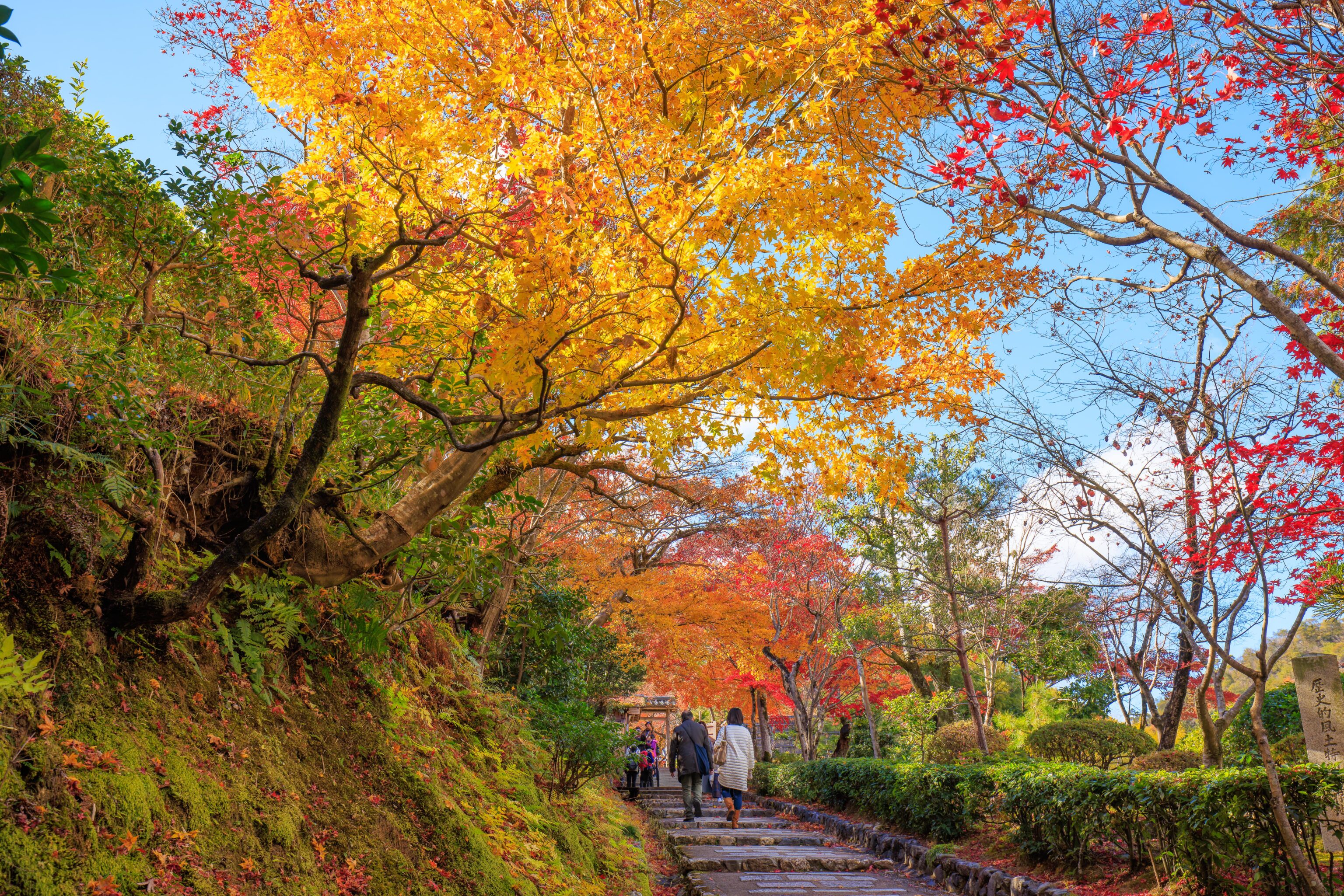
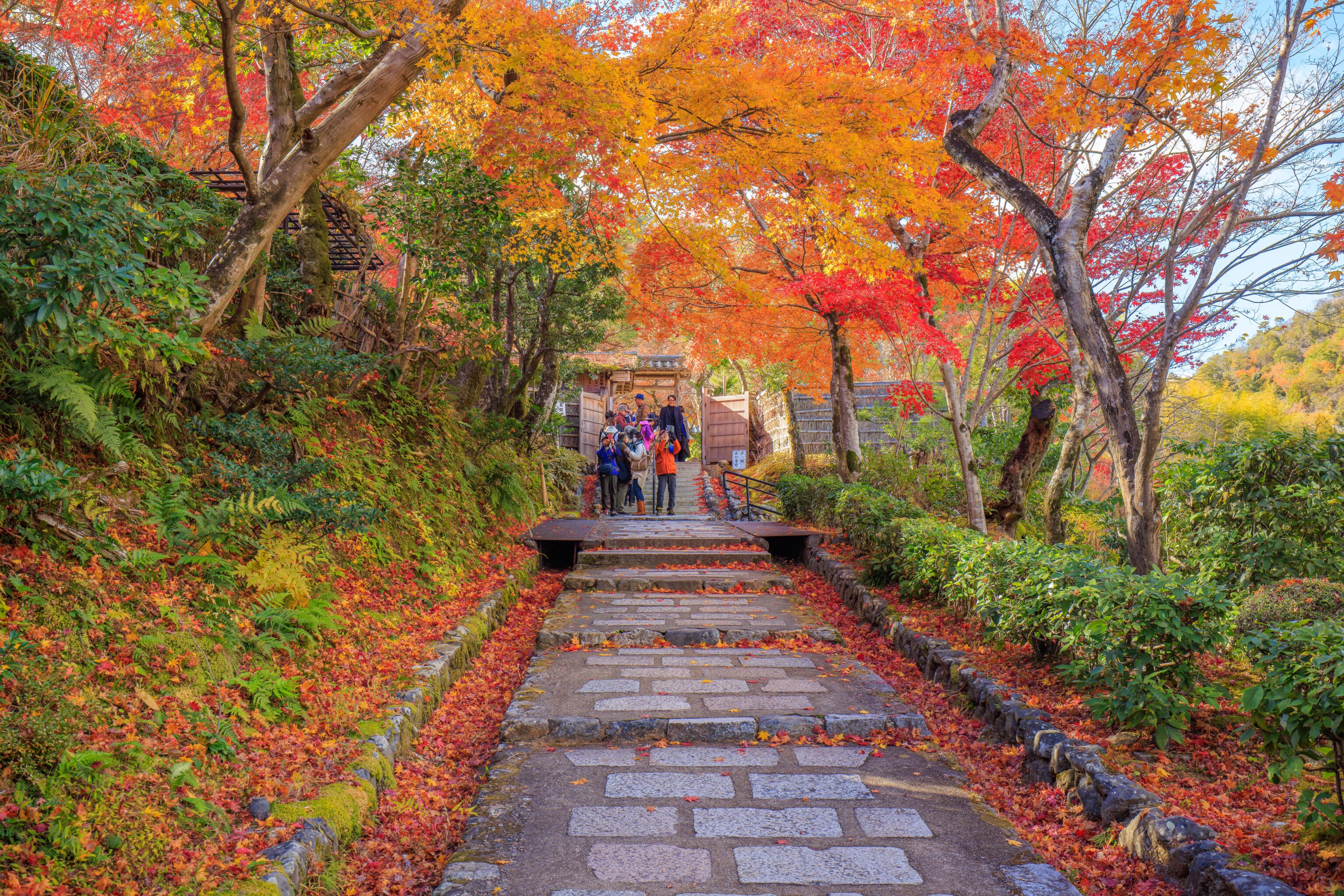
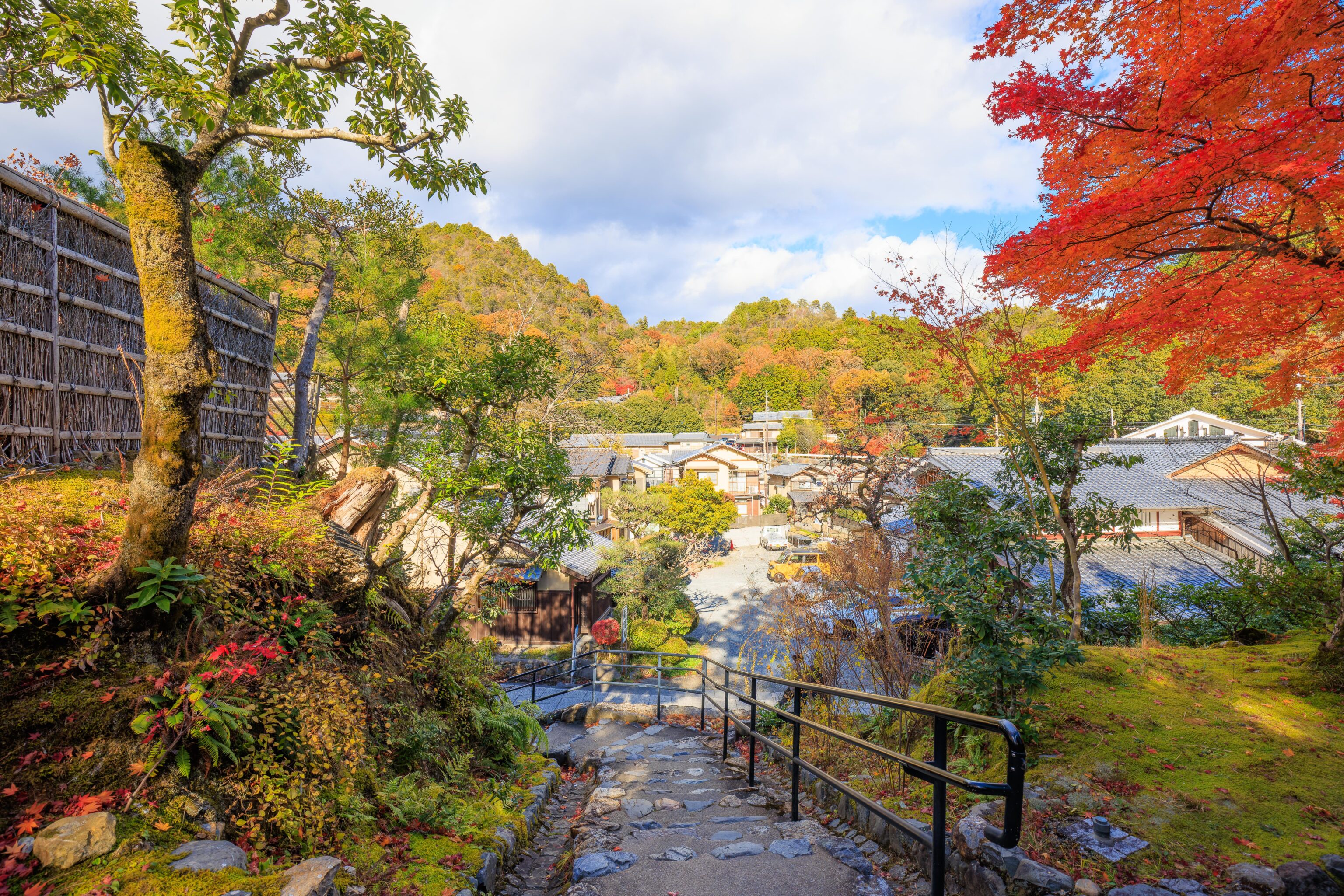
The path led uphill to the temple’s entrance gate.
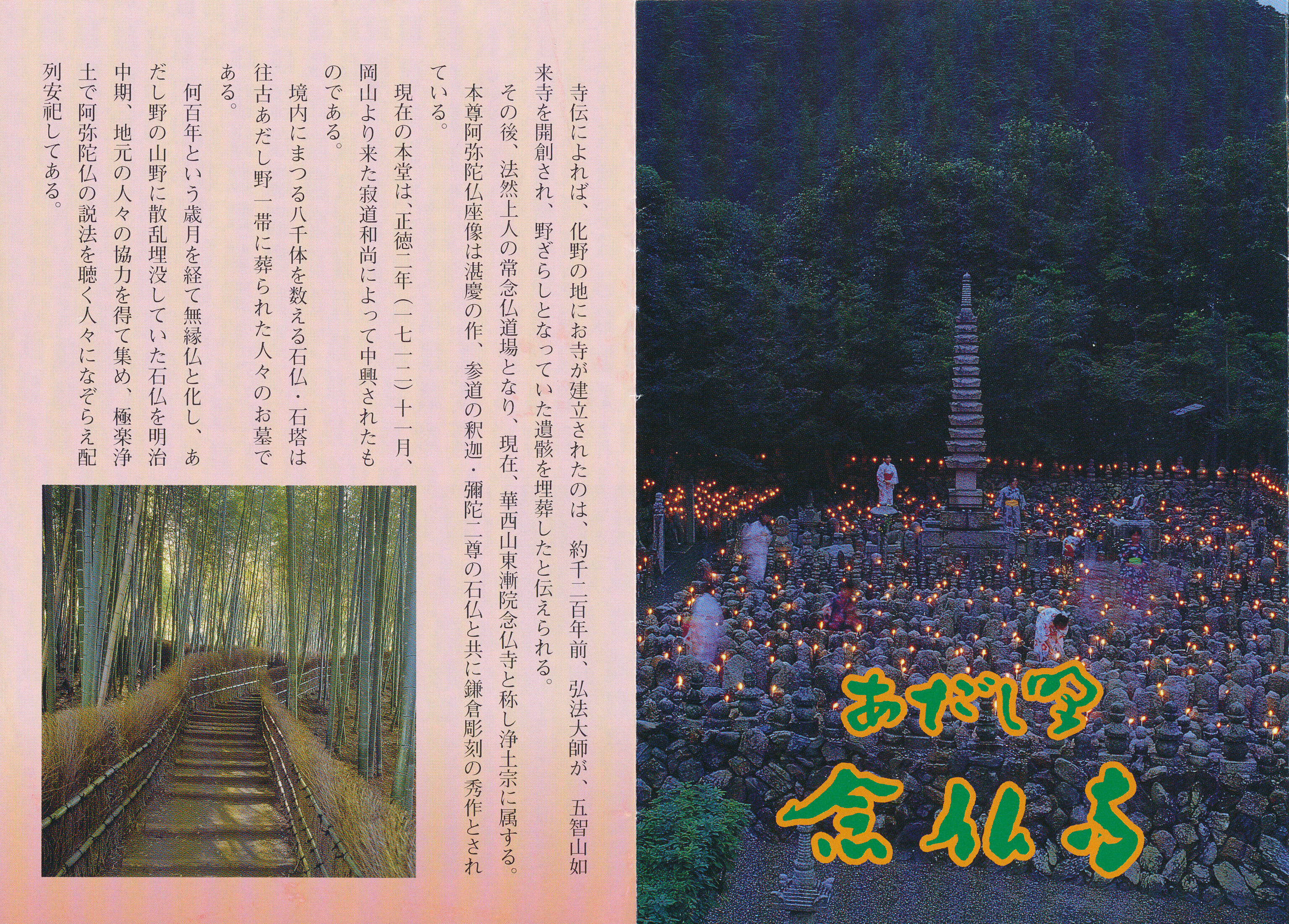
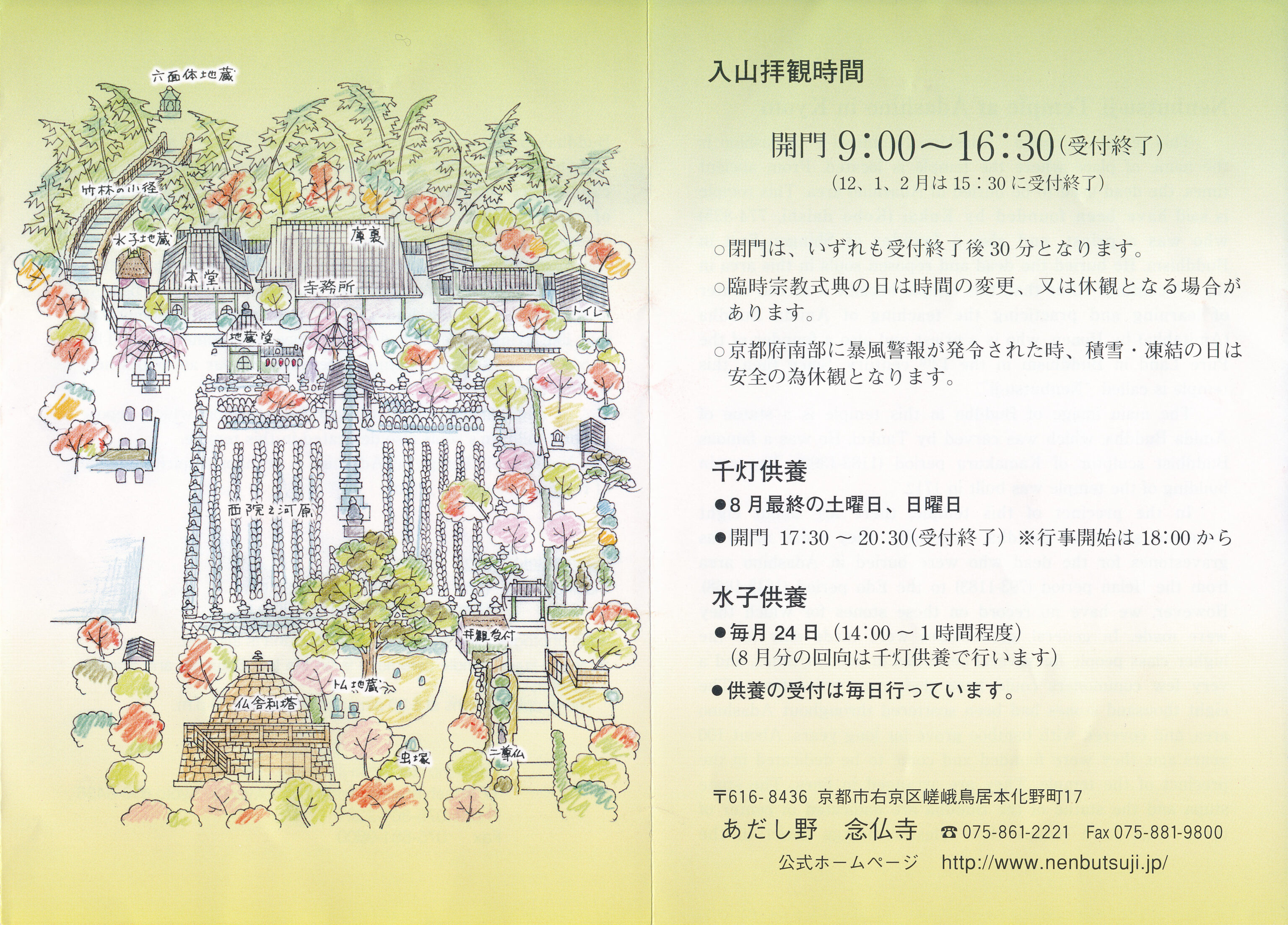
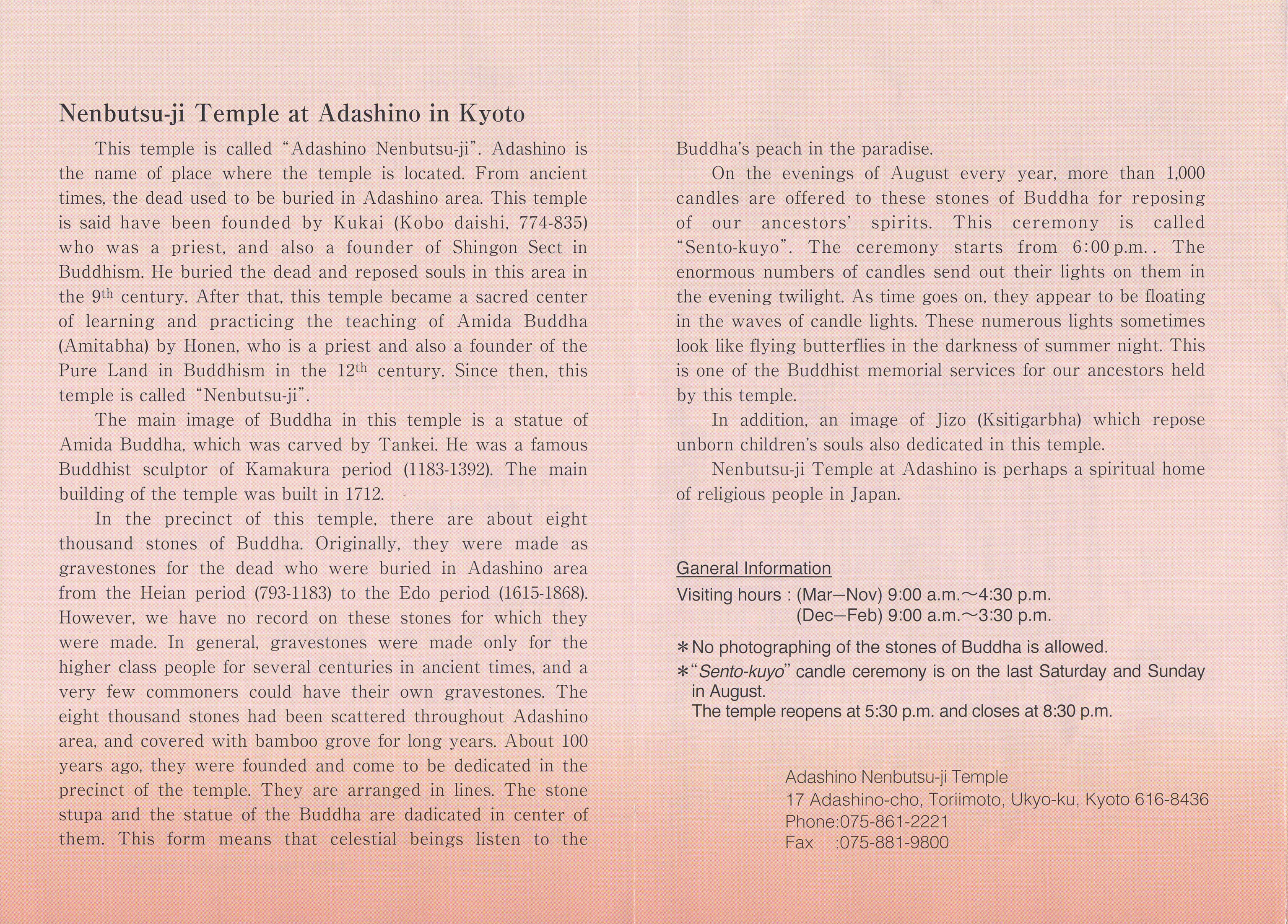
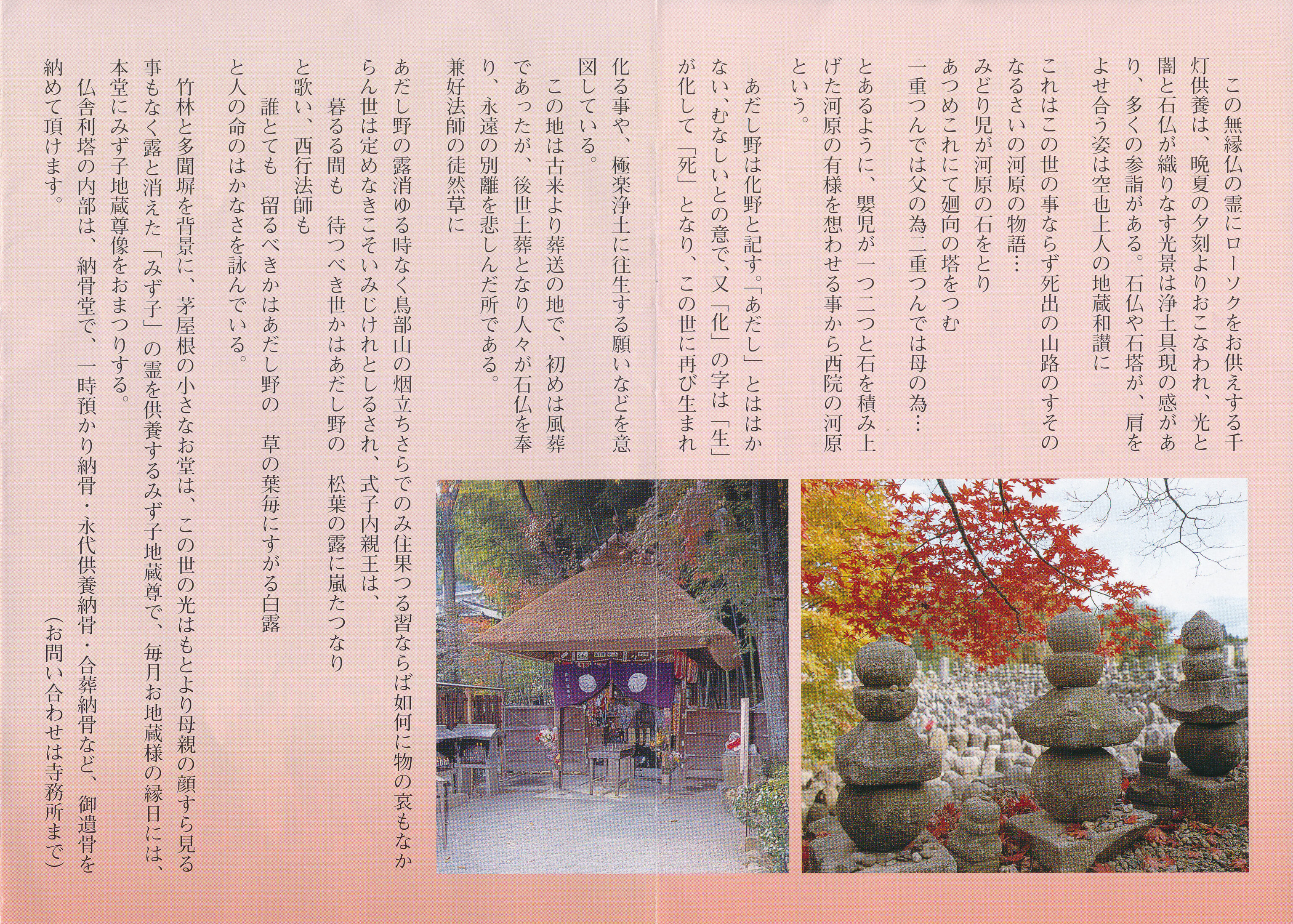
An informational pamphlet was provided including English text.
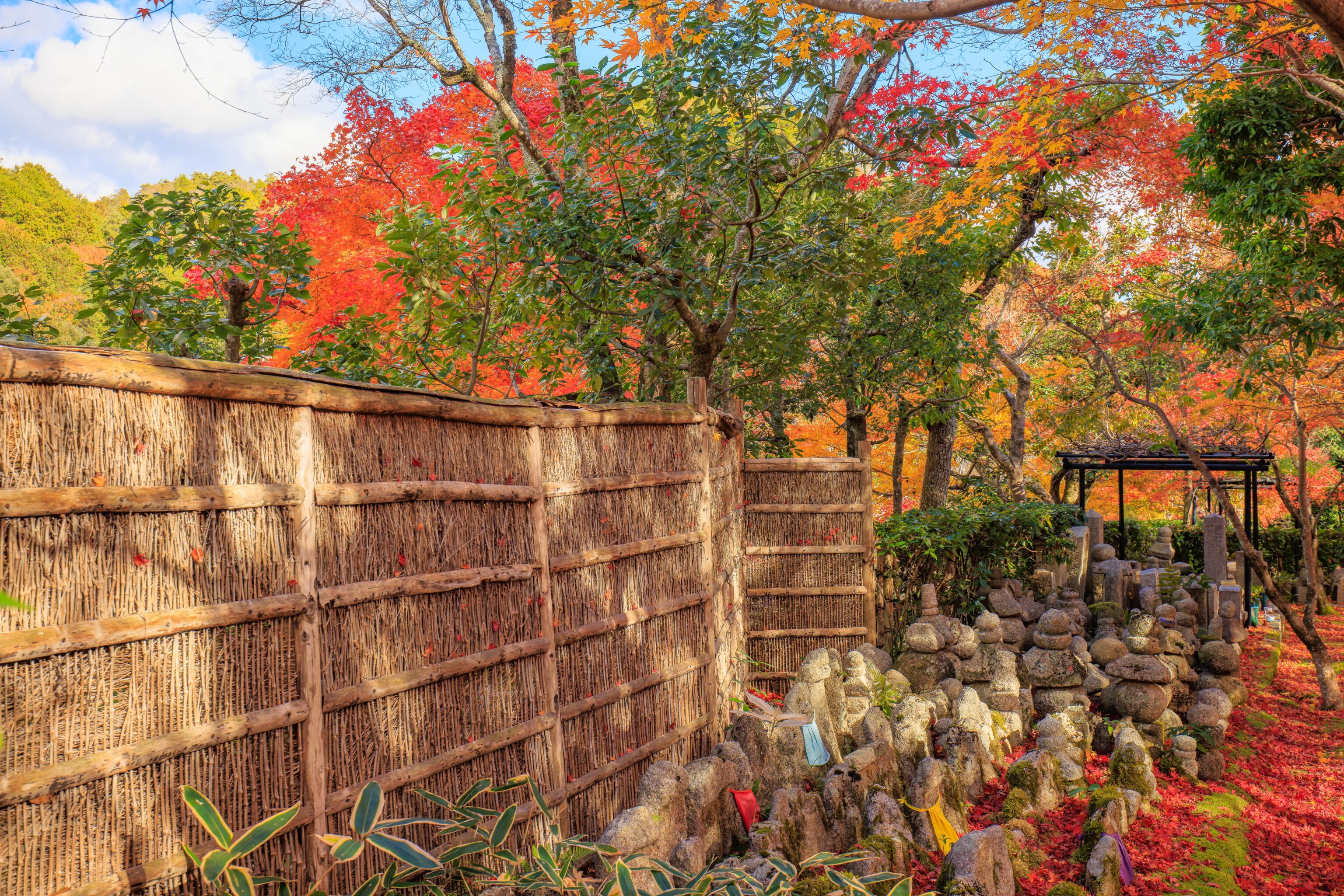
Upon entering, we saw a few of the 8000 small statues that inhabit this temple. As described in the pamphlet, they were made for people who had been buried in this area. These stones were all gathered up and moved to the temple for safe keeping. Other sources mention that these statues were originally created for people who died without any remaining family3.
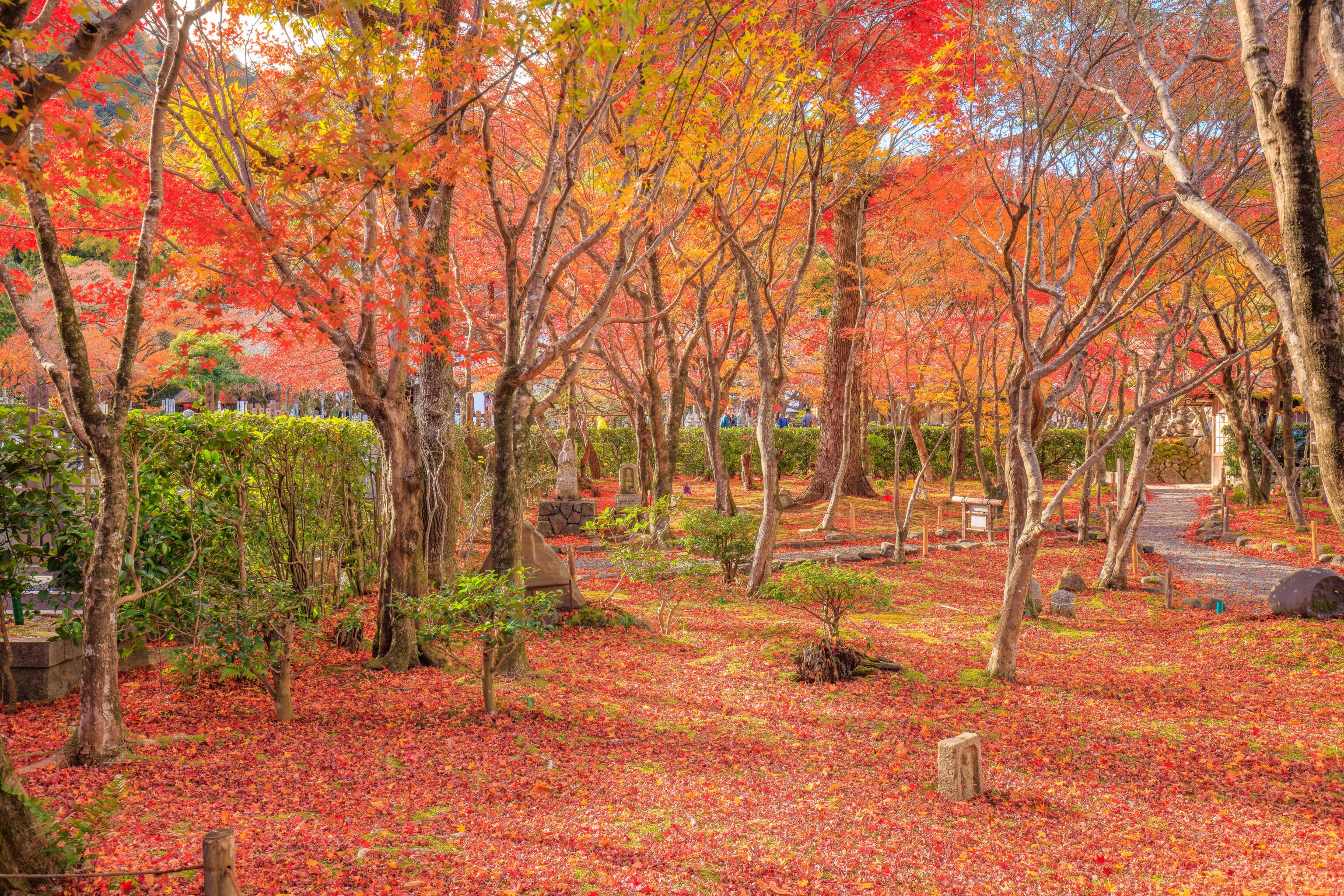
This section of the temple grounds, to the left of the entrance, had plenty of fall foliage, both on the trees and on the ground.
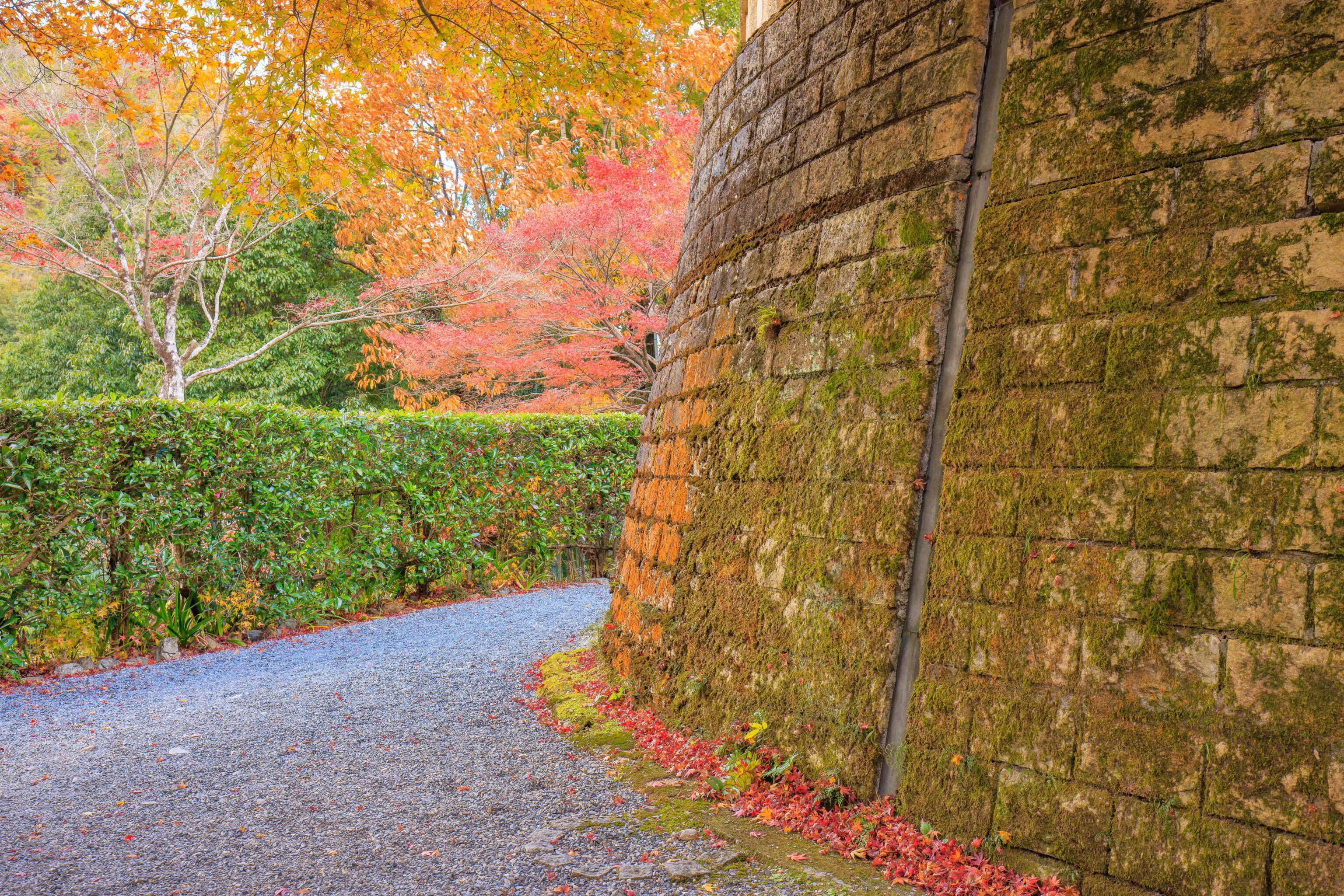
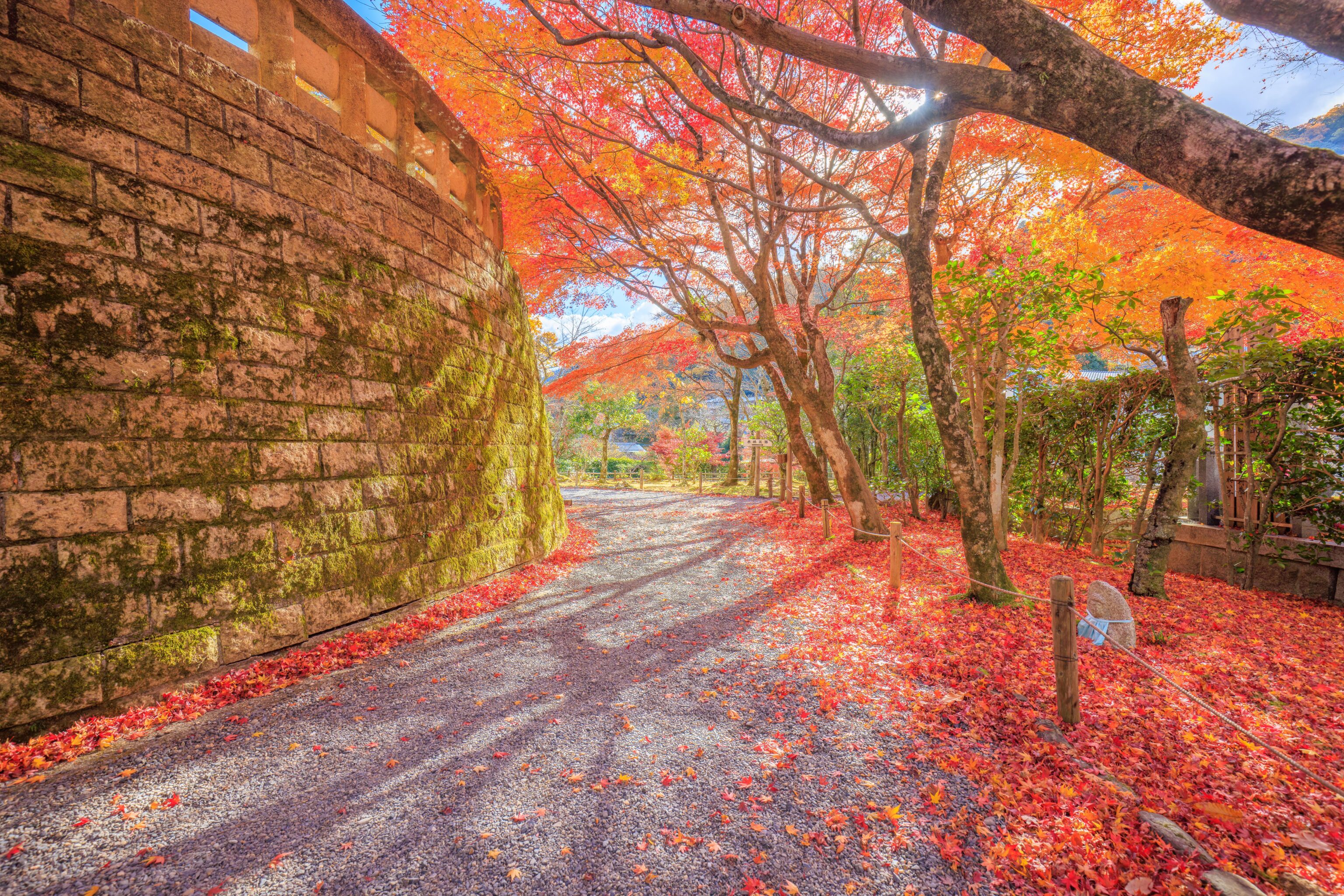
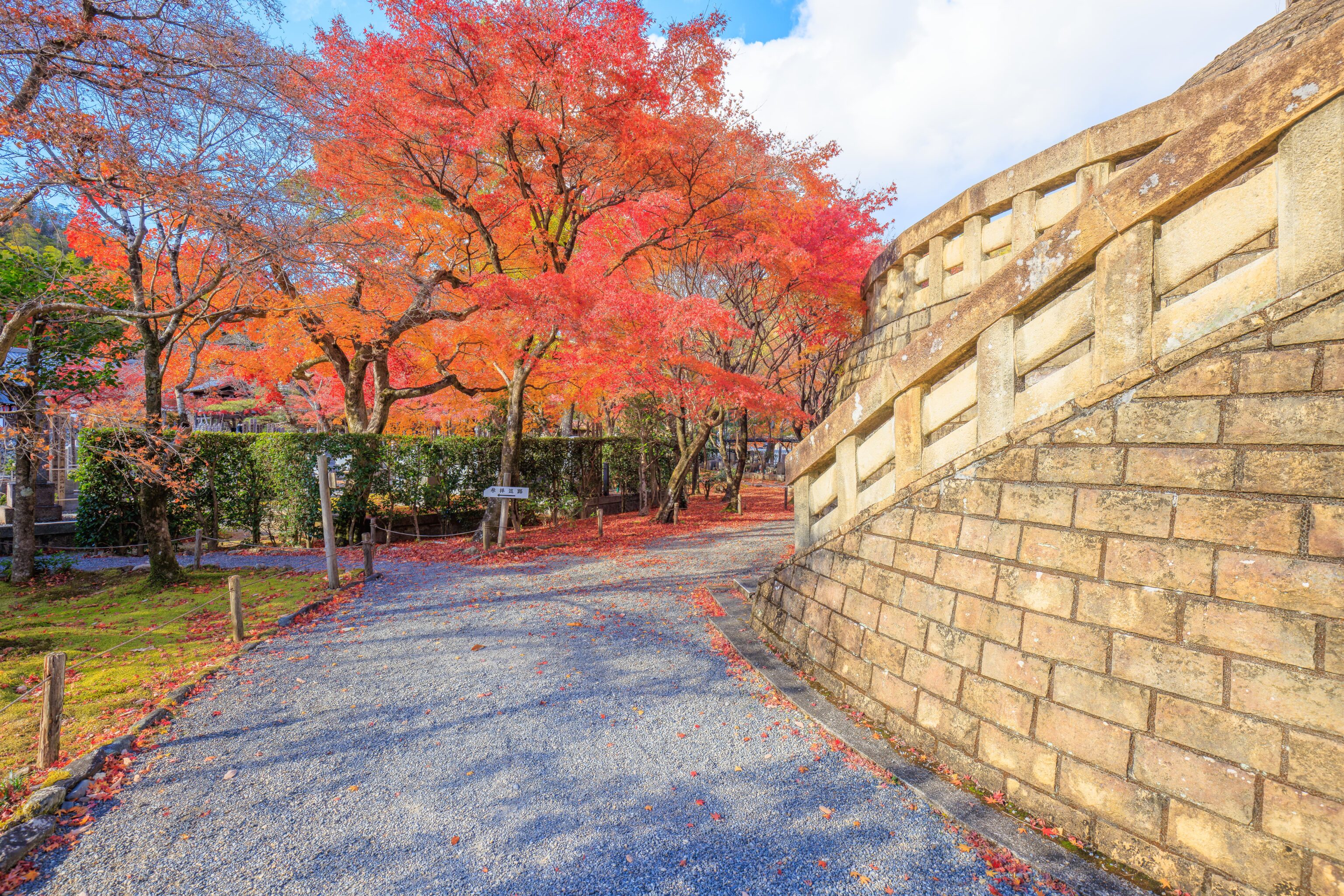
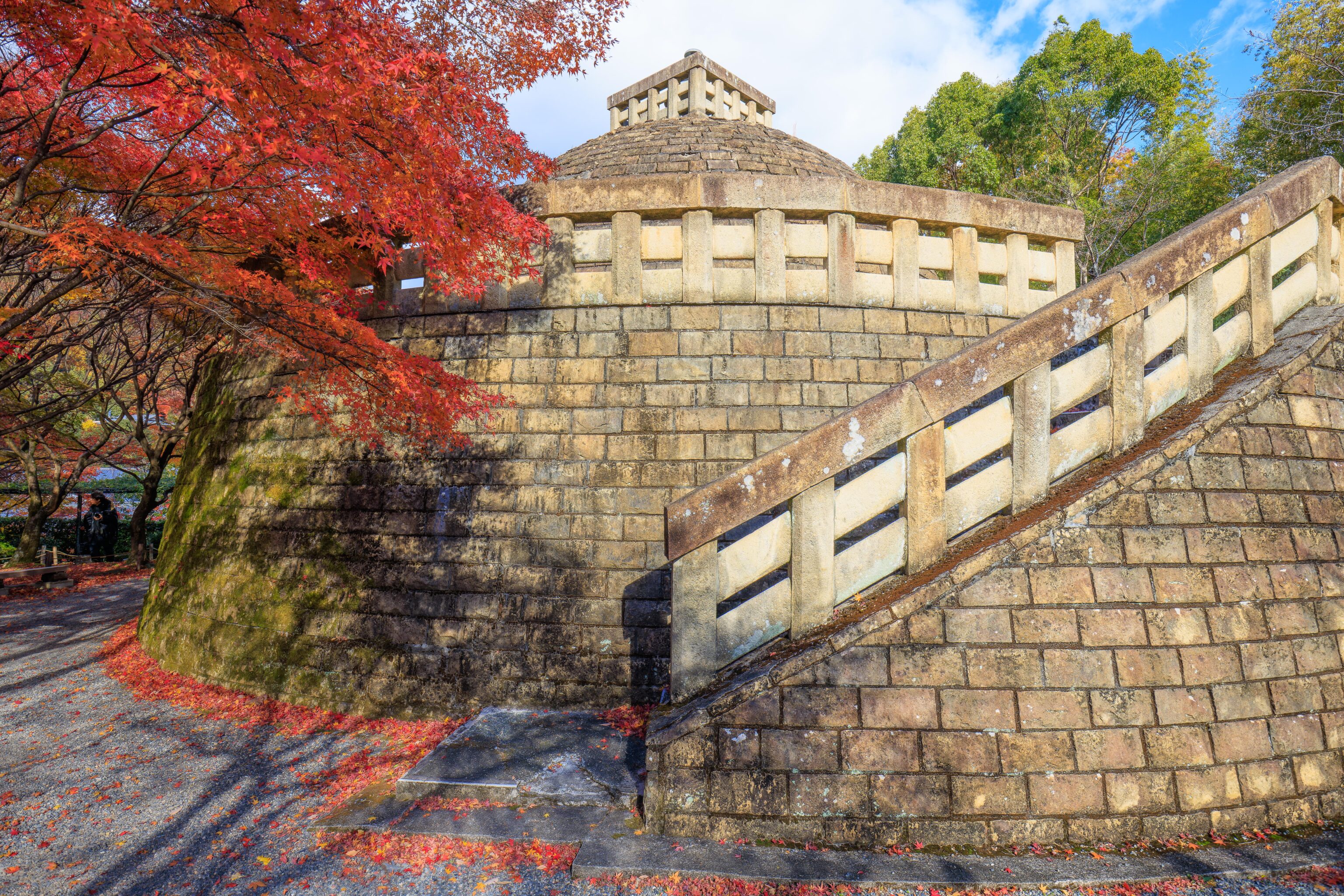
We walked by this circular structure, just to the south of the entrance and east of the temple buildings. The pamphlet’s map labels this building as 仏舎利塔 (Stupa).
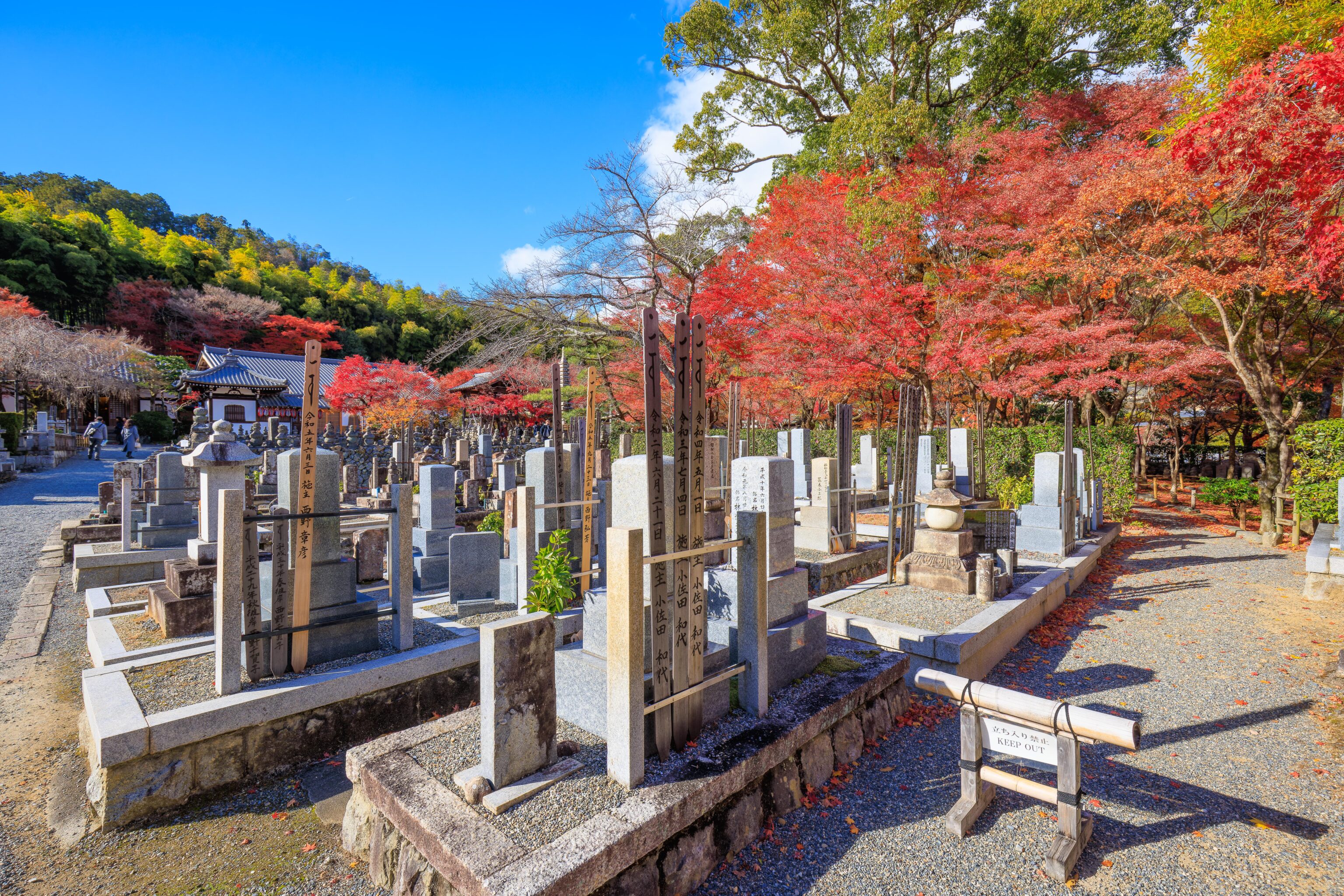
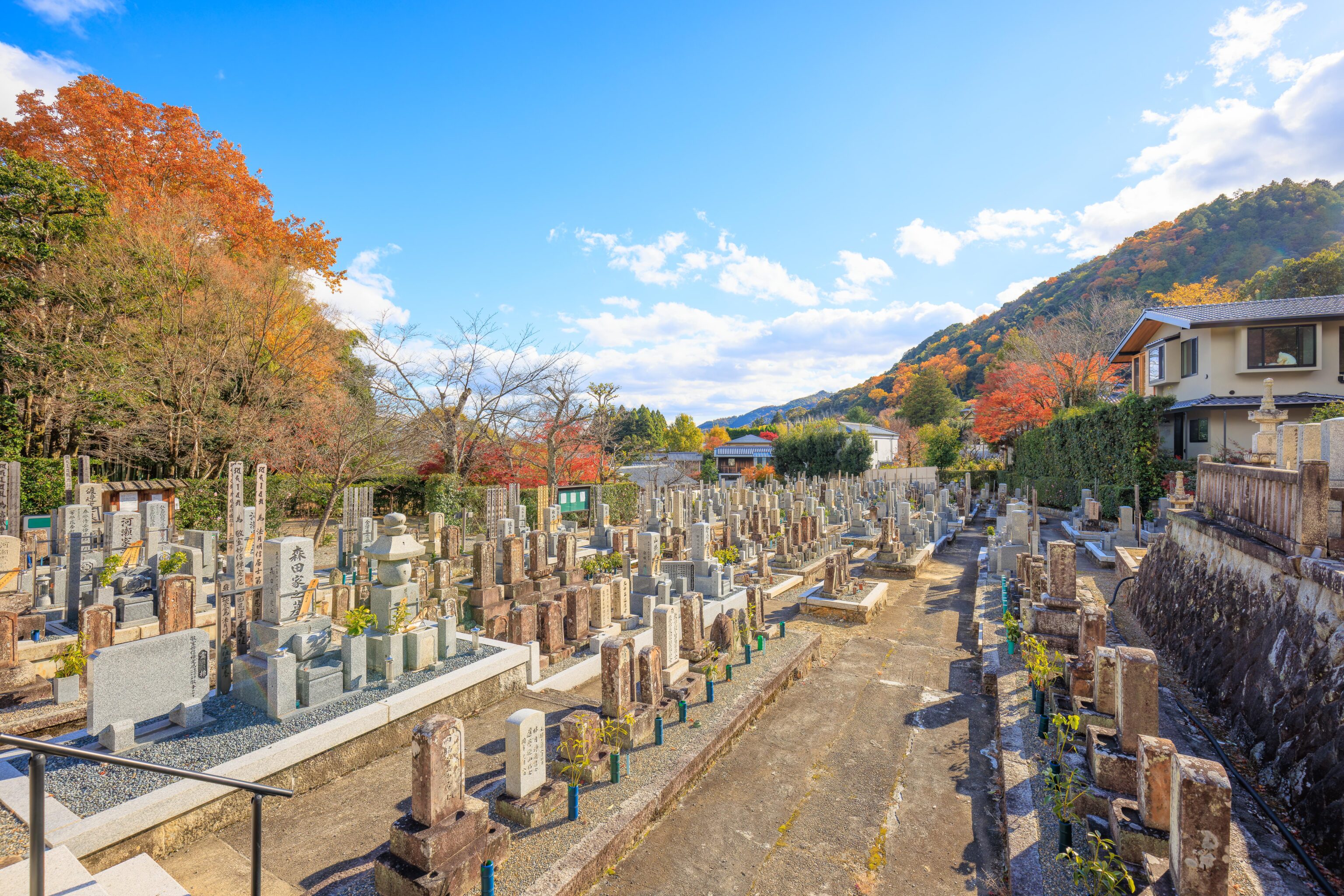
There is a cemetery to the west and south of the stupa.
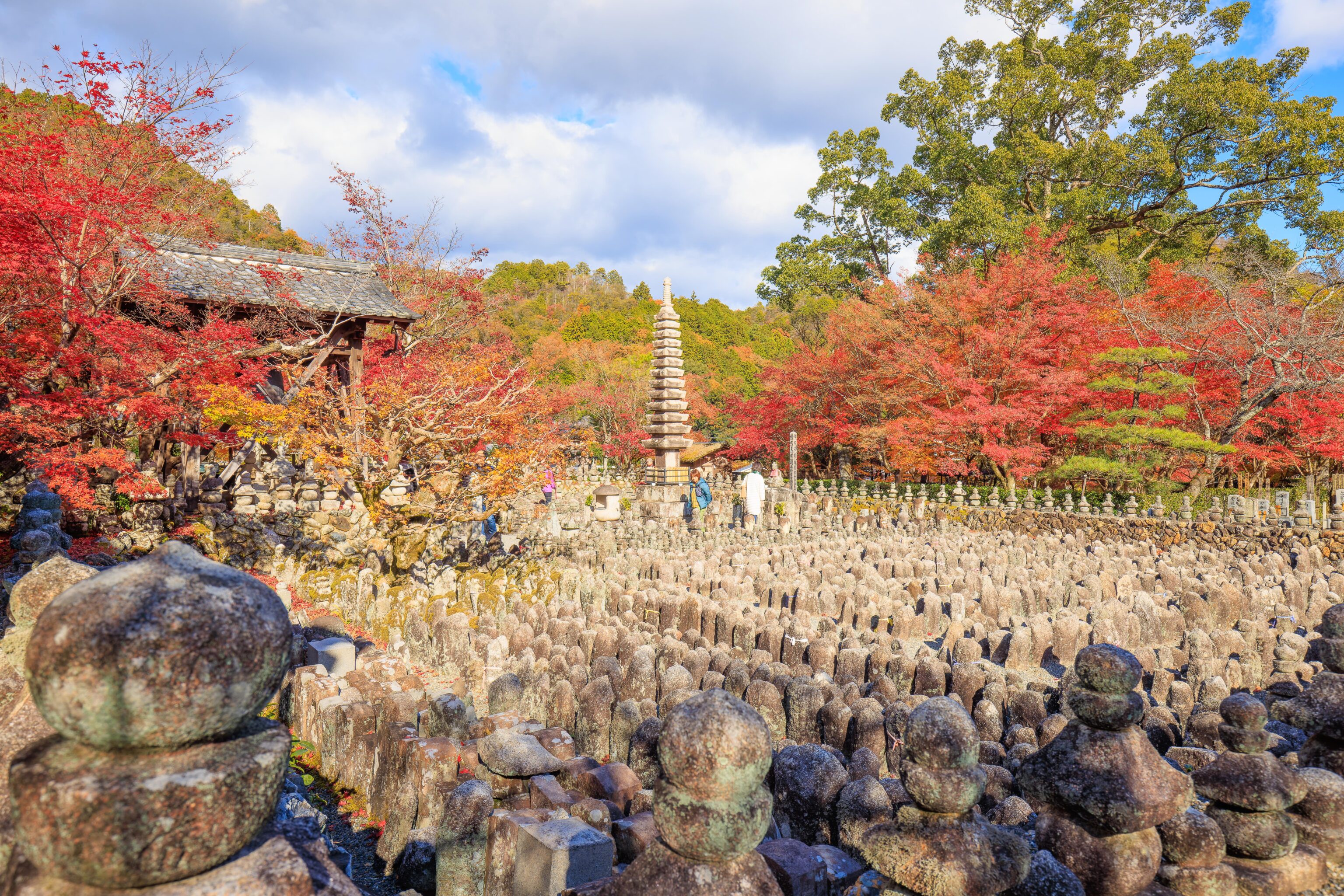
We walked to the west, past this walled off area containing many of the 8000 small stone statues that were moved here. It is possible to enter but we continued on, deciding to visit on our way out.
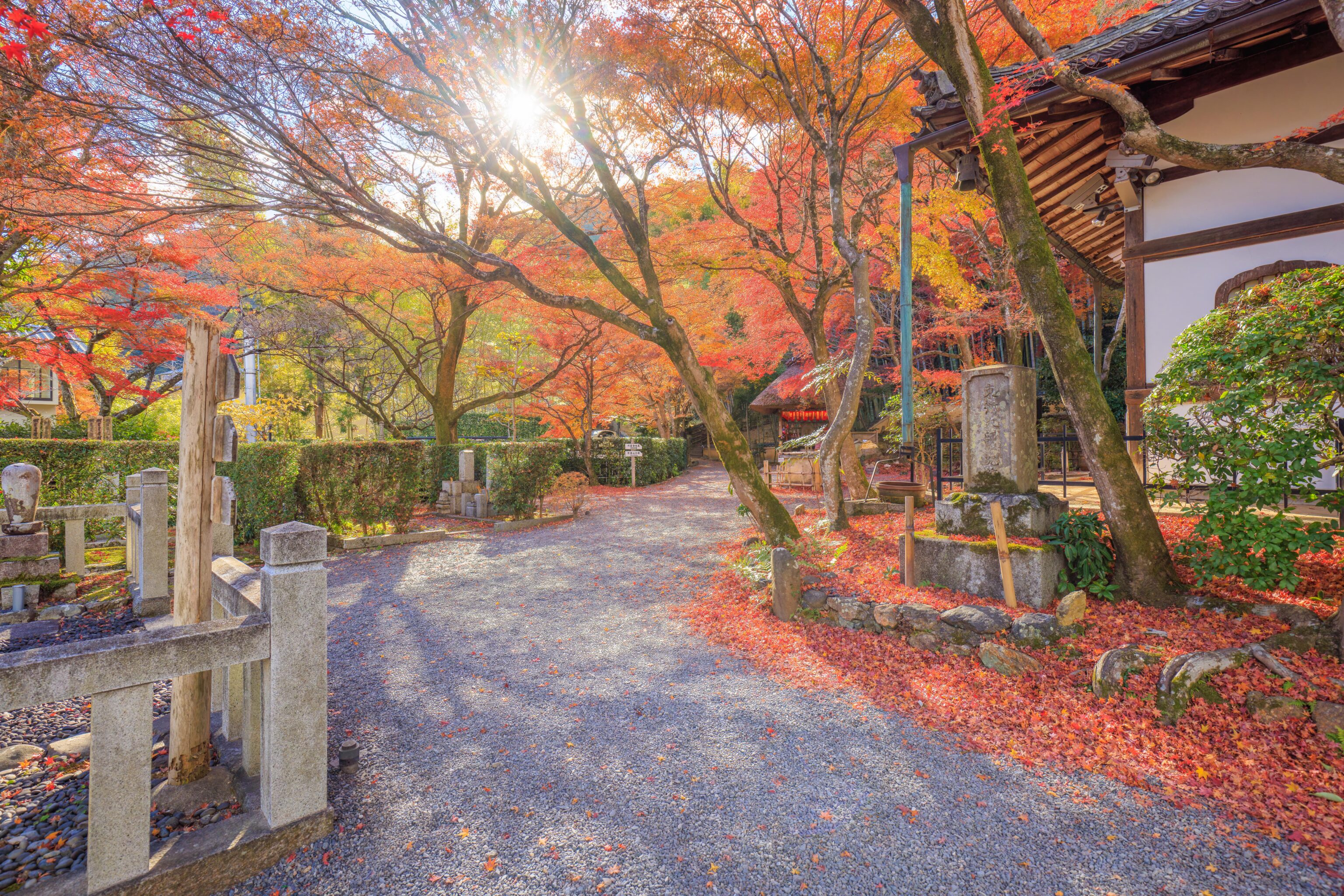
The path seemed to continue on to the west. We followed it to see where it led.
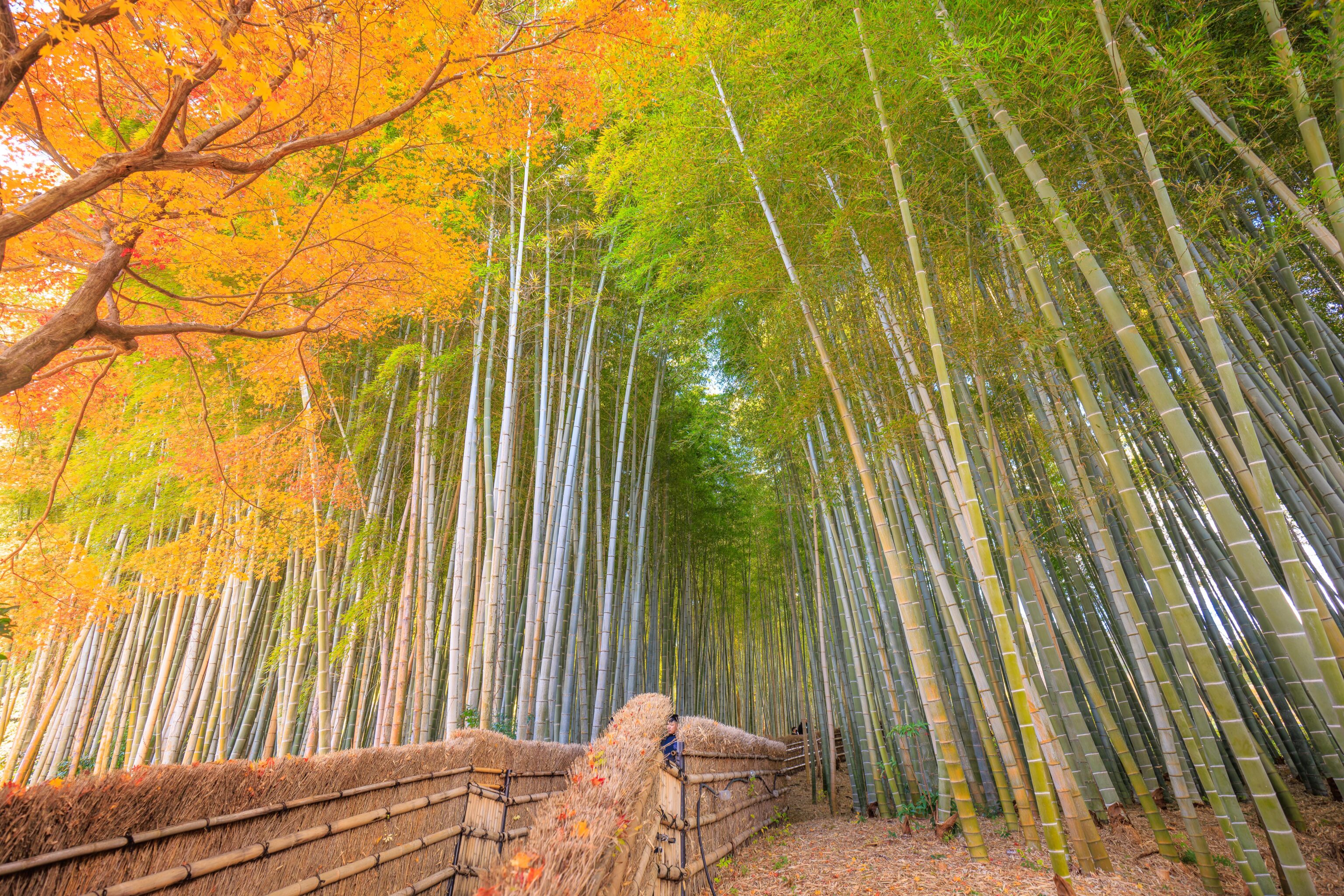
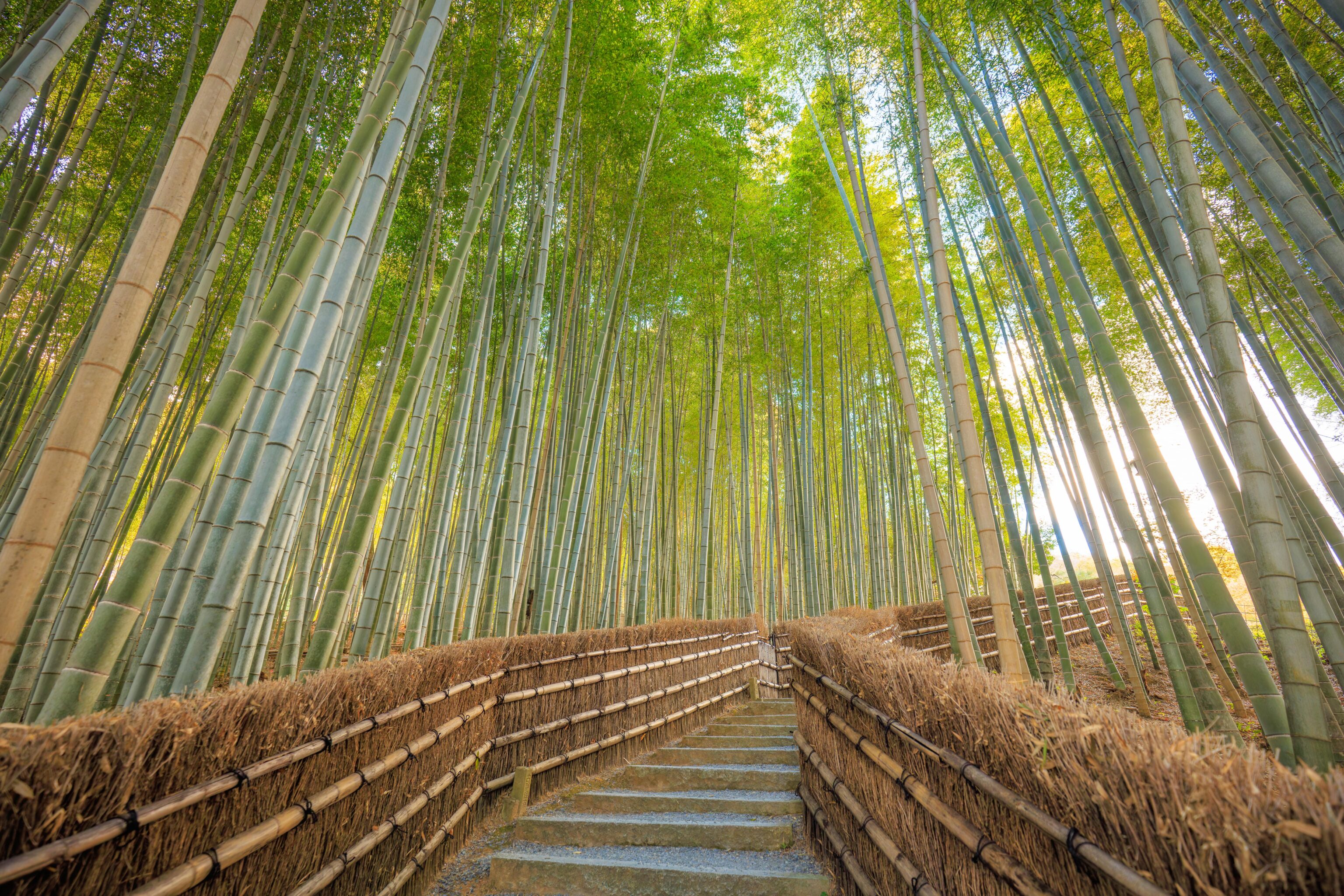
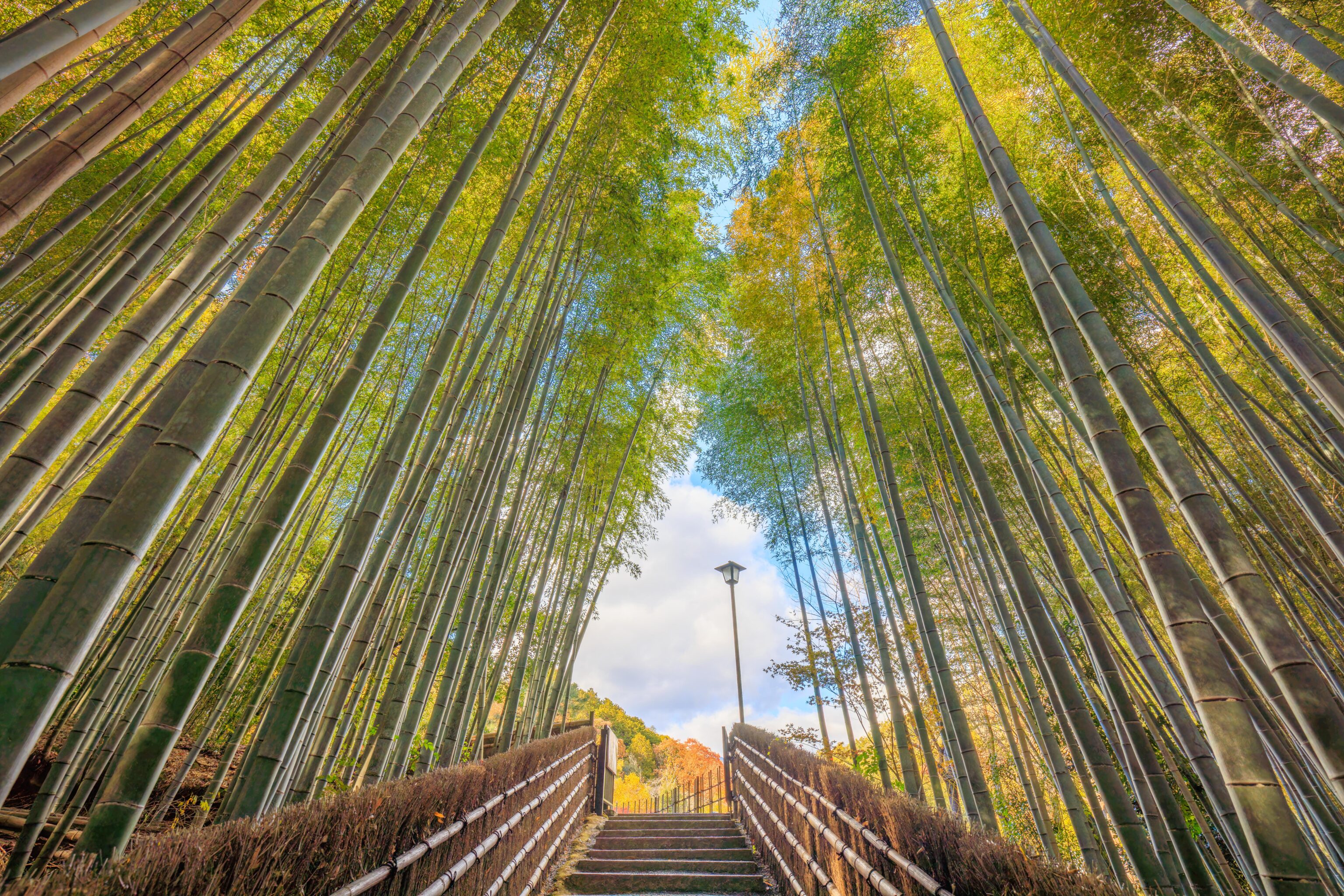
The path went uphill through a bamboo forest. Almost like the more famous bamboo grove that we passed through earlier in the day, minus all the people!
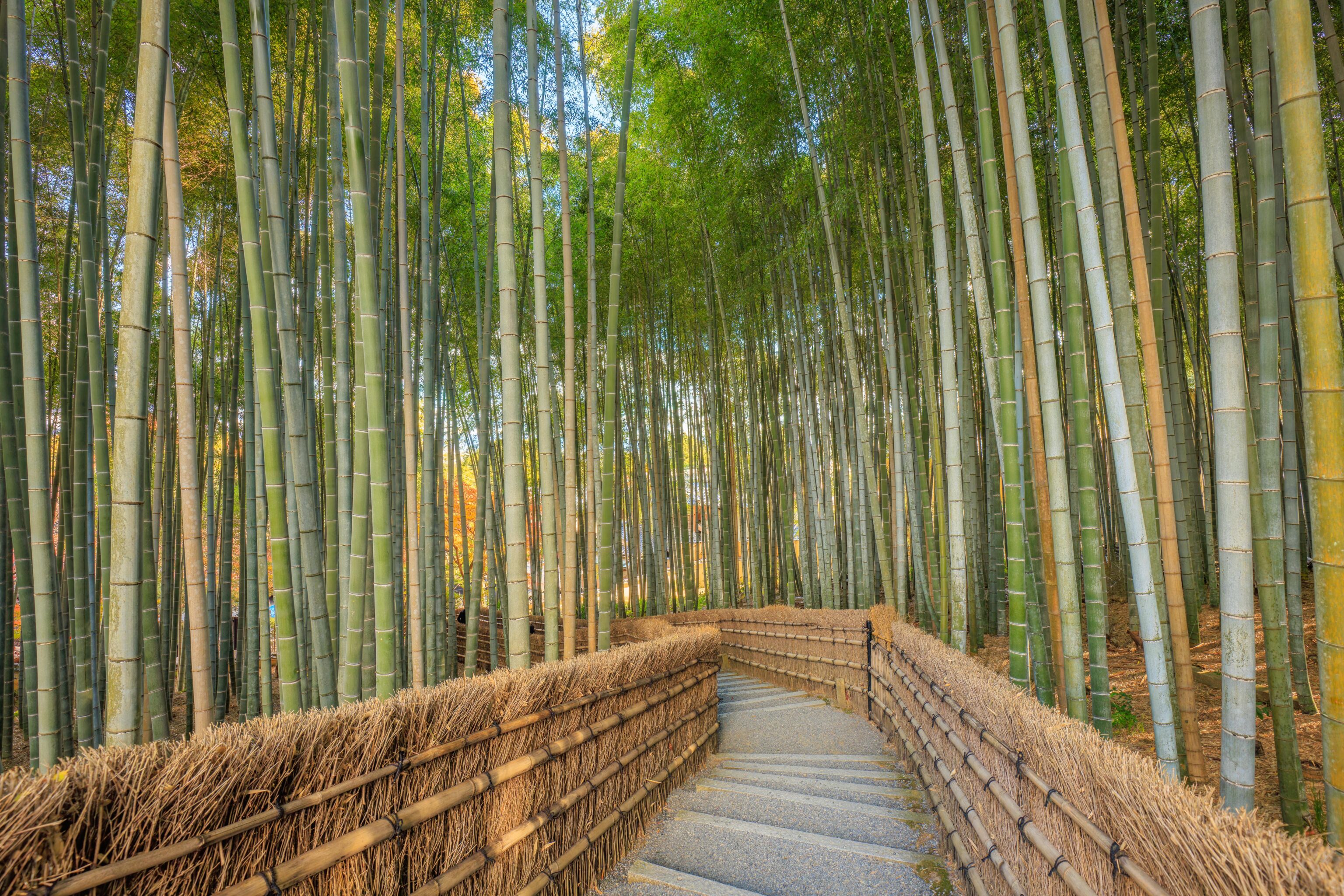
The view from the top.
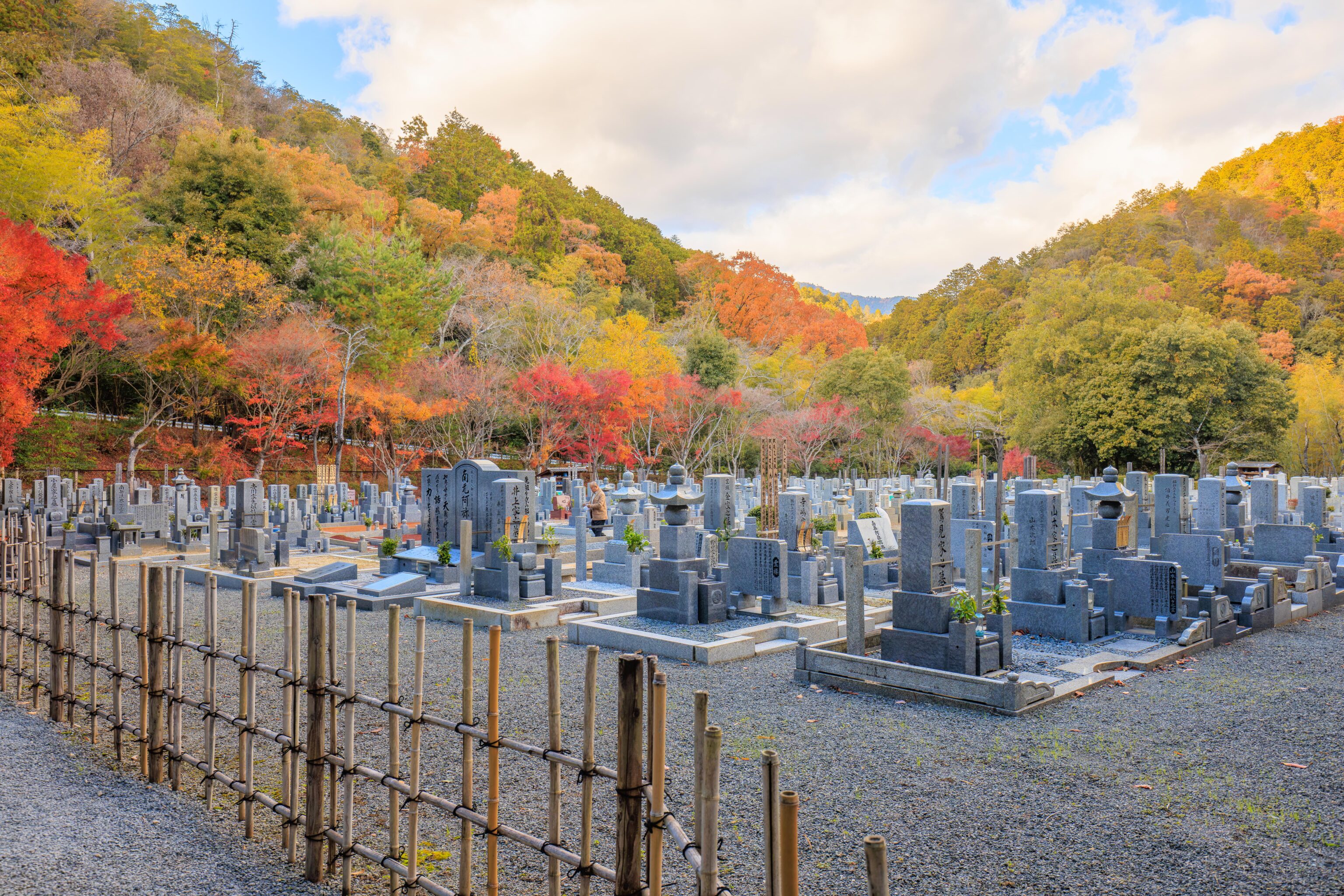
There was another cemetery in an open area at the end of the path. This cemetery seems to be accessible via road on the far end. It is fenced off and doesn’t seem like it necessarily belongs to the temple.
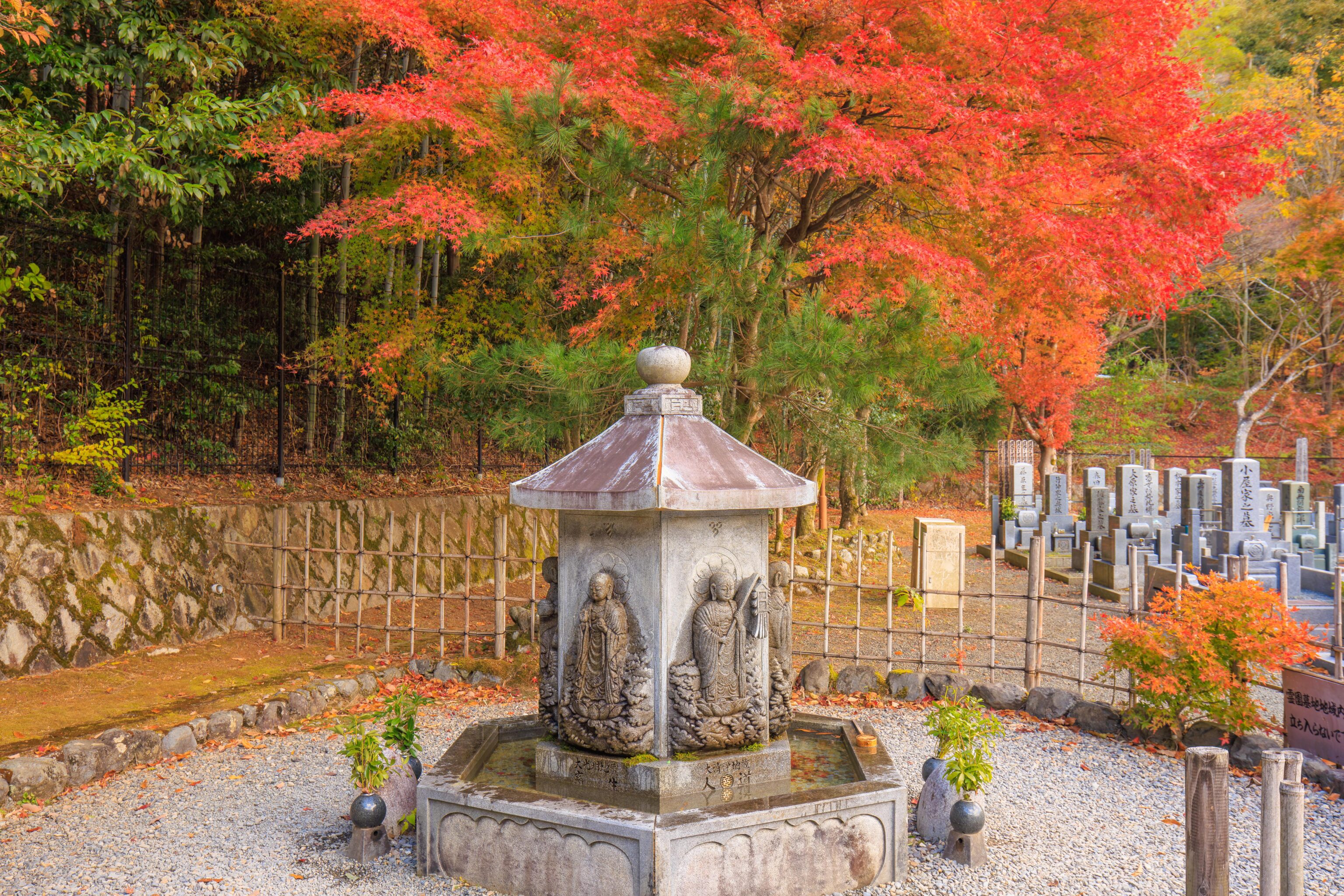
This is Six Sided, Six Bodies of Jizo. Japan Travel describes this monument4:
In Buddhism, it is thought that someone that is lost will be forever trapped in an endless cycle of death and rebirth. That person is said to live in a world with six realms. Entering this cycle after death does not take place on our physical Earth, but rather as a state of mind. In brief, each jizo rescues a lost soul through one of the a corresponding realms: deities, titans, hungry ghosts, Hell, animals, and humans. In order to wash away sins, pilgrims pour water over the statue.
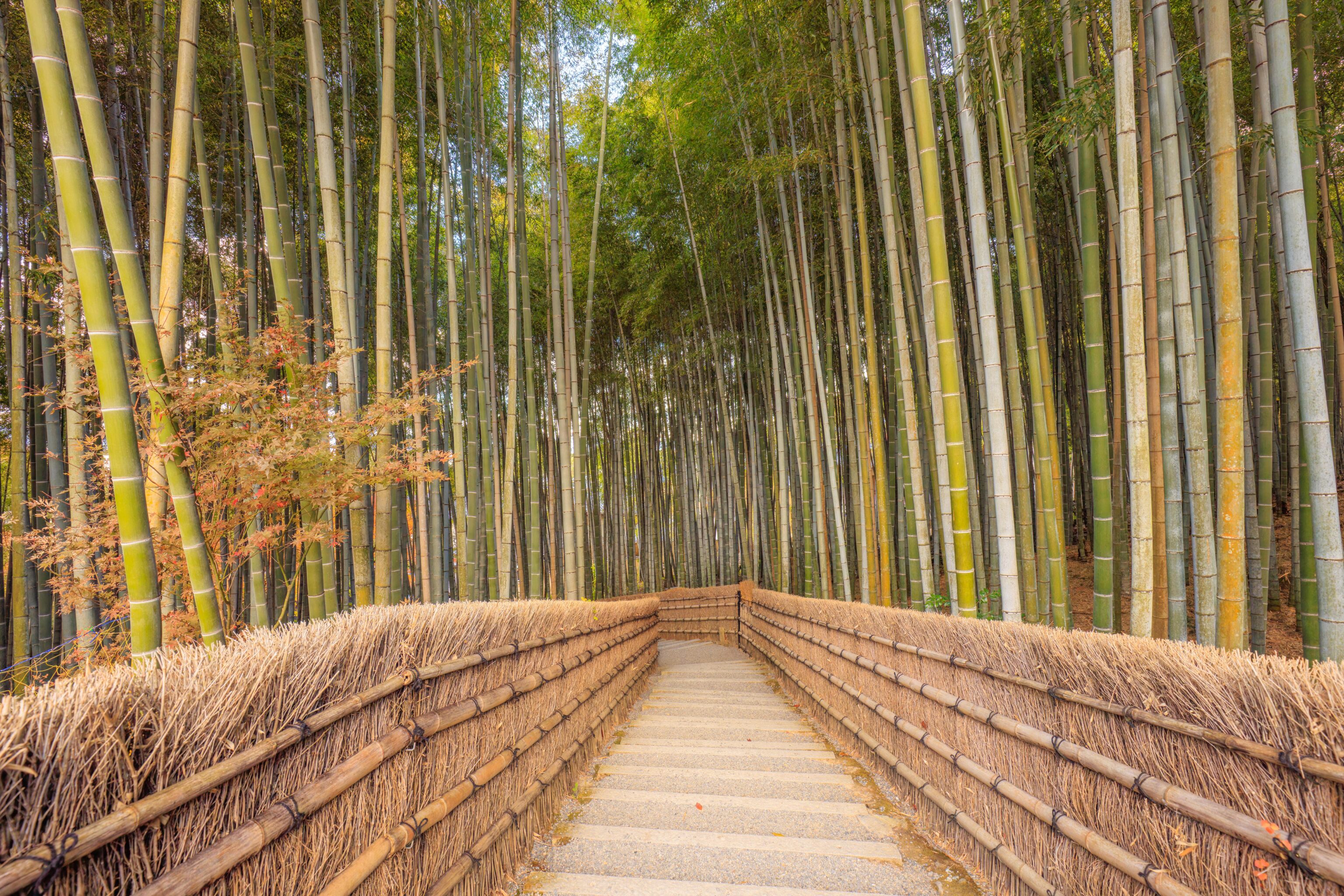
We headed back down to the temple through the bamboo.
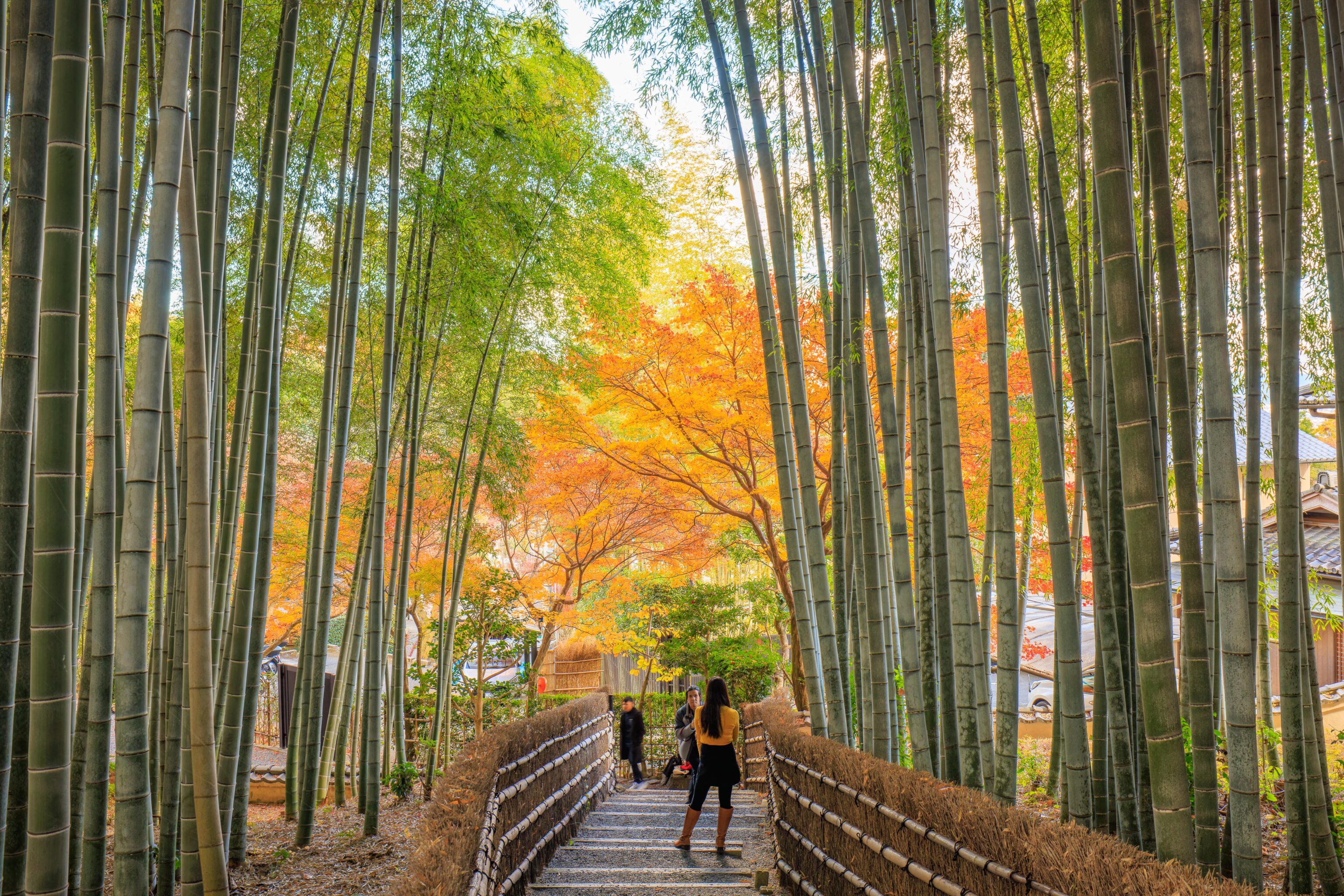
There was a photo session going on below as we headed down.
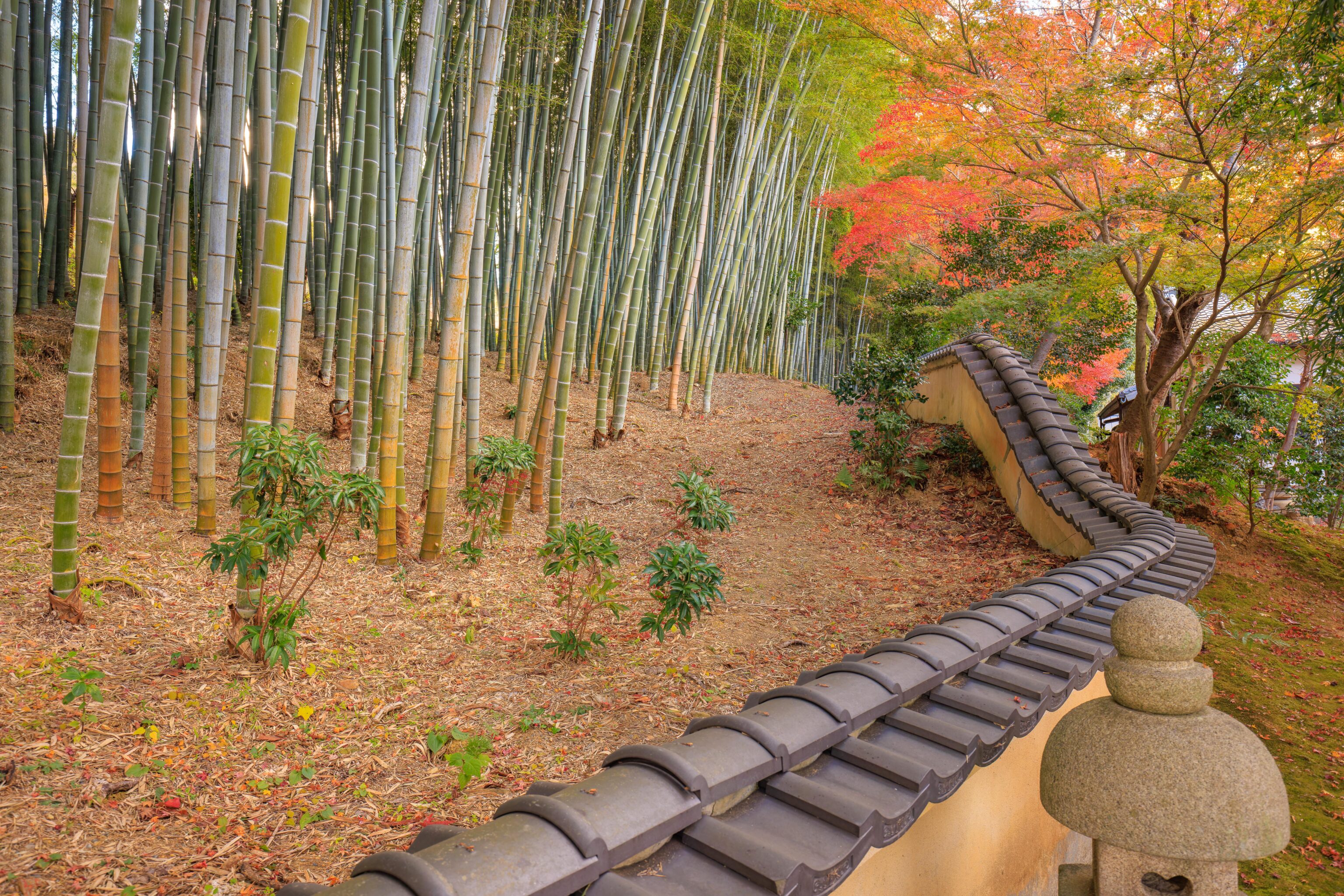
The bamboo forest, as seen from the temple’s low wall.
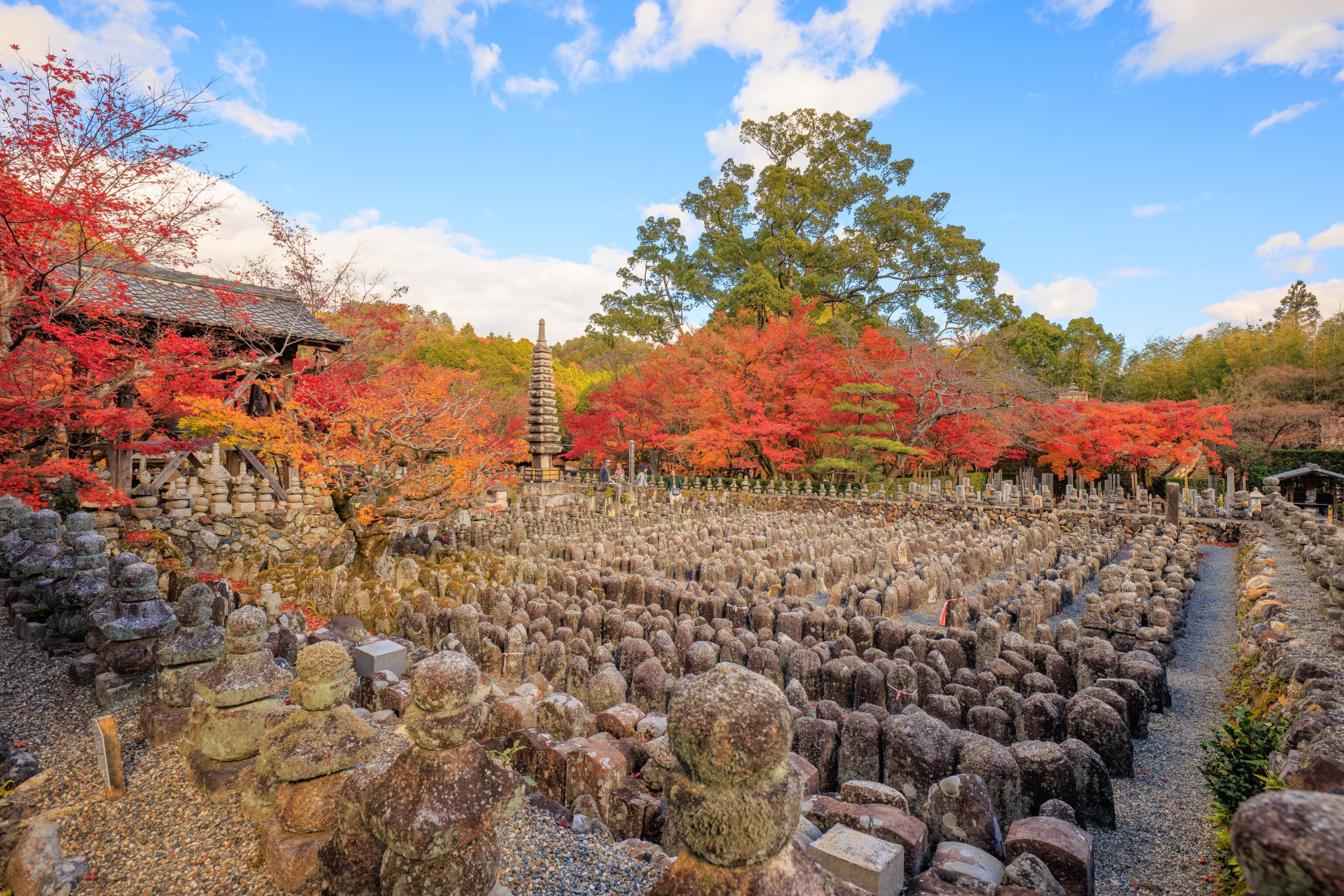
The many statues from the southwest corner near the entrance to the bamboo forest.
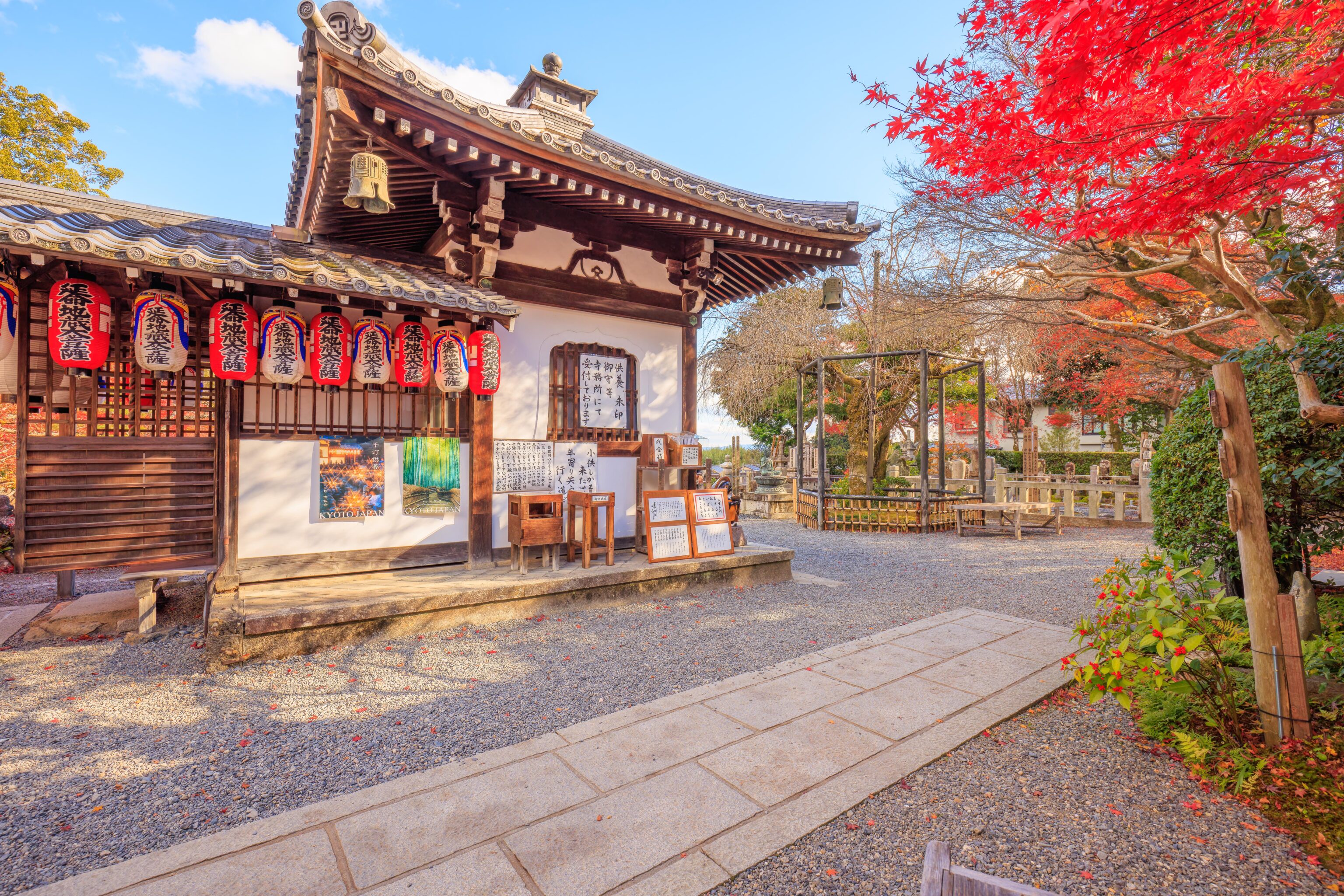
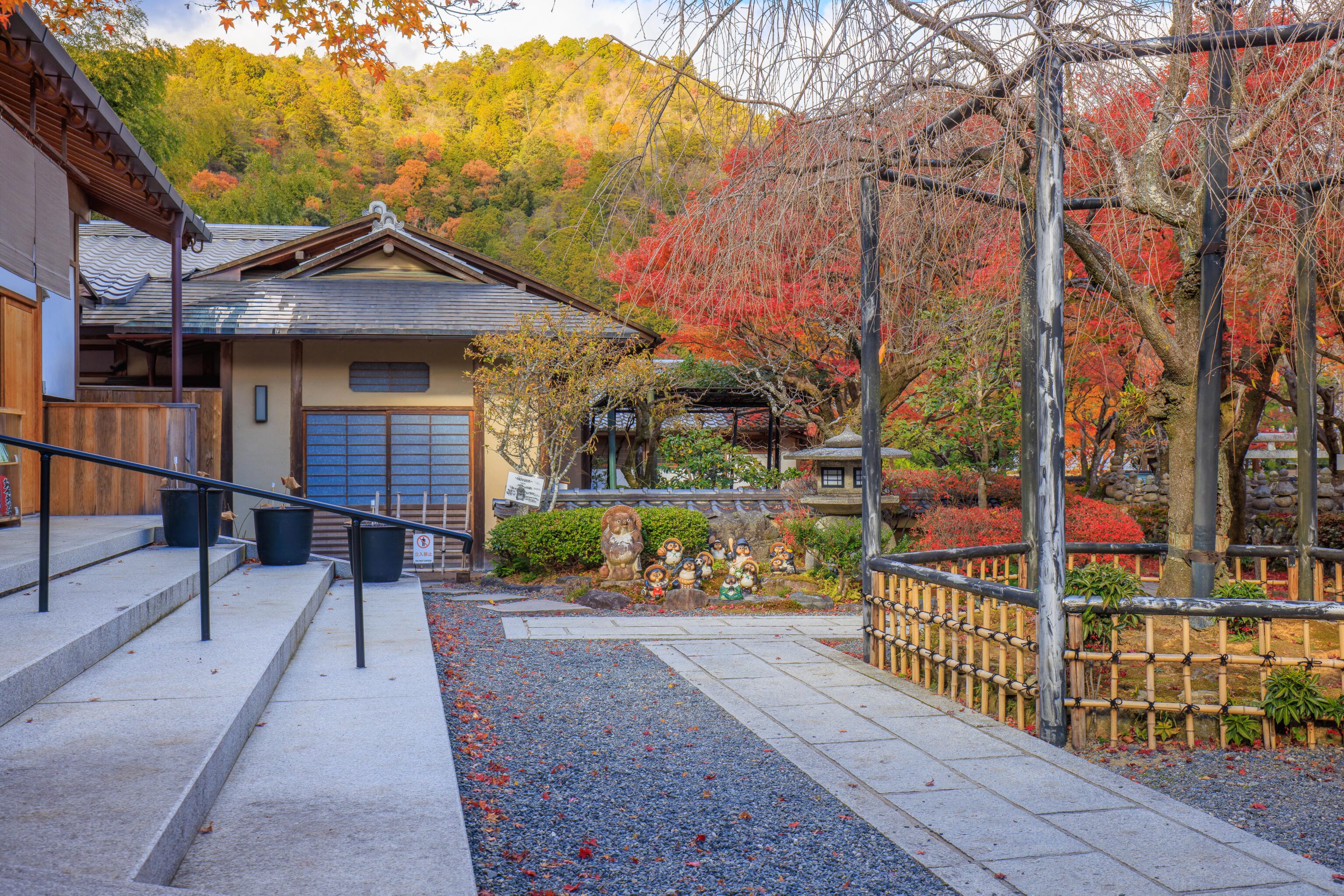
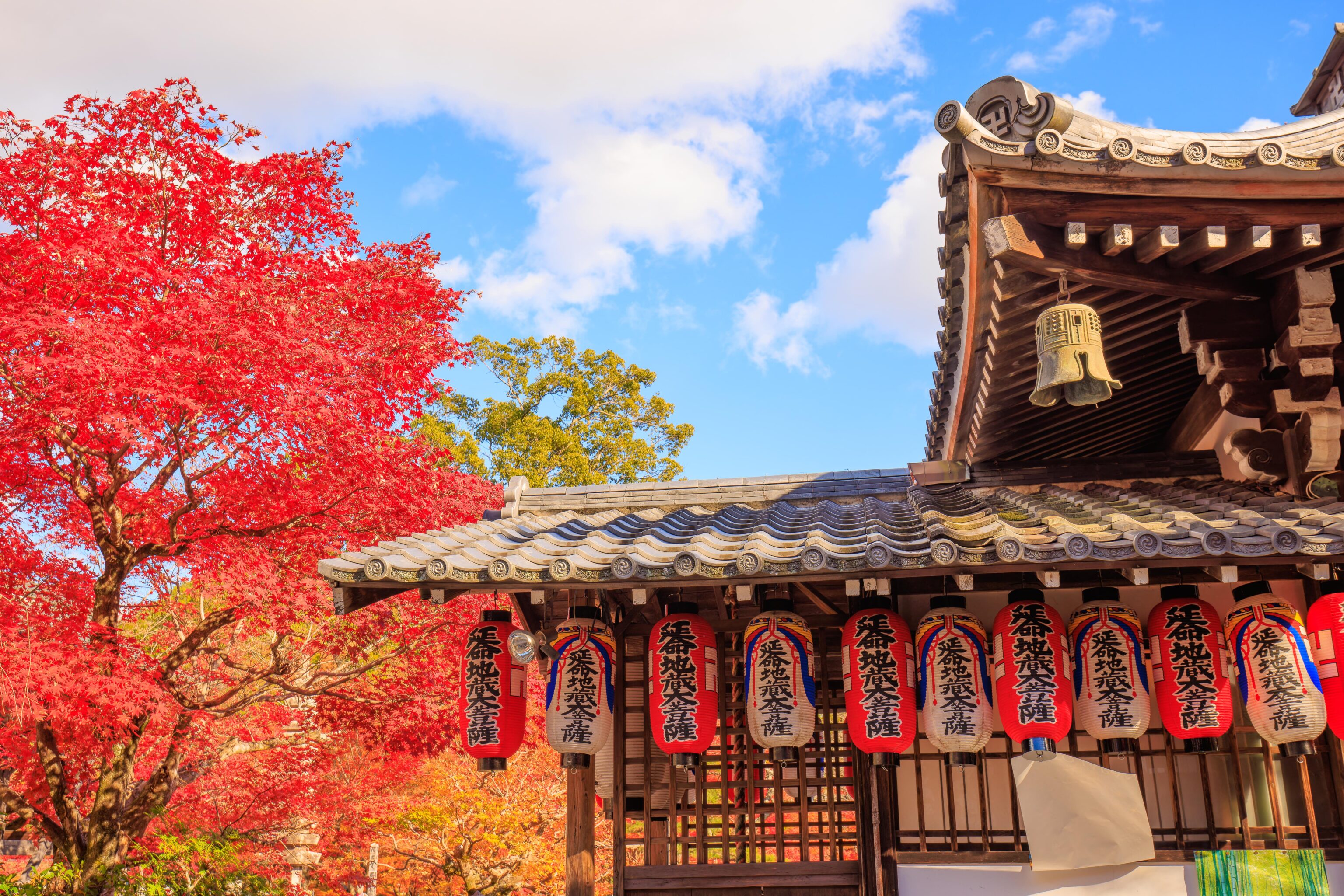
We walked to the north, passing by the temple buildings.
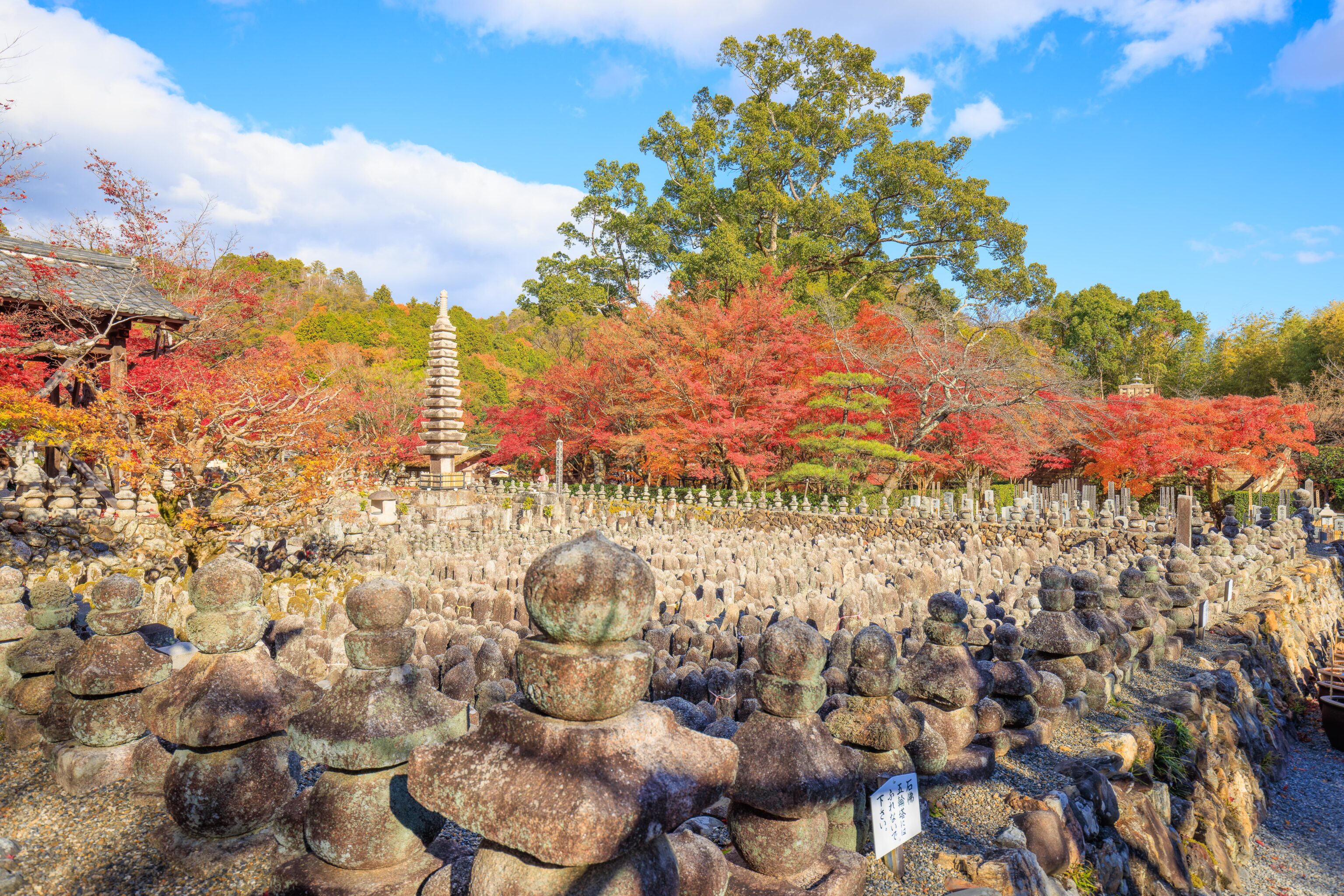
The statues again, this time from the northwest corner.
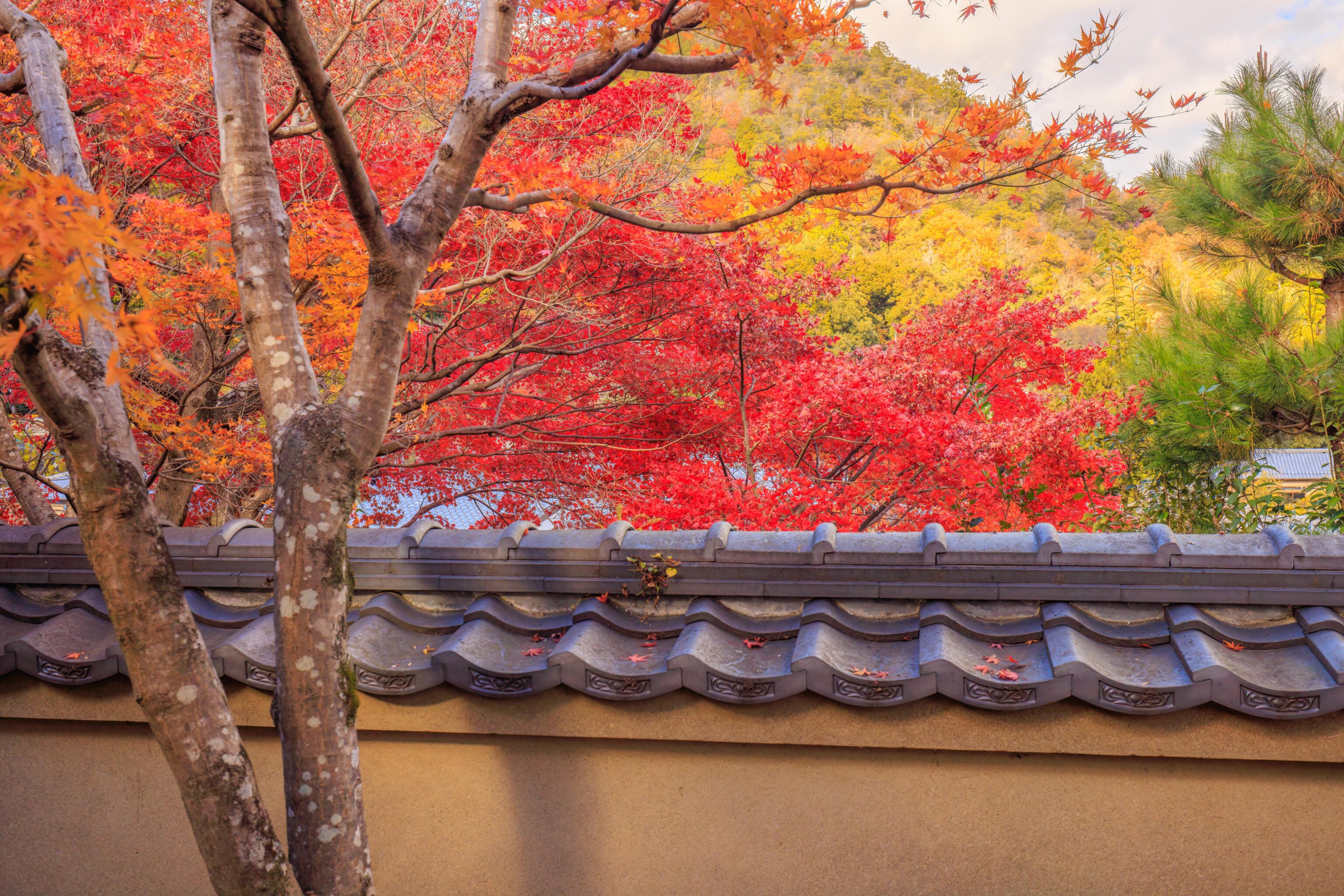
A scene by the temple’s northern wall.
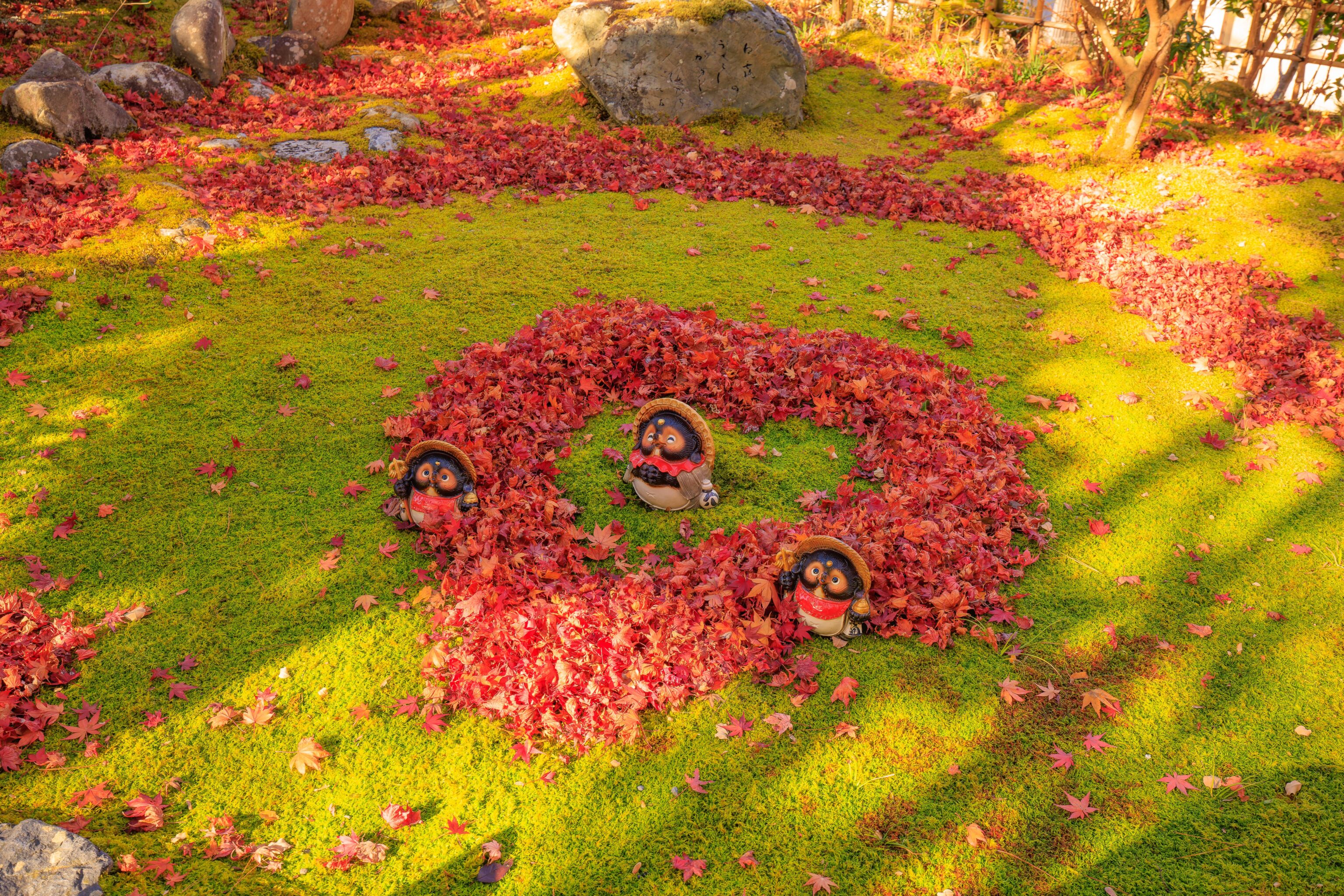
We passed by a heart, similar to what we saw earlier at Gio-ji! Tanuki statues are fairly common in Japan. There were three here and we saw others in the temple grounds as well.
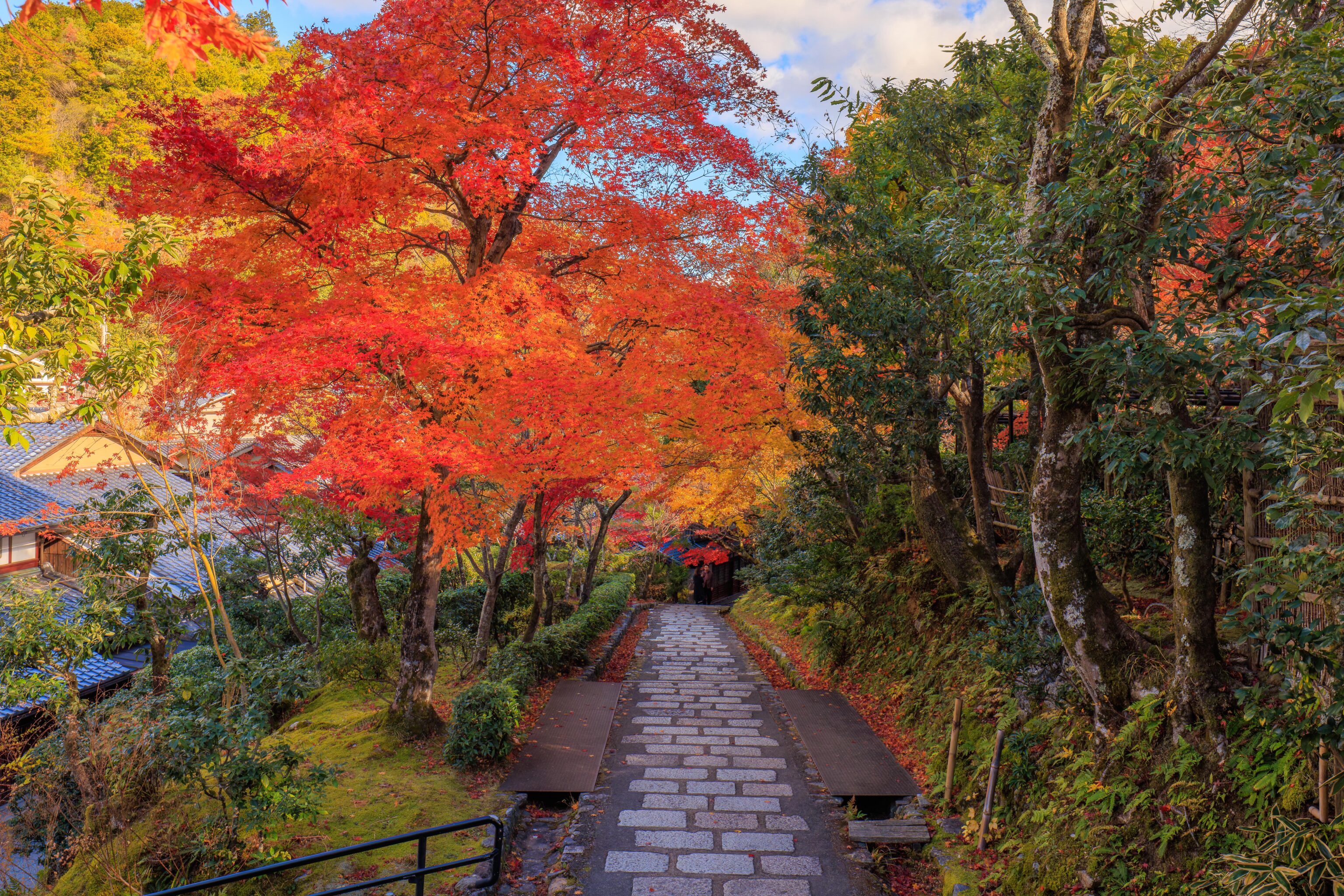
We headed back down to exit the temple.
Okochi Sanso Garden
After exiting, we backtracked to return to Arashiyama’s bamboo grove in order to visit the Okochi Sanso Garden.
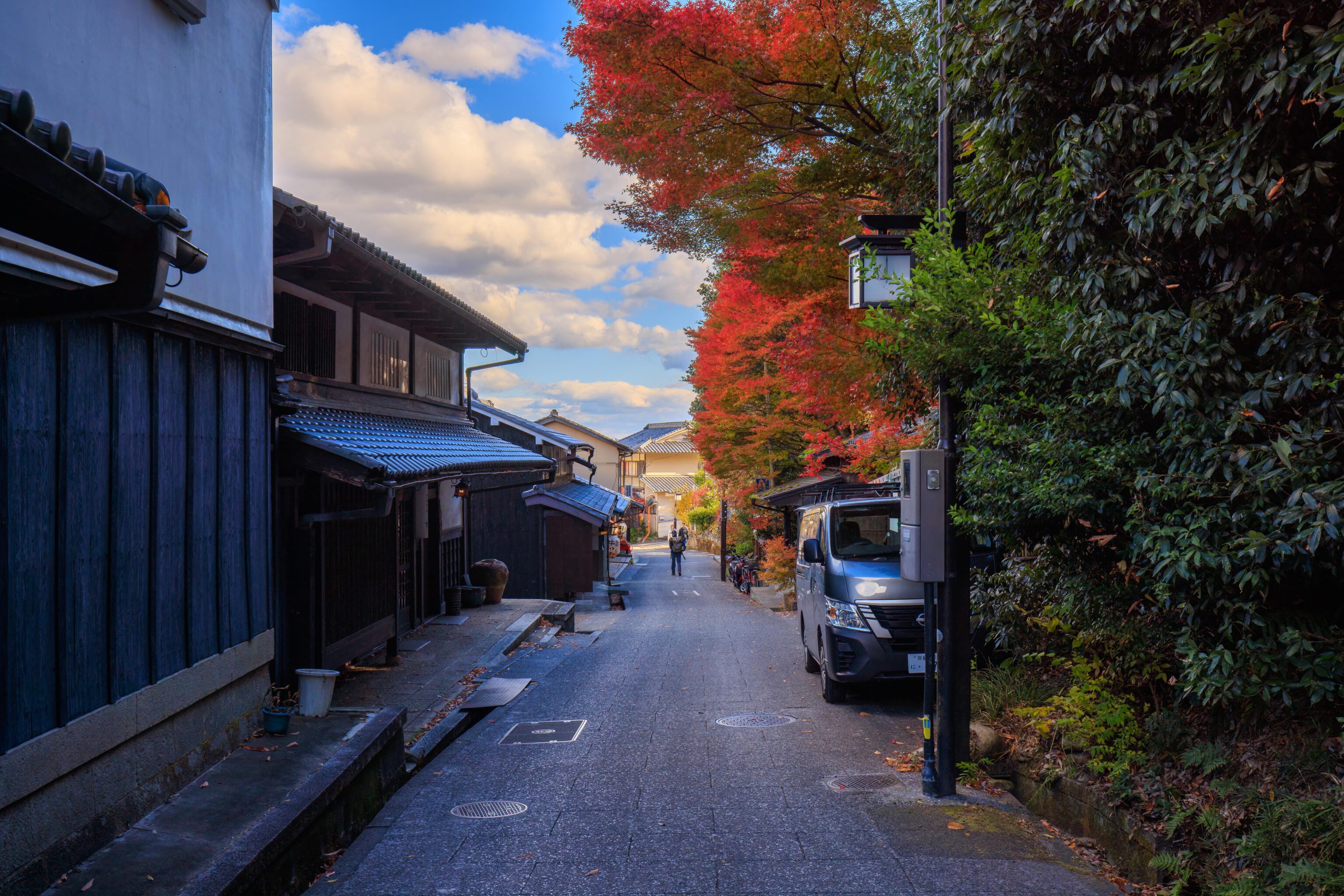
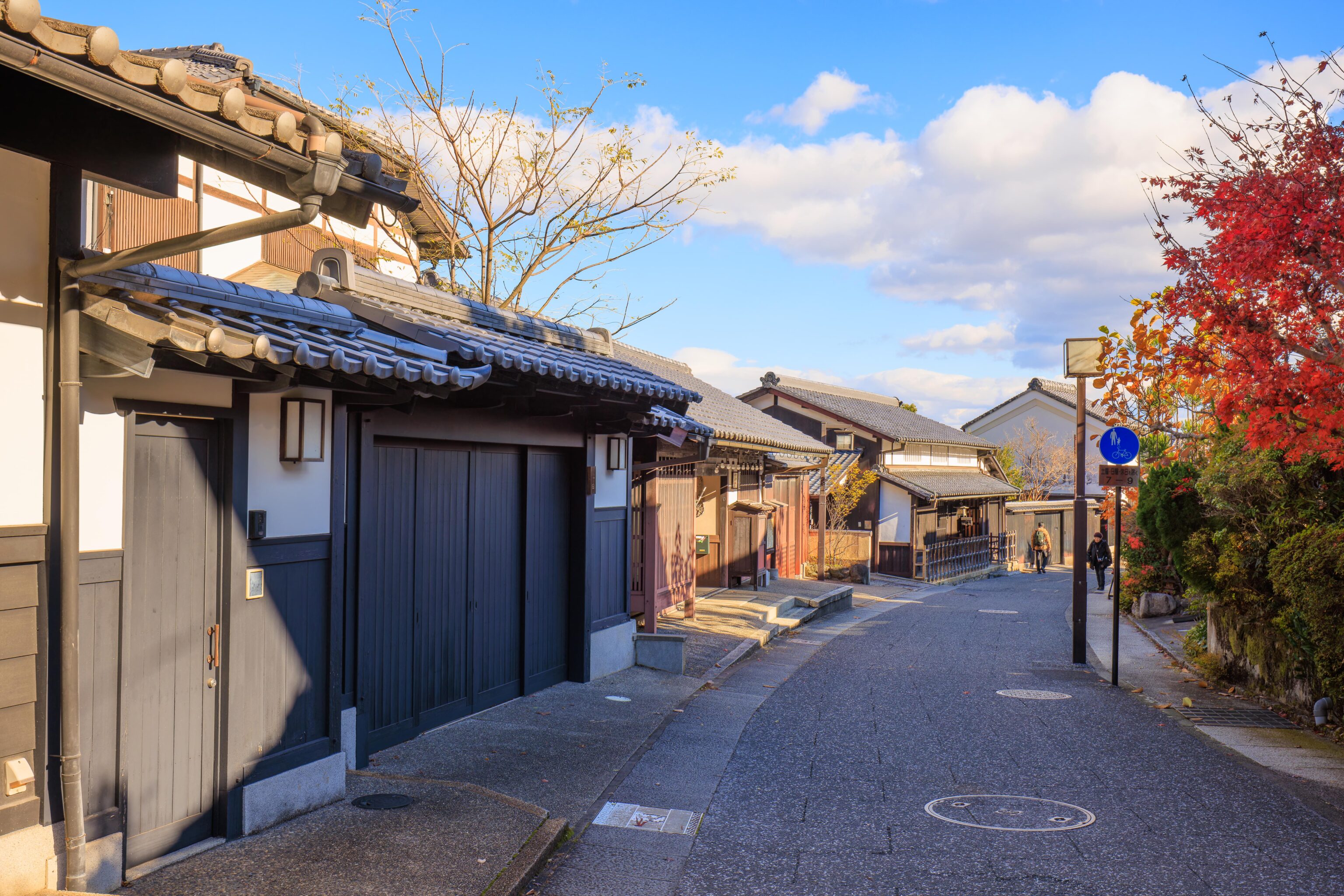
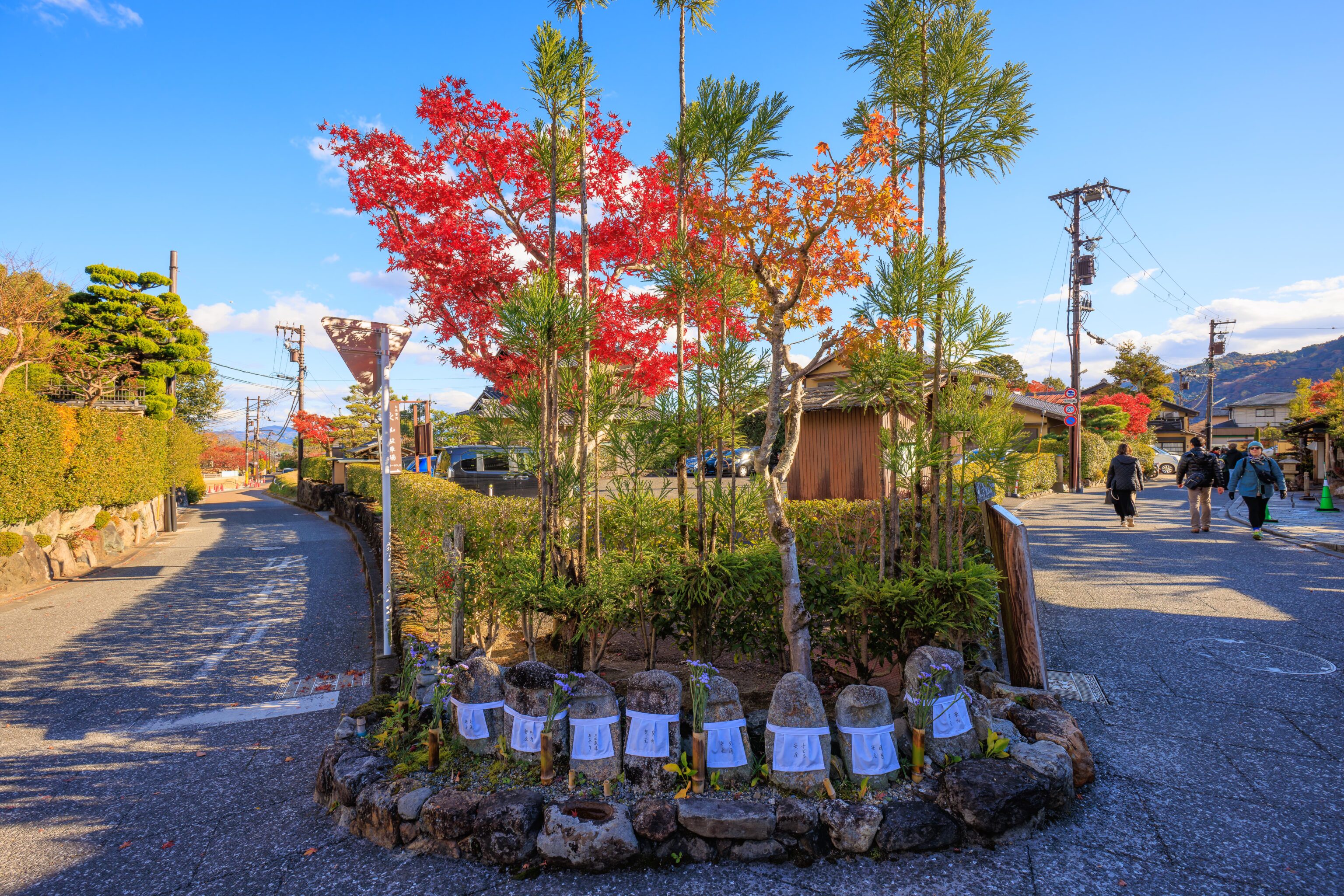
It was even less busy than before as we headed back to the south.
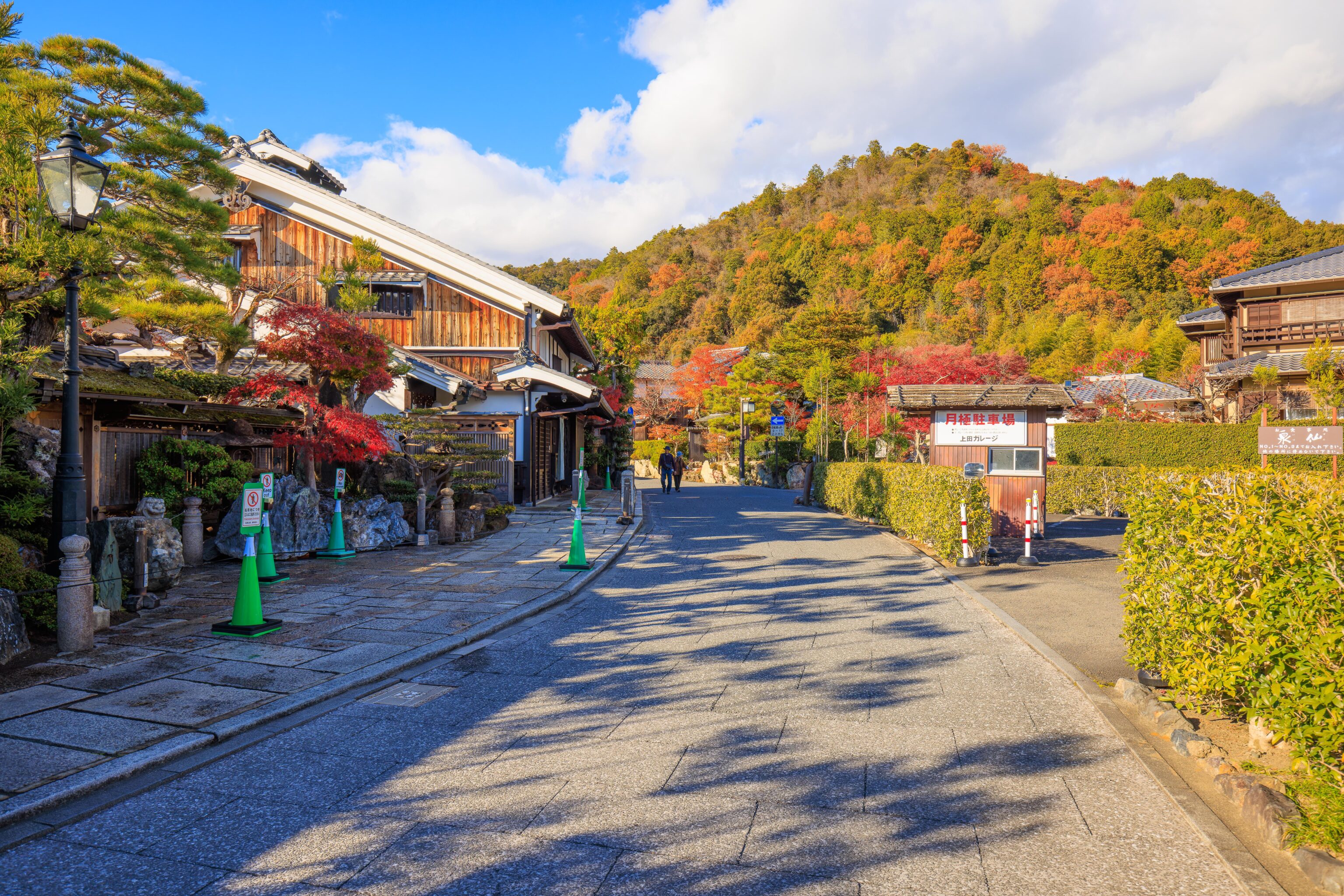
The place on the left with the green cones and many signs saying to keep out and no photography seems to be some sort of private establishment. It seems to draw more attention to itself by having signs!
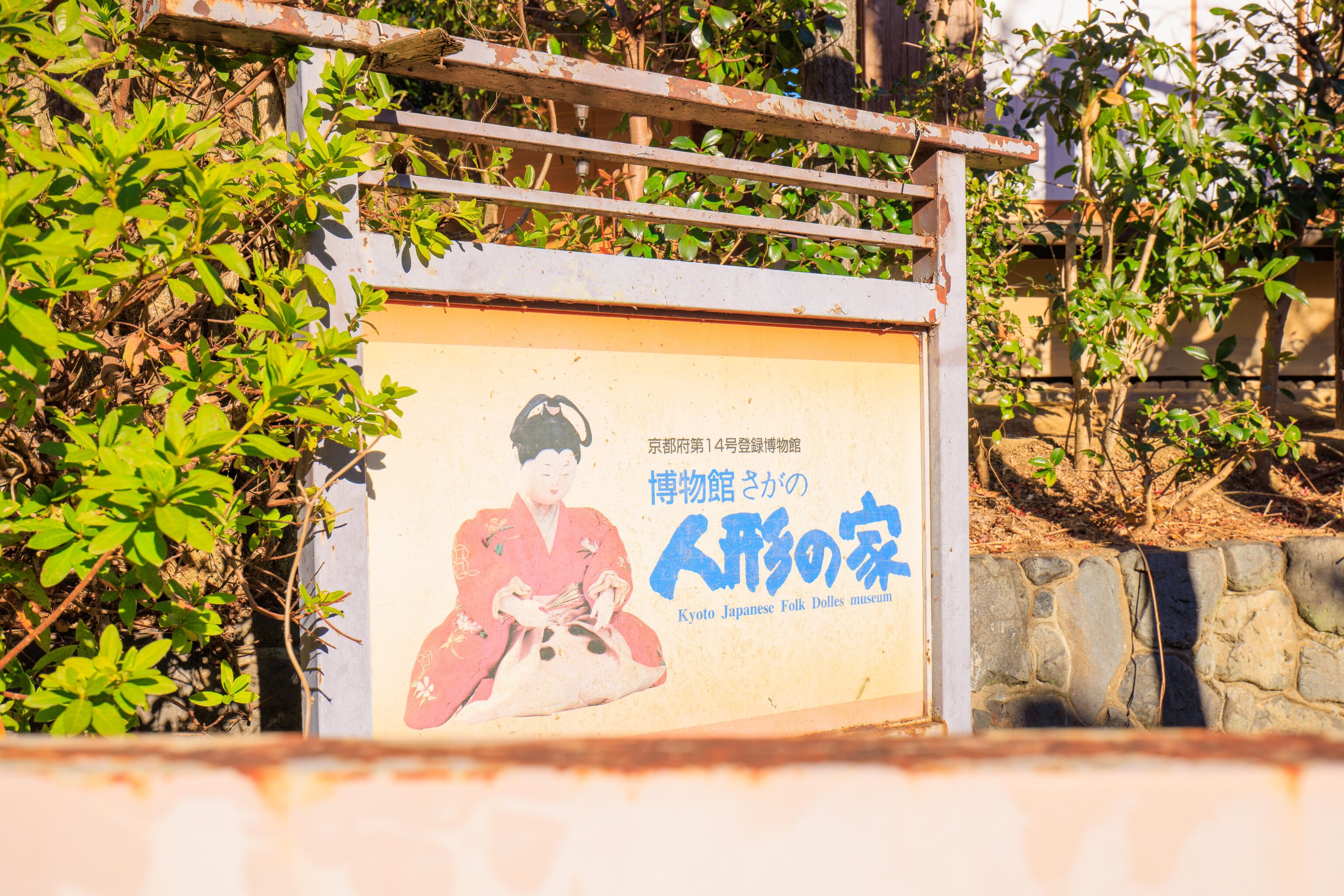
We missed this sign earlier. Dolles is better than Dools!
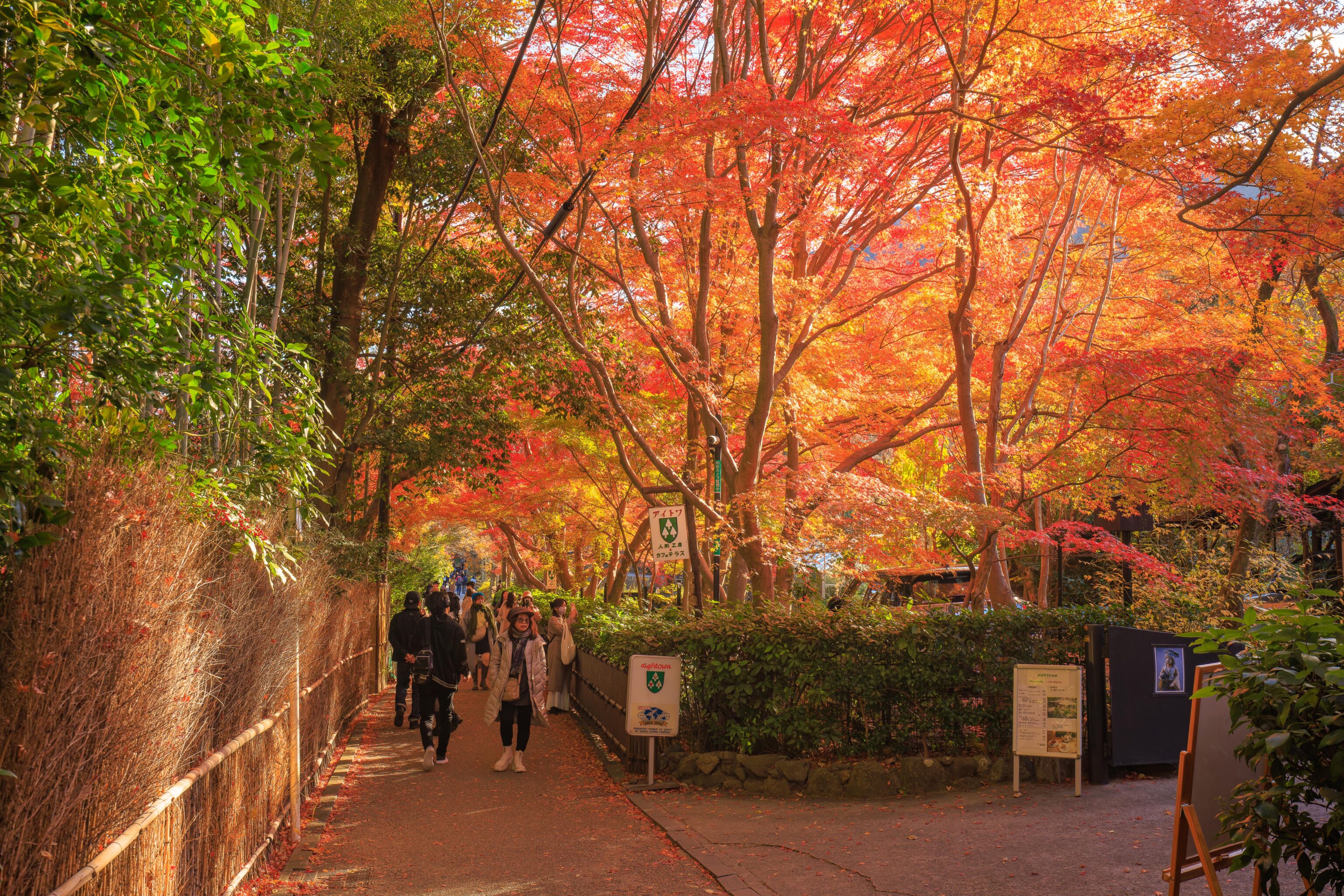
We passed by and photographed this scene earlier in the day. One of the signs reads, “Persistent pursuit of dainty by World Coffee Company.” No idea what that is supposed to mean! The business here seems to be a cat cafe with a doll studio?
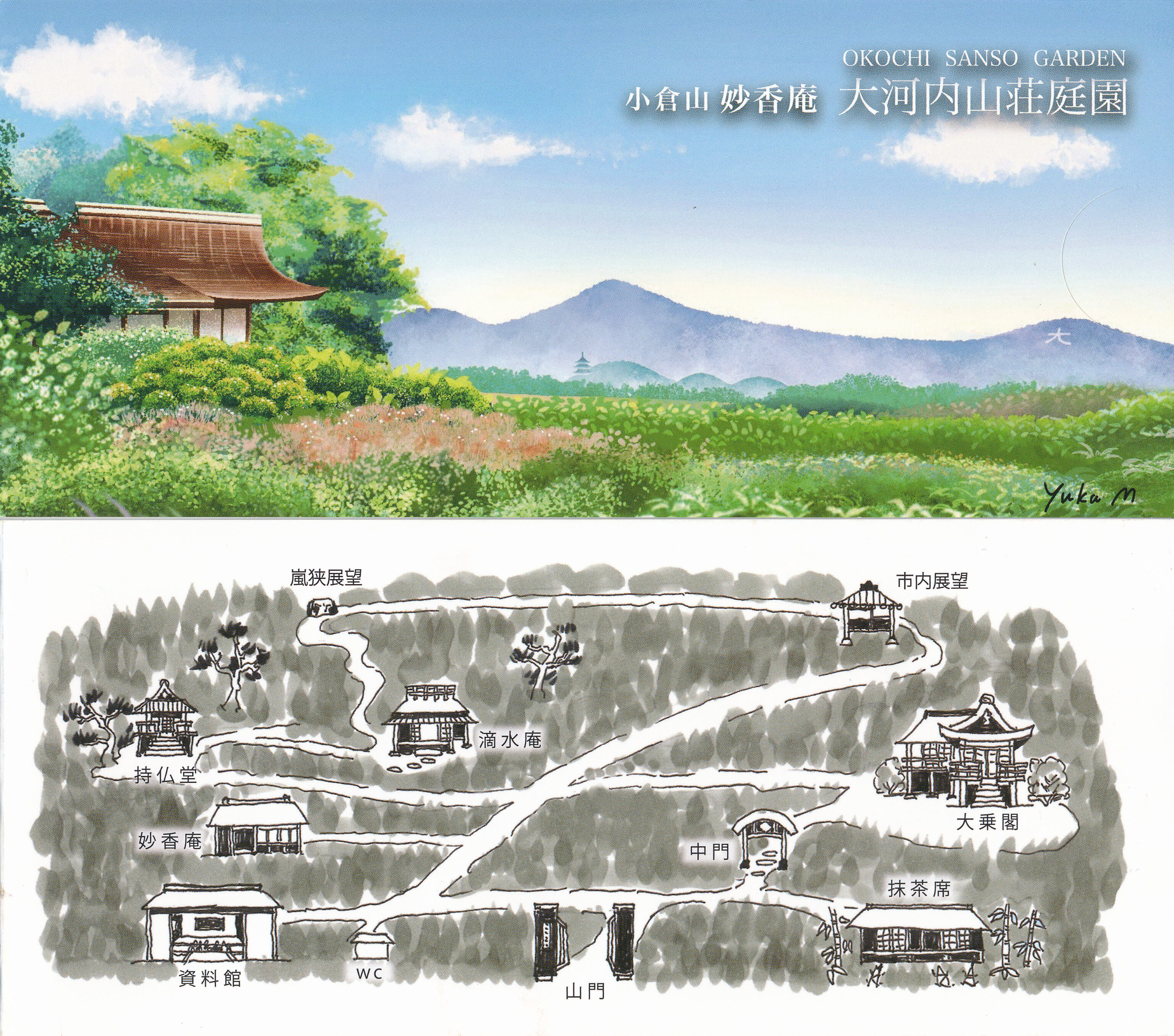
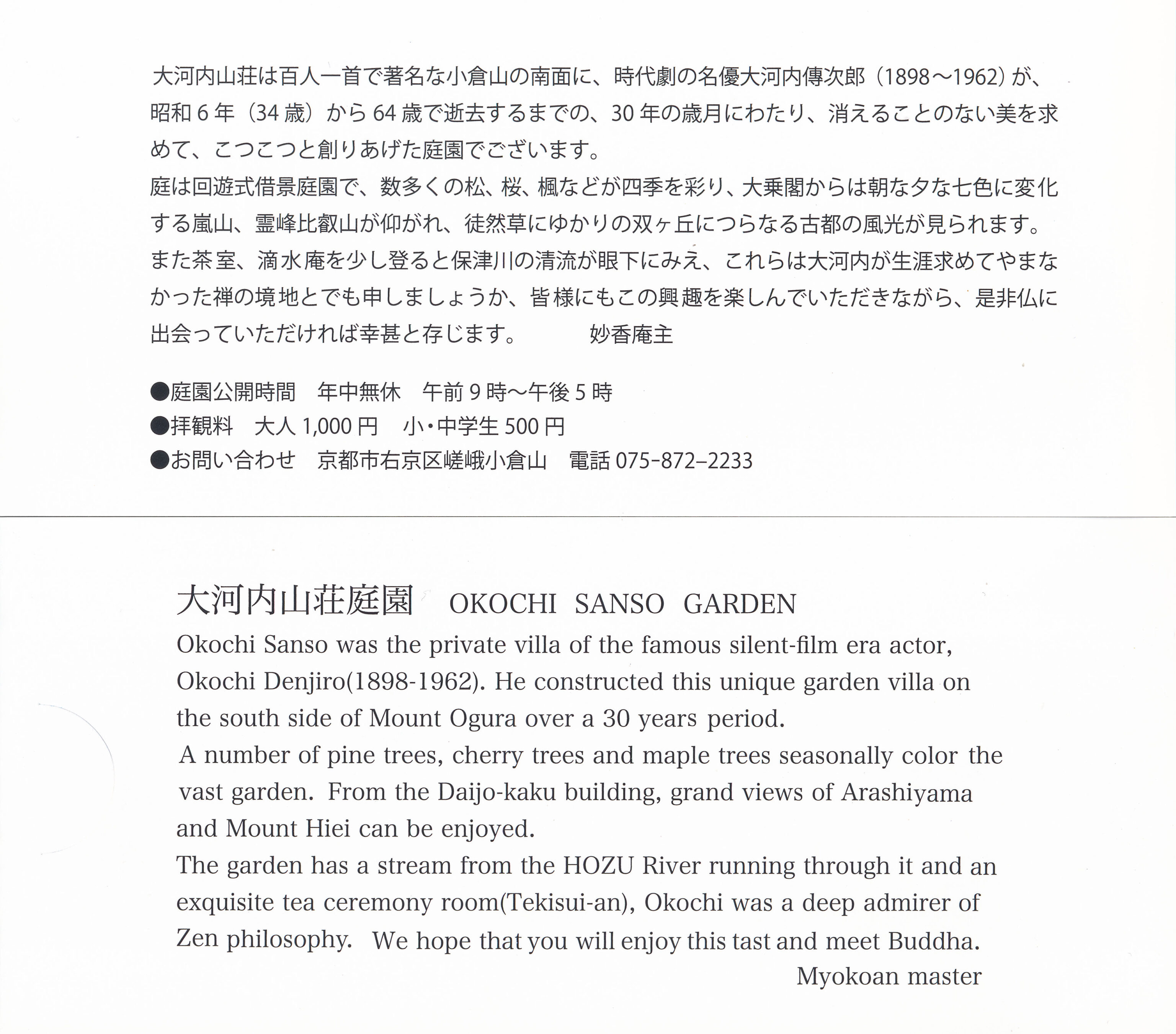
The Okochi Sanso Garden didn’t provide a pamphlet but the ticket did have a bit of information as well as a map.
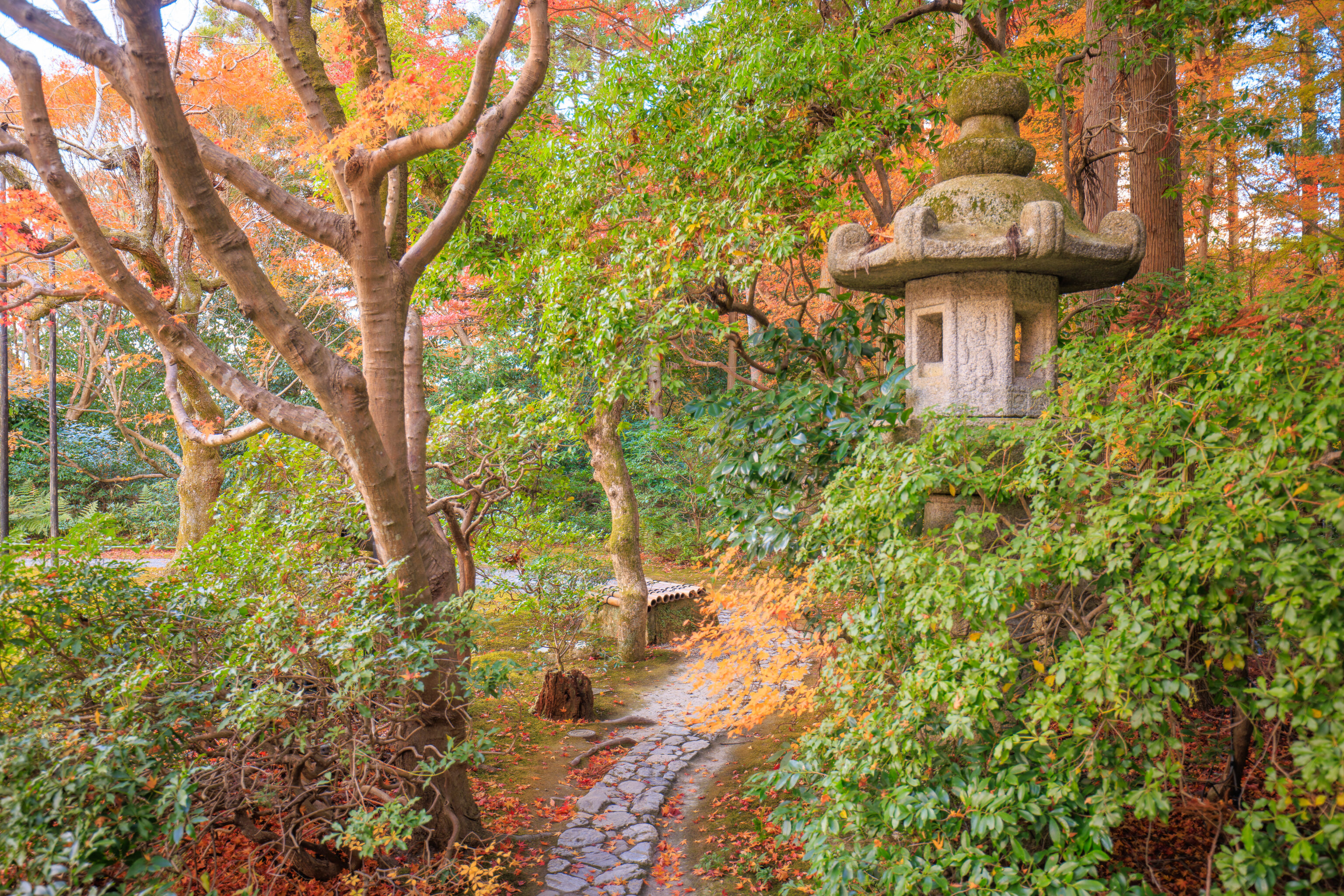
It was around 2:40pm when we arrived. Although sunset wasn’t for another two hours or so, it was already a bit dark. Arashiyama is at Kyoto’s western mountains, thus, we were in the shadow cast by the mountains in the late afternoon sun.
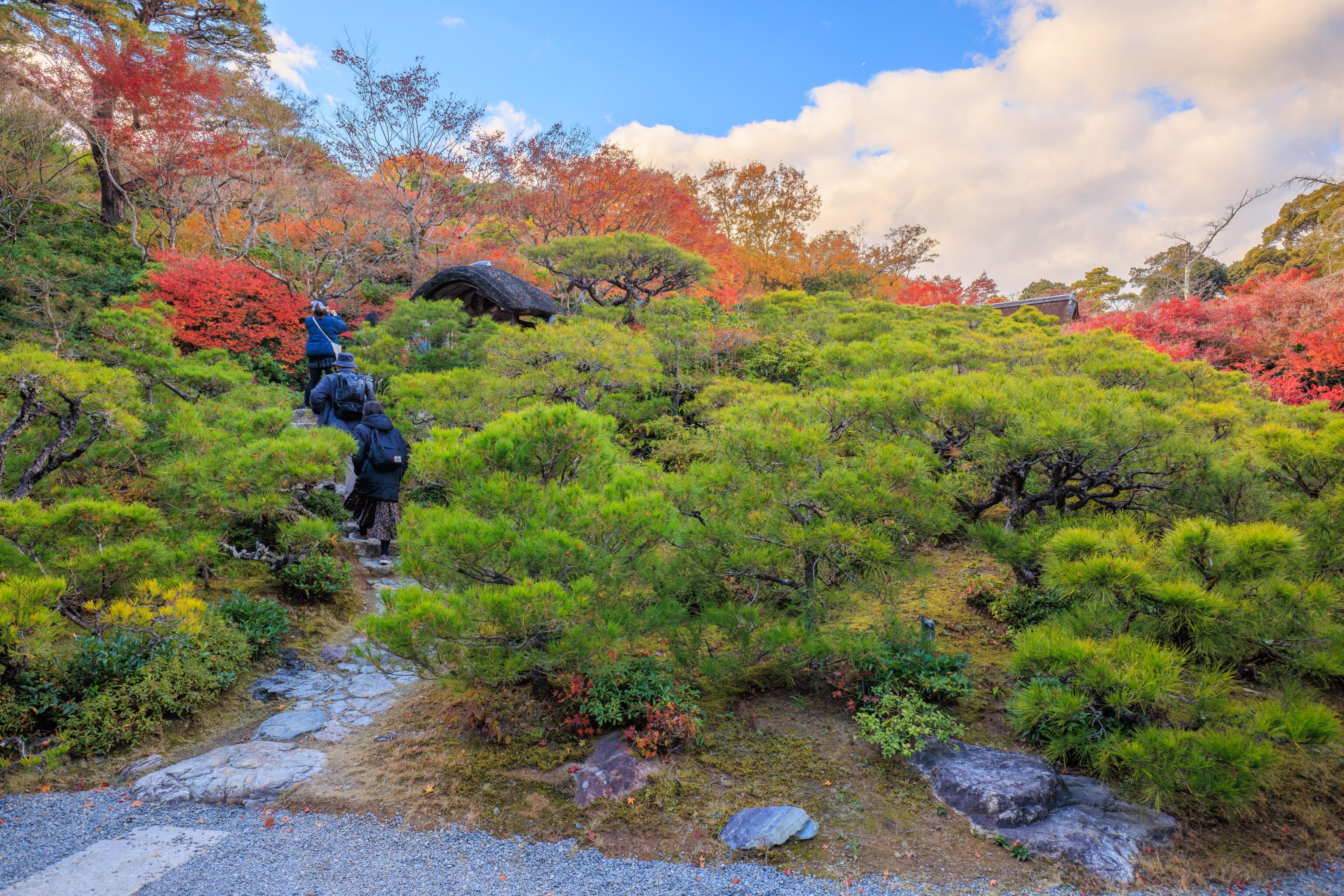
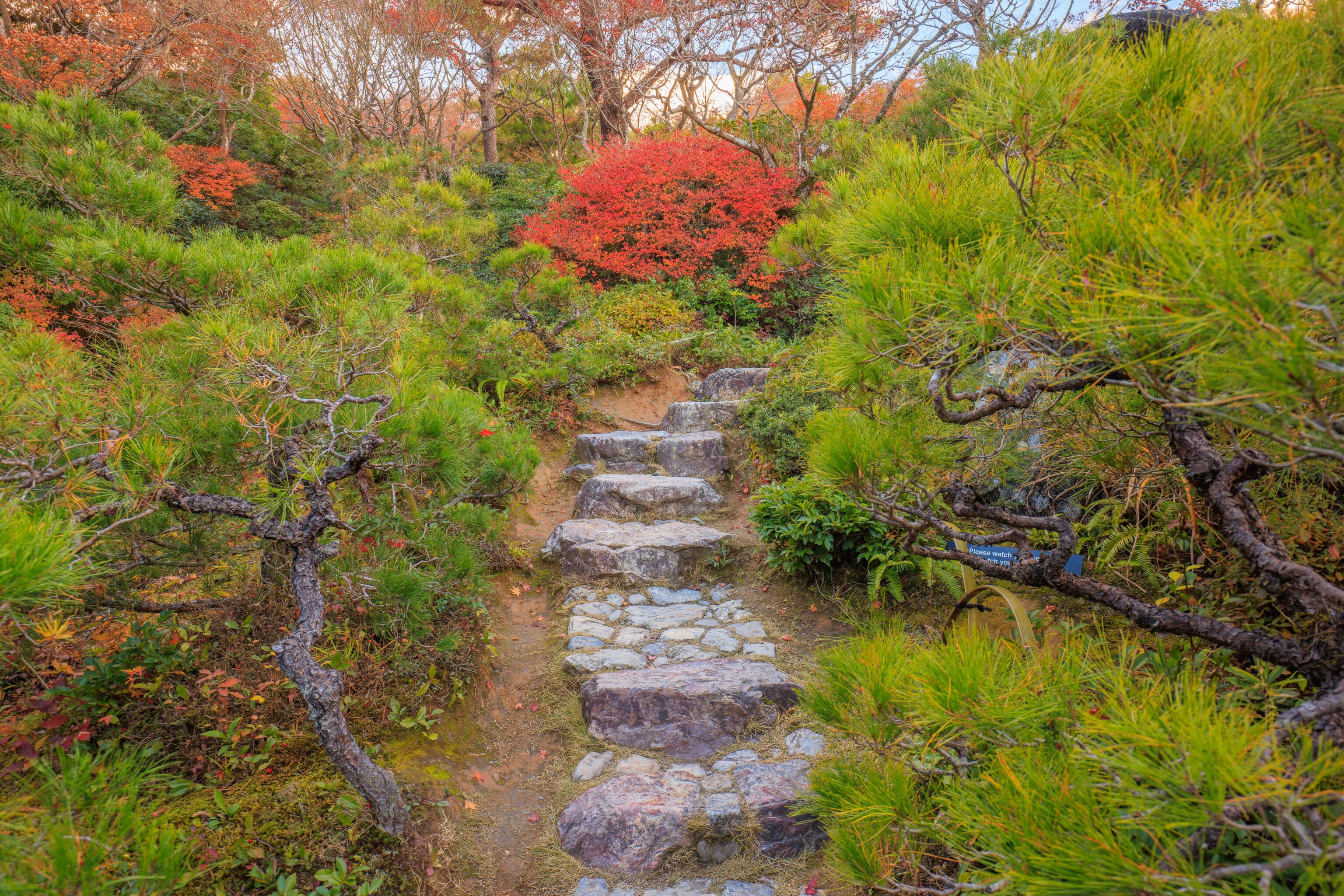
This scene, and path up the hill, would have been nicer earlier in the day. We had considered visiting when we passed by in the morning but decided to come back later if we had time.
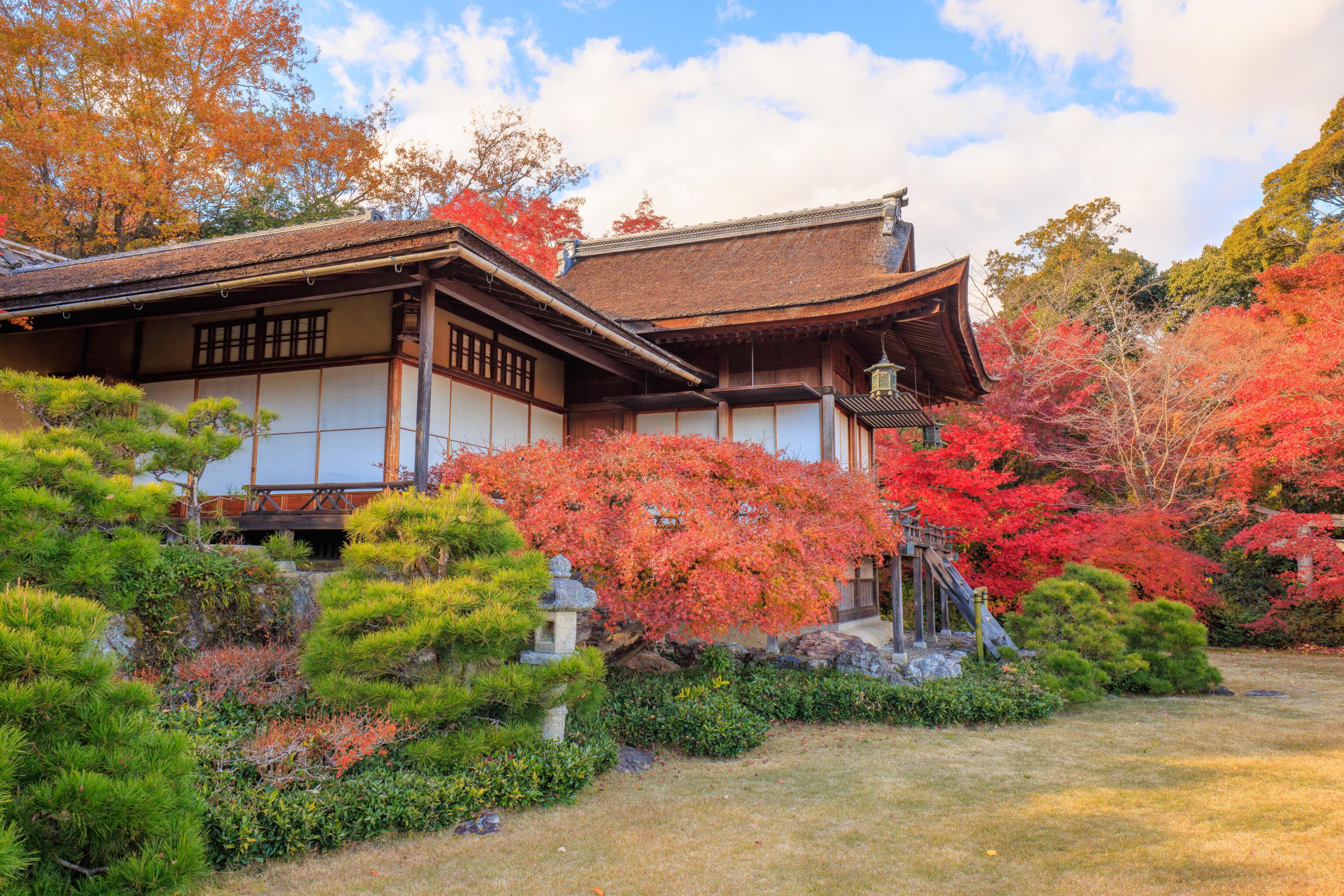
There were some tables for sitting outside of this villa building. We enjoyed a bit of sunlight before moving on.
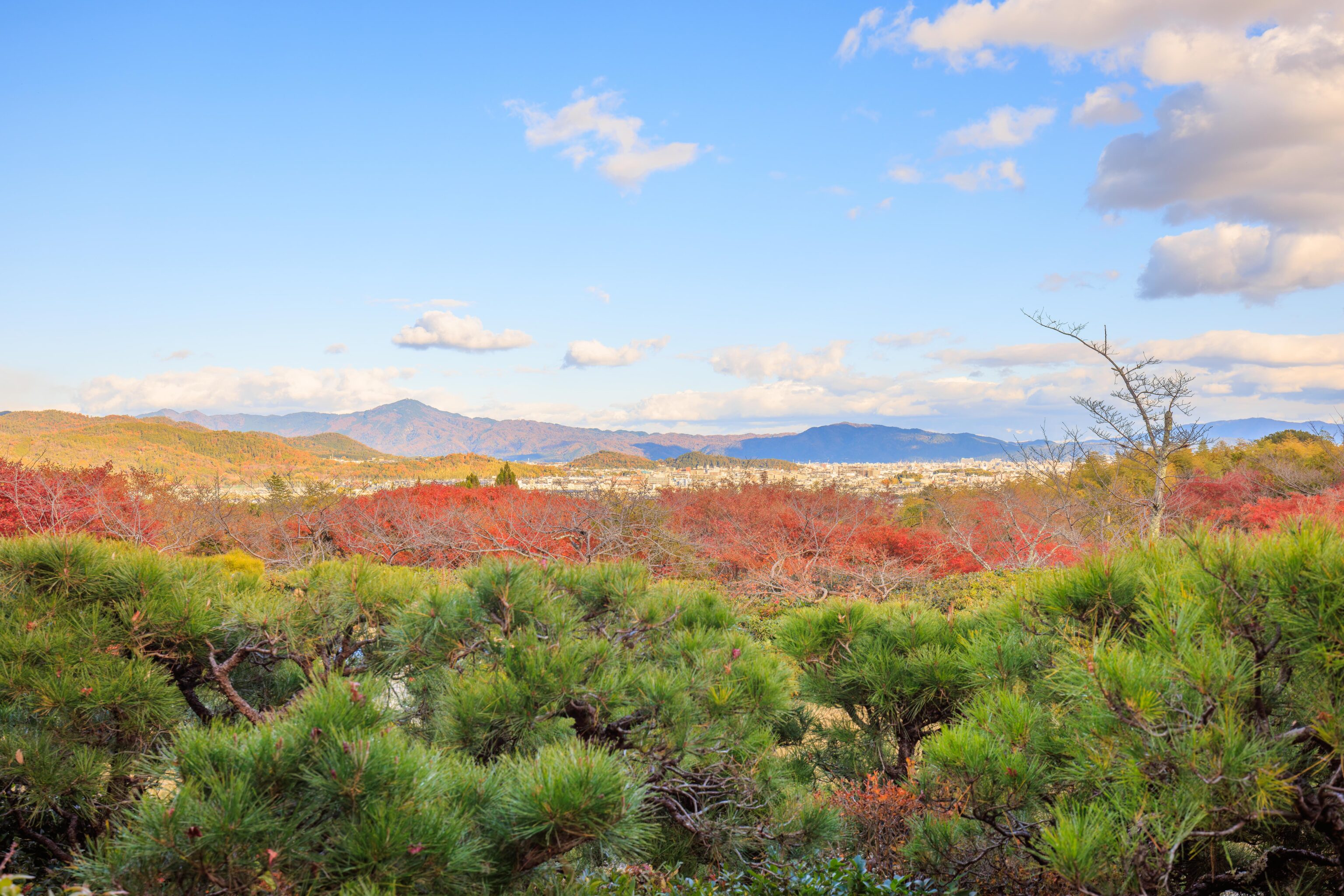
We were in the shadow of the mountains but the rest of northwestern Kyoto was bathed in sunlight.
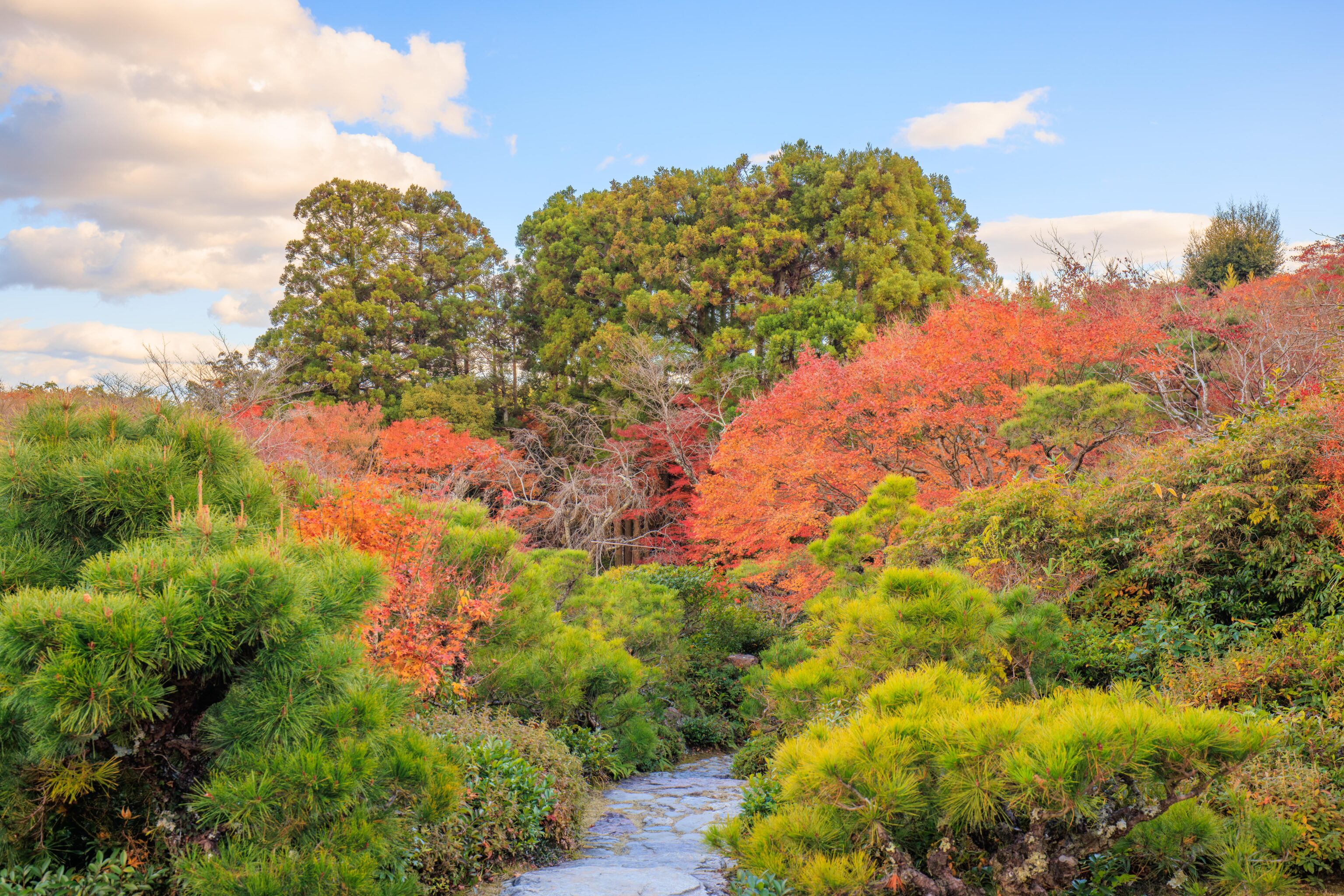
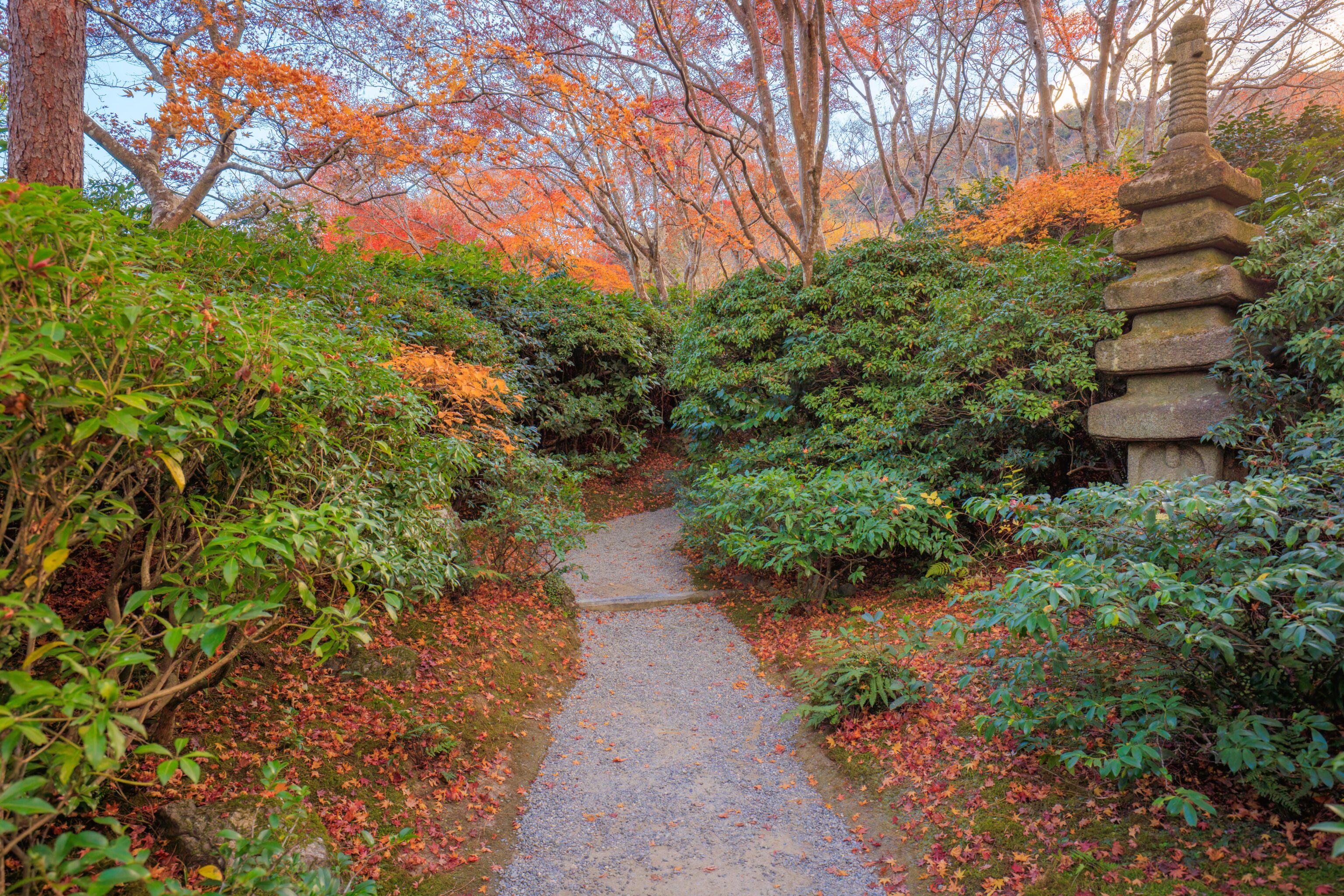
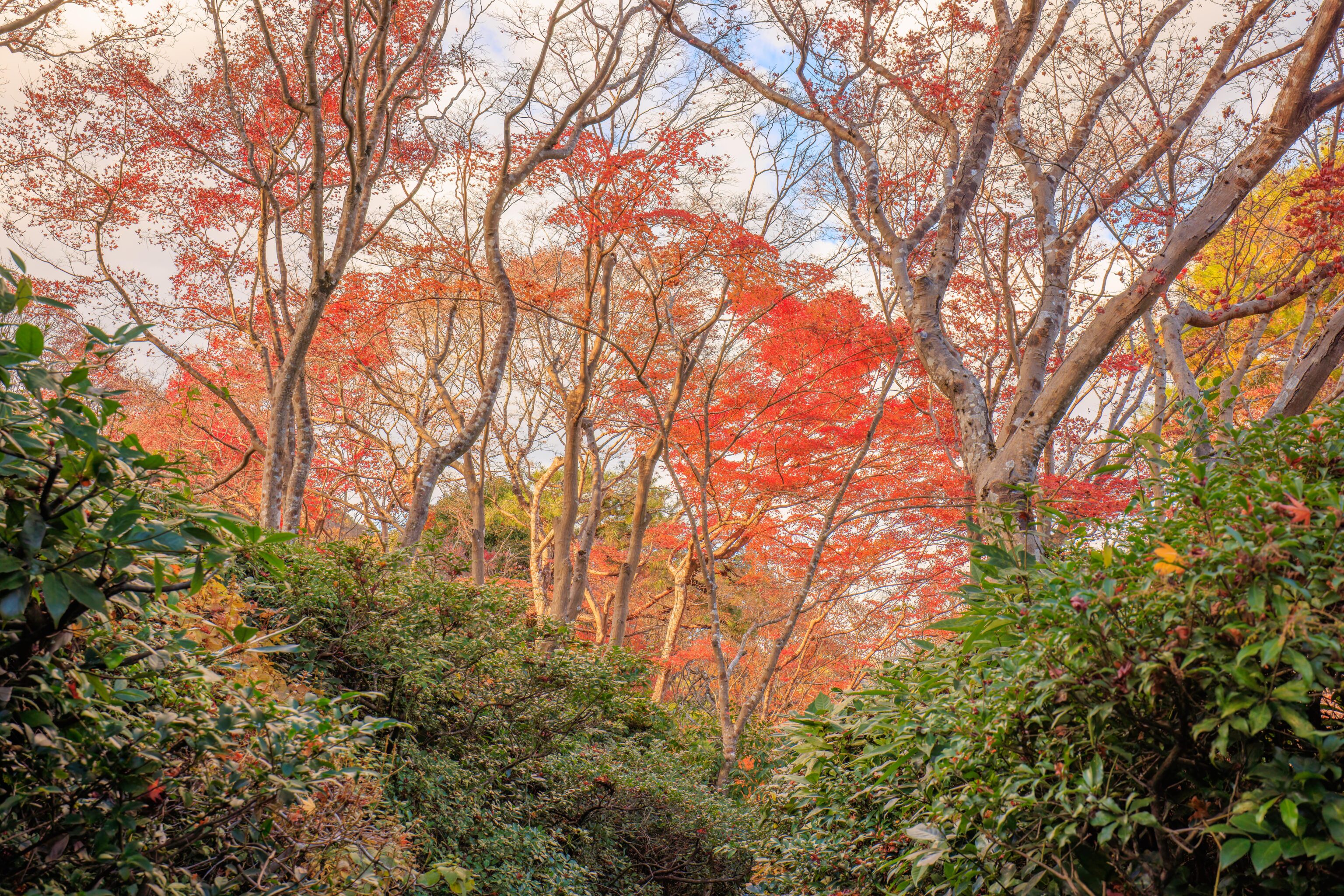
We continued on as the path advanced up the hillside.
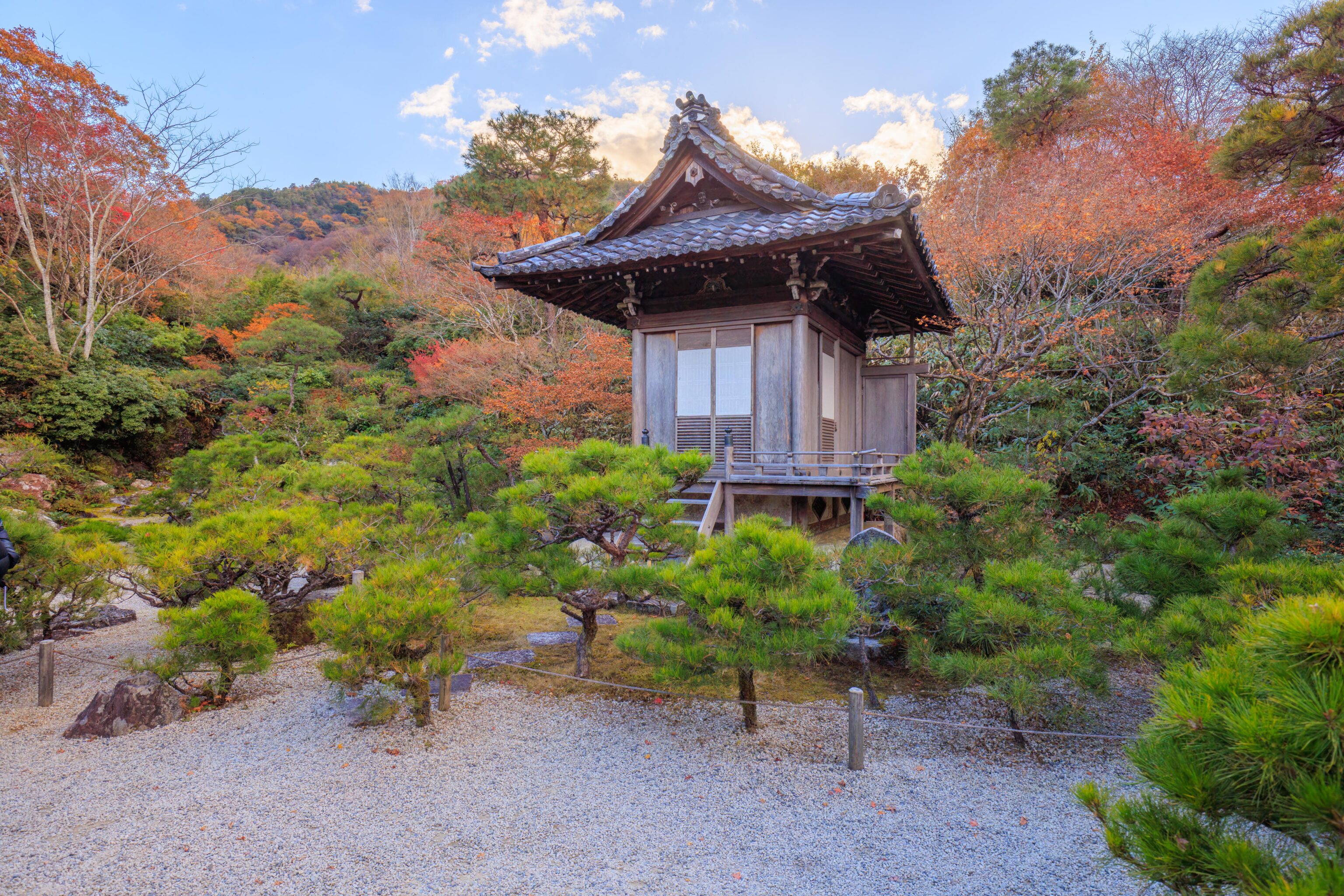
We reached the Jibutsu-do, a tiny shrine.
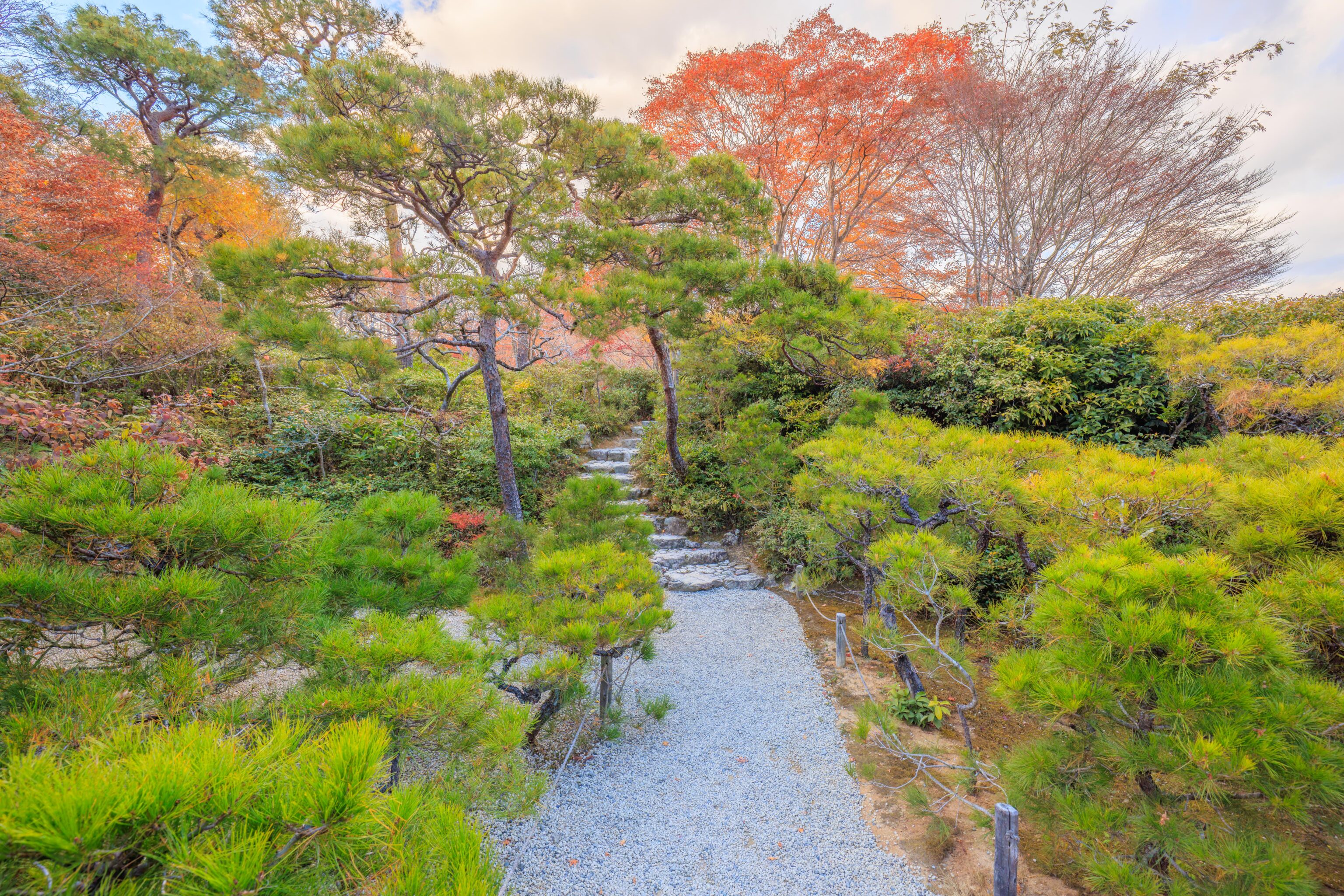
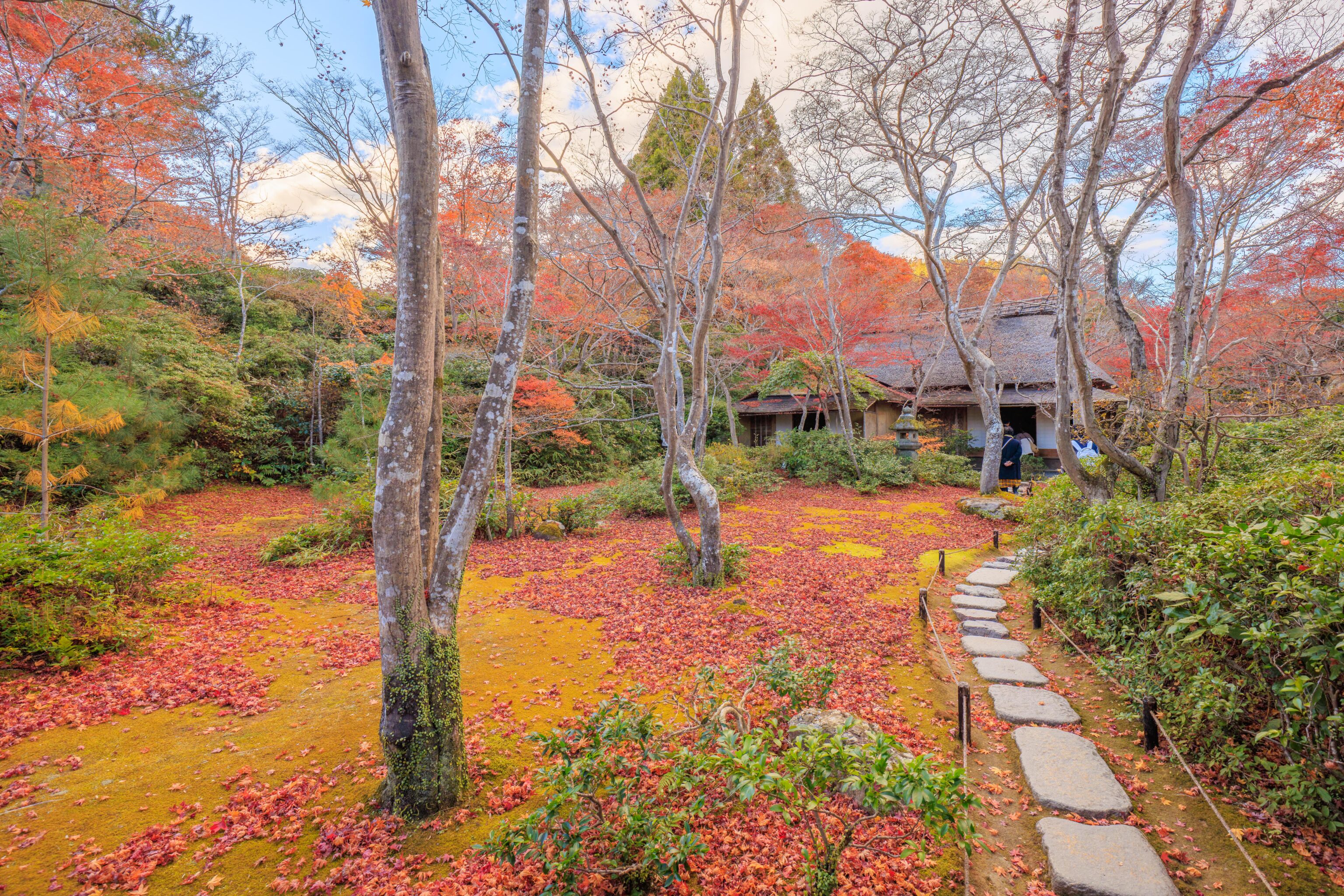
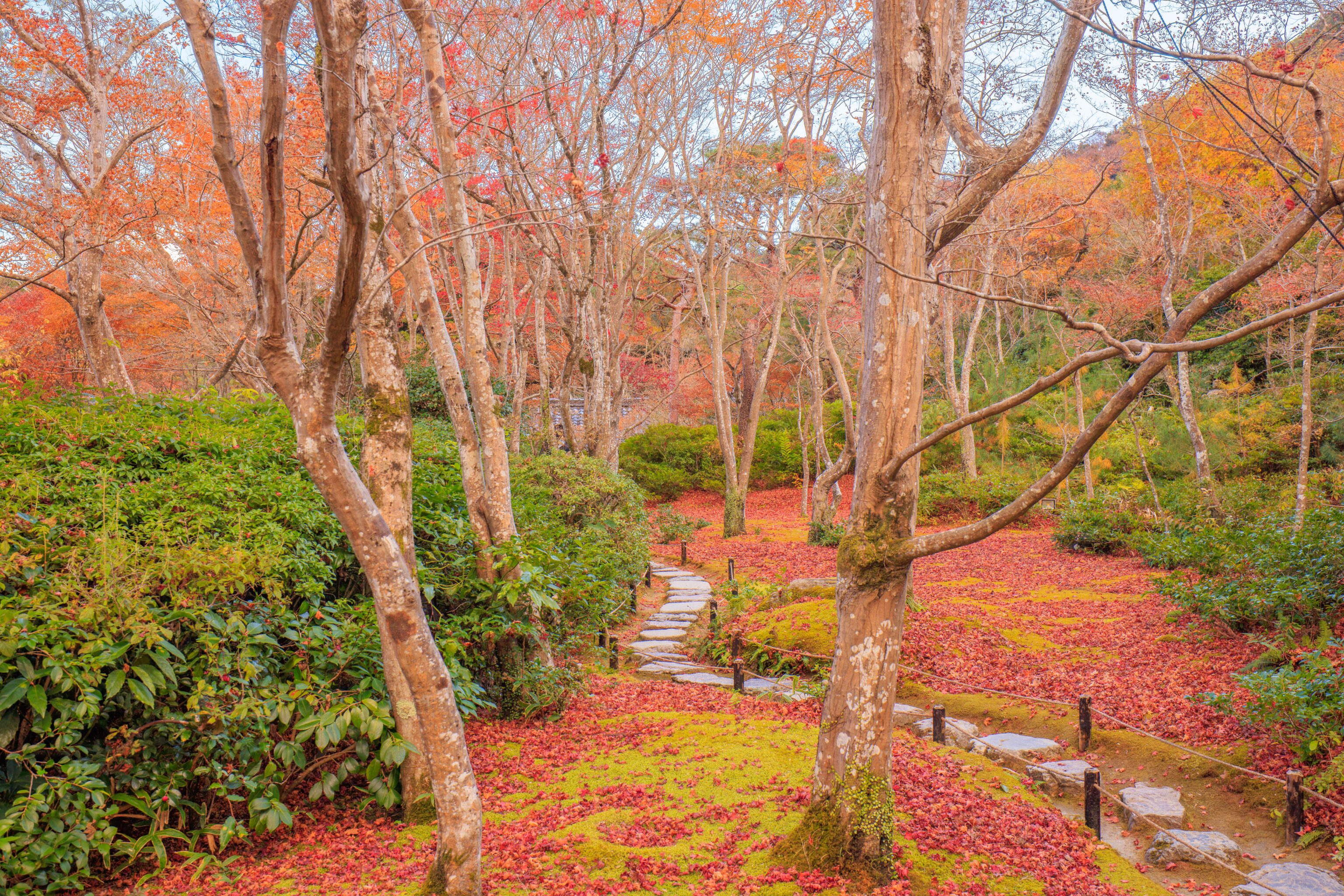
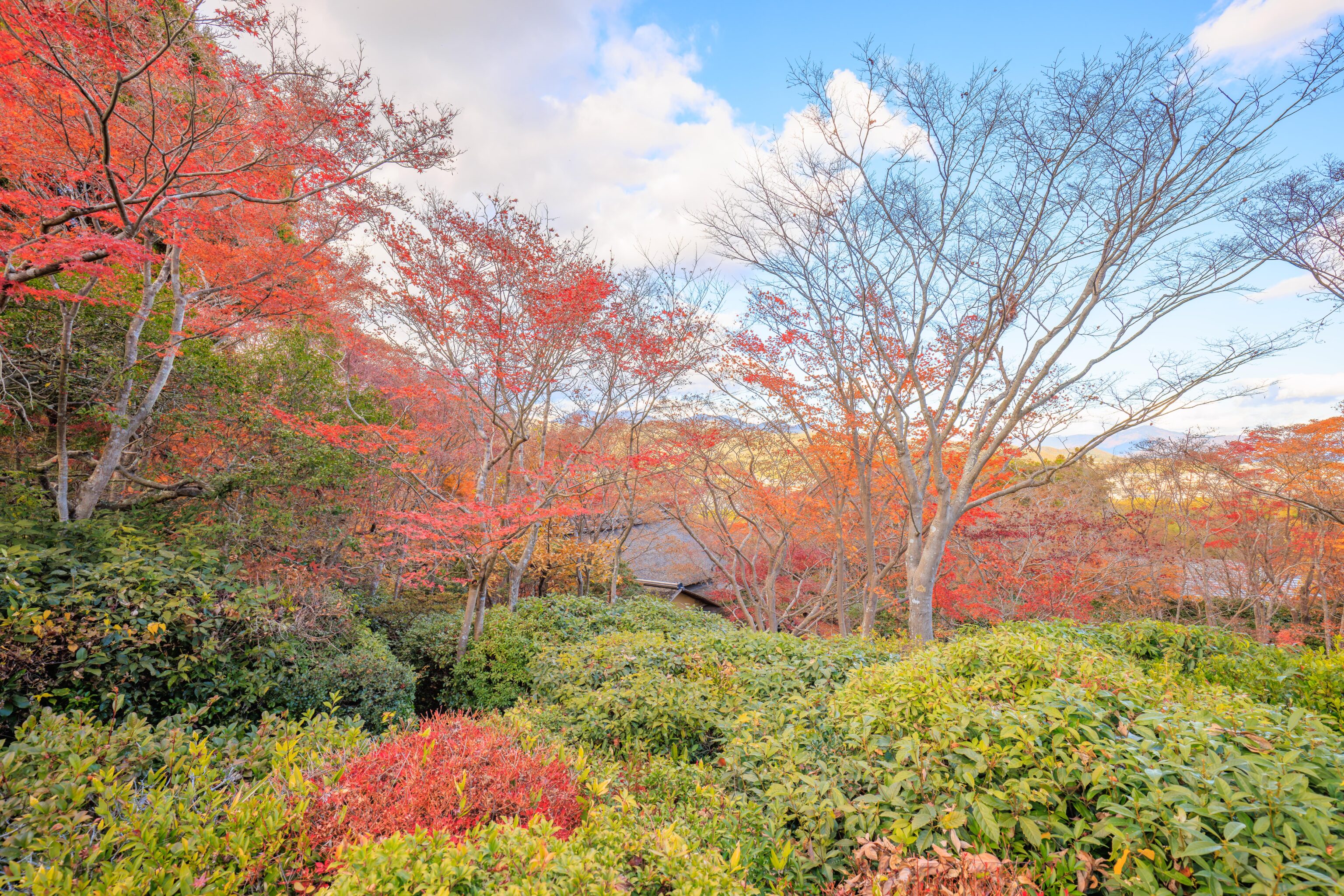
We continued on past the shrine, eventually reaching the highest point on the route.
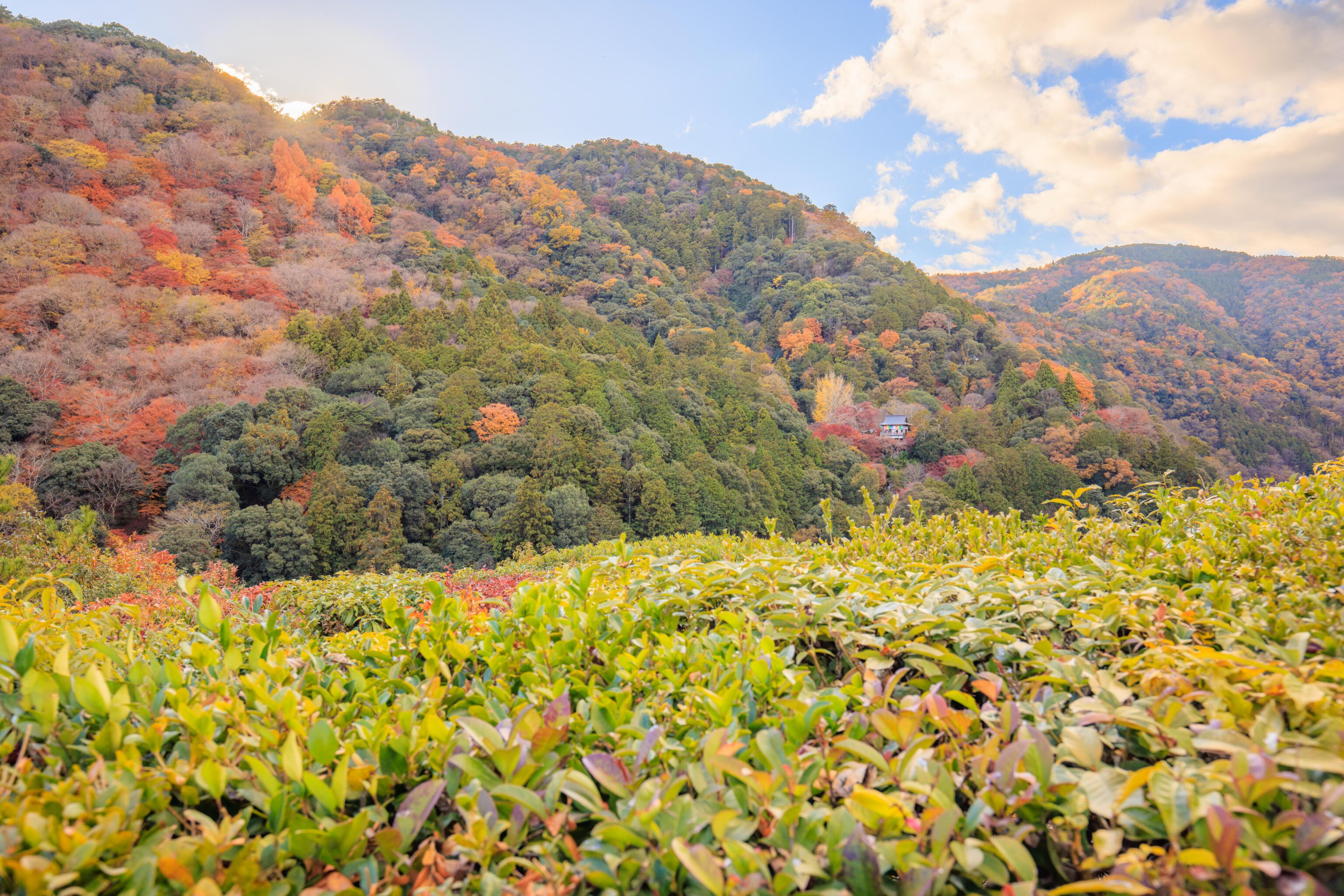
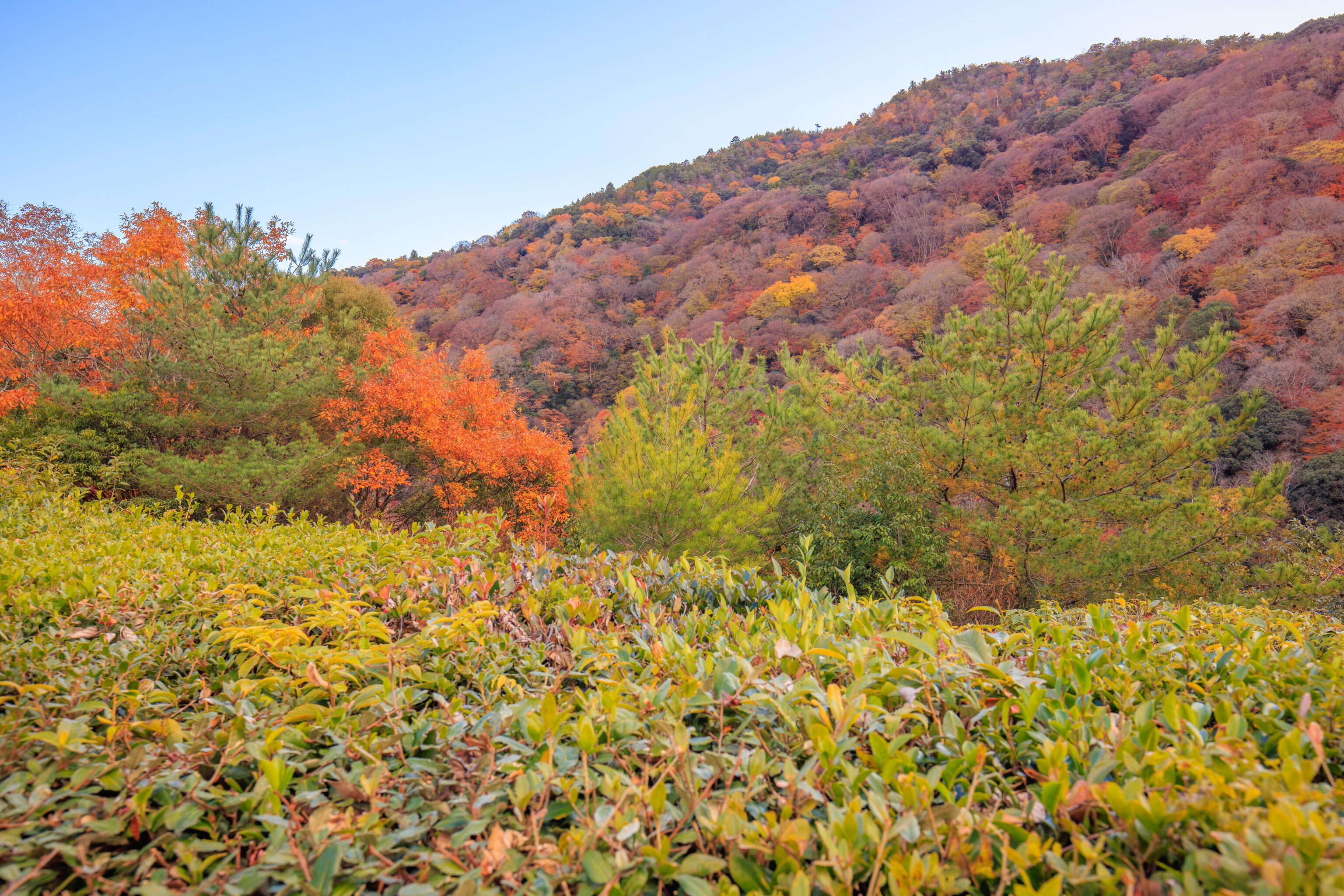
From here, we could see more mountains to the west. The valley below contains the Katsura River and is upstream of the Togetsukyo, the bridge that we visited at the start of the day.
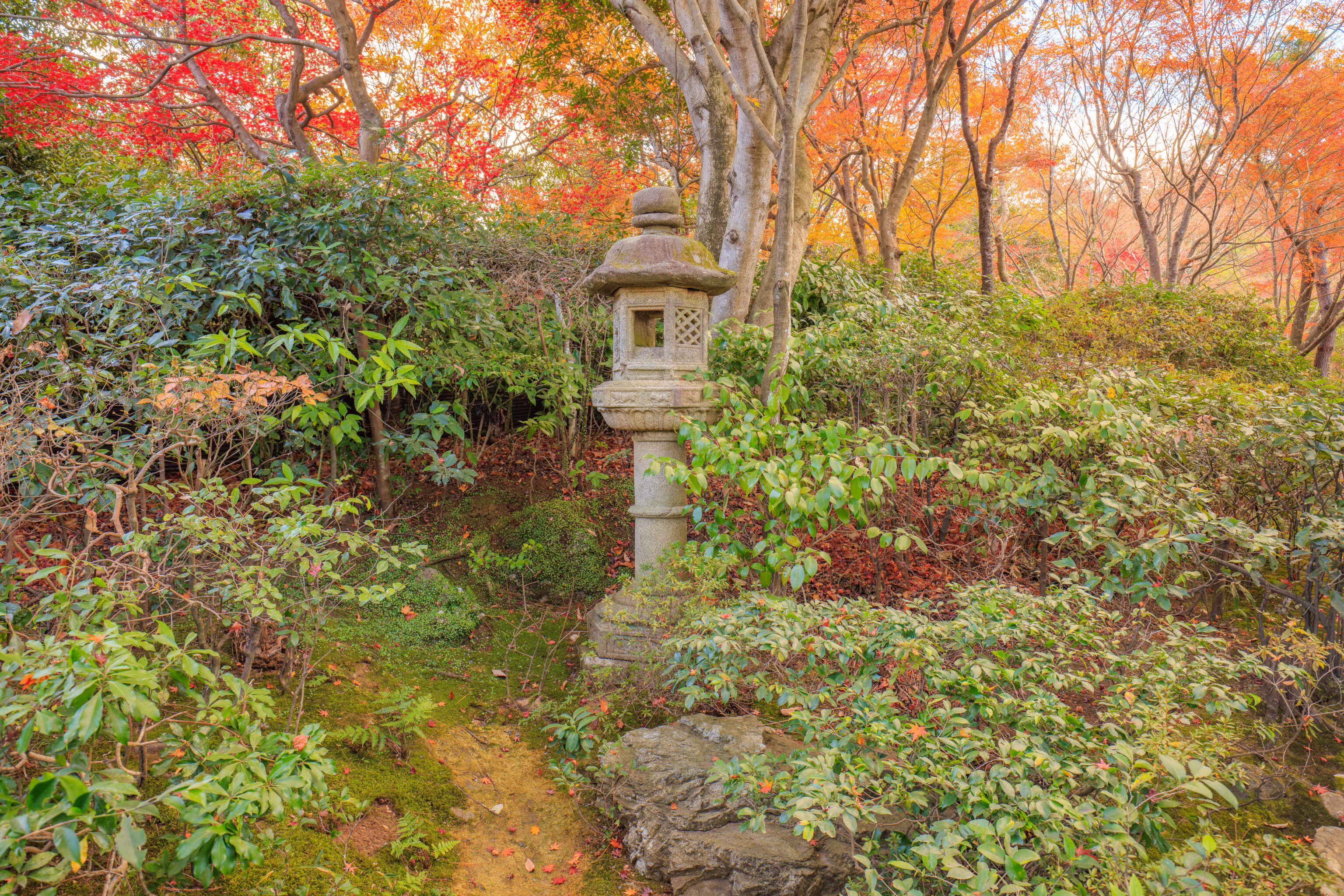
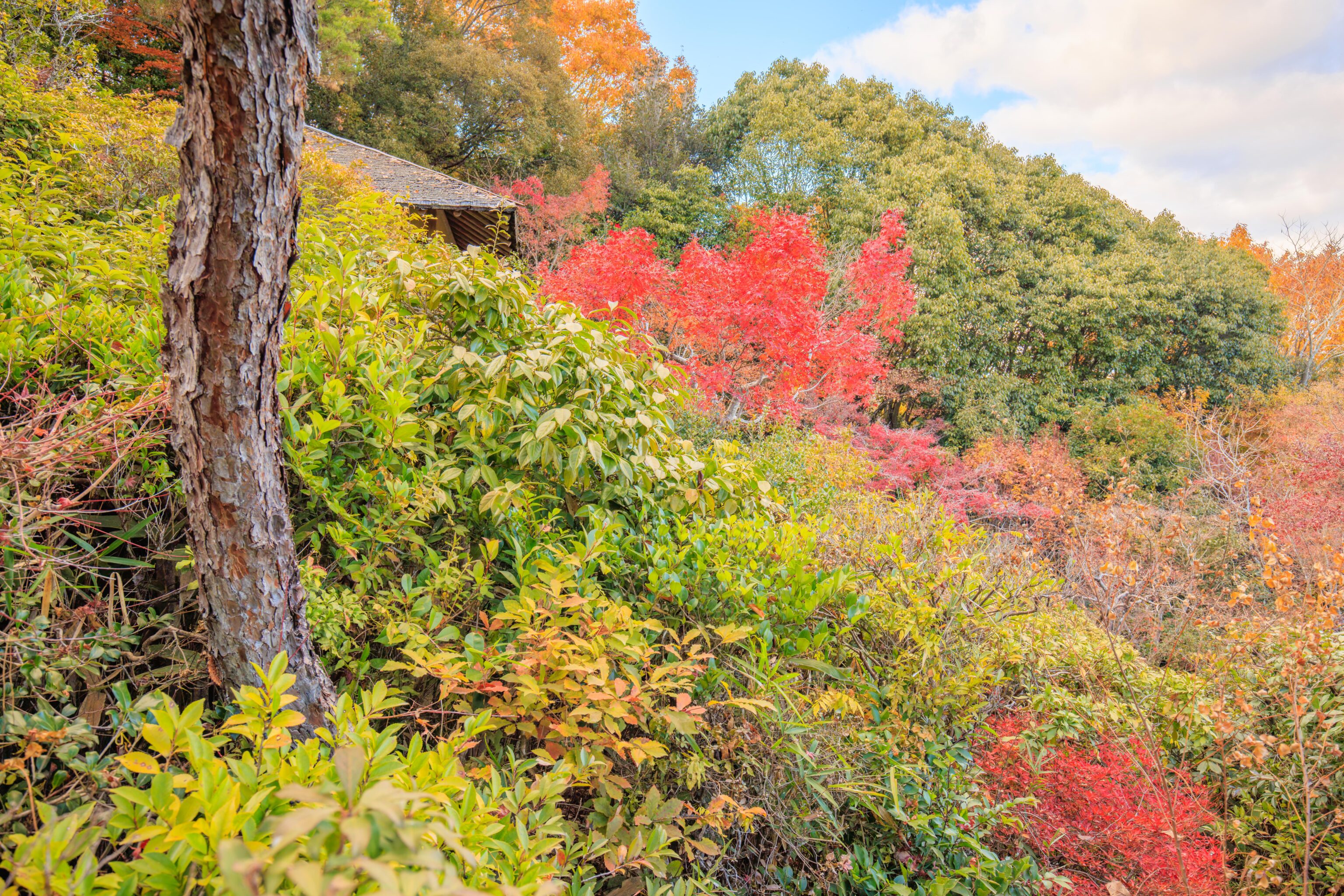
We continued following the route…

We reached a little pavilion with seating and a view of Kyoto. This was the best view point of the day as it was high enough to be able to see everything, including the temples on the edge of the eastern mountains. The most obvious landmark is the Kyoto Tower on the right half of this panorama.
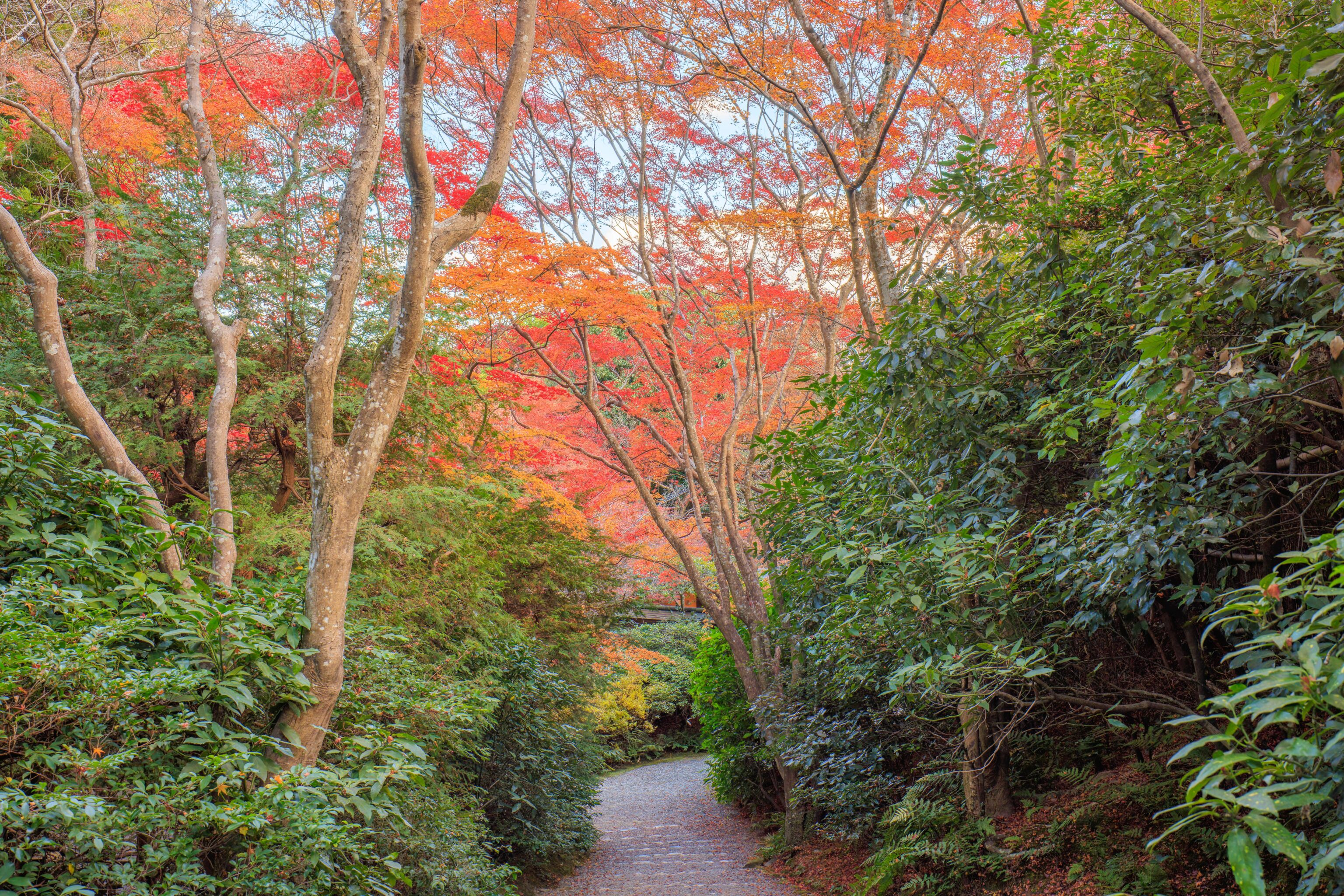
We continued following the route as it started to descend to loop back to the start.
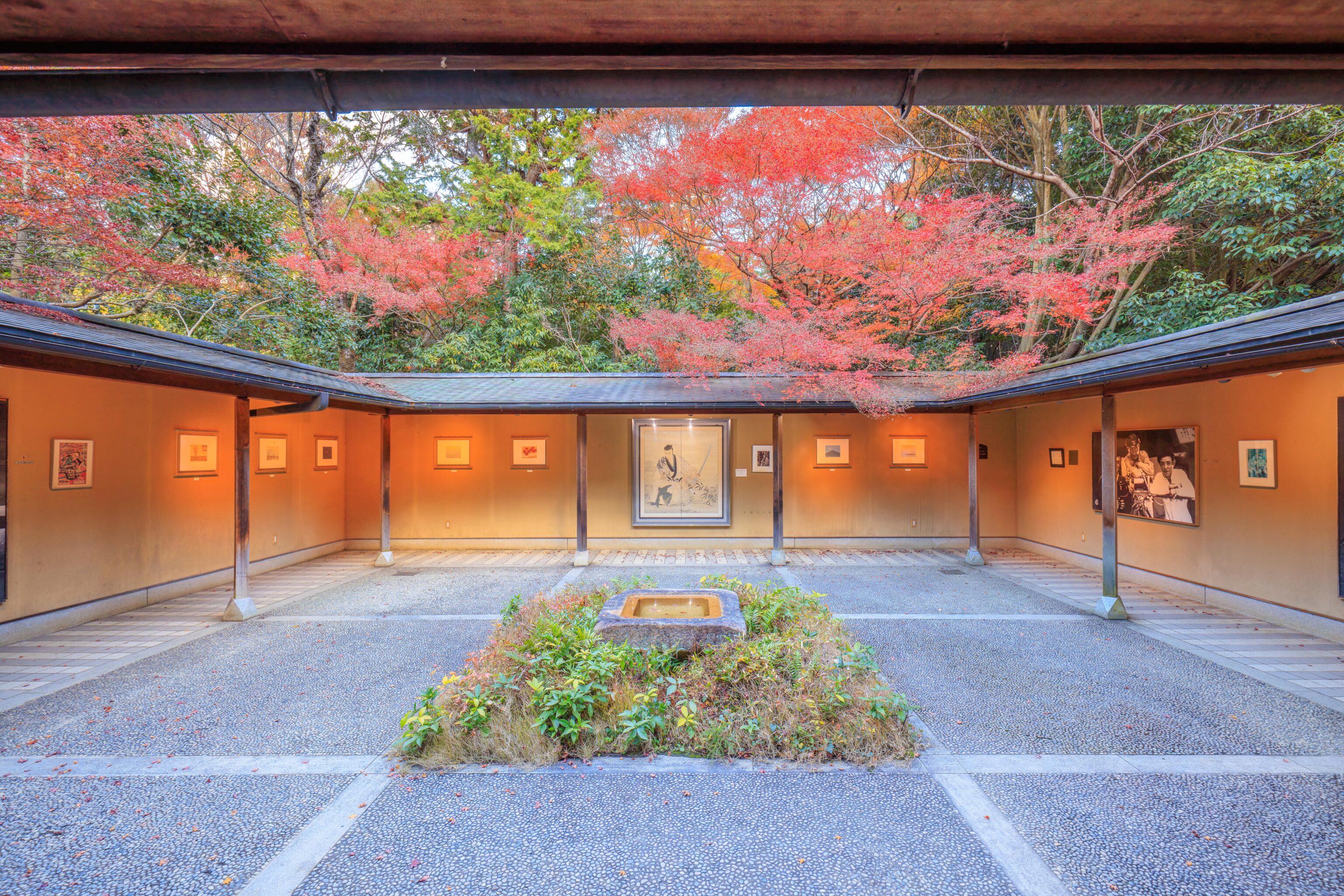
We had skipped this small structure at the beginning of our visit. We probably should have visited it first as it shows some selected scenes featuring Okochi Denjiro, the actor who created this villa and garden.
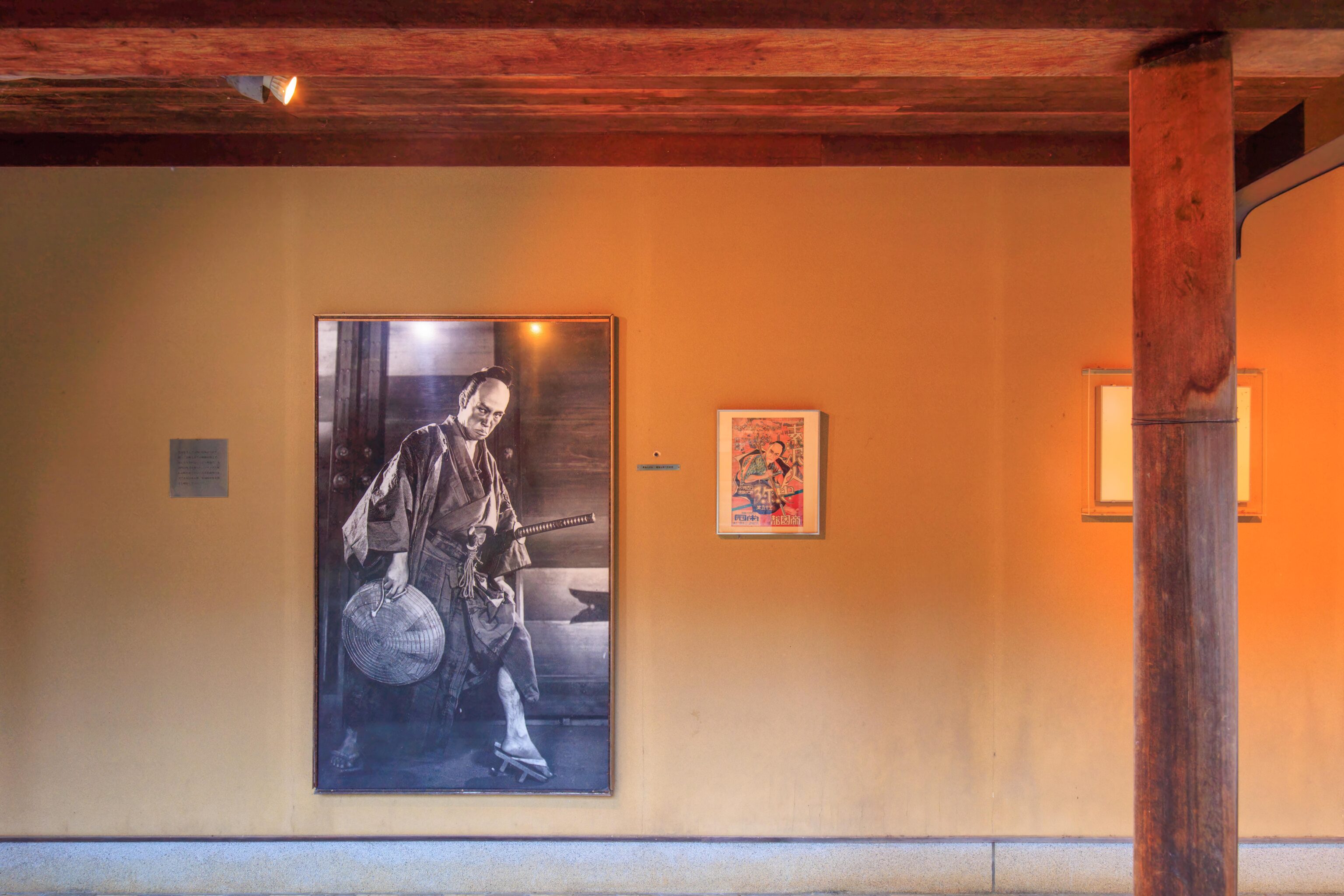
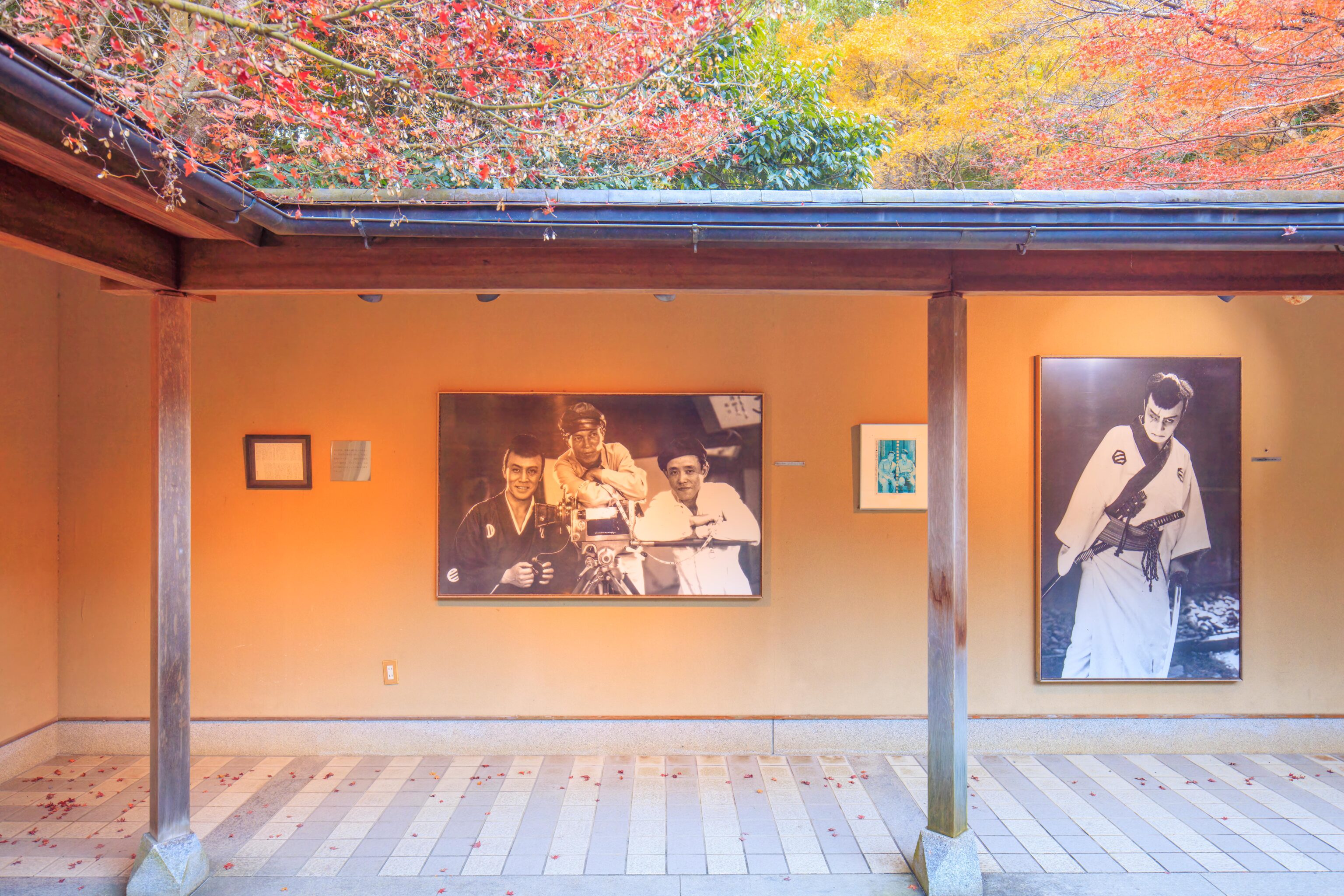
A few of the photographs that were on display.
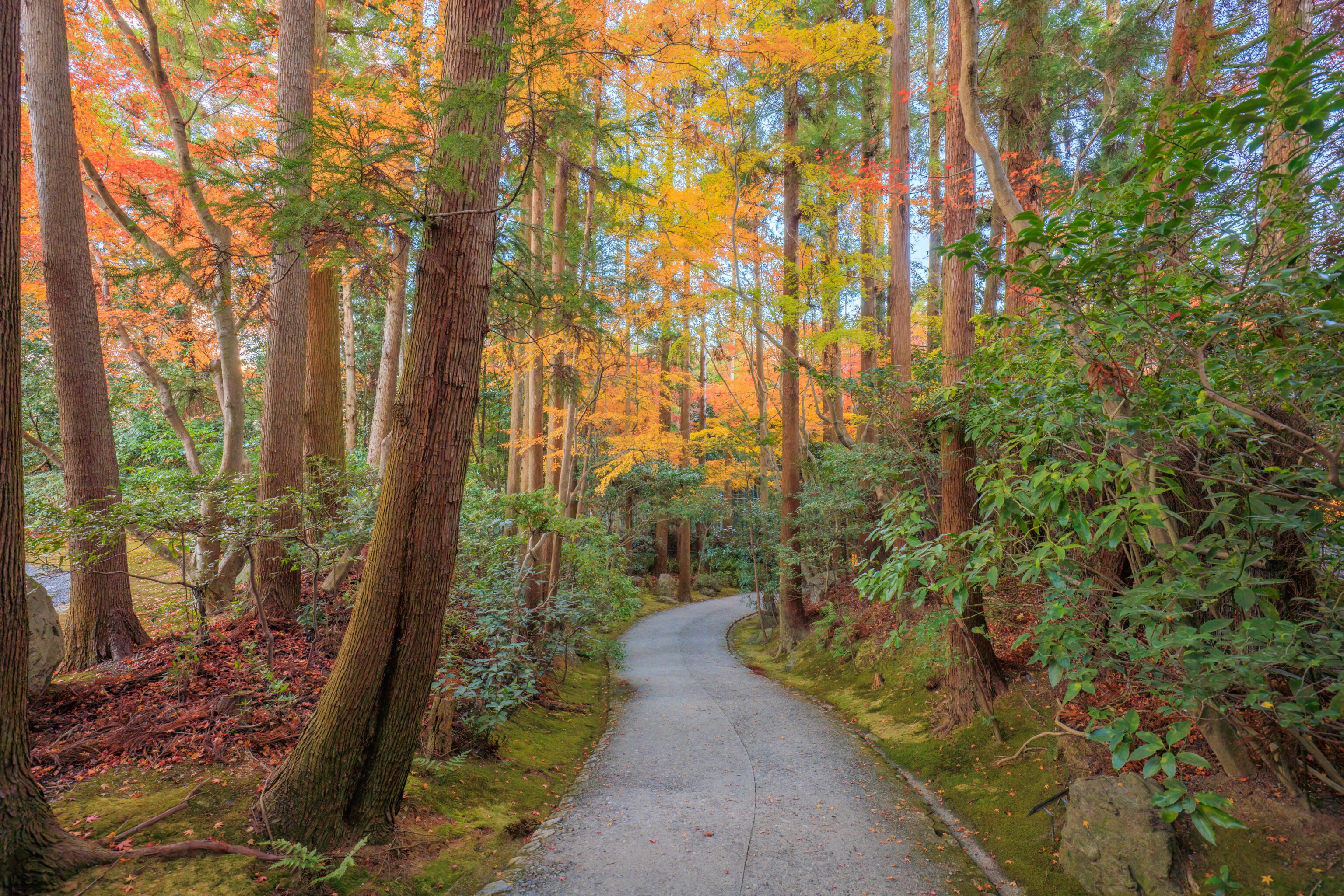
We ended our visit here after completing the loop through the garden. Overall, it was past peak foliage here and the late afternoon lighting was not ideal. Definiately a place best visited earlier in the day.
Back to Arashiyama
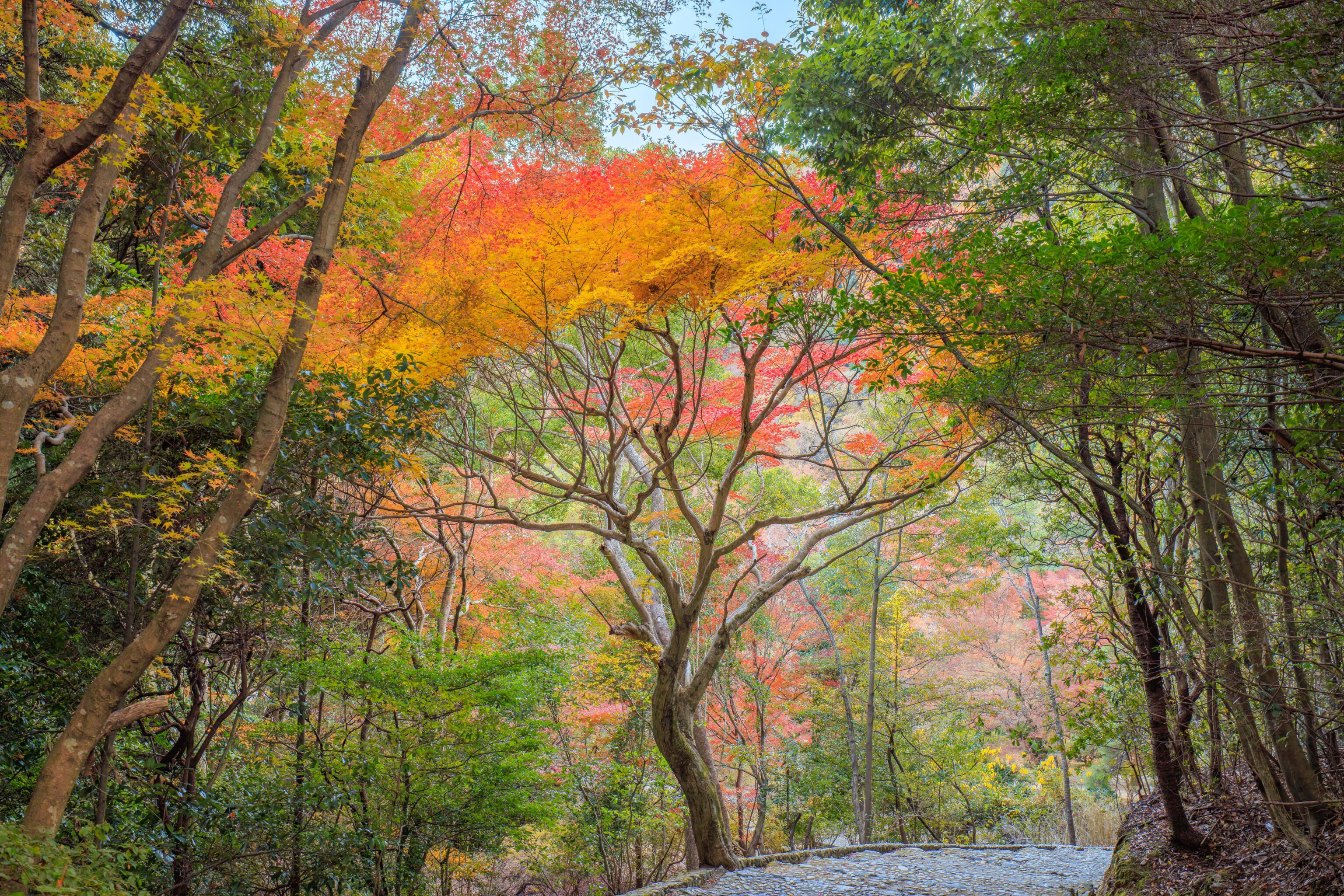
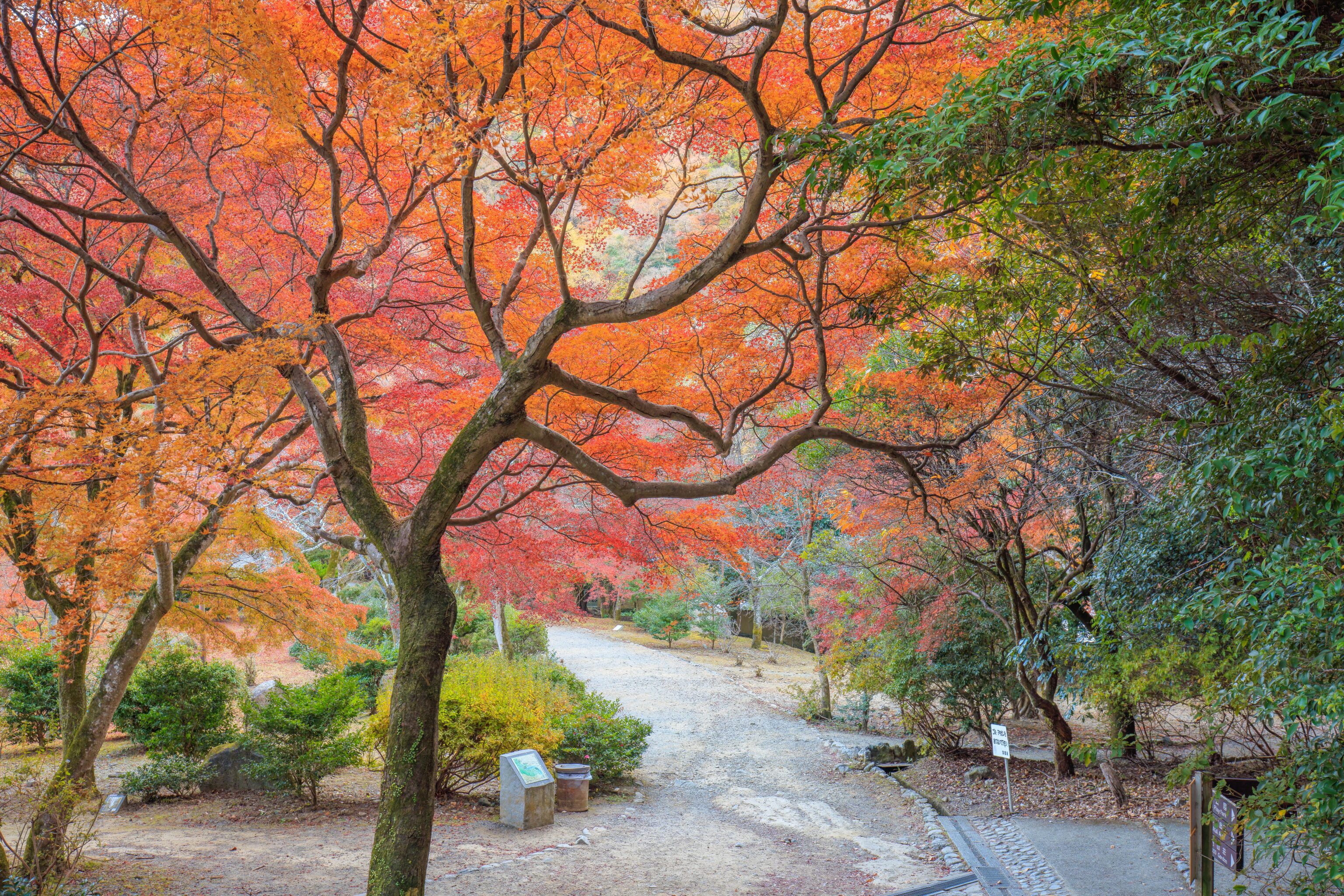
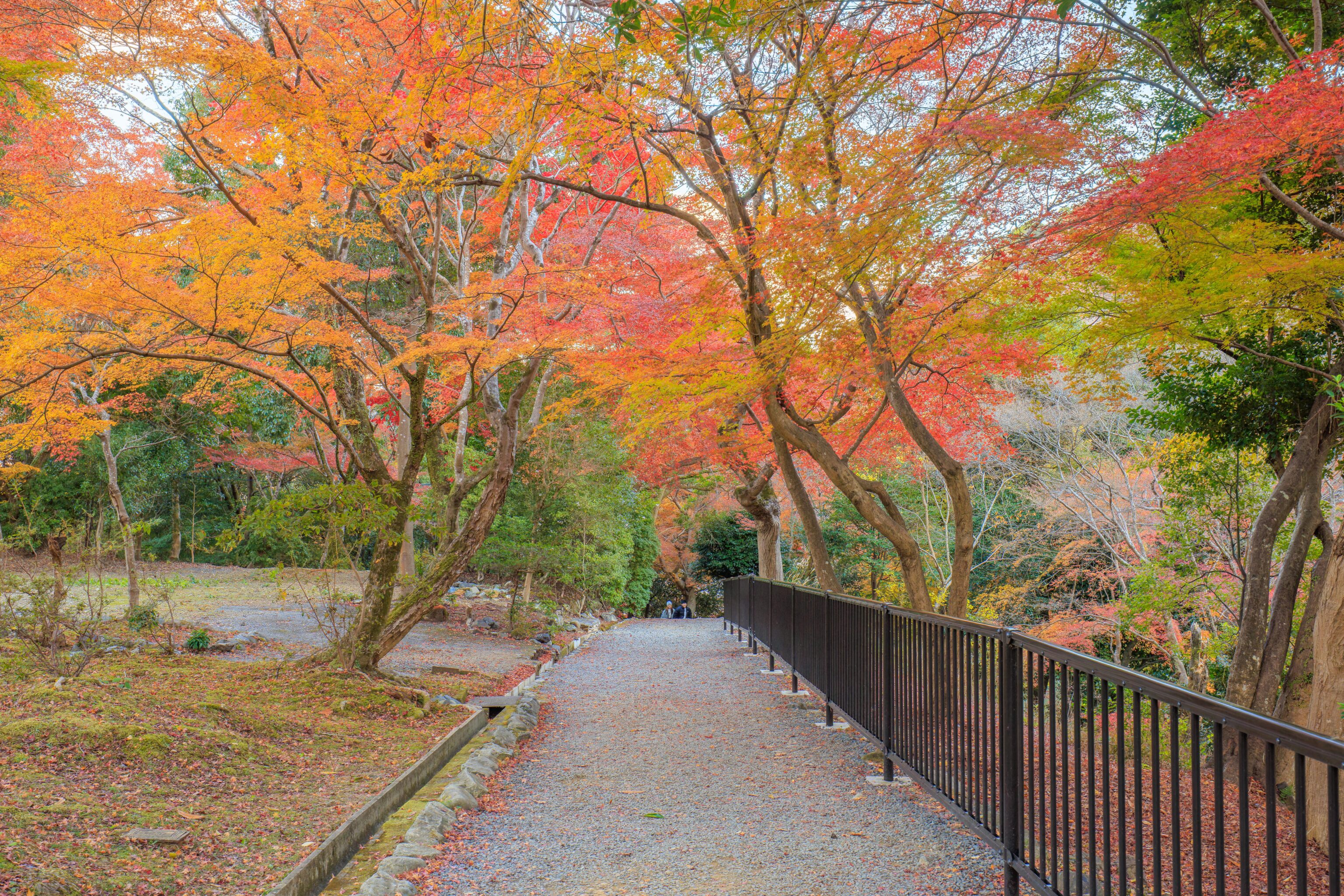
After leaving Okochi Sanso, we headed south past the bamboo grove to enter Kameyama-koen, part of the larger Arashiyama Park. We quickly walked through to the south.
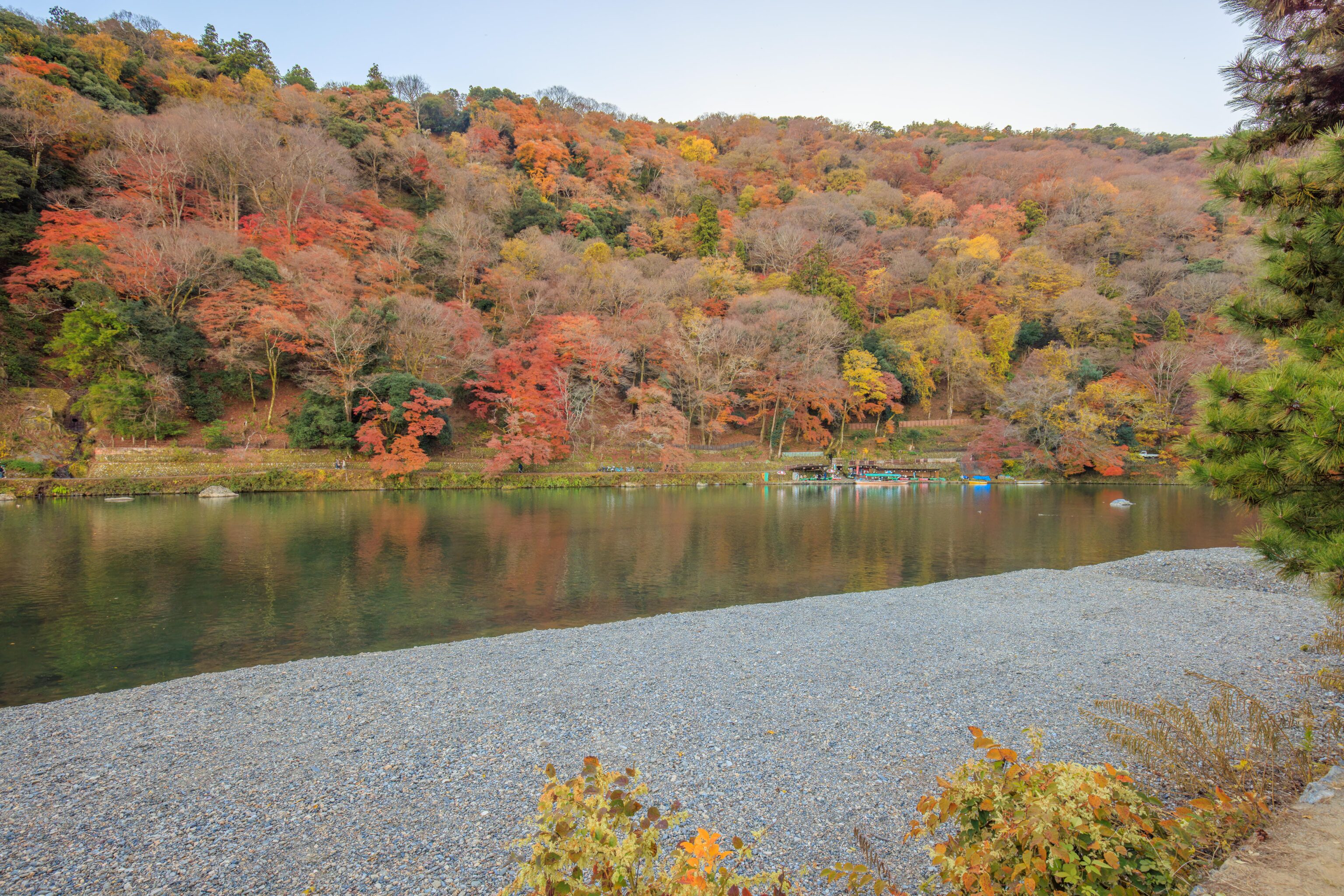
We soon reached the edge of the Katsura River. We saw some boats returning from afternoon river crusies.
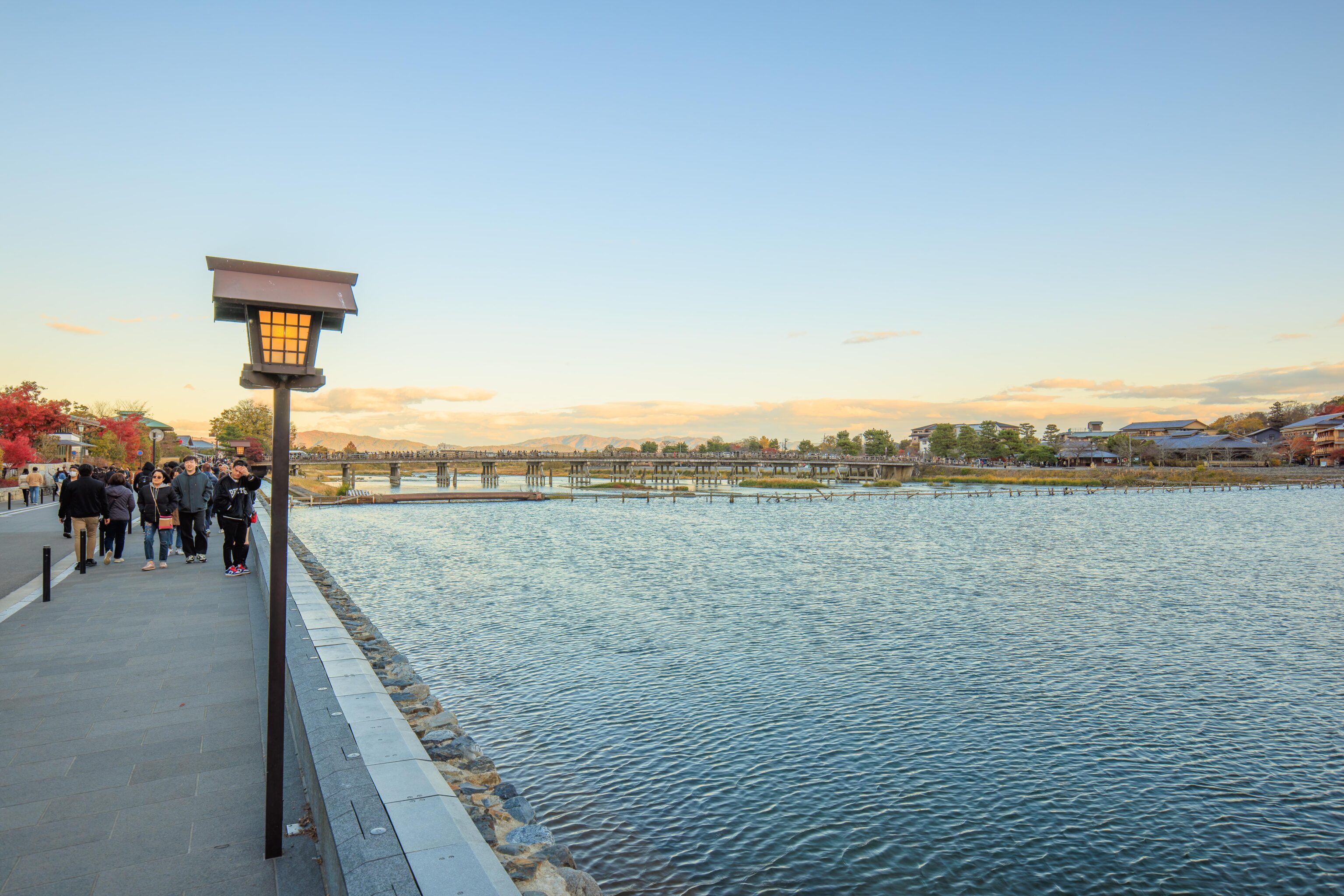
We walked to the east by the river, headed to the Togetsukyo Bridge and what can be considered downtown Arashiyama.
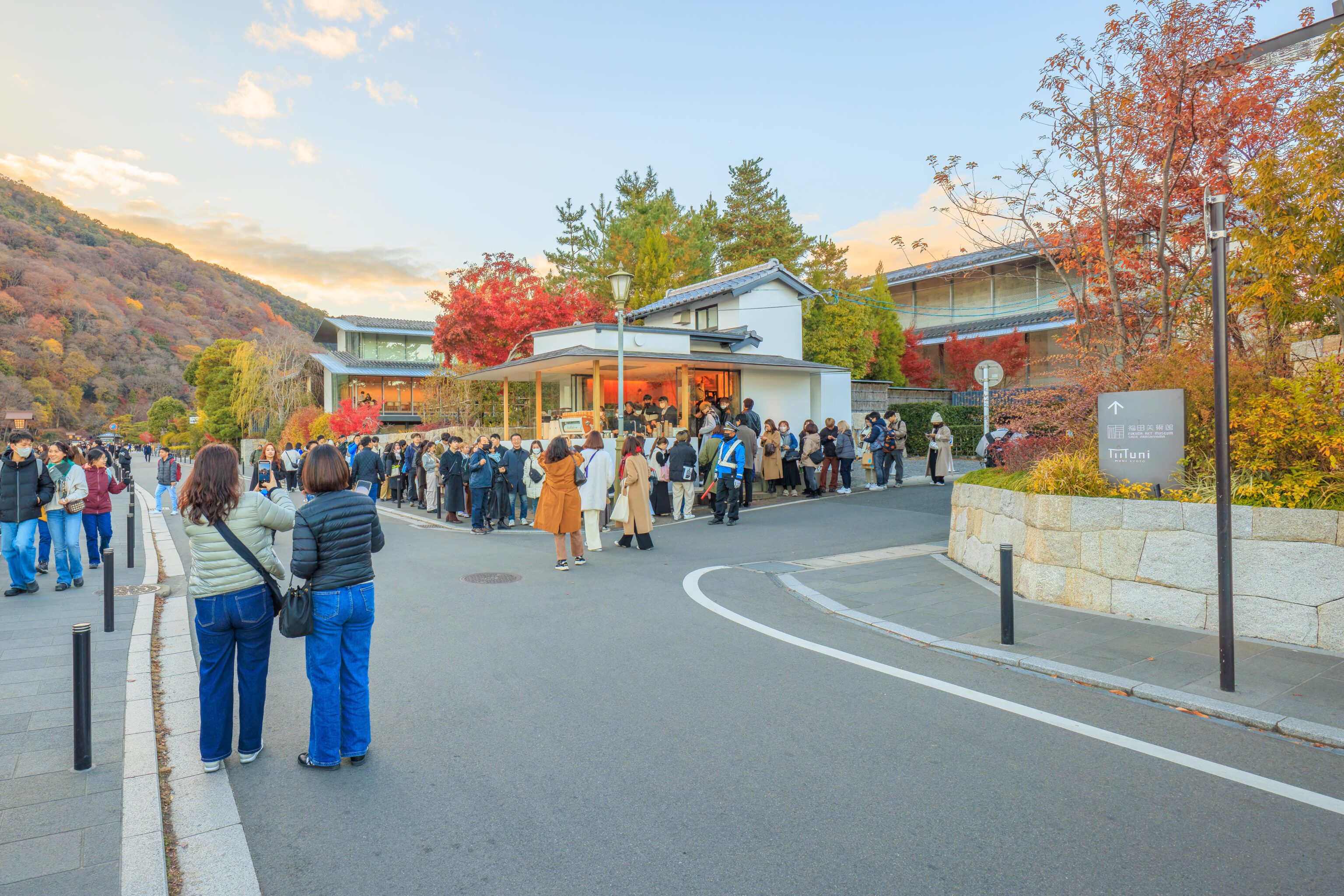
This cafe, % ARABICA, was ridicuosly busy. We’re not really sure why. They have locations around the world, inclduing back home in the US.
We kept going until we reached 長辻通 (Nagatsuji-dori), aka 府道29号 (Prefectural Route 29). We turned left onto the street and headed north. The Togetsukyo Bridge is in the other direction, to the south. This is the main street through the tourist area of Arashiyama and the road we walked on earlier in the day to reach Tenryu-ji. At the time, there were few people around and almost everything was still closed. Now, it was extremely busy with crowds everywhere!
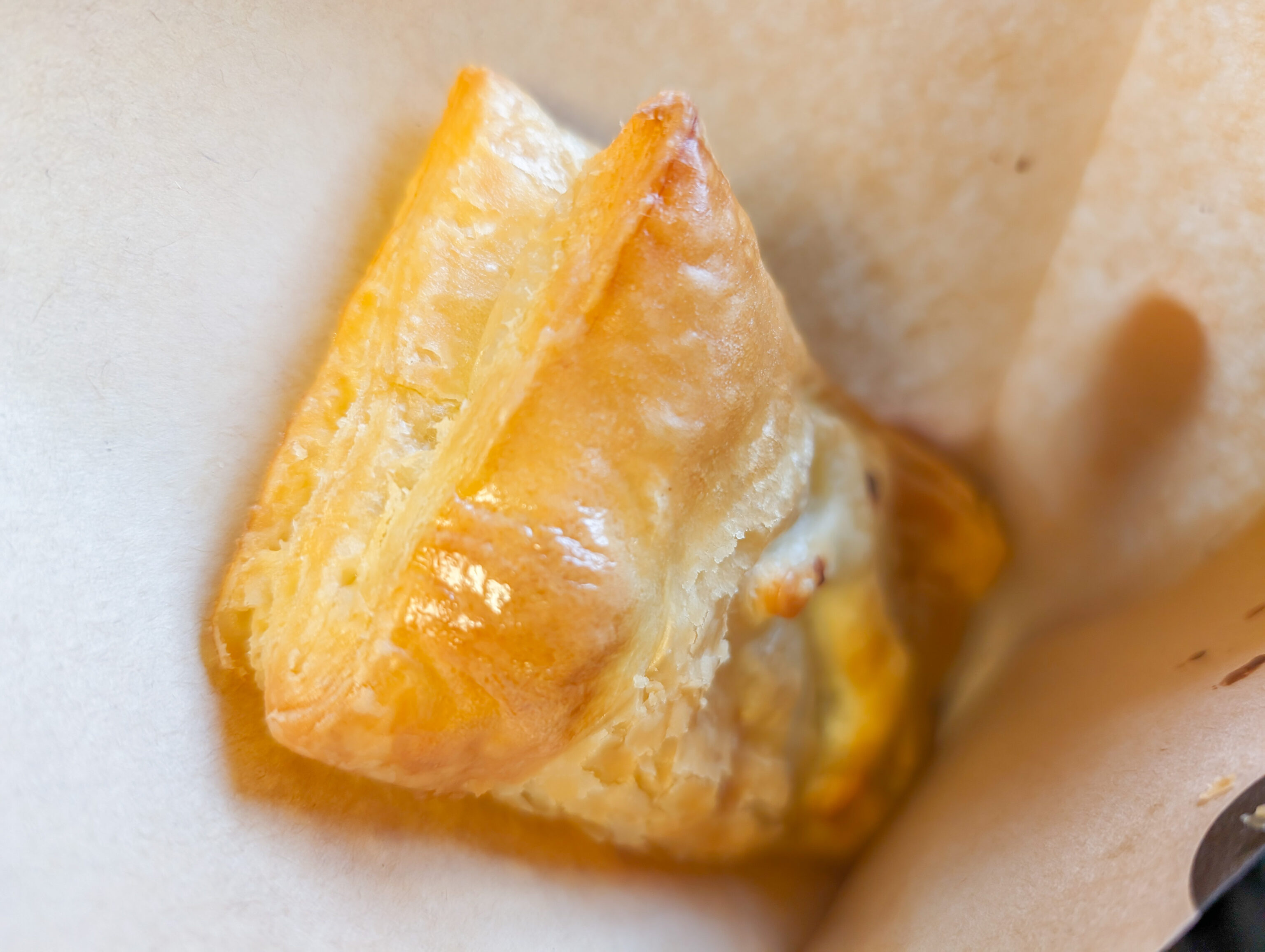
We visited Ponte Luna, a tiny pie shop at the intersection. We ate our little apple pie pretty quickly!
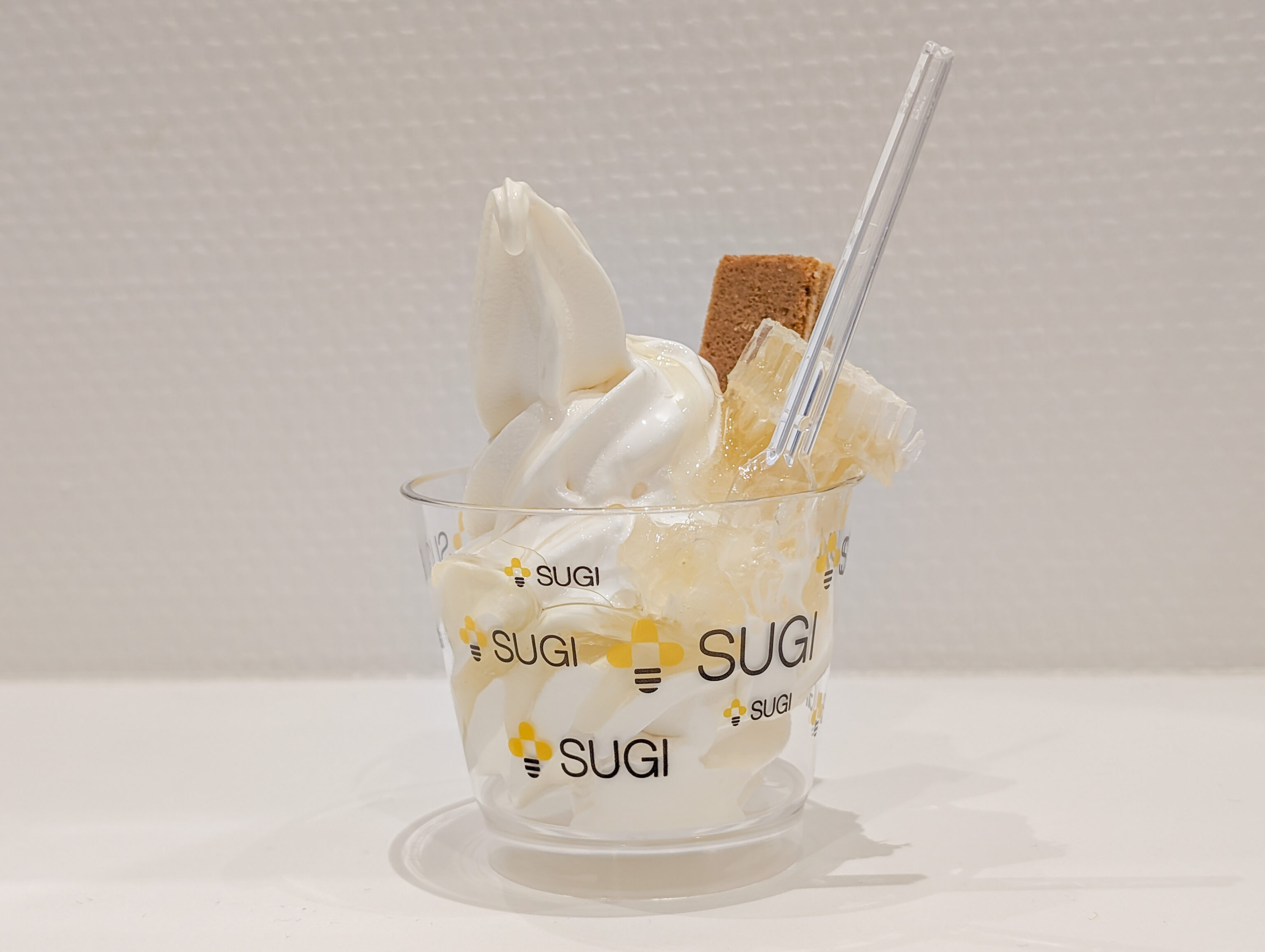
Our next stop was a honey shop at the end of the block. They sold a variety of honey products, primarily focused on health benefits. They also offered some snack items though including soft serve with a piece of honeycomb. It was pretty good, though expensive for such a tiny portion.
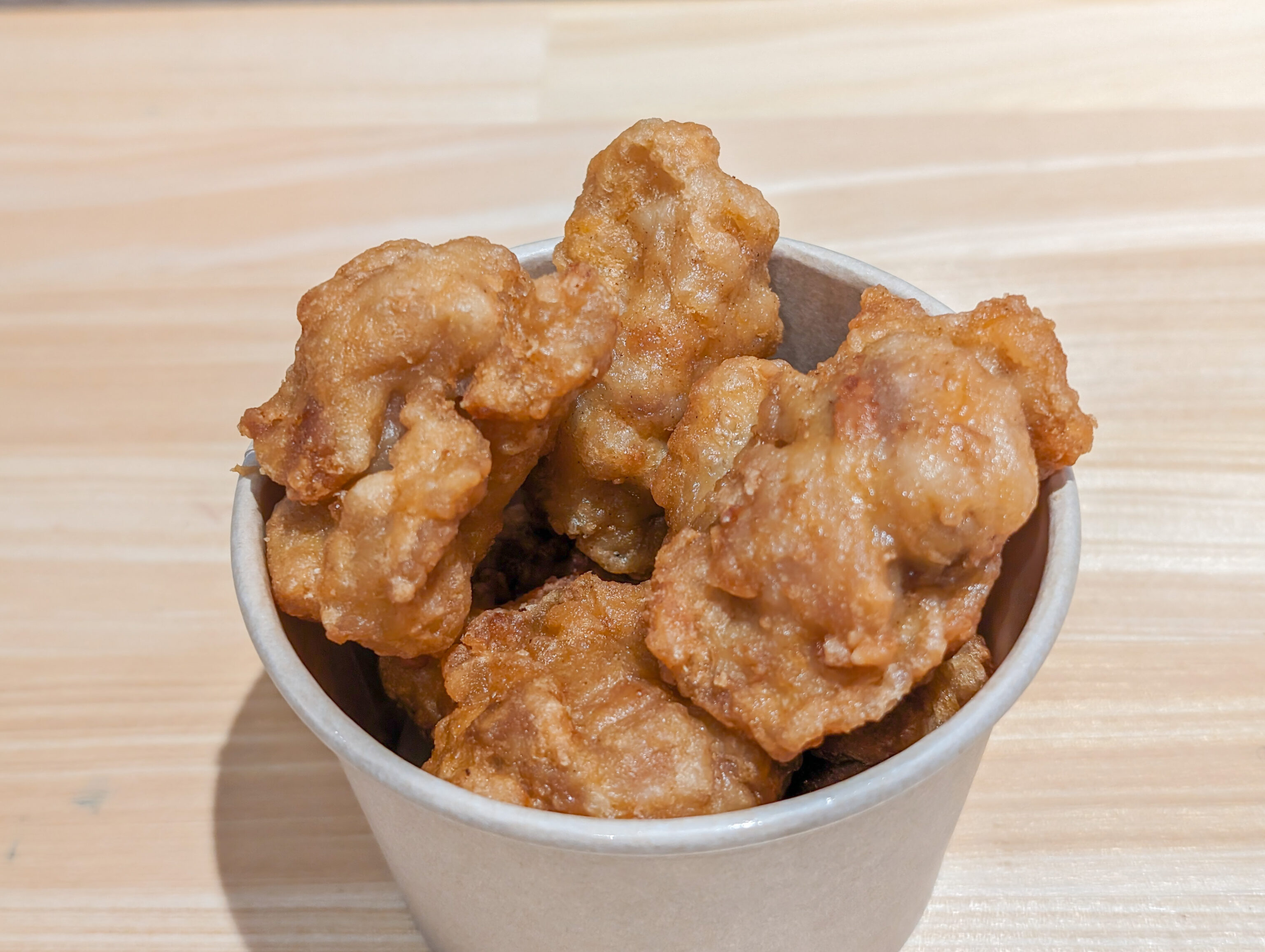
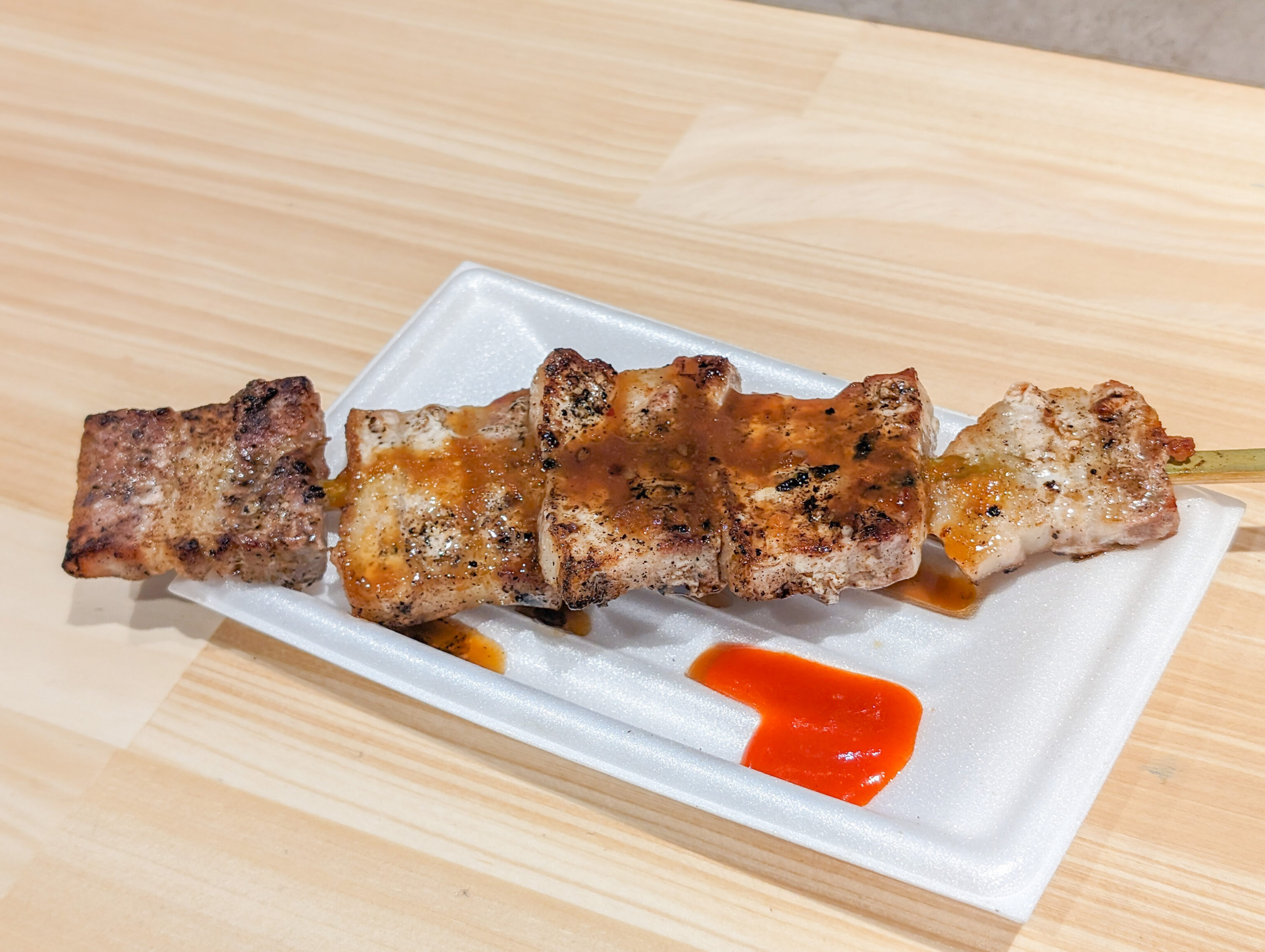
Our next stop was across the street. We ordered some grilled pork as well as chicken karaage (Japanese fried chicken). The chicken unfortunately wasn’t freshly prepared and wasn’t so great. The pork was decent but not nearly as good as the grilled pork that we had from a street vendor at the Christmas markets in Brussels, Belgium back in 2018!
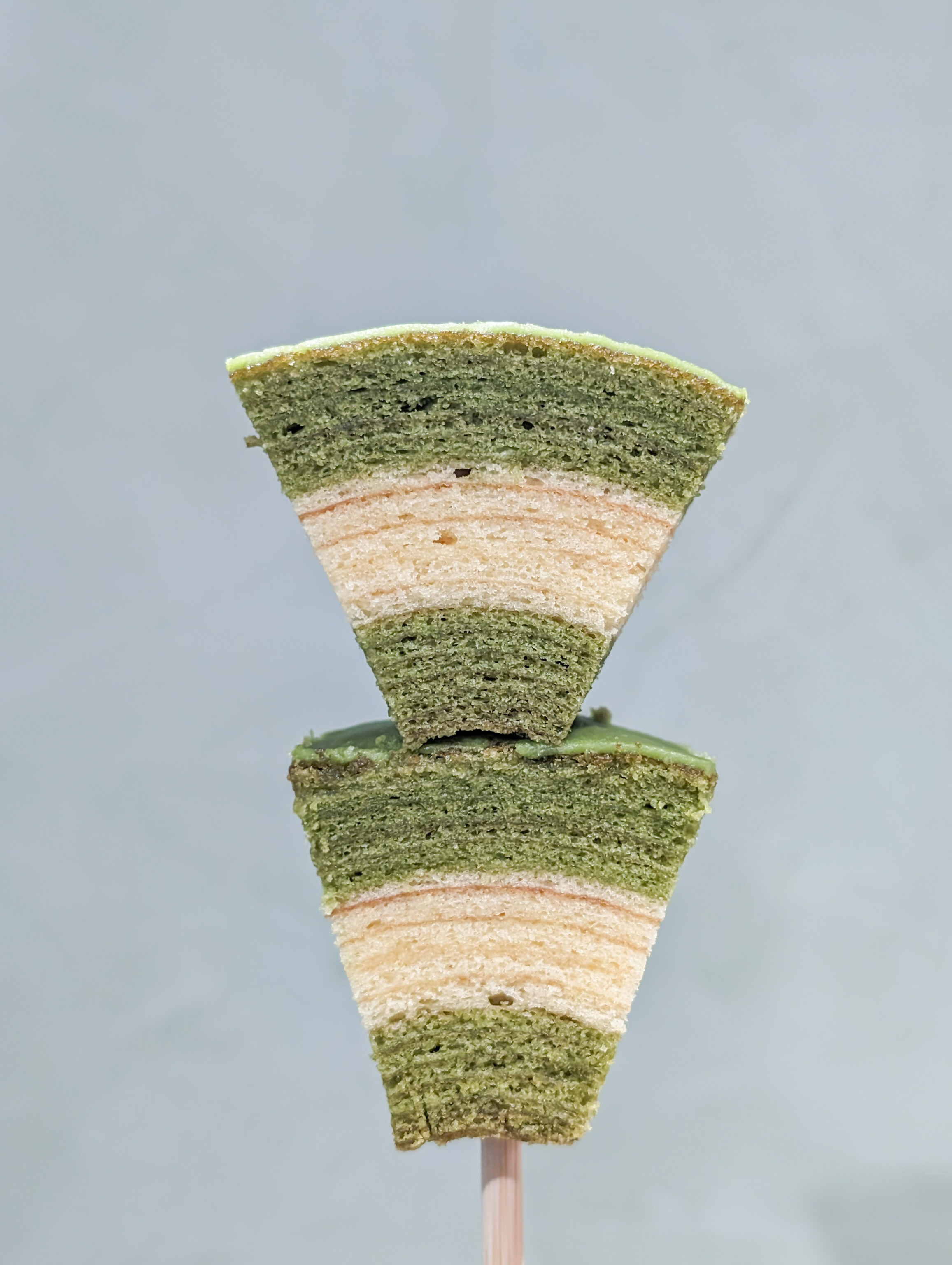
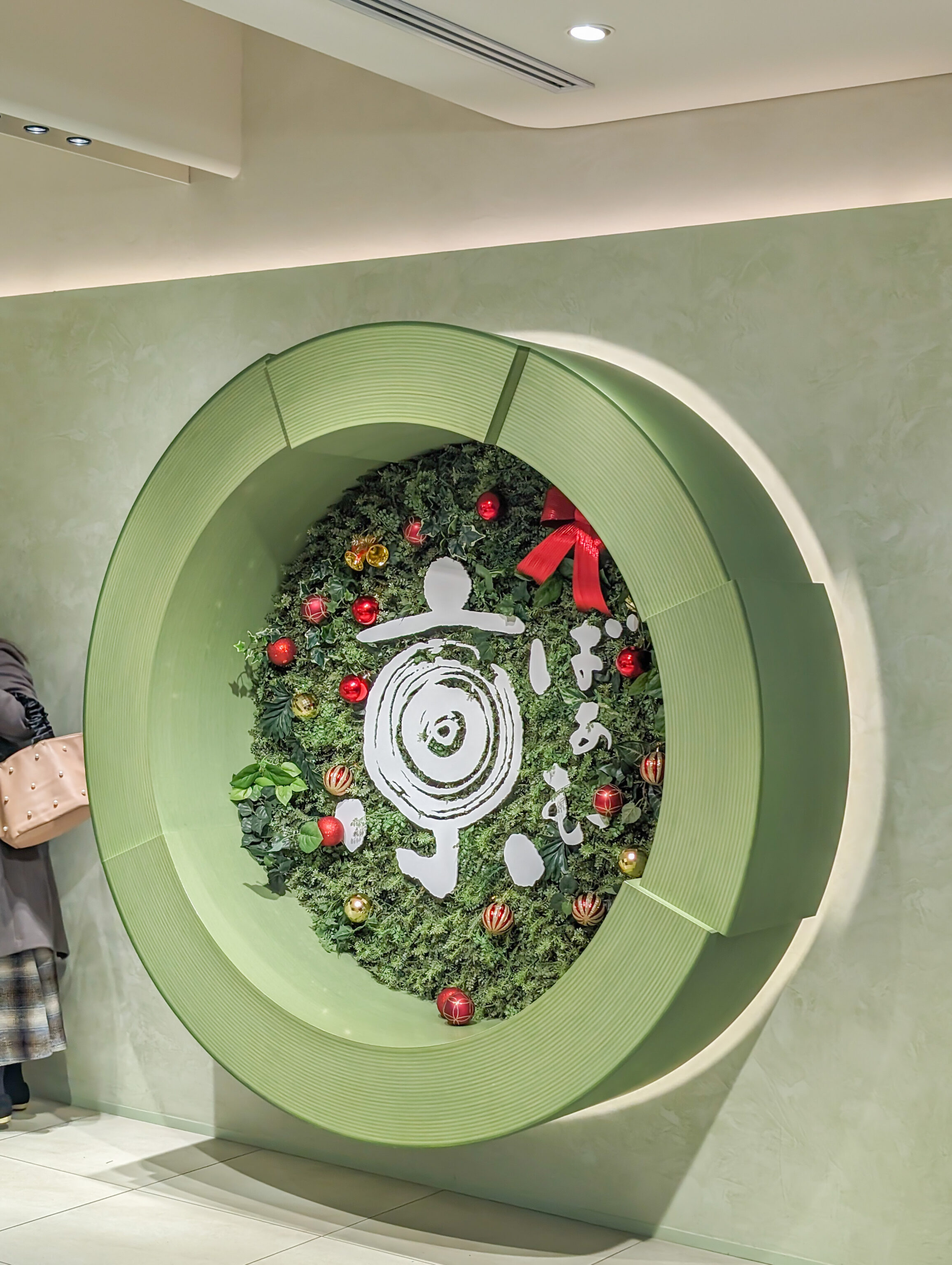
Our next stop was 京ばあむ (Kyo Baum), a shop that sells Baumkuchen, a kind of circular cake from Germany. We saw another location of this shop earlier on this trip around Kiyomizu-dera and decided to give it a try today. It was tasty, though not particularly special.
Dinner
We decided to head to Kyoto Station to have dinner. There are various ways to get back but the easiest and fastest is to take the JR line from the Saga-Arashiyama Station. The fastest trains make it back in a bit over 10 minutes due to having less stops on the way. The JR station was about a 10 minute walk from where we were near the Randen line Arashiyama Station.
We went down into the Porta Dining section of the Porta underground shopping mall beneath Kyoto Station. We decided to try 正起屋 (Masakiya), a yakitori restaurant. We had to queue a bit before entering, though it was a numbered system that allowed us to walk around while waiting.
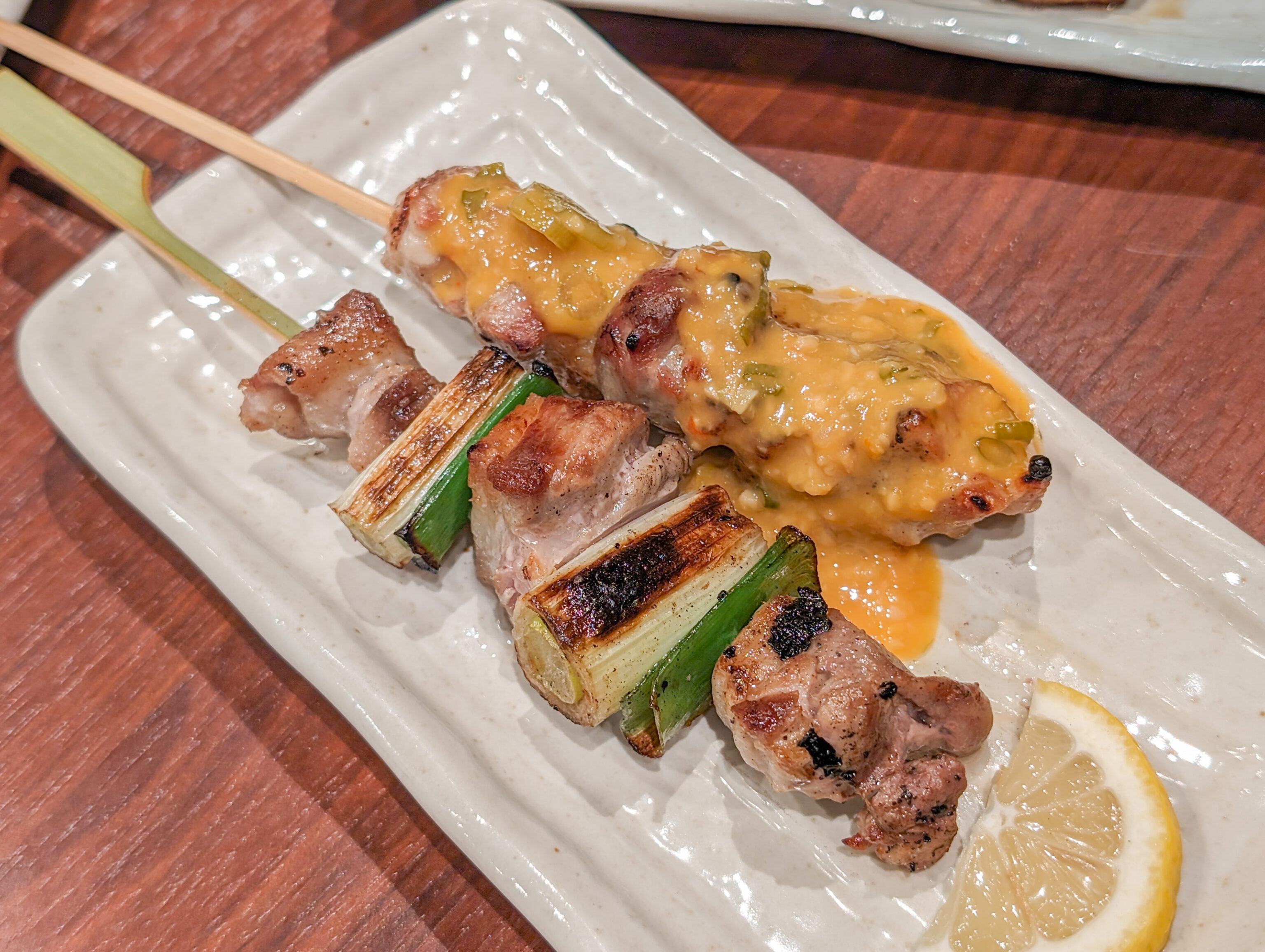
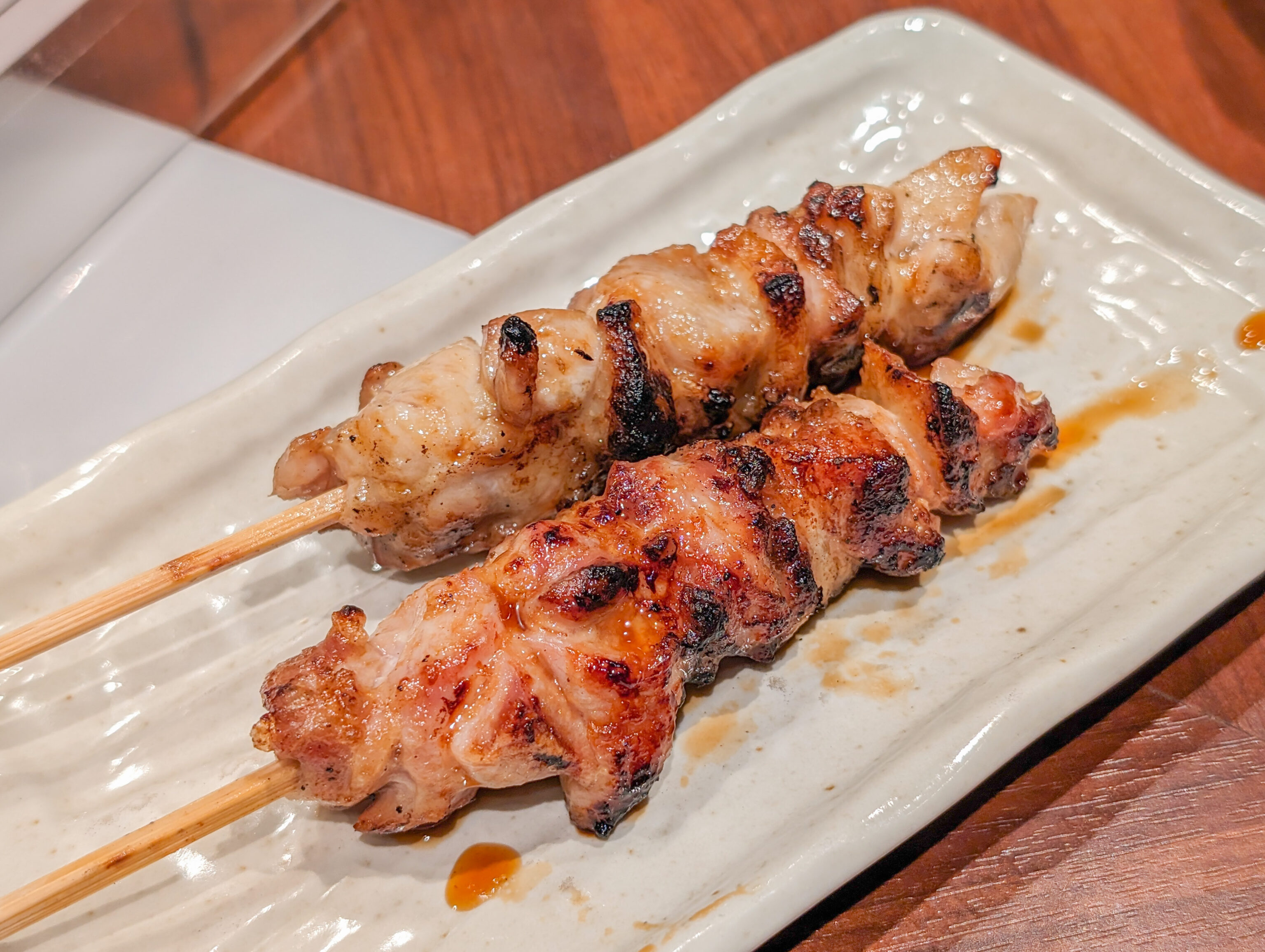
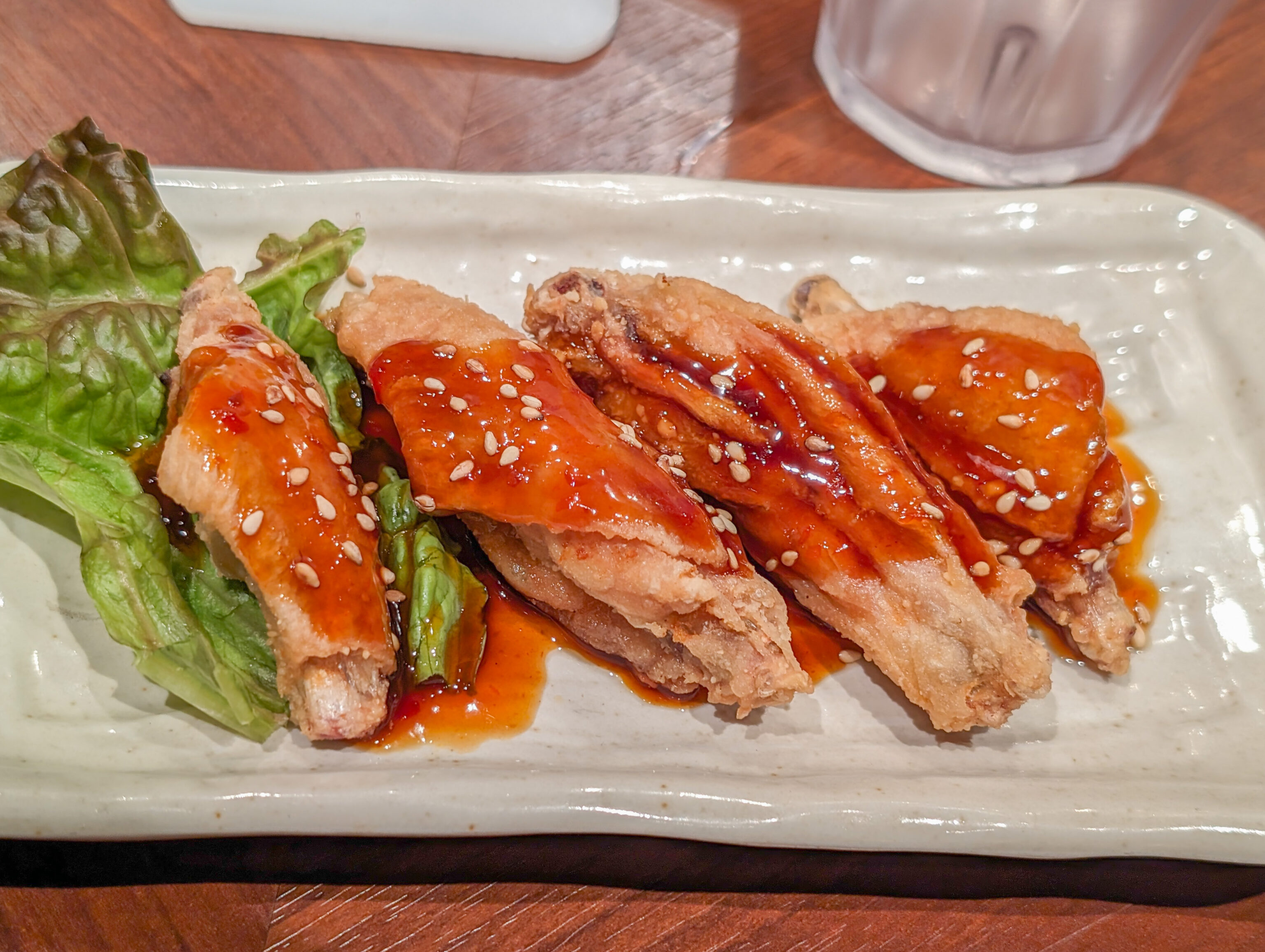
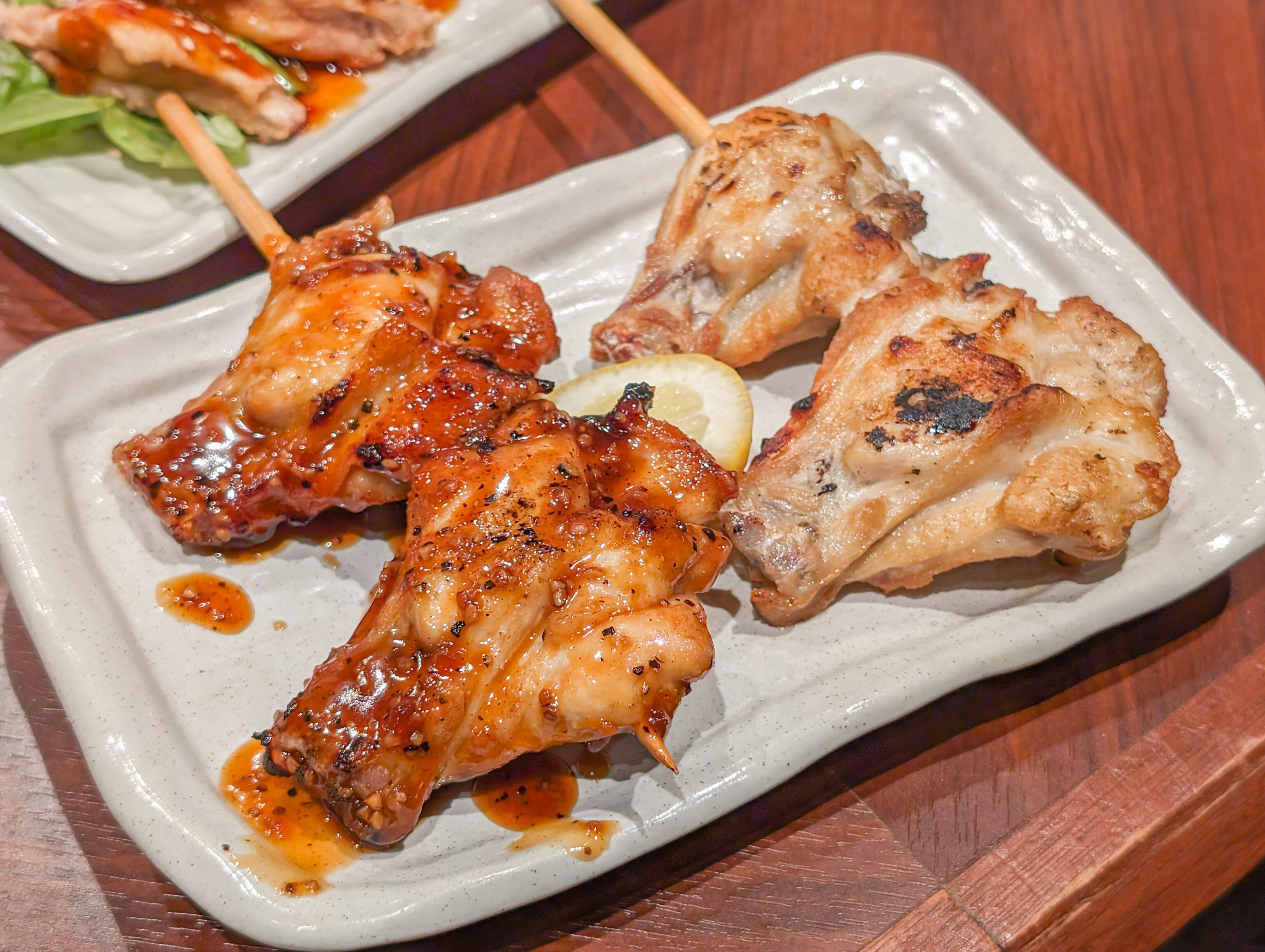
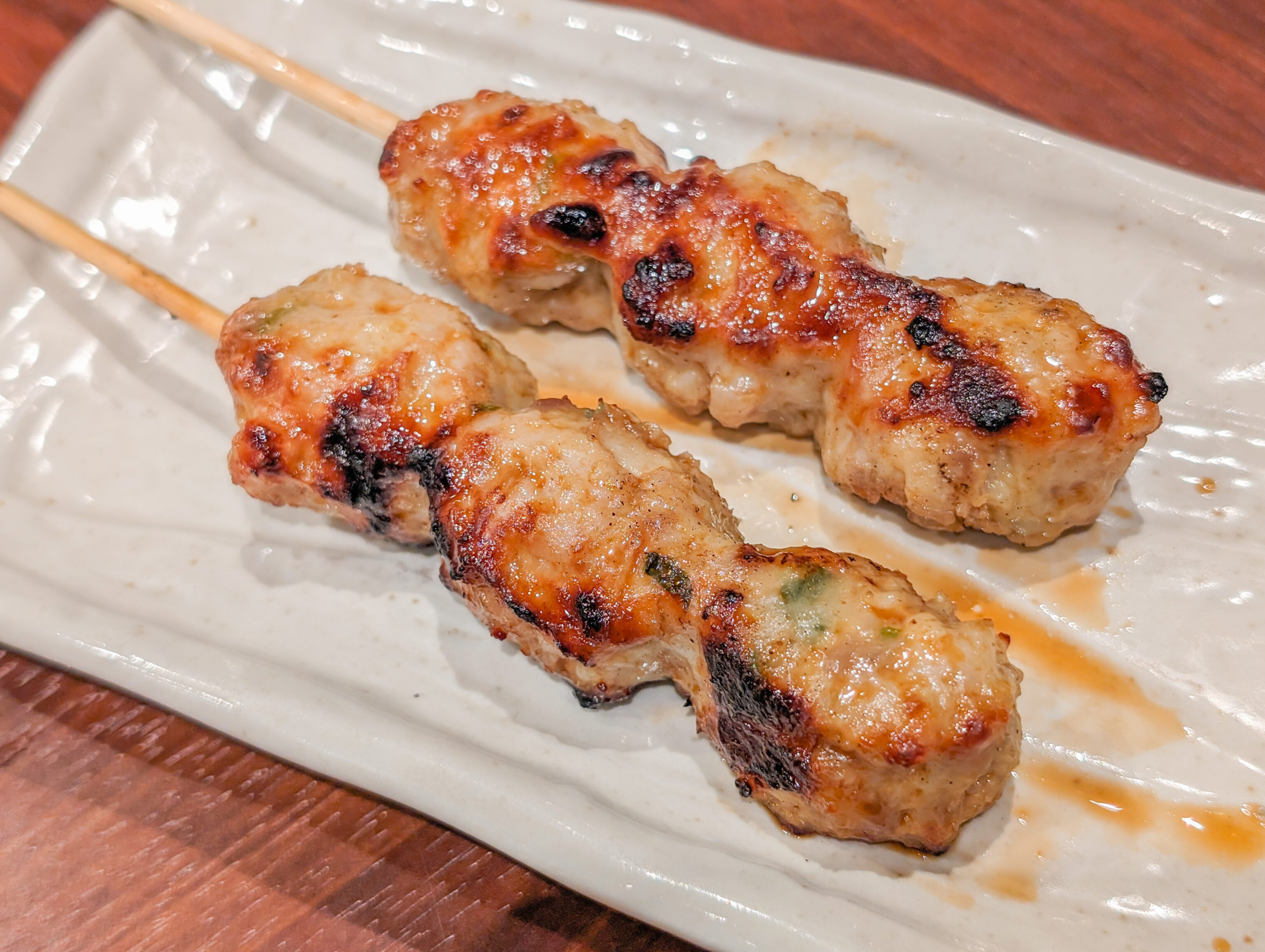
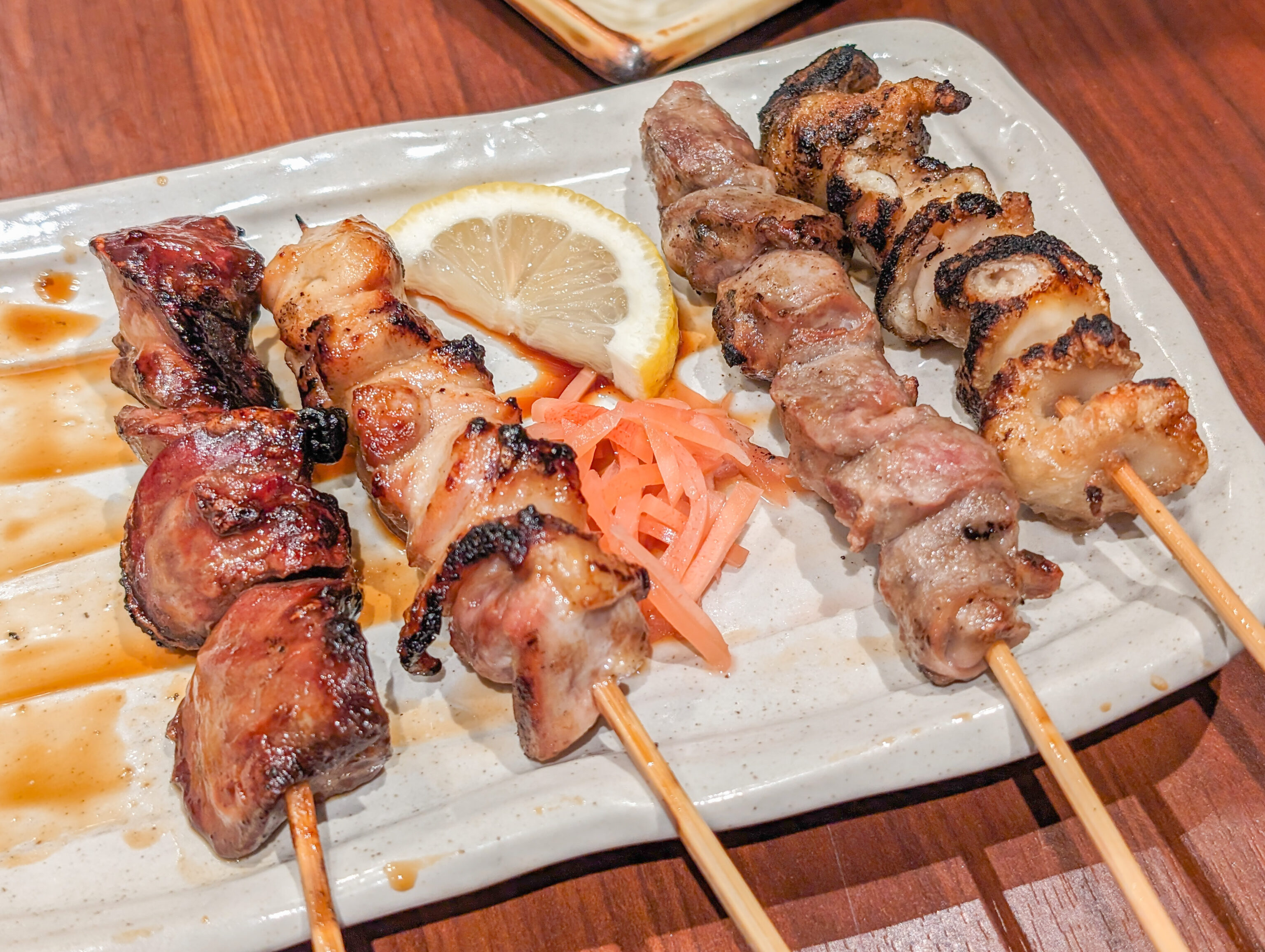
We ordered a variety of items. We primarily got yakitori, grilled chicken on a stick, but also got some chicken wings, duck, and other yakitori varieties. The plain old simple yakitori was still the best though!
After eating, we walked around Porta Dining for a bit to see what else was around.
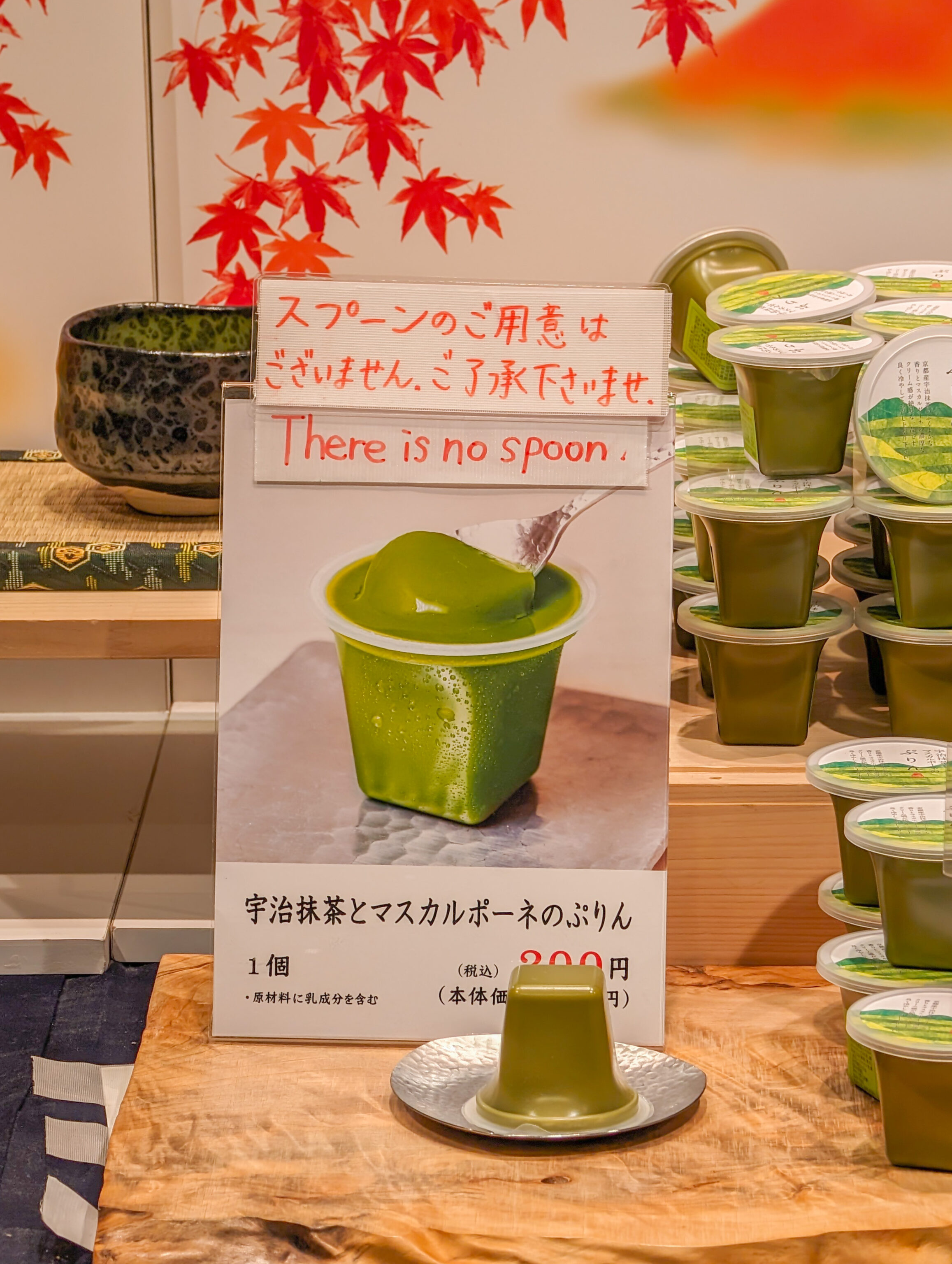
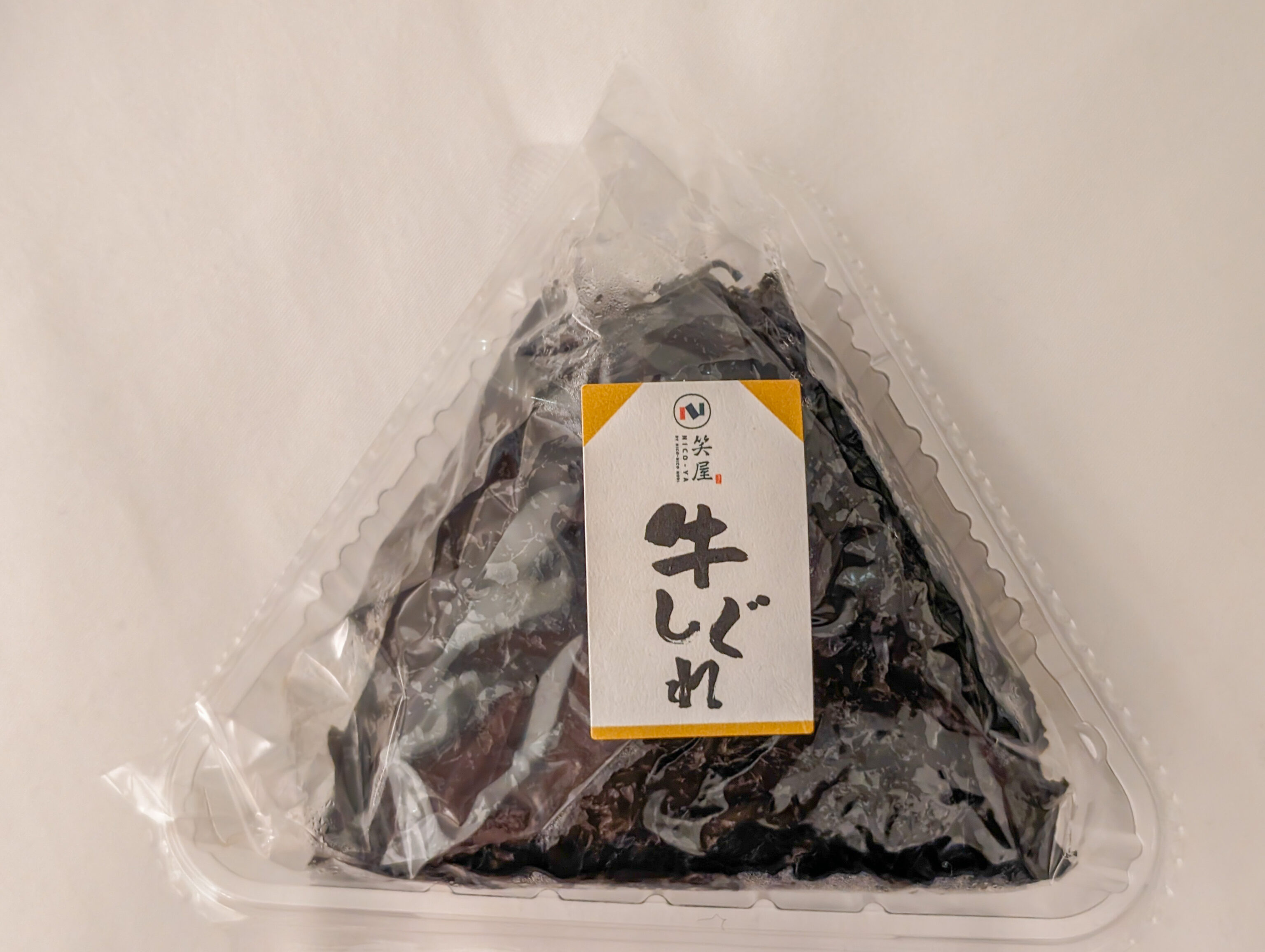
We decided to try an onigiri from a onigiri shop. It wasn’t as good as 7-Eleven!
From here, we took the subway back to the Hyatt Place Kyoto where we ended our day.


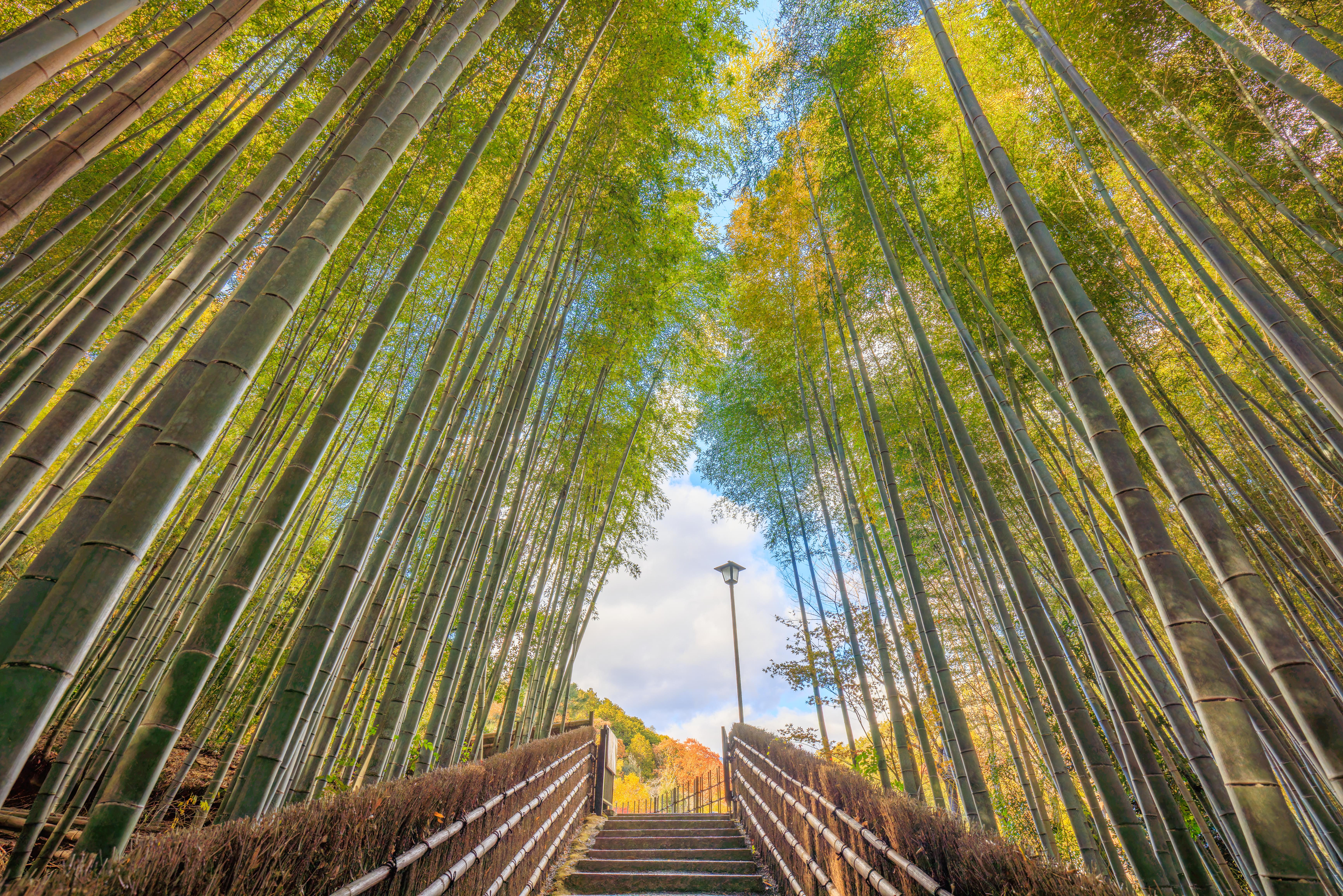
One Reply to “Temple Hopping in Arashiyama”